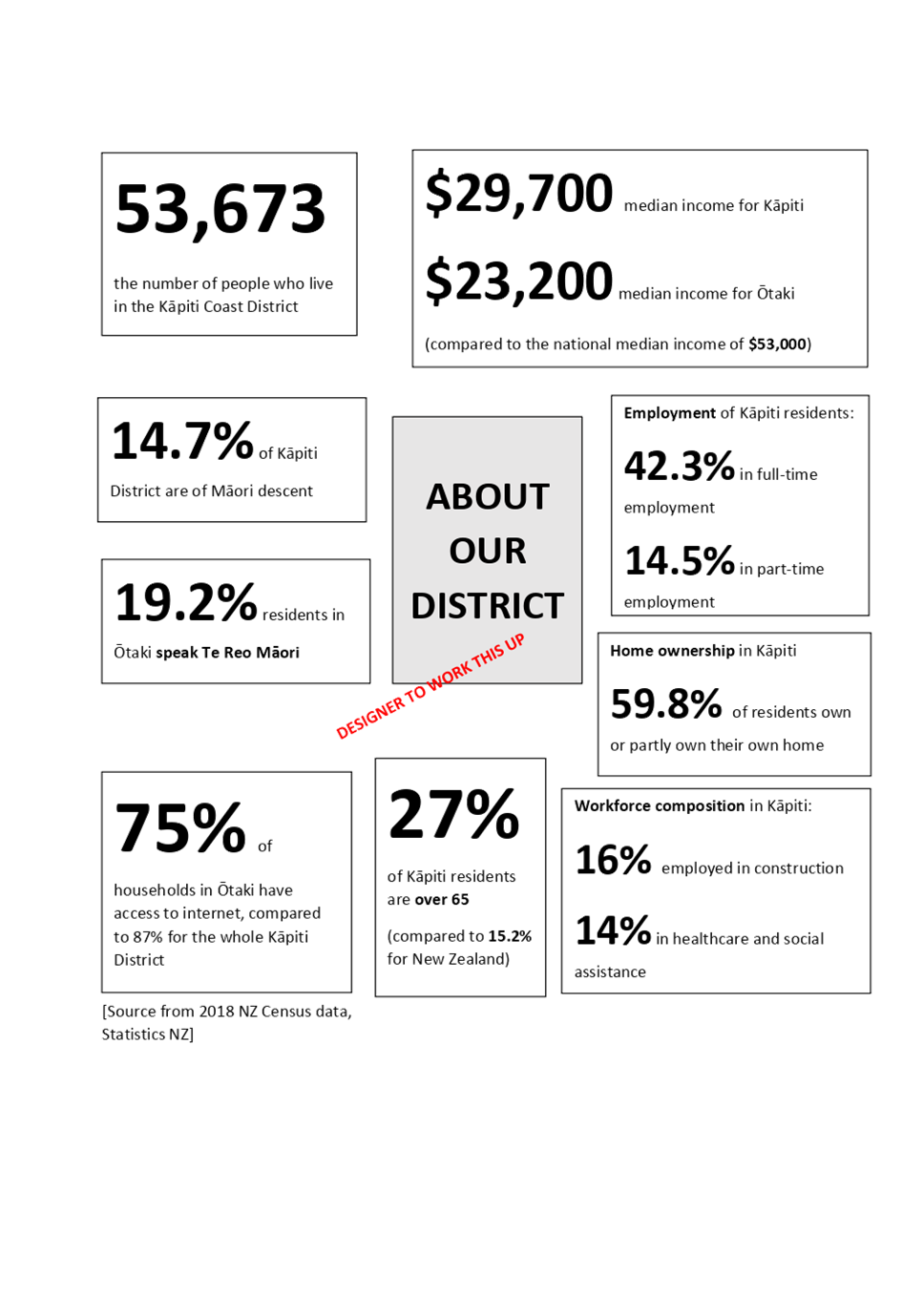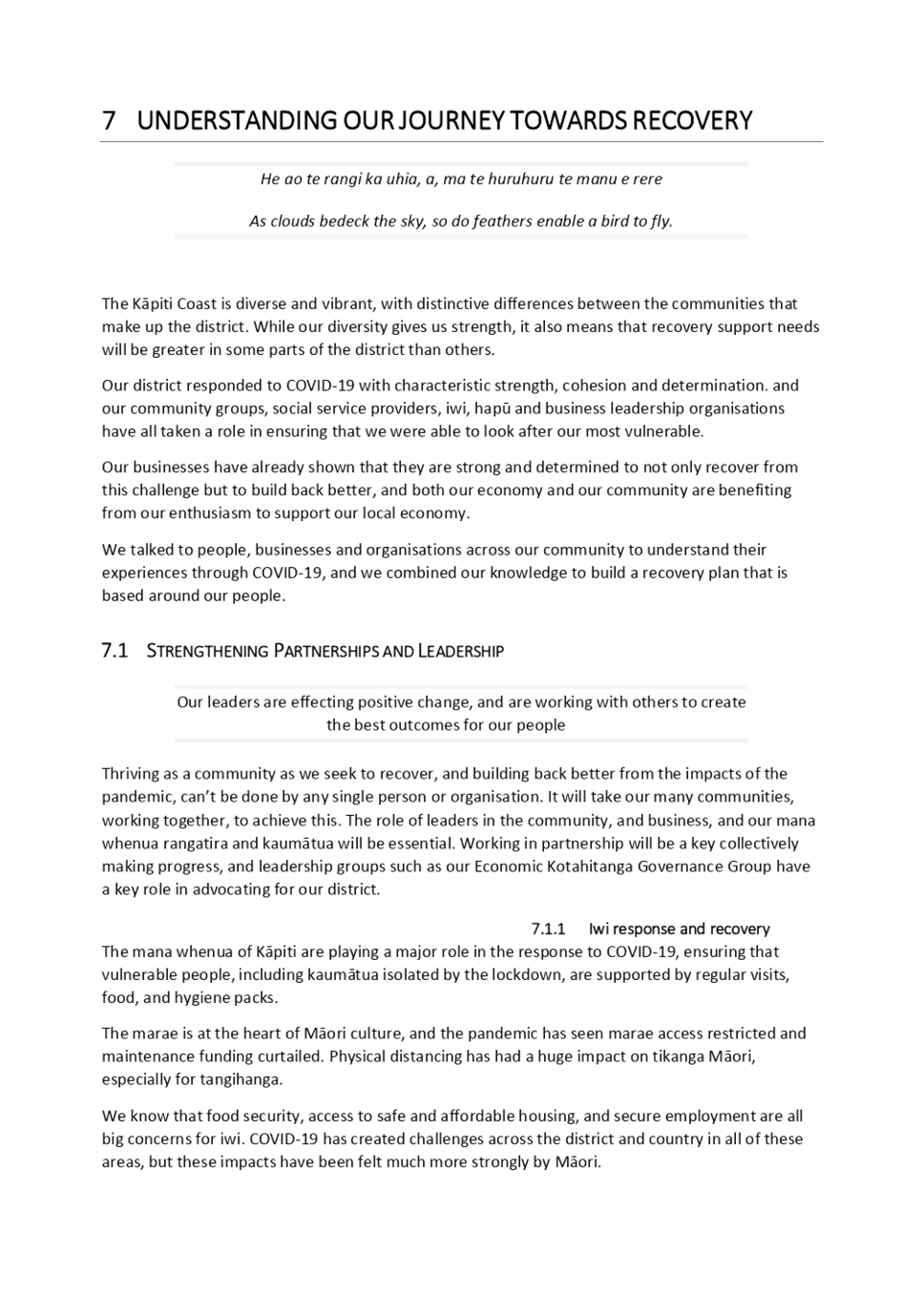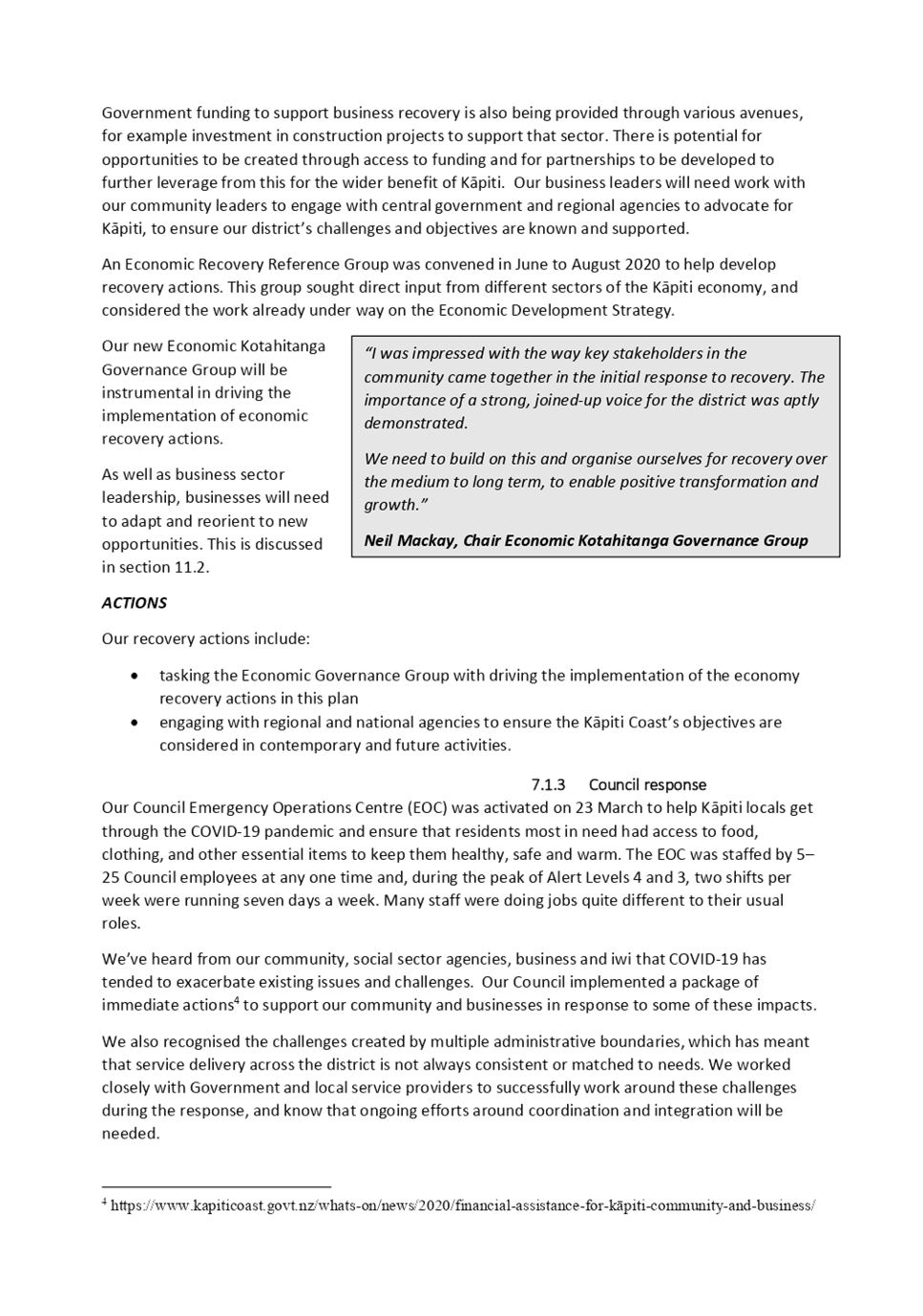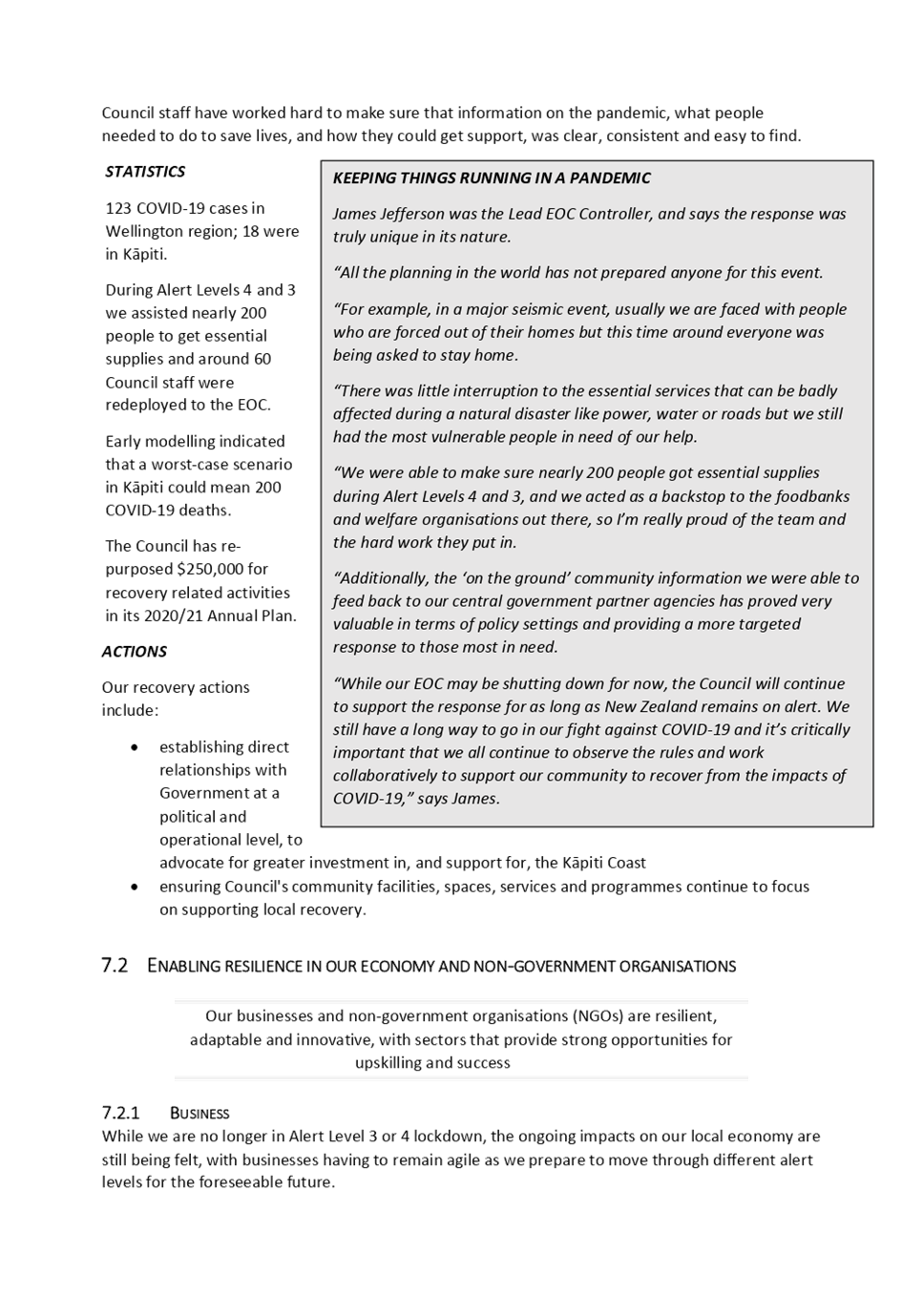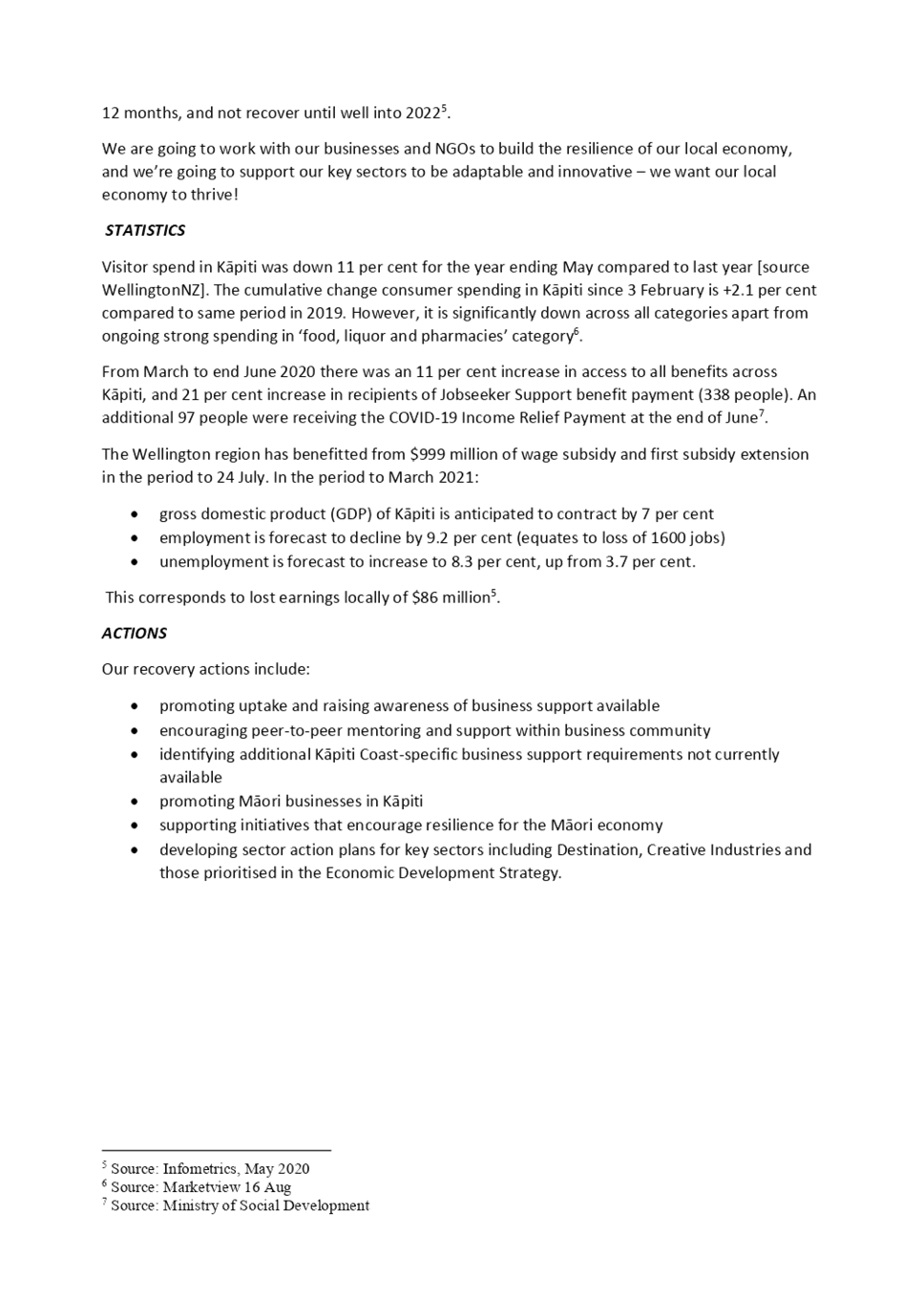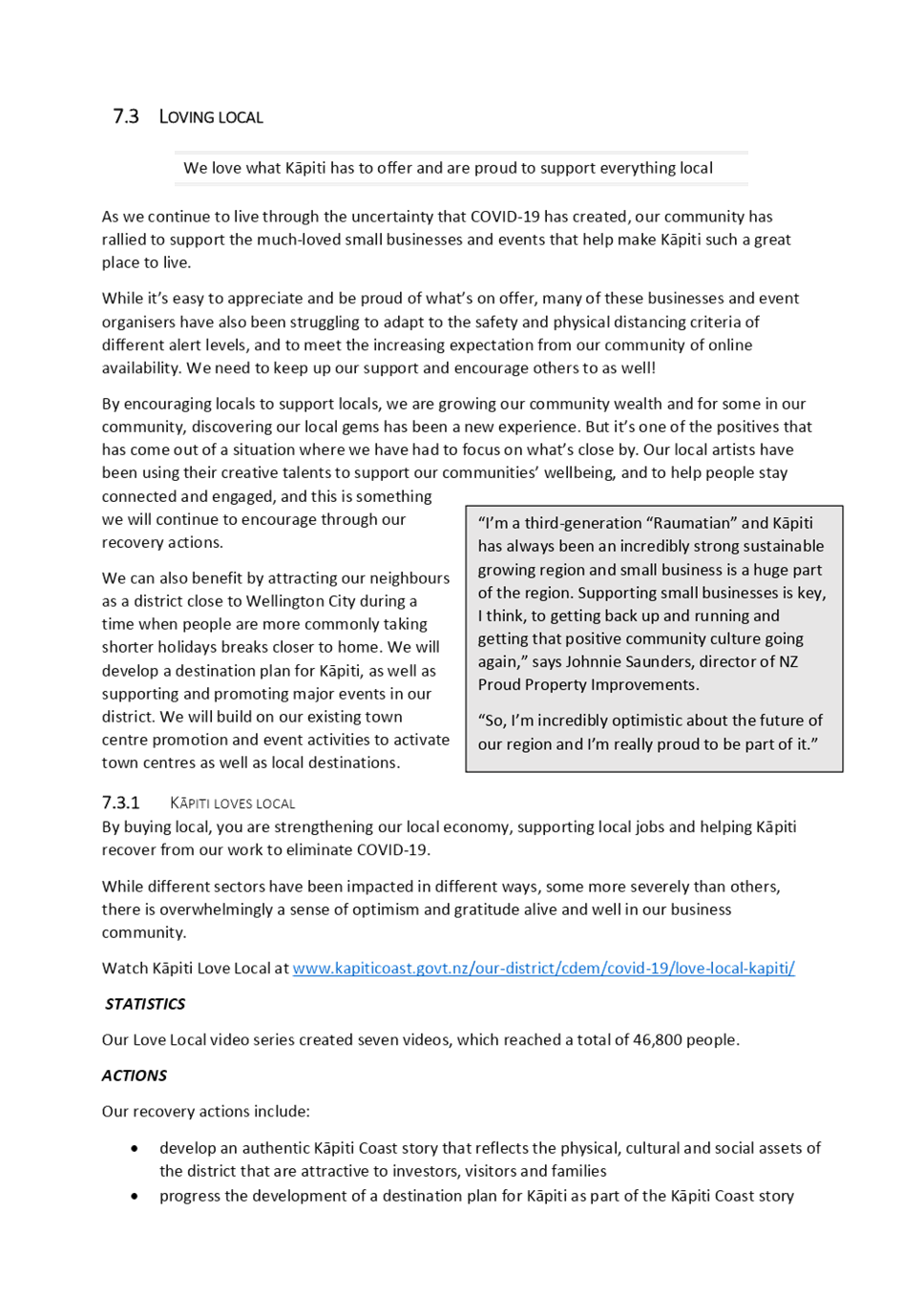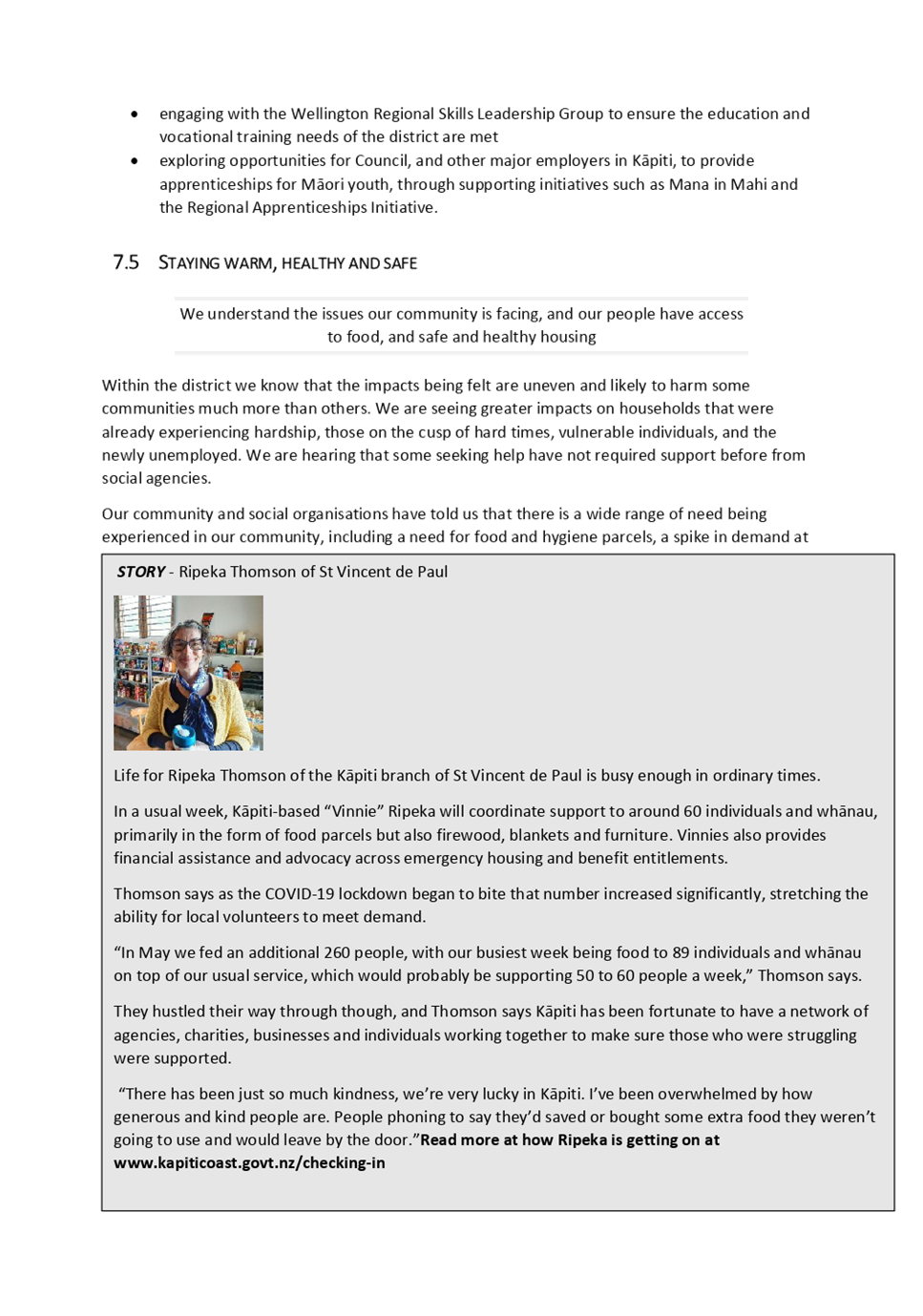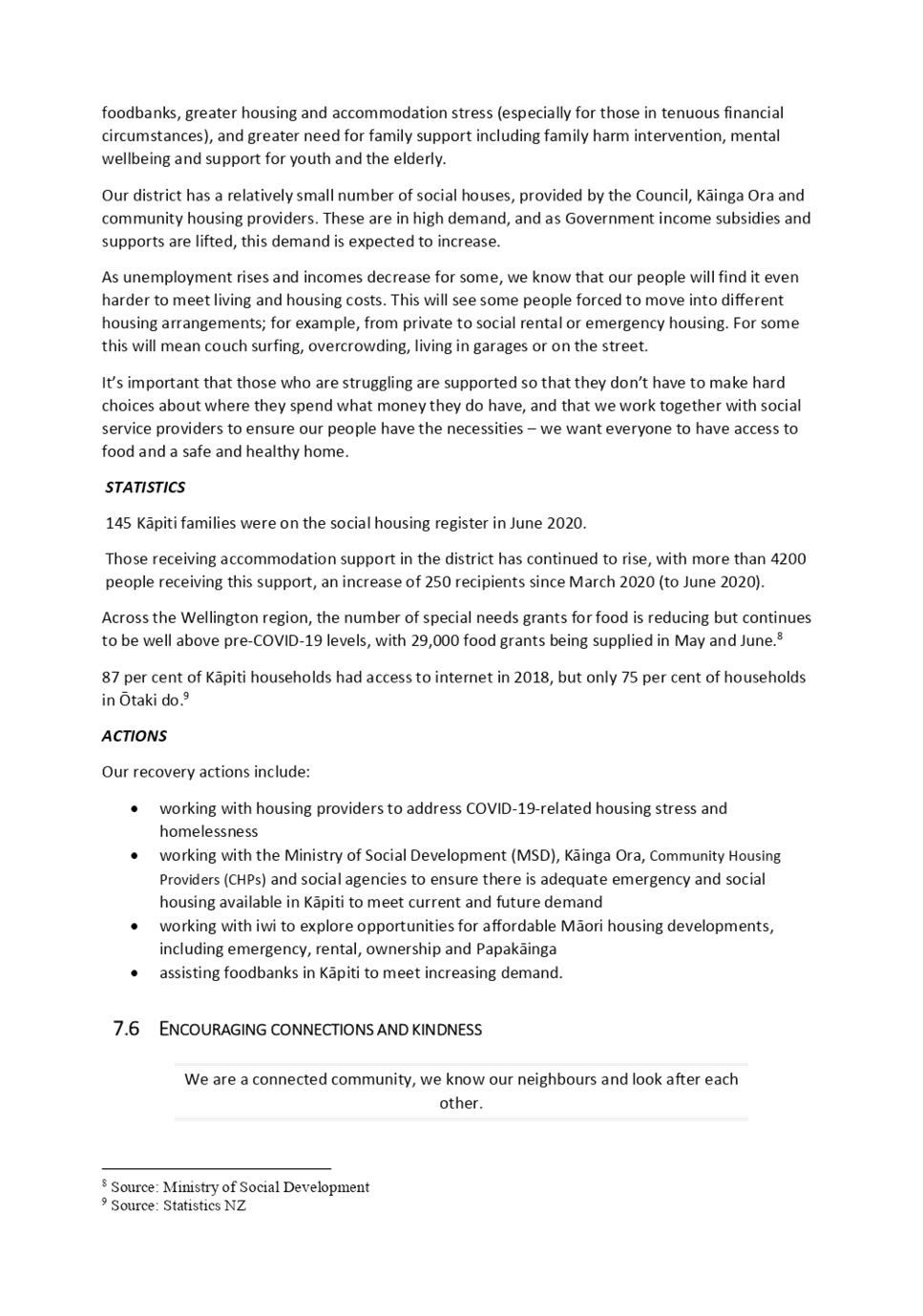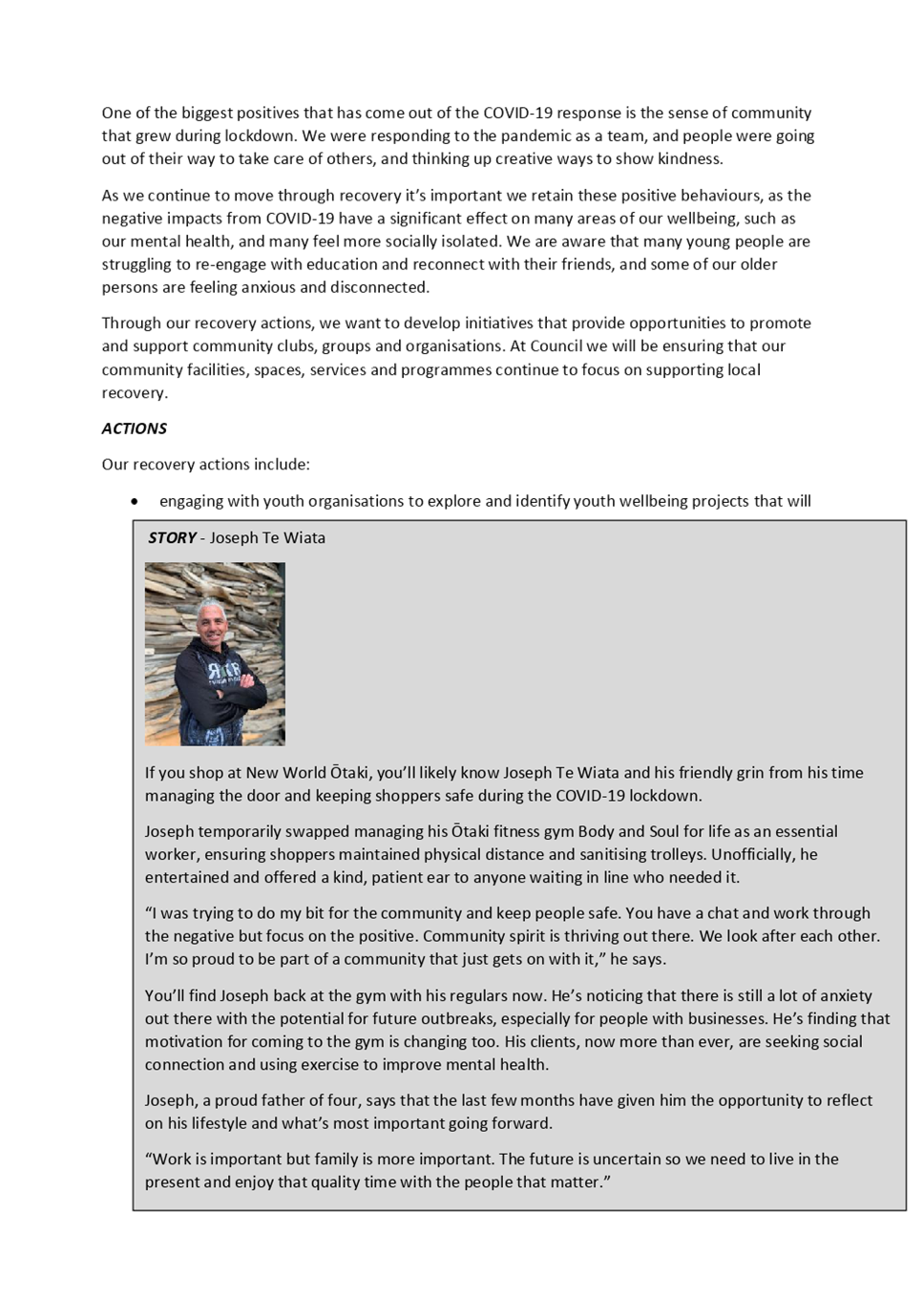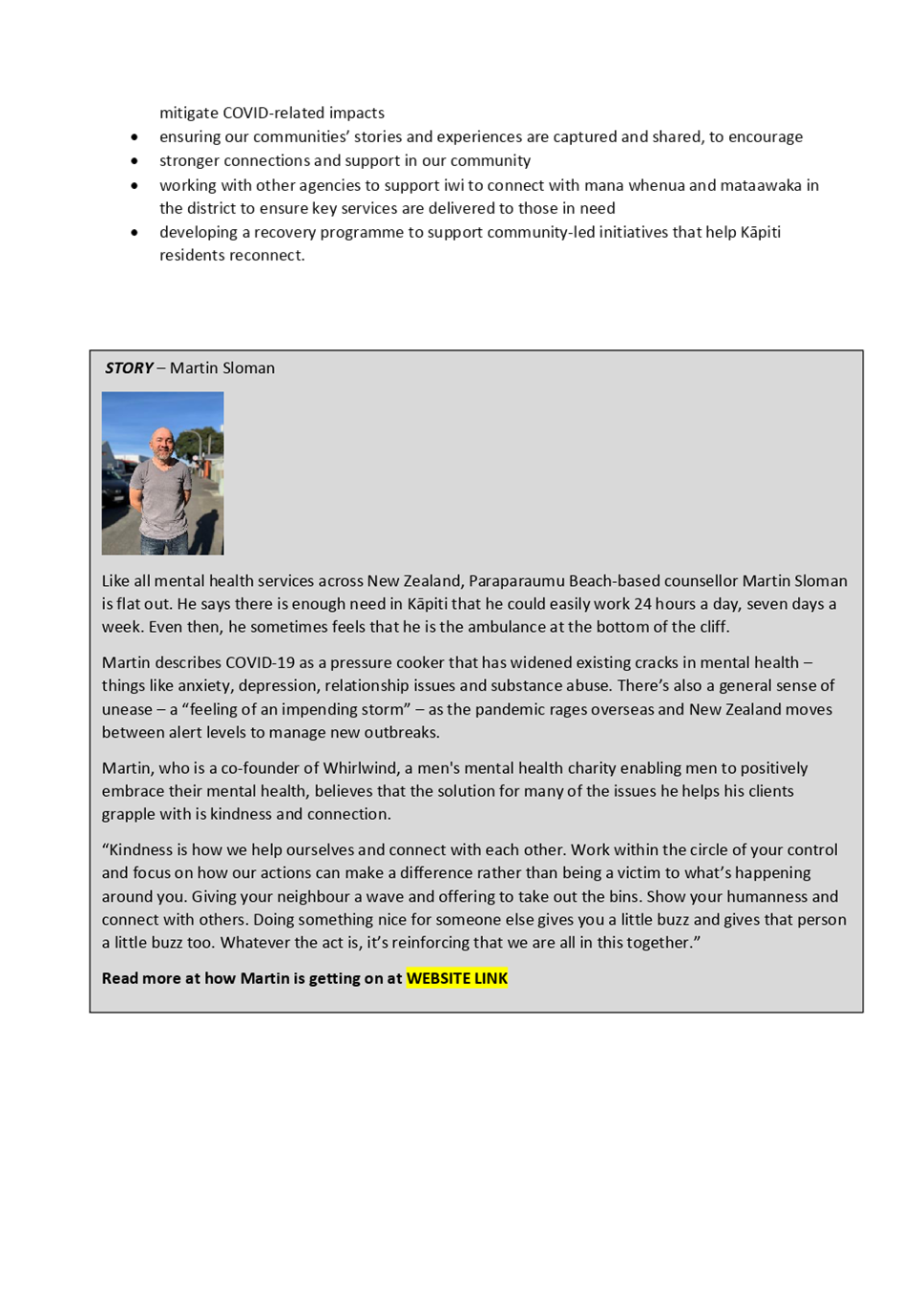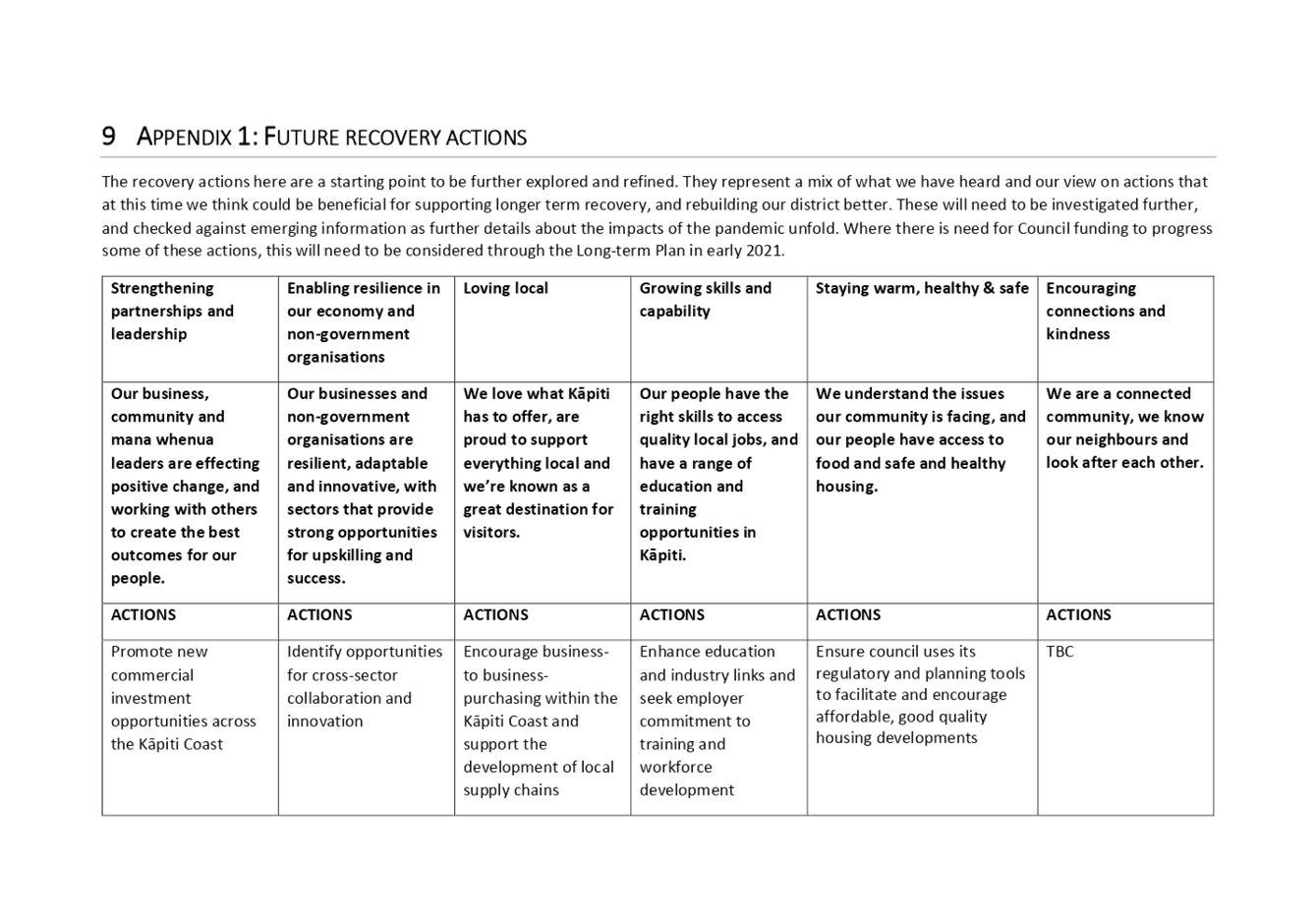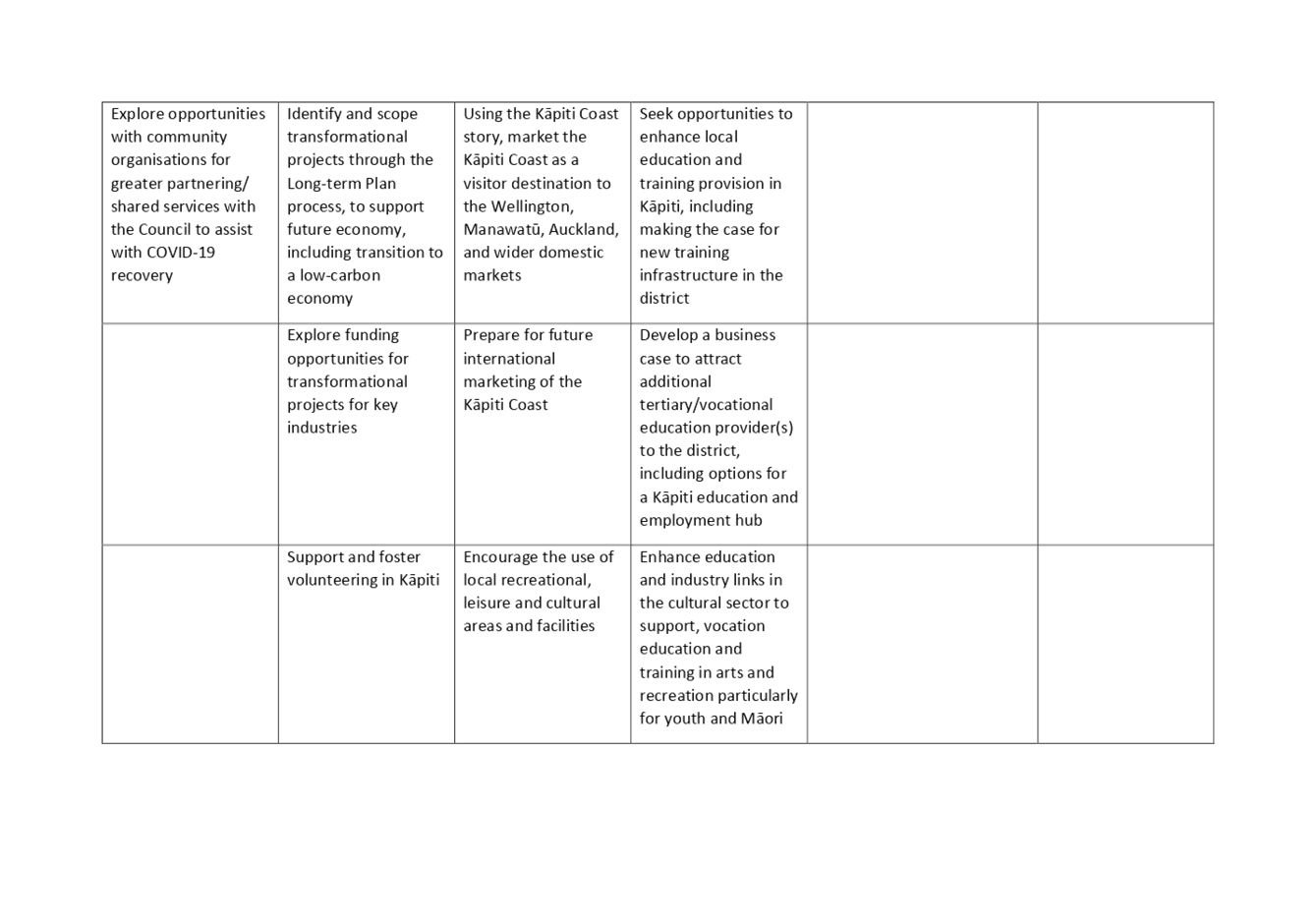|

|
|
AGENDA
Council Meeting
|
|
I hereby give notice that a Meeting of the Kapiti
Coast District Council will be held on:
|
|
Date:
|
Thursday, 1 October 2020
|
|
Time:
|
9.30am
|
|
Location:
|
Council Chamber
Ground Floor, 175 Rimu Road
Paraparaumu
|
|
Wayne Maxwell
Chief Executive
|
|
Council
Meeting Agenda
|
1 October 2020
|
Kapiti Coast District Council
Notice
is hereby given that a meeting of the Kapiti Coast District Council will be
held in the Council Chamber,
Ground Floor, 175 Rimu Road, Paraparaumu, on Thursday 1 October 2020, 9.30am.
Council Members
|
Mayor K Gurunathan
|
Chair
|
|
Deputy Mayor Janet Holborow
|
Deputy
|
|
Cr Angela Buswell
|
Member
|
|
Cr James Cootes
|
Member
|
|
Cr Jackie Elliott
|
Member
|
|
Cr Gwynn Compton
|
Member
|
|
Cr Jocelyn Prvanov
|
Member
|
|
Cr Martin Halliday
|
Member
|
|
Cr Sophie Handford
|
Member
|
|
Cr Robert McCann
|
Member
|
|
Cr Bernie Randall
|
Member
|
2 Council
Blessing
“As we deliberate on the
issues before us, we trust that we will reflect positively on the
communities we serve. Let us all seek to be effective and just, so that with
courage, vision and energy, we provide positive leadership in a spirit of
harmony and compassion.”
I a mātou e whiriwhiri ana
i ngā take kei mua i ō mātou aroaro, e pono ana mātou ka
kaha tonu ki te whakapau mahara huapai mō ngā hapori e mahi nei
mātou. Me kaha hoki mātou katoa kia whaihua, kia tōtika
tā mātou mahi, ā, mā te māia, te tiro whakamua me te
hihiri ka taea te arahi i roto i te kotahitanga me te aroha.
3 Apologies
4 Declarations
of Interest Relating to Items on the Agenda
Notification from Elected
Members of:
4.1 – any interests that
may create a conflict with their role as an elected member relating to the
items of business for this meeting, and
4.2 – any interests in
items in which they have a direct or indirect pecuniary interest as provided
for in the Local Authorities (Members’ Interests) Act 1968
5 Public
Speaking Time for Items Relating to the Agenda
6 Members’
Business
(a)
Public Speaking Time Responses
(b)
Leave of Absence
(c)
Matters of an Urgent Nature (advice to be provided to the Chair prior to
the commencement of the meeting)
7 Mayor's
Report
Nil
8 Reports
8.1 Paraparaumu
Airport Waitangi Tribunal Claims
Author: Ariana
Reweti, Iwi Partnerships Advisor
Authoriser: Janice
McDougall, Group Manager People and Partnerships
Purpose of Report
1 The
purpose of this report is to respond to resolution 2020/32 made by the Council
at the meeting of 27 August 2020, that ‘This Council, in supporting the
call by the original owners of the airport land for the return of their
ancestral land, requests the CEO to bring back a staff report on progressing
this matter’.
Delegation
2 Council
has the authority under the Governance Structure and Delegations 2019-2022
Triennium to request staff report to it on this matter under the Local
Government Act 2002.
Background
3 At
the Council meeting of 27 August 2020, members of the Puketapu hapū
presented a statement concerning the Kāpiti Coast Airport (formerly called
Paraparaumu Airport) land. This statement explains that their hapū have
claims being considered by the Waitangi Tribunal which include the airport
lands, and raised concerns that if the airport was developed for other purposes
this would put their ancestral lands further out of reach from the descendants
who hope to see their land one day returned. It asked for Council support to
advocate “that the Government purchase the airport lands, allow Kāpiti airport to continue operating, and hold the lands
in a Crown land-bank until negotiations with mana whenua can occur under an
appropriate and mana-enhancing negotiation framework”.
4 This
statement was made in response to recent news that the current owners, NZPropCo
Ltd (NZPC) (‘the Owners’) were ”reviewing all options for the
future of the airport”[1]
due to commercial viability issues, heightened by the impact of COVID-19 travel
restrictions.
5 Currently
the Waitangi Tribunal Wai 2200 Porirua ki Manawatū district inquiry is in
a report-writing phase awaiting the Tribunal’s findings and
recommendations. There are at least six claims within this inquiry which
concern Kāpiti Coast airport land.
6 Furthermore,
since news has circulated that the future of the airport is uncertain, there
has been widespread community concern that the airport might shut down. A Save
Kāpiti Airport (SKA) group has formed with the objective of keeping the
airport operational[2].
7 The
group was formed by Ōtaki electorate National Party candidate and former
air force pilot Tim Costley and has representatives from Air Chathams, Sounds
Air, Kāpiti Aero Club, private aircraft operators, businesses based at the
airport, and the Kāpiti Coast Chamber of Commerce.
8 SKA
has started a petition calling on the owners of the airport to keep Kāpiti
Airport operational, and for the Council to support the strategic importance of
the airport to this region, and its continued operation.
A brief
history of the Kāpiti Coast Airport land
9 Ātiawa, Ngāti Raukawa and Ngāti Toa Rangatira
iwi have occupied land as mana whenua in the Kāpiti Coast district since
their migration here in the 1820s.
10 The
land in which the Kāpiti Coast Airport is situated forms part of Ātiawa’s ancestral tribal and hapū lands.
11 In
1939 the Paraparaumu Airport land was compulsorily acquired, including from
Māori landowners[3],
under the Public Works Act for the purposes of an aerodrome. The aerodrome was
completed and used by the military during World War II for defence purposes.[4]
12 From
1947 to 1959 Paraparaumu was New Zealand’s busiest airport. The National
Airways Corporation (NAC) relocated there when Rongotai was closed for
upgrading to international standards. NAC operations were relocated back to
Rongotai in 1959 and Paraparaumu reverted to general aviation use.[5]
13 By
1990 the Government had determined that the Paraparaumu Airport was one of the
Crown-owned aerodromes that they wanted to dispose of and it was subsequently
sold to private owners, Murray Cole and three other Kāpiti
businessmen, in 1995.[6]
14 In
2006 Paraparaumu Airport was on-sold to new private owners Paraparaumu Airport
Holdings, headed by Sir Noel Robinson, and the facilities were upgraded.
15 On
24 October 2011, the newly-renamed Kāpiti Coast Airport was opened for
business. Air New Zealand operated from this airport for seven years before
ceasing operations in 2018.
16 Following
considerable advocacy from the community for air services to continue out of
Kāpiti Airport, Air Chathams announced their services from here in 2018
and continue to operate until the present day.
A brief
update on the Waitangi Tribunal Porirua ki Manawatū district inquiry
17 There
are roughly 137 claims being investigated as part of the Wai 2200 Porirua ki
Manawatū District Inquiry. This inquiry is district-wide and includes the
claims of Ātiawa/Ngāti Awa ki Kāpiti.
18 There
are at least six claims within this inquiry which concern Kāpiti Coast
airport land: Wai 609, Wai 612, Wai 875, Wai 876, Wai 877, and Wai 1620. These
range from claims on behalf of one whanau through to claims on behalf of up to
30 claimants.
19 Between
August 2018 and August 2019 the Tribunal held five hearings for the claims of
Ātiawa/Ngāti Awa ki Kāpiti. These hearings have now concluded.
20 The
Tribunal is now in the phase of writing the report on remaining
Ātiawa/Ngāti Awa ki Kāpiti claims. The issues pertaining to the
Kāpiti Coast airport land will form part of this report, which is not
anticipated to be released for at least another year.
DISCUSSION
21 Council
recognises mana whenua share an important bond with land and Kāpiti Coast
Airport land holds special significance for iwi and hapū.
22 There
is a Waitangi Tribunal process underway that is considering claims about the
Kāpiti Coast Airport land. Council recognises the importance of this
process to our iwi partners.
23 The
Crown has responsibilities to iwi under the Treaty of Waitangi. Local
authorities are constrained in their involvement in Waitangi Tribunal processes
because they only rarely, if ever, have the right to be heard by the Tribunal.
Local authorities are also not party to the negotiations between Iwi and the
Crown. However, Council respects our iwi partners’ aspirations for the
resolution of their claims and supports that process moving forward. This
support is in line with Local Government New Zealand guidance on
Council-Māori engagement which endorses councils to take a proactive role
in responding to Treaty claims, including taking leadership on issues within
the community.
24 The
Council also recognises that the wider community has significant interest in
retaining a working airport. As the interests of the broader community appear
well aligned with those of iwi, it is appropriate for the Council to advocate
to central government that the airport should remain both for its strategic
value and to link that value to potential avenues of redress for Treaty
settlements, should local iwi claims be upheld by the Tribunal.
25 It
is proposed that Council officers also investigate whether other options can be
identified for supporting iwi and community aspirations for the airport land.
Considerations
Policy
considerations
26 There
are no policy considerations.
Legal
considerations
27 There
are no specific legal considerations.
Financial
considerations
28 There
are no financial considerations.
Tāngata
whenua considerations
29 The
Council has a commitment through the Memorandum of Partnership with mana whenua
to uphold a meaningful partnership with Ātiawa ki Whakarongotai as one of
three iwi within the Kāpiti Coast district.
30 Supporting
the iwi aspirations for resolution of their Tribunal claims is consistent with
this partnership commitment.
31 Once
Treaty grievances are settled, the relationship between the Council and iwi assumes
new importance. Previous Waitangi Tribunal claims settlements elsewhere have
had significant consequences for resource ownership and management.[7] Councils play a
crucial role in implementing treaty settlement arrangements, including legal,
scientific, policy, planning and resource consenting expertise.
Strategic
considerations
32 This
report contributes to two of ten-year outcomes sought in the Council’s
long term plan[8]:
32.1 A
community that is more resilient through Council’s advocacy
32.2 A community
better supported to lead initiatives in response to agreed community
priorities.
Significance and Engagement
Significance
policy
33 This
matter has a moderate degree of significance under Council’s Significance
and Engagement Policy as there is likely to be interest from across a number of
sectors and especially our iwi partners.
Consultation
already undertaken
34 There
has been no public consultation on this matter.
Engagement
planning
35 An
engagement plan is not needed to implement this decision.
Publicity
36 There
will be public interest in this decision so the decision will be communicated
via the Councils regular communication channels.
|
Recommendations
37 That
Council:
37.1 Note
that multiple Treaty claims concerning Kāpiti Coast Airport land are
currently subject to Waitangi Tribunal findings and recommendations;
37.2 Note
that as the interests of the broader community appear well aligned with those
of iwi, it is appropriate to advocate to central government in support of the
Kāpiti Coast Airport being considered for its potential to contribute to
any necessary redress for local Maori after the resolution of their Waitangi
Tribunal claims;
37.3 Agree
that officers investigate whether other options can be identified for
supporting iwi and community aspirations for the airport land.
|
Appendices
Nil
8.2 Annual
Report for 2019/20
Author: Chris
Pearce, Manager, Corporate Planning & Reporting
Authoriser: Mark
de Haast, Group Manager Corporate Services
Purpose of Report
1 This report seeks
Council’s approval to adopt the audited Annual Report for the year ended
30 June 2020, attached as Appendix 1 to this report.
Delegation
2 The Council has delegated
authority to consider this matter.
Background
3 The
Council is required under the Local Government Act 2002 (the Act) to produce an
audited Annual Report each year – a draft version of the Annual Report
2019/20 is attached as Appendix 1 to this report. This report shows the
Council’s performance for the year in both a service level and financial
context, against measures set out in the Long Term Plan 2018-38 (LTP).
4 The Audit and Risk
Sub-Committee considered the draft Annual Report on 24 September 2020 and
recommend that Council, subject to any final changes required from the
Council’s auditors Ernst & Young (EY), considers and adopts this
Annual Report for the 2019/20 financial year.
5 EY have completed their
final review of the Annual Report and provided a draft audit report that
contains an unqualified (‘clean’) audit opinion for inclusion in
the Annual Report. Once the Council has adopted the Annual Report, EY will
provide their final audit opinion.
6 The Annual Report contains
the following sections:
· Highlights
of 2019/20 (pages 9-33) - includes an introduction from the Mayor and Chief
Executive, a message from Tāngata Whenua, and a description of the
Council’s activities with regards to major projects, our COVID-19
response, sustainability initiatives, key financial results, engagement, reviews,
audits and awards, and progress towards our outcomes.
· Our
activities and services (pages 34-91) - comments on significant developments
over the year and key performance indicator results for each of the
Council’s 13 activities.
· Our
finances (pages 92-149) - presents all the key financial information, the
accompanying explanatory notes, the disclosure statement and the
auditor’s report.
· Our
governance (pages 150-160) - includes information about the governance
structure, meeting attendance, elected members and the organisation structure.
OVERVIEW
Service performance results
7 The following table
summarises the Council’s performance against its 94 key performance
indicators (KPIs). Overall the Council achieved 76% of its KPIs in 2019/20.
This is compared with previous results of 83% in 2018/19, 81% in 2017/18. There
were 16 KPIs not achieved, compared to 14 in 2018/19.
|
Key Performance Indicator result
|
2019/20 count
|
Percentage
|
|
Achieved
|
71
|
76%
|
|
Not achieved
|
16
|
17%
|
|
Not able to be measured
|
7
|
7%
|
|
Total KPIs
|
94
|
100%
|
8 The KPIs not achieved
include seven in the Infrastructure cluster, six in Community Services, and two
in Governance and Tāngata Whenua. Explanations of each KPI not achieved
are provided in the performance measure tables in the activity chapters of the
Annual Report 2019/20 (pages 34 to 91).
Financial results
Changes to audited
financial statements
9 The Council’s
financial statements, annual report disclosure statement (prudence benchmarks)
and cost of activity statements are presented in the Our finances
section of the draft Annual Report 2019/20.
10 The audited financial statements
include two changes to the Financial Report to 30 June 2020 presented to the
Strategy and Operations Committee on 20 August 2020. These changes have
affected the results as follows:

The details of
these changes are summarised below:

11 In addition to the above adjustments,
EY identified an error in the Council’s draft valuation report for
three-water assets. The draft valuation report double-counted an oxidation
plant valued at $1.3 million. This was corrected by the external valuer and
accounted for correctly in the financial statements.
Disclosure statement
12 The Annual Report Disclosure Statement
for the year ending 30 June 2020 presents the Council’s financial
performance in relation to eight prudence benchmarks set by the Department of
Internal Affairs to enable assessment of whether the Council is prudently
managing its revenue, expenses, assets, liabilities and general financial
dealings.
13 The Council met five of these
benchmarks for the year ended 30 June 2020.
14 The following benchmarks were not met:
· Balanced
budget – the Council meets this benchmark if its revenue equals or is
greater than its operating expenses. The Council is working towards balancing
our budget through committing to a financial strategy that progressively funds
depreciation with a target of fully funding depreciation by 2025/26. During
2019/20, the Council had to account for an unbudgeted impairment loss of $2.2
million on the Otaihanga Landfill after-care asset, and forego an estimated
$367,000 of fees and charges due to the closure of Council facilities under
COVID-19 lock down restrictions.
· Essential
services – the Council meets this benchmark if its capital expenditure on
network services equals or is greater than depreciation on network services.
Due to the timing of the renewals cycle for the three waters assets, the
Council’s capital expenditure is below the level of depreciation as
significant renewals are not expected until around 2045 onwards.
· Operations
control – the Council meets the operations control benchmark if its
actual net cash flow from operations equals or is greater than its planned net
cash flow from operations. As part of the Council’s Covid-19 Phase 1 -
Sustain Community support package, we provided suppliers with rapid invoice
payments. Suppliers were paid within seven to ten working days, compared to the
Council’s previous payment terms of the 20th of the month following the
date on the invoice. As a result of this initiative, $10.5 million in payments
to employees and suppliers was made earlier than planned.
Considerations
Policy considerations
15 There are no policy considerations in
regard to this matter.
Legal considerations
16 The Annual Report has been prepared to
meet the requirements of the Local Government Act 2002 (the Act). The final
Annual Report must contain an auditor’s opinion on whether it meets the
requirements of the Act.
17 The Act requires that the Council,
within one month after the adoption of its Annual Report, must make publicly
available both its Annual Report and a summary of the information contained in
its Annual Report. The Annual Report Summary must also be audited to ensure
that it represents, fairly and consistently, the information regarding the
major matters dealt with in the full Annual Report. EY have provided a draft ‘clean’
opinion on the Annual Report Summary.
18 The 2019/20 Annual Report and the
2019/20 Summary Annual Report will be made available to the public on the
Council’s website and through service centres and libraries within one
month of Council adopting the Annual Report, in accordance with the Act.
Financial considerations
19 There are no additional financial or
funding implications for the Council to consider.
Tāngata whenua considerations
20 A message from tāngata whenua has
been included in the Annual Report.
Strategic considerations
21 Through its reporting of financial and
service performance, the Annual Report demonstrates how the Council is tracking
against its strategic outcomes.
Significance and Engagement
Significance policy
22 This matter has a low level of
significance under the Council’s Significance and Engagement Policy.
Publicity
23 A media release will be developed to
support the public release of the Annual Report 2019/20 following its adoption.
|
Recommendations
24 That
the Council receives and notes this report, including Attachment 1 to this
report.
25 That
the Council notes the Audit and Risk Sub-Committee considered the draft
Annual Report on 24 September 2020 and recommends that Council, subject to
any final changes required from the Council’s auditors Ernst &
Young, considers and adopts this Annual Report for the 2019/20 financial
year.
26 That
the Council adopts, pursuant to Section 98 of the Local Government Act 2002,
the Kāpiti Coast District Council Annual Report for the year ended 30
June 2020, attached as Appendix 1 to this report.
27 That
the Council delegates to the Mayor, the Chief Executive and the Chair of the
Strategy and Operations Committee, the authority to approve minor editorial
changes (if any), to the Annual Report 2019/20, prior to its publication.
|
Appendices
1. 2019/20
Annual Report ⇩ 
|
Council
Meeting Agenda
|
1 October 2020
|































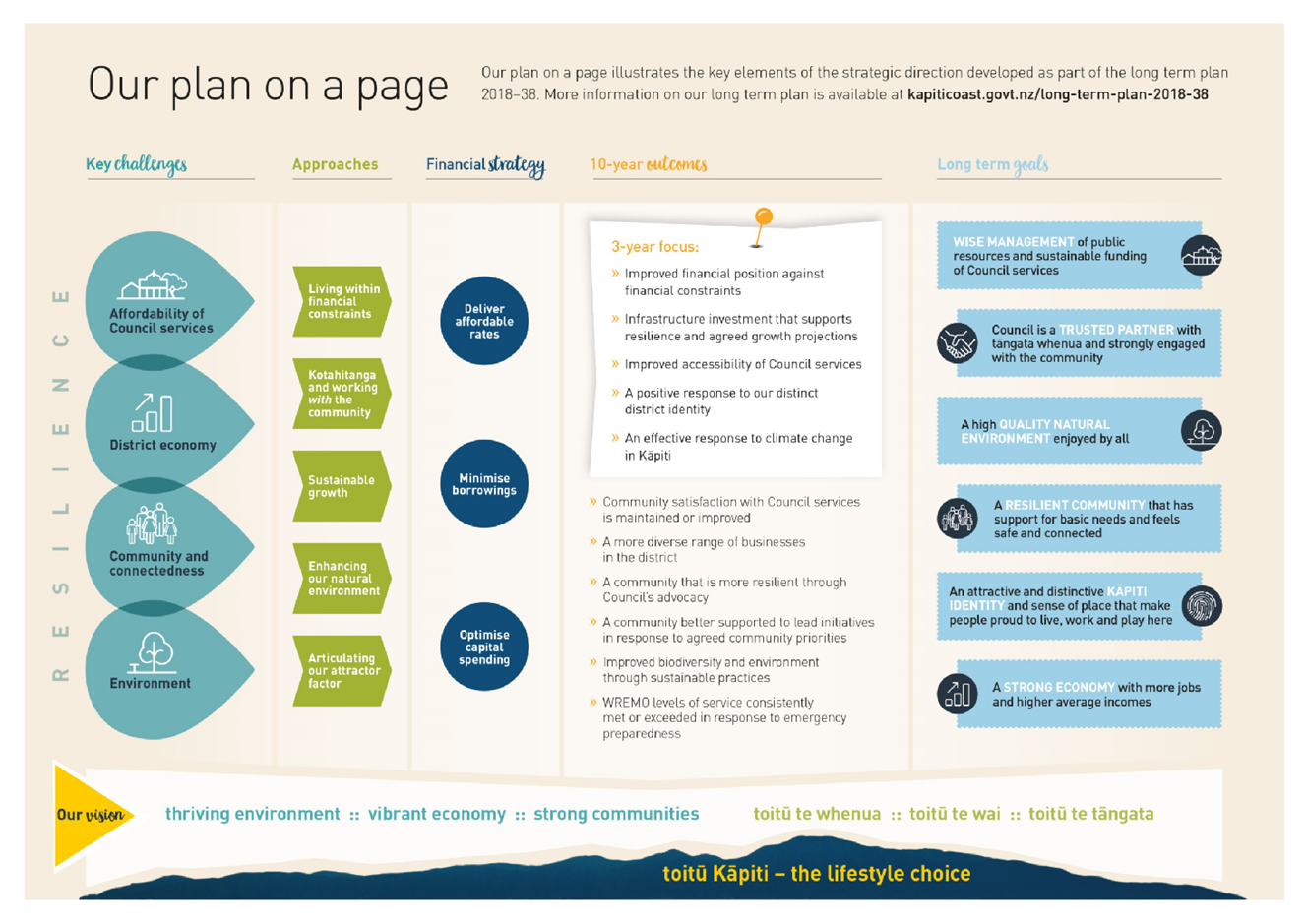



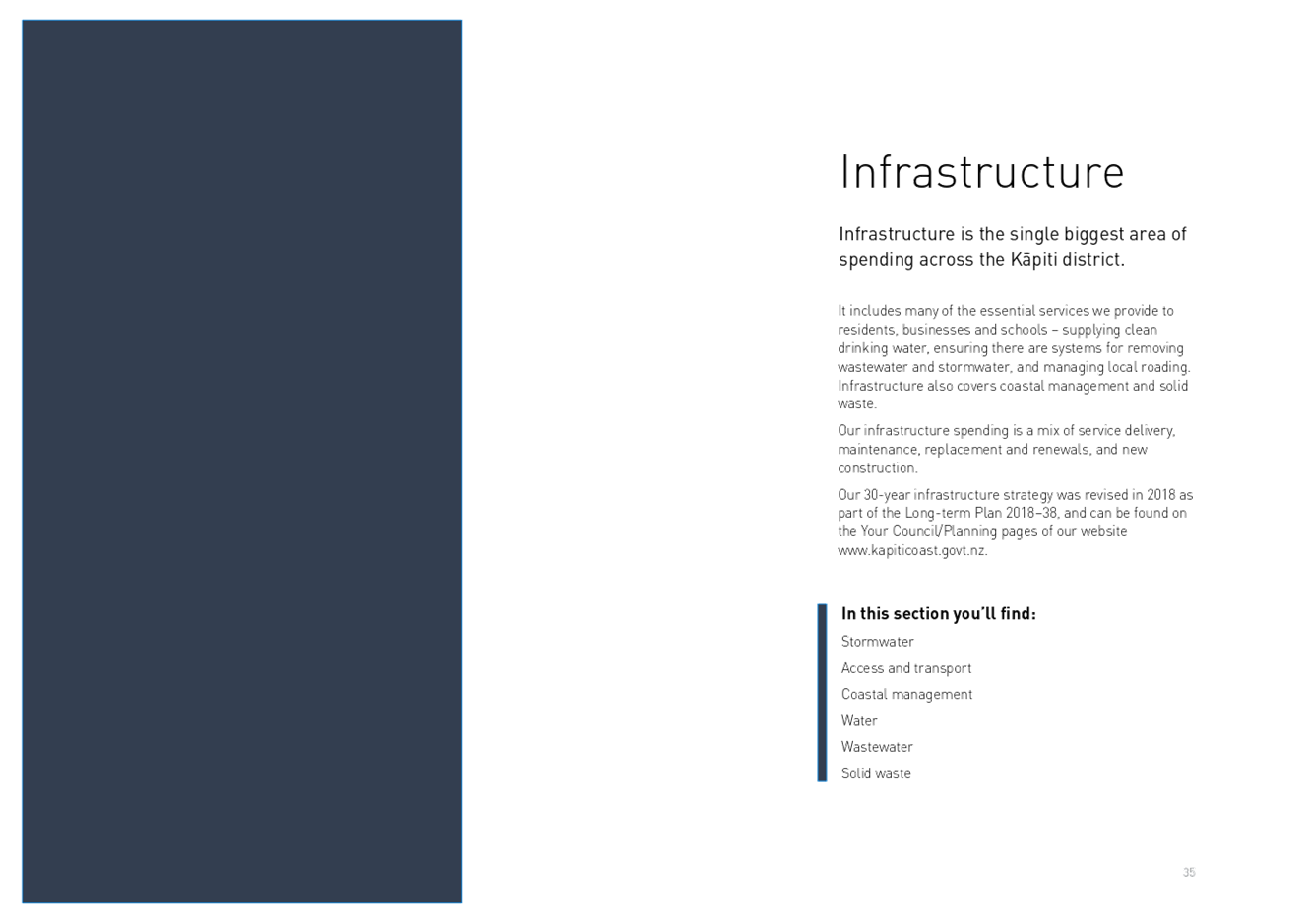
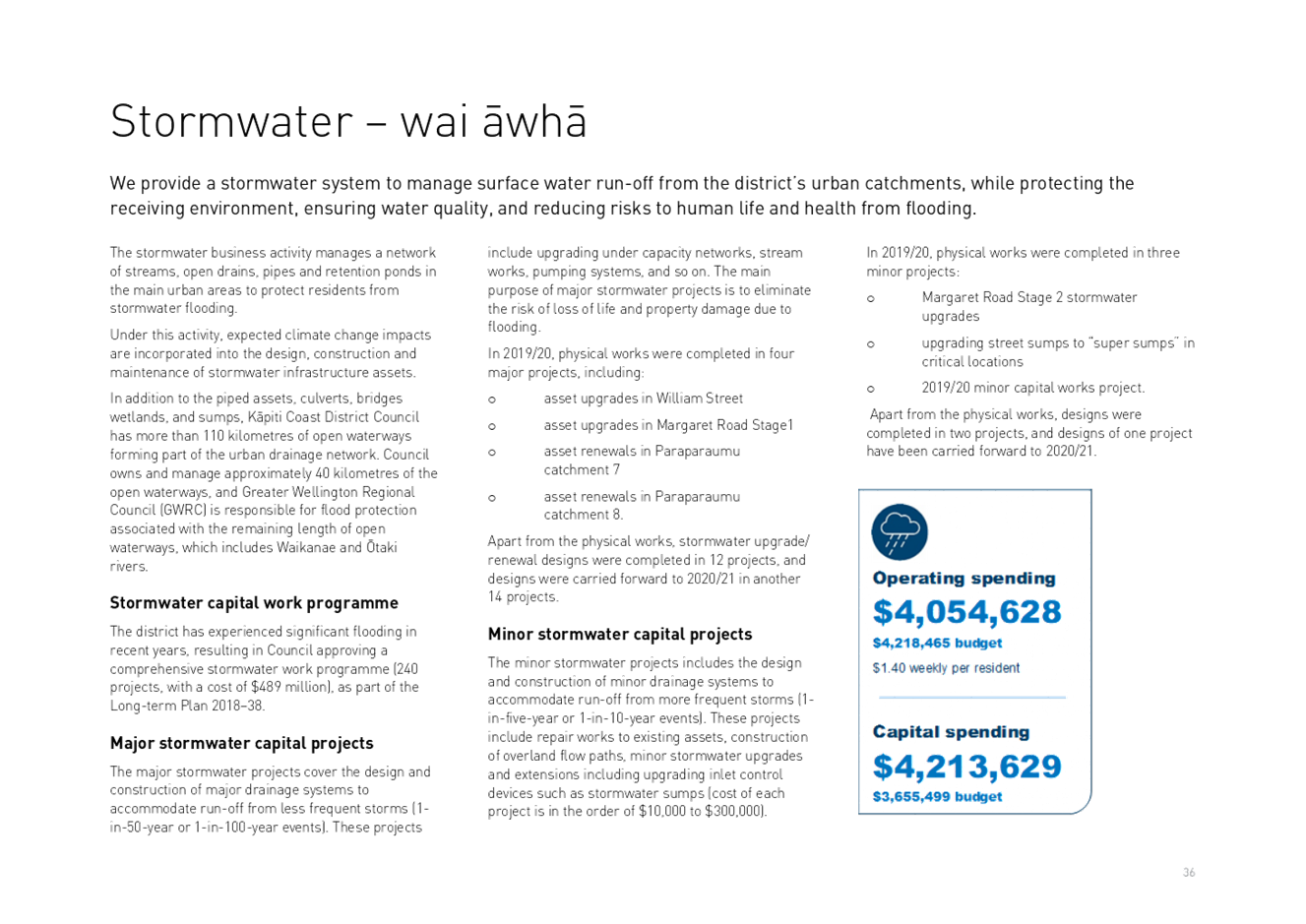

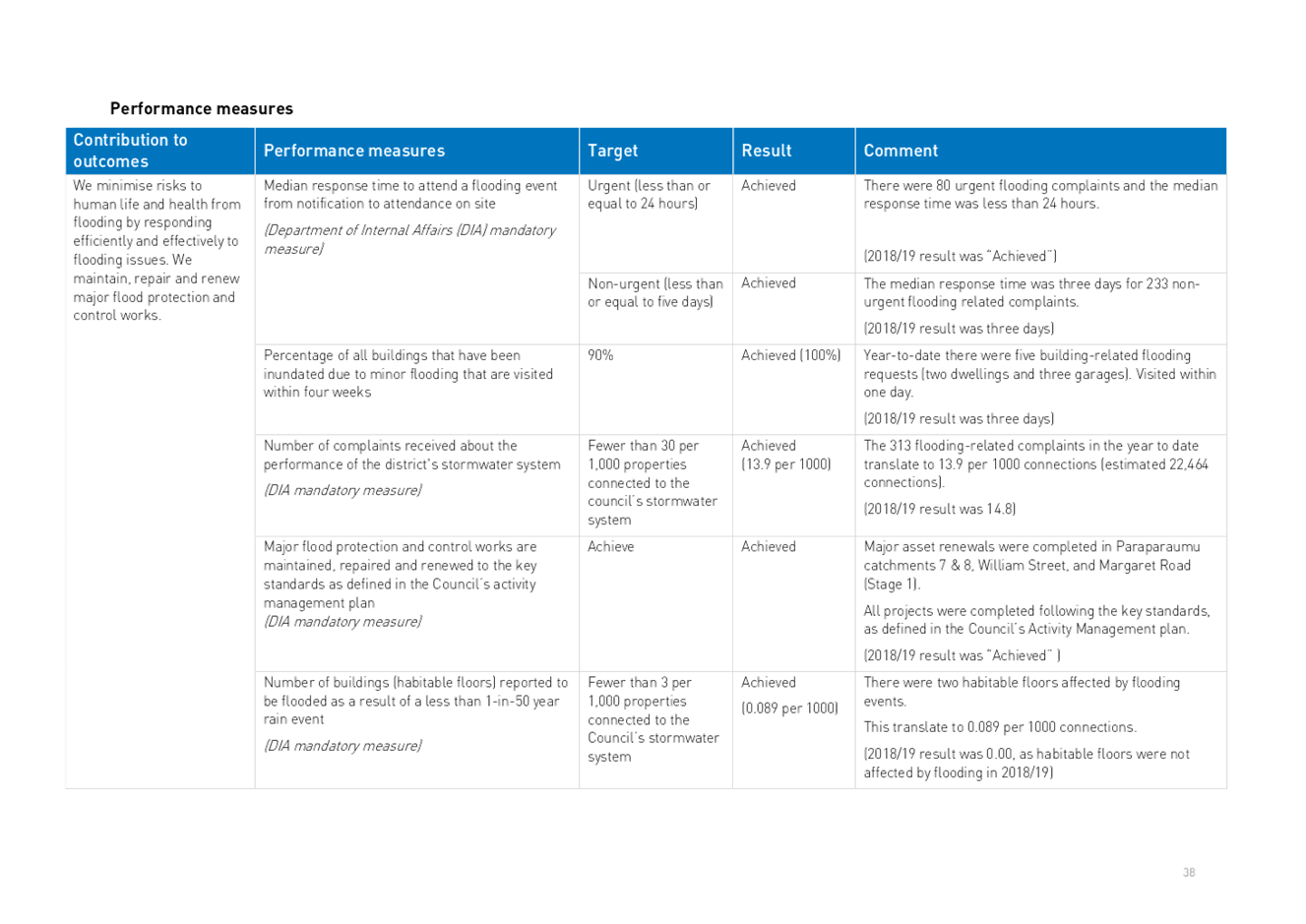

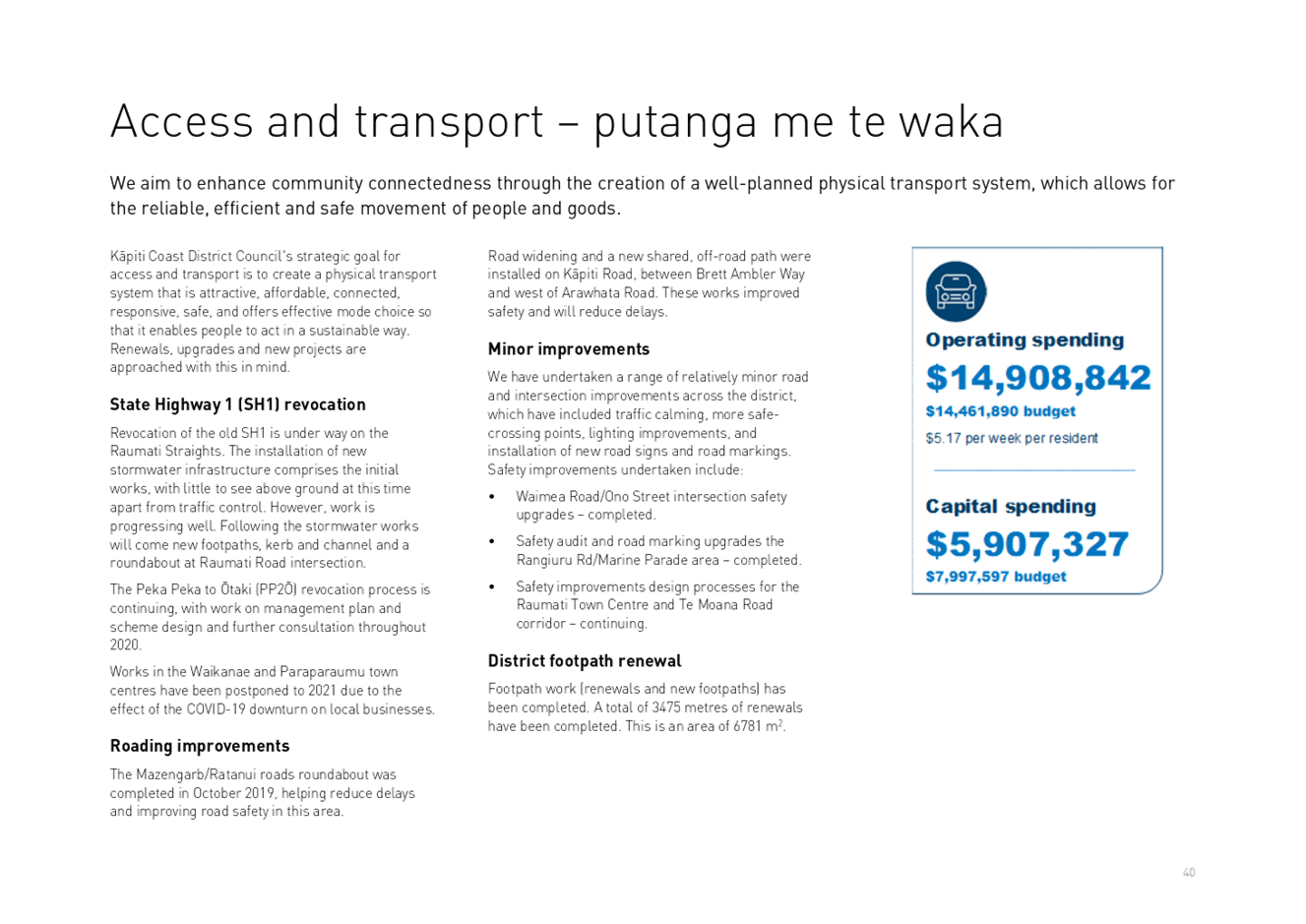
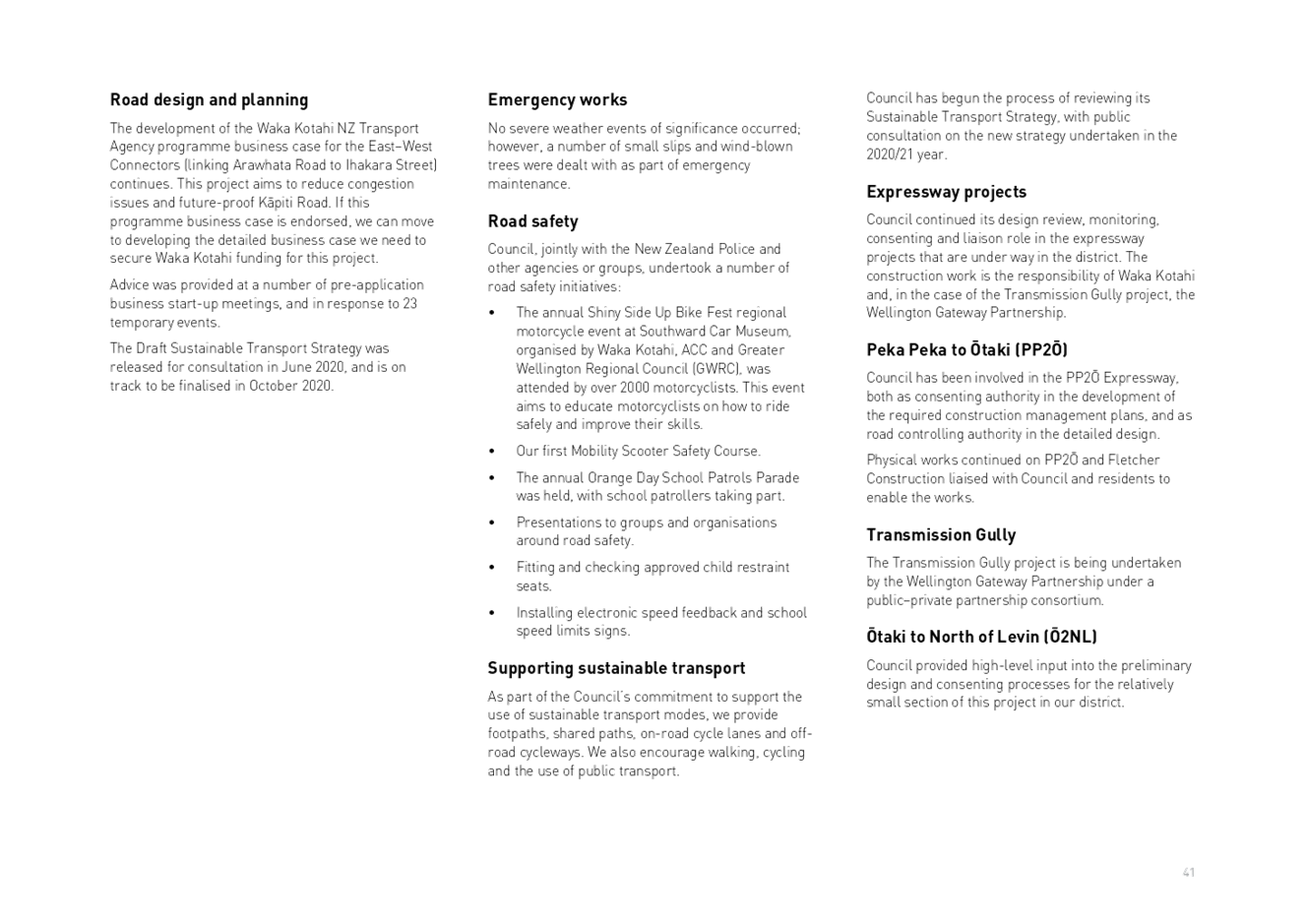
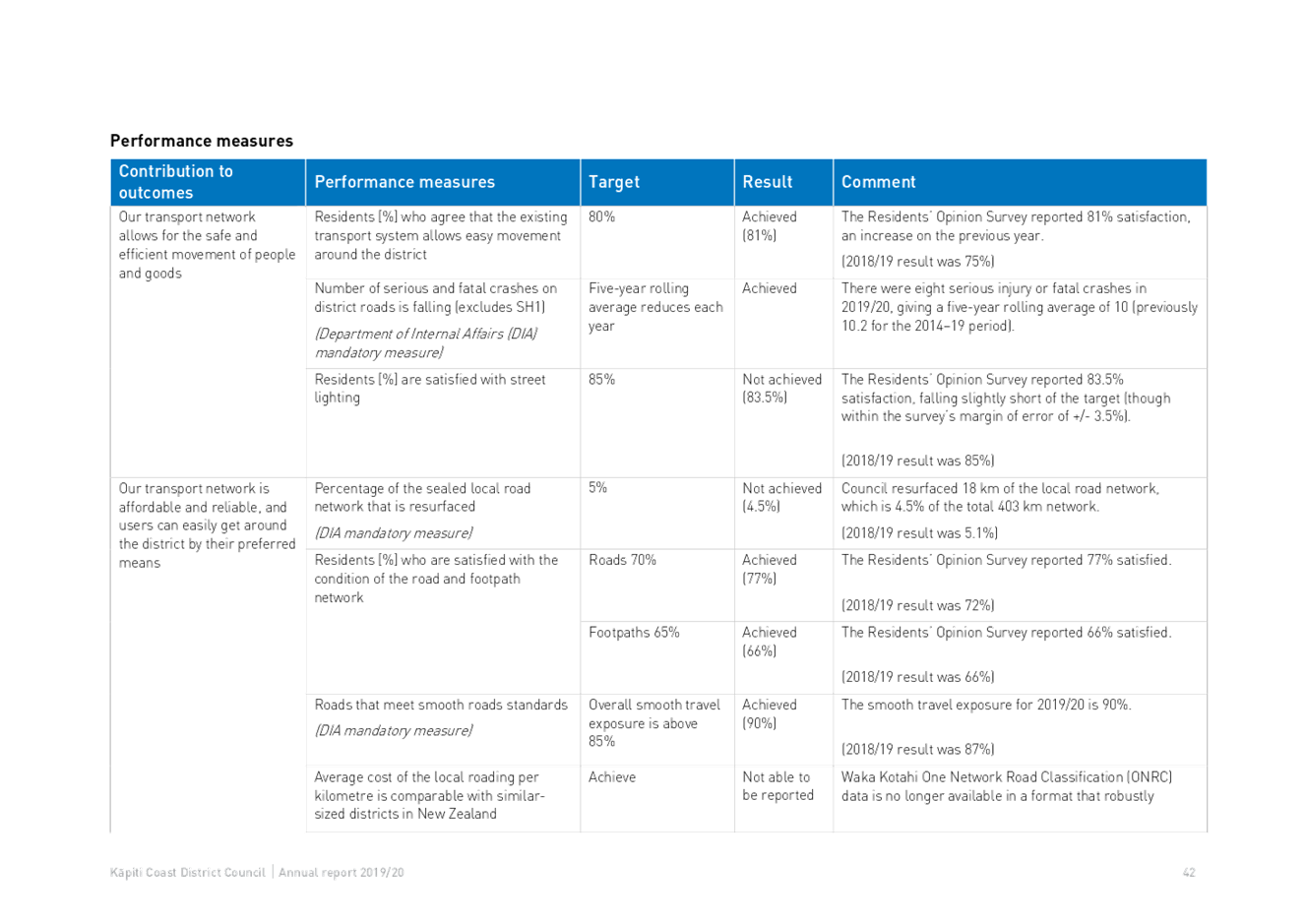
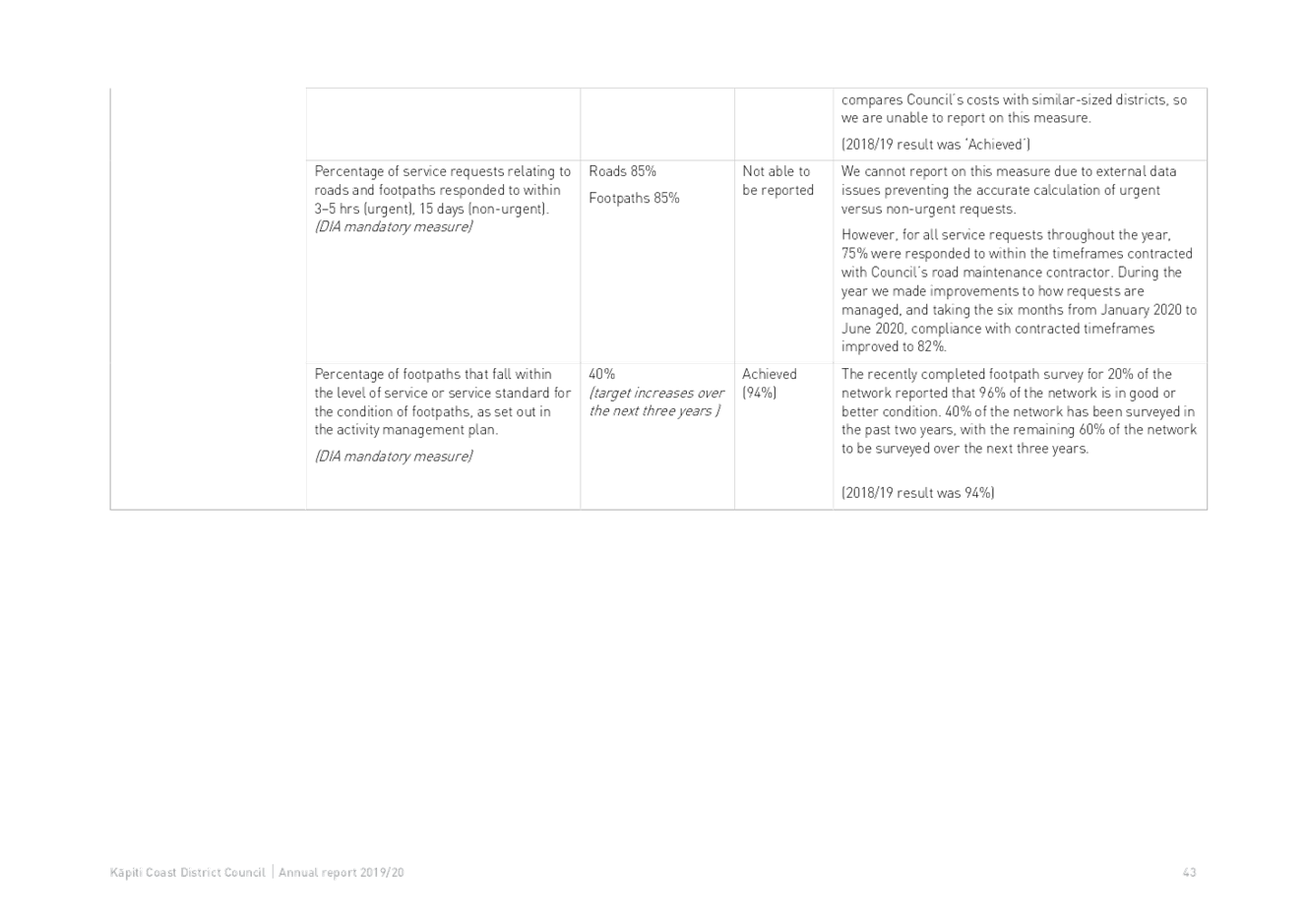



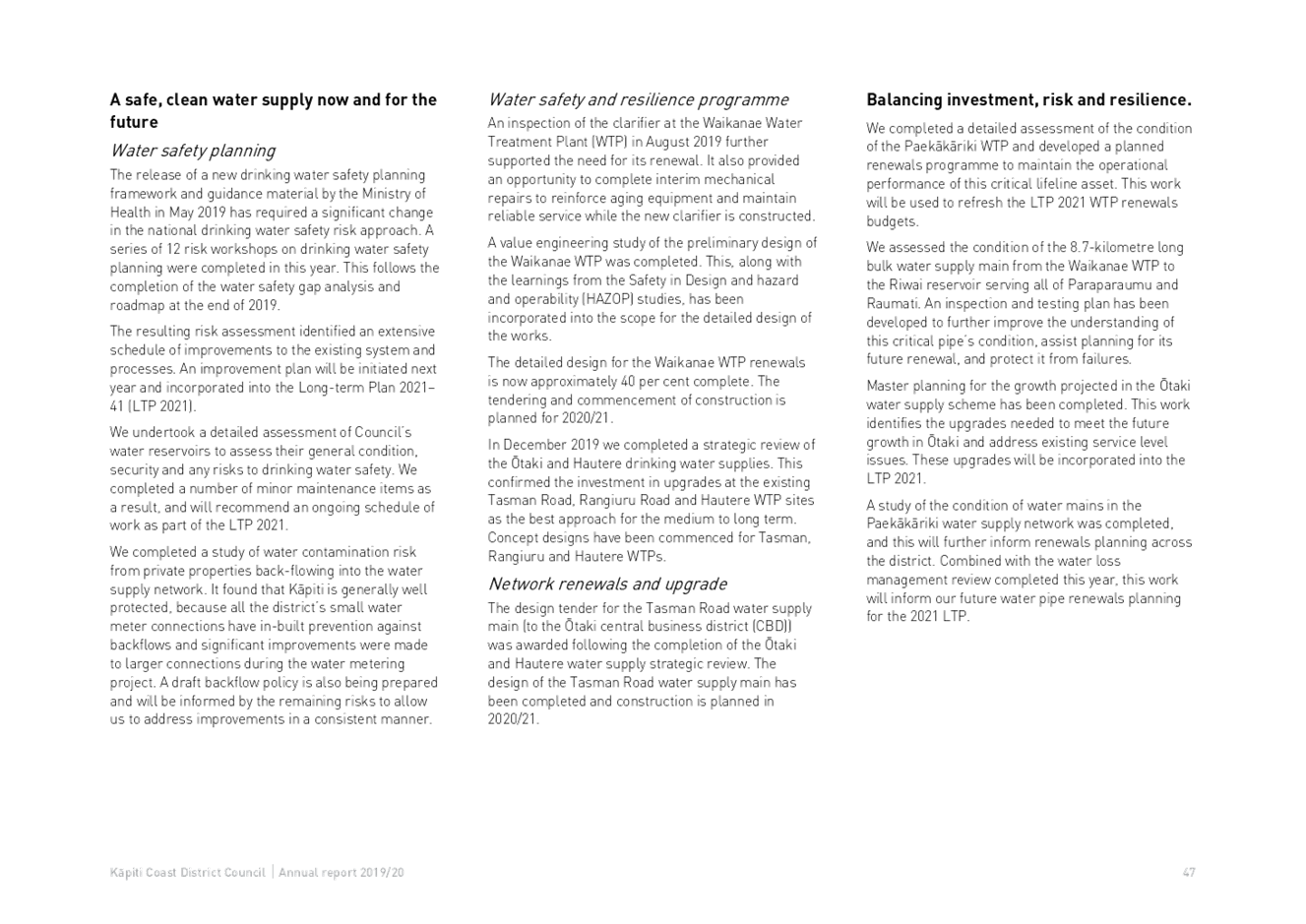


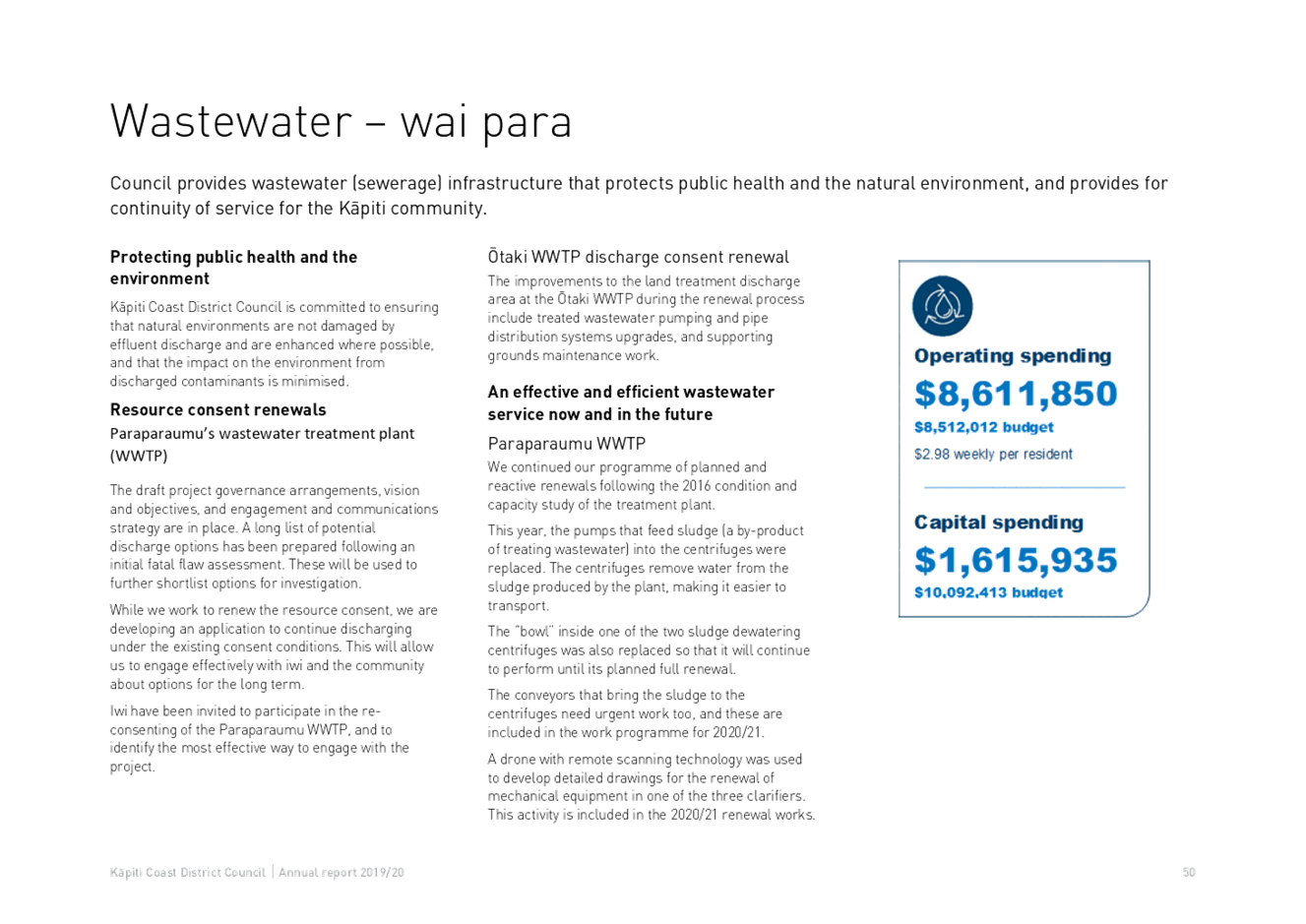

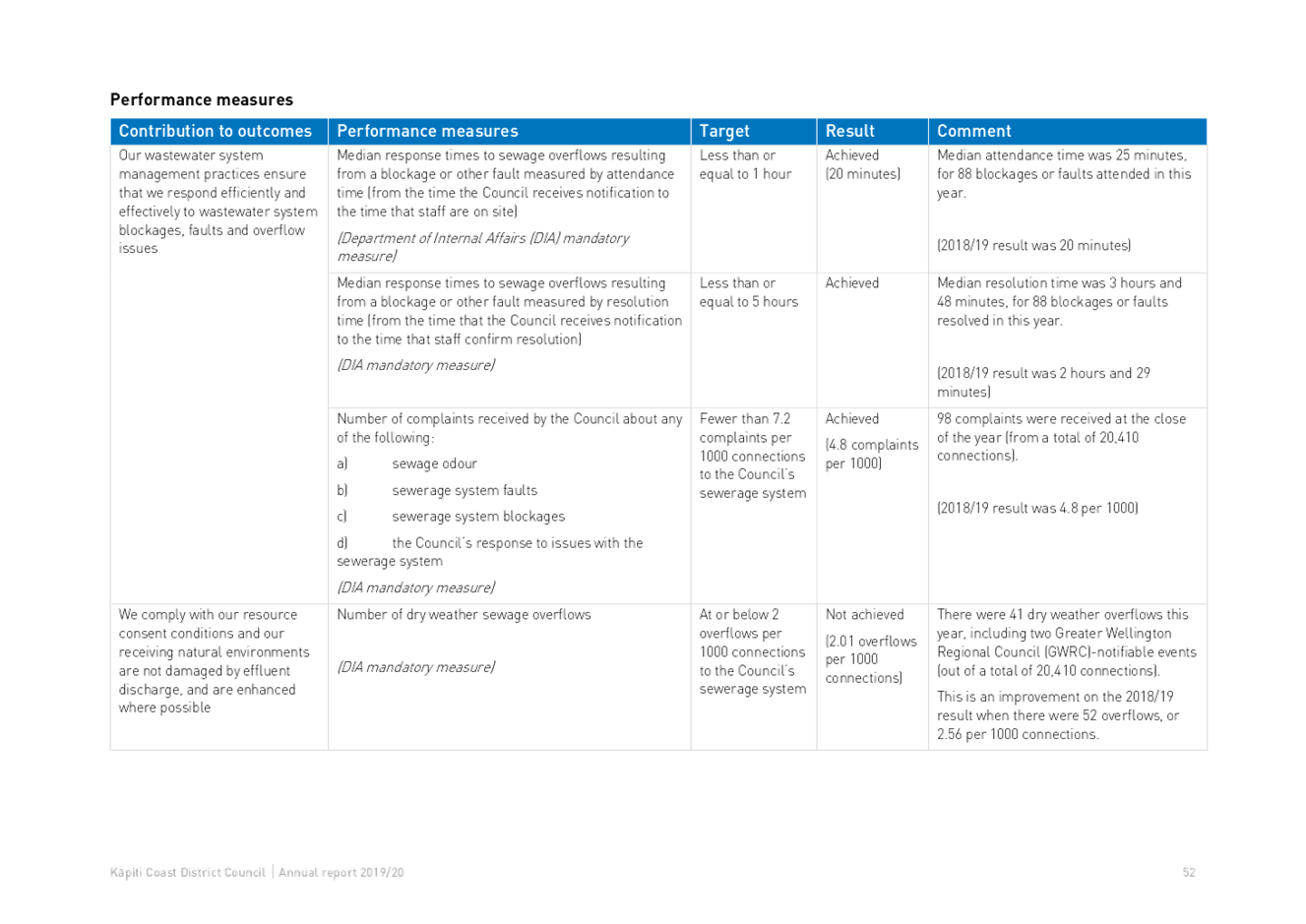
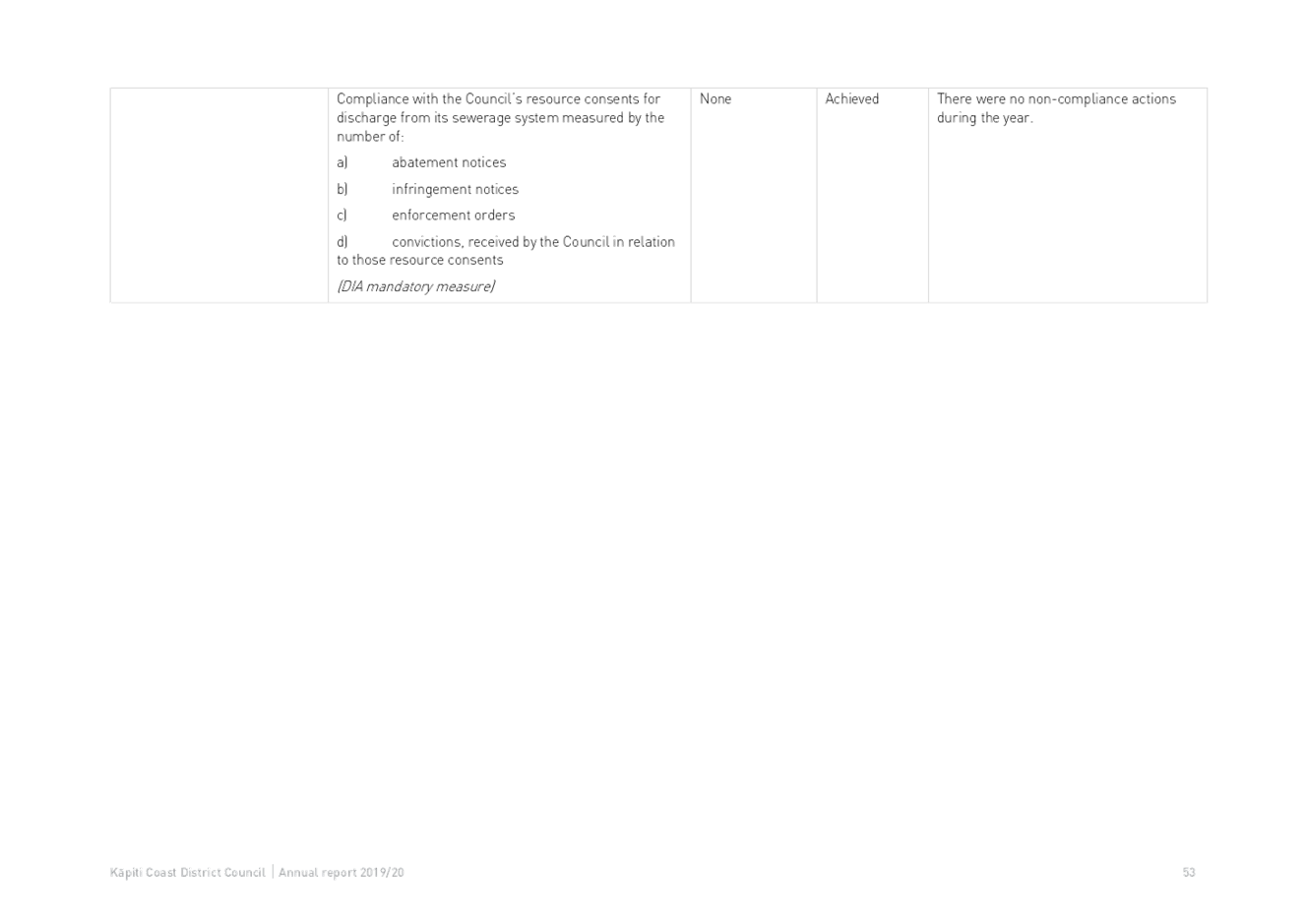
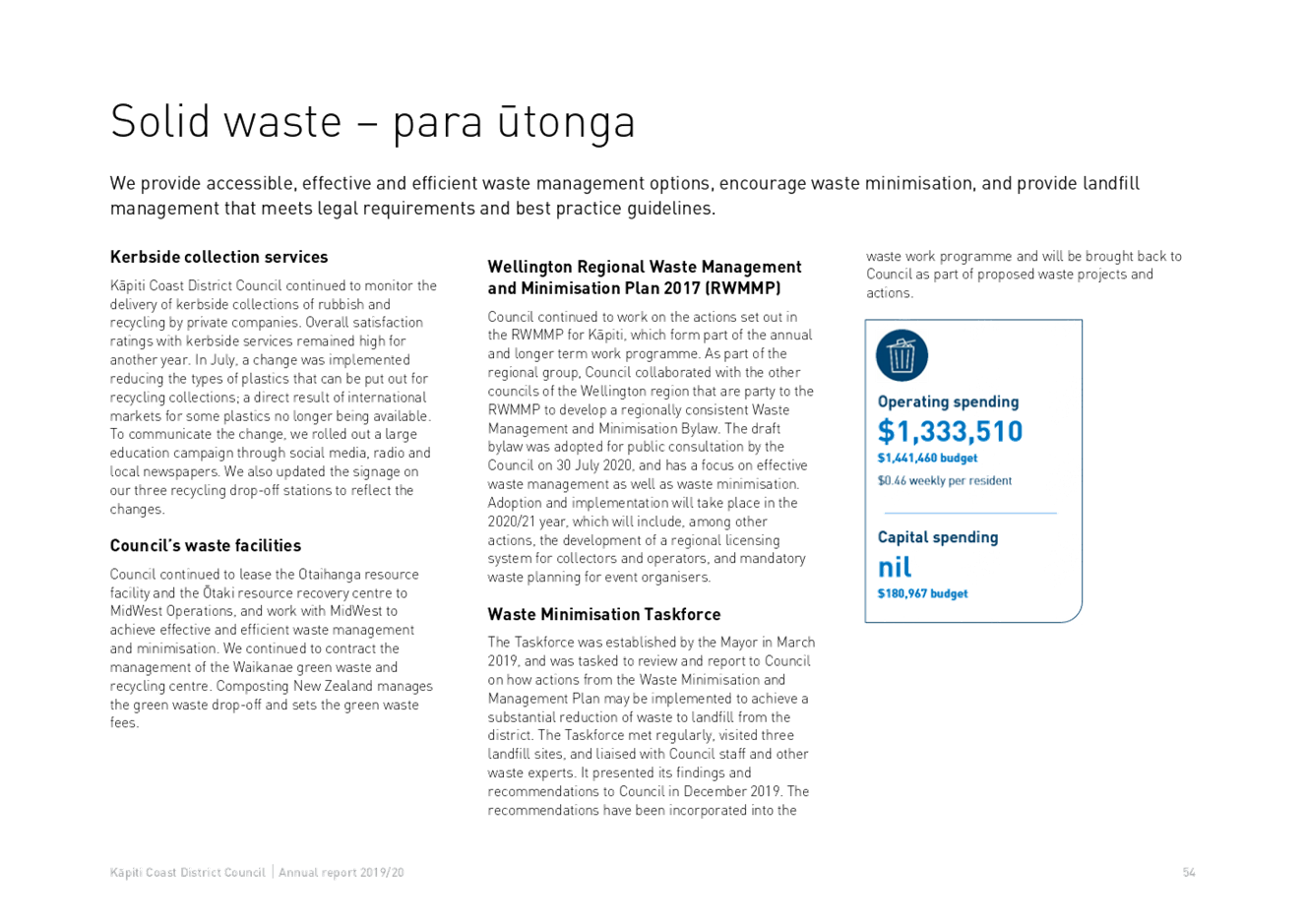

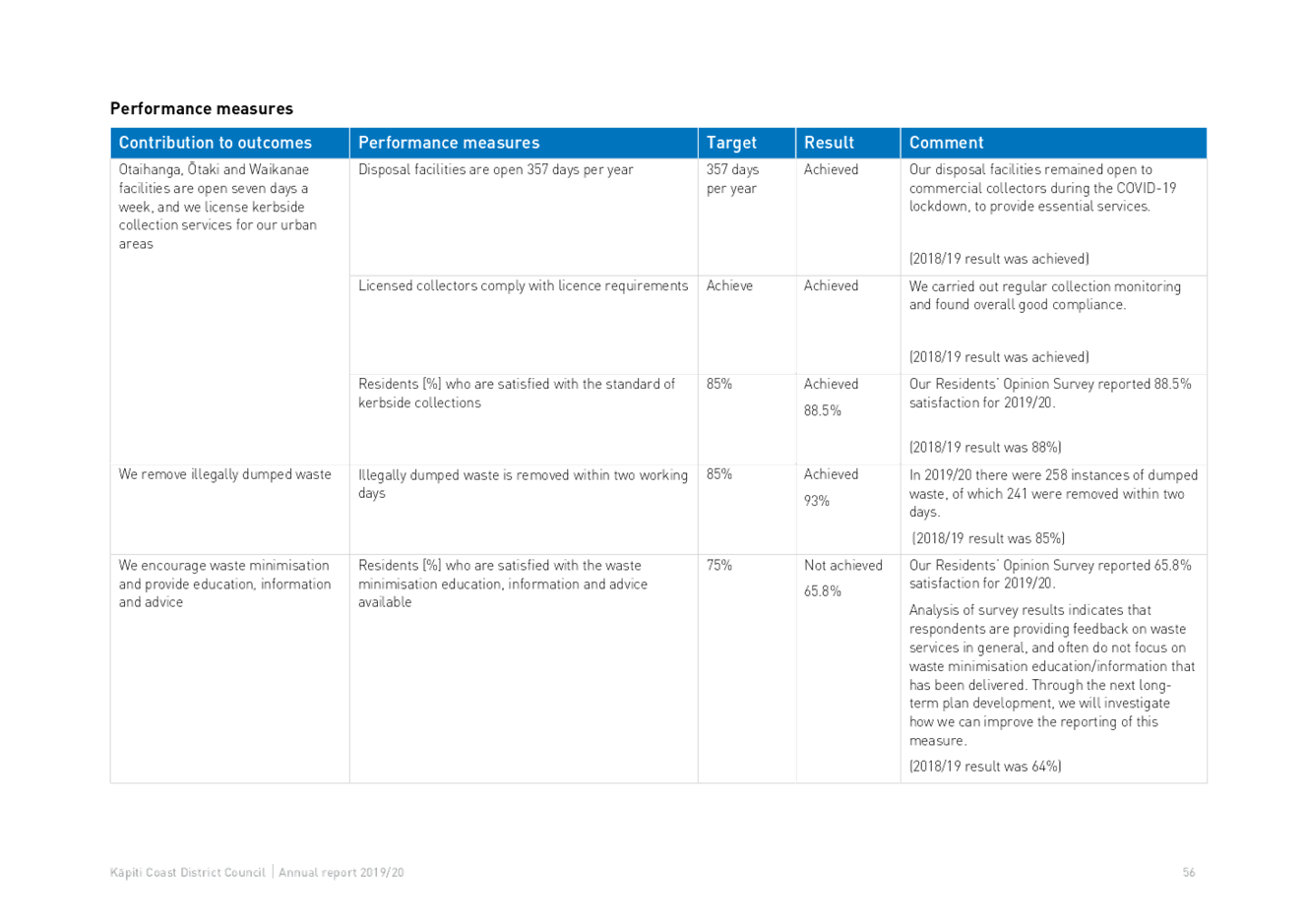

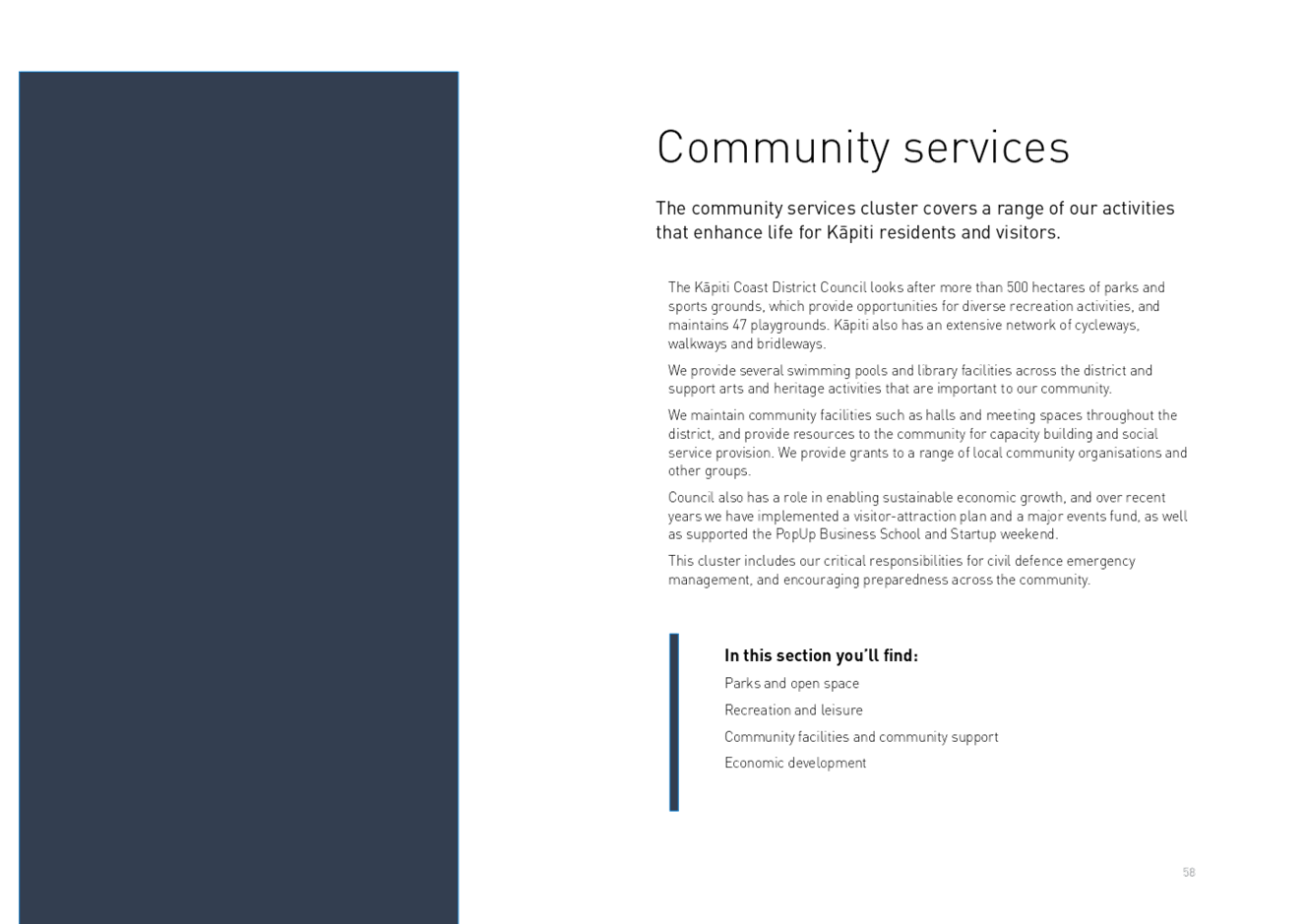
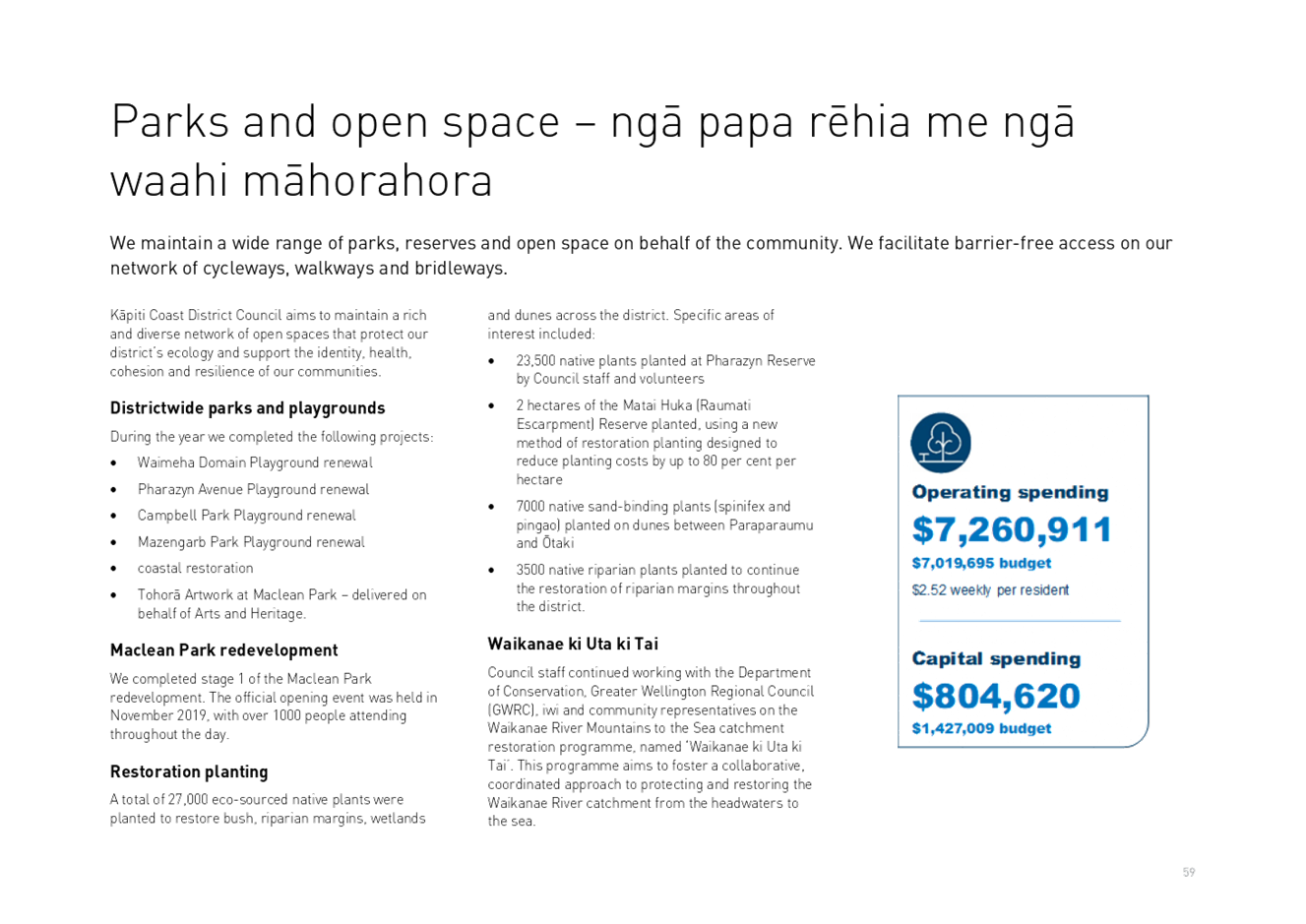

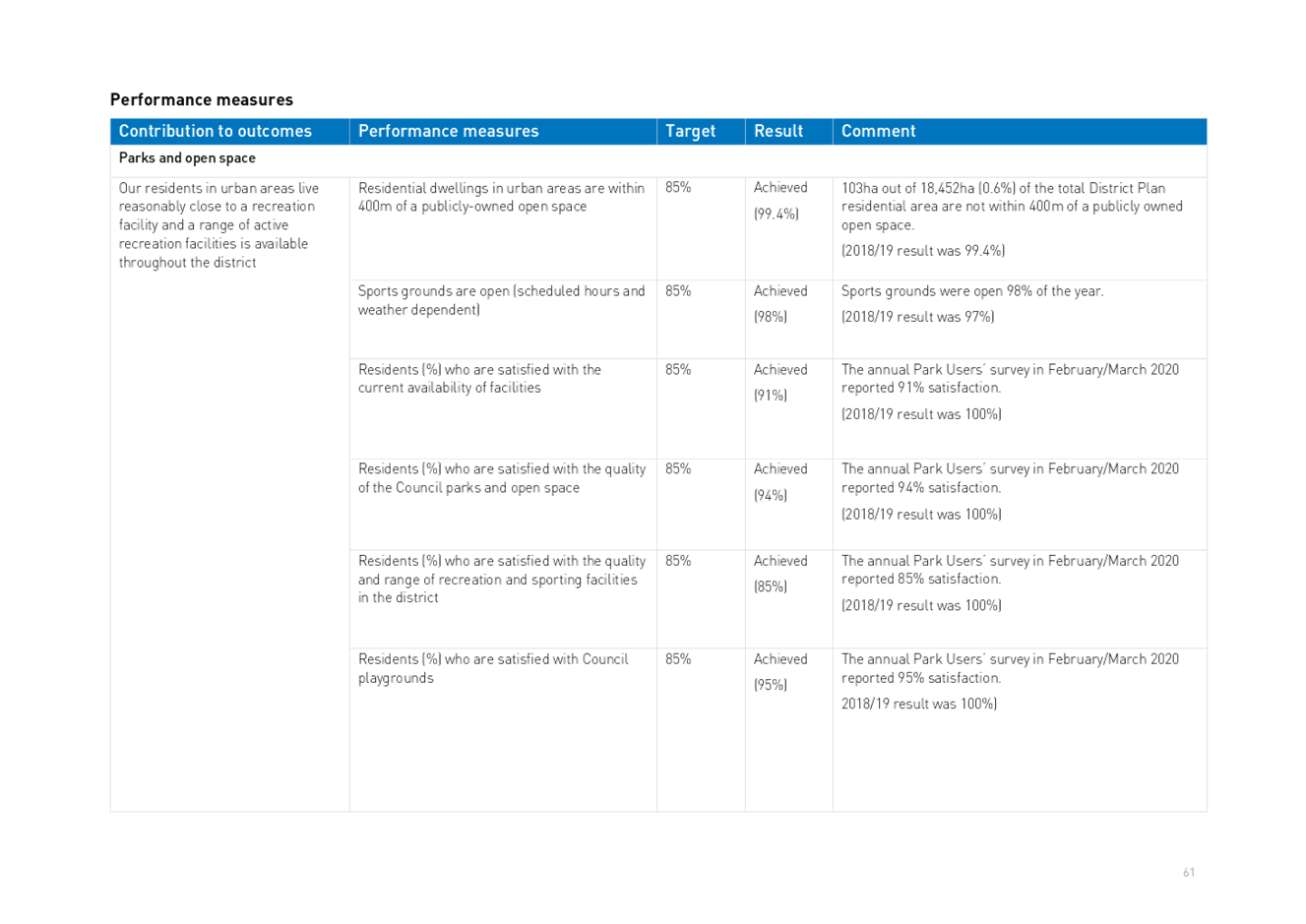
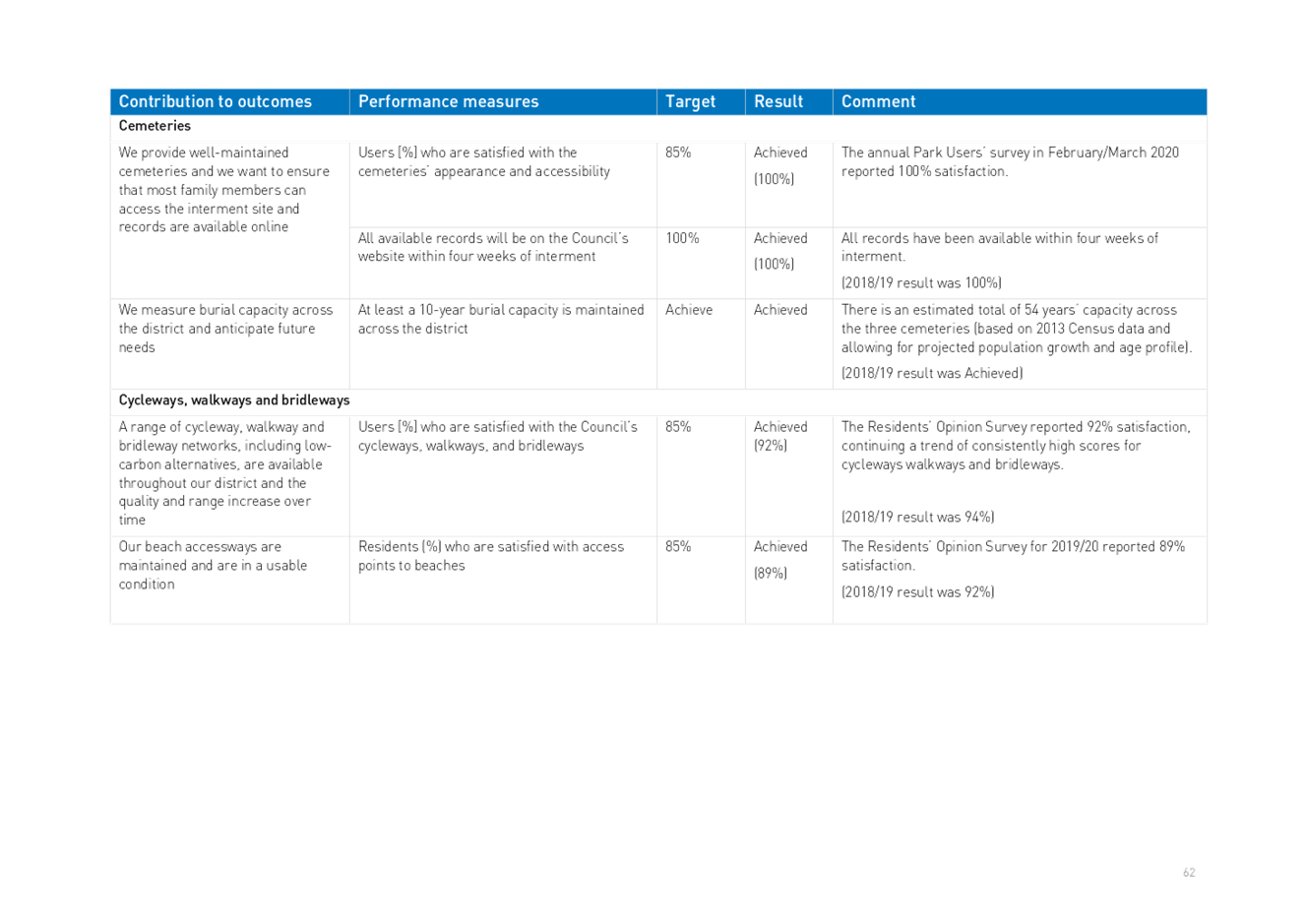
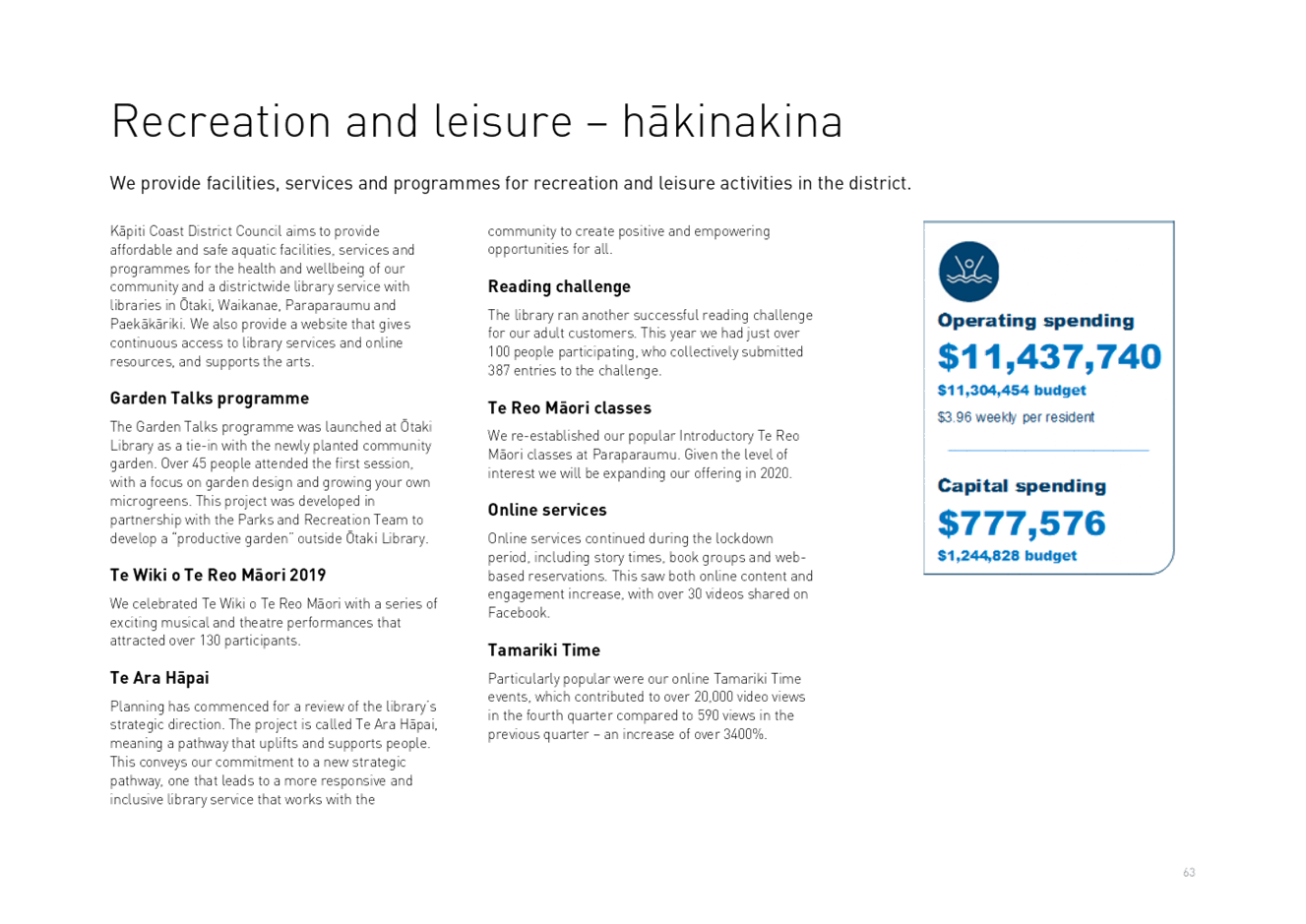
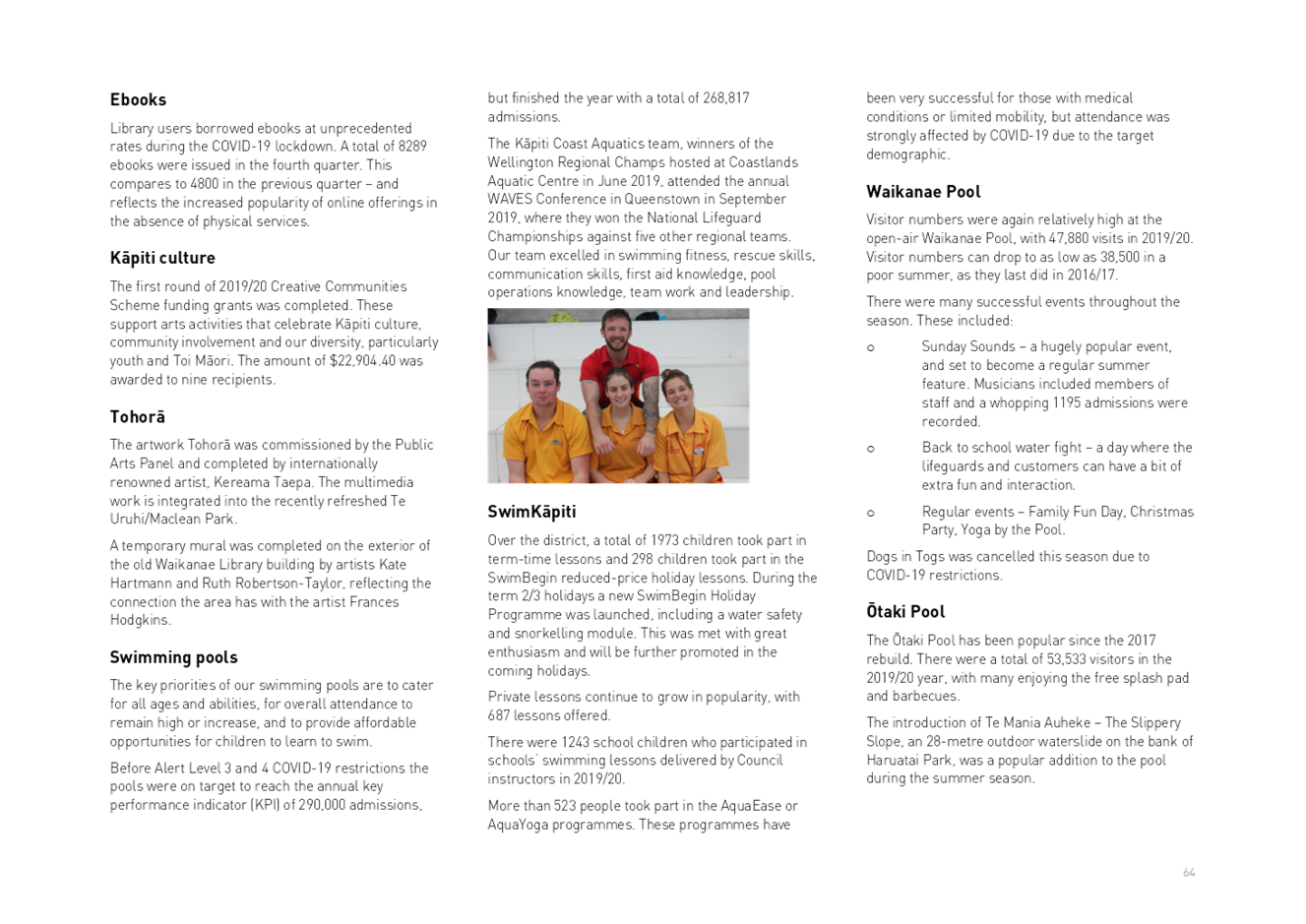
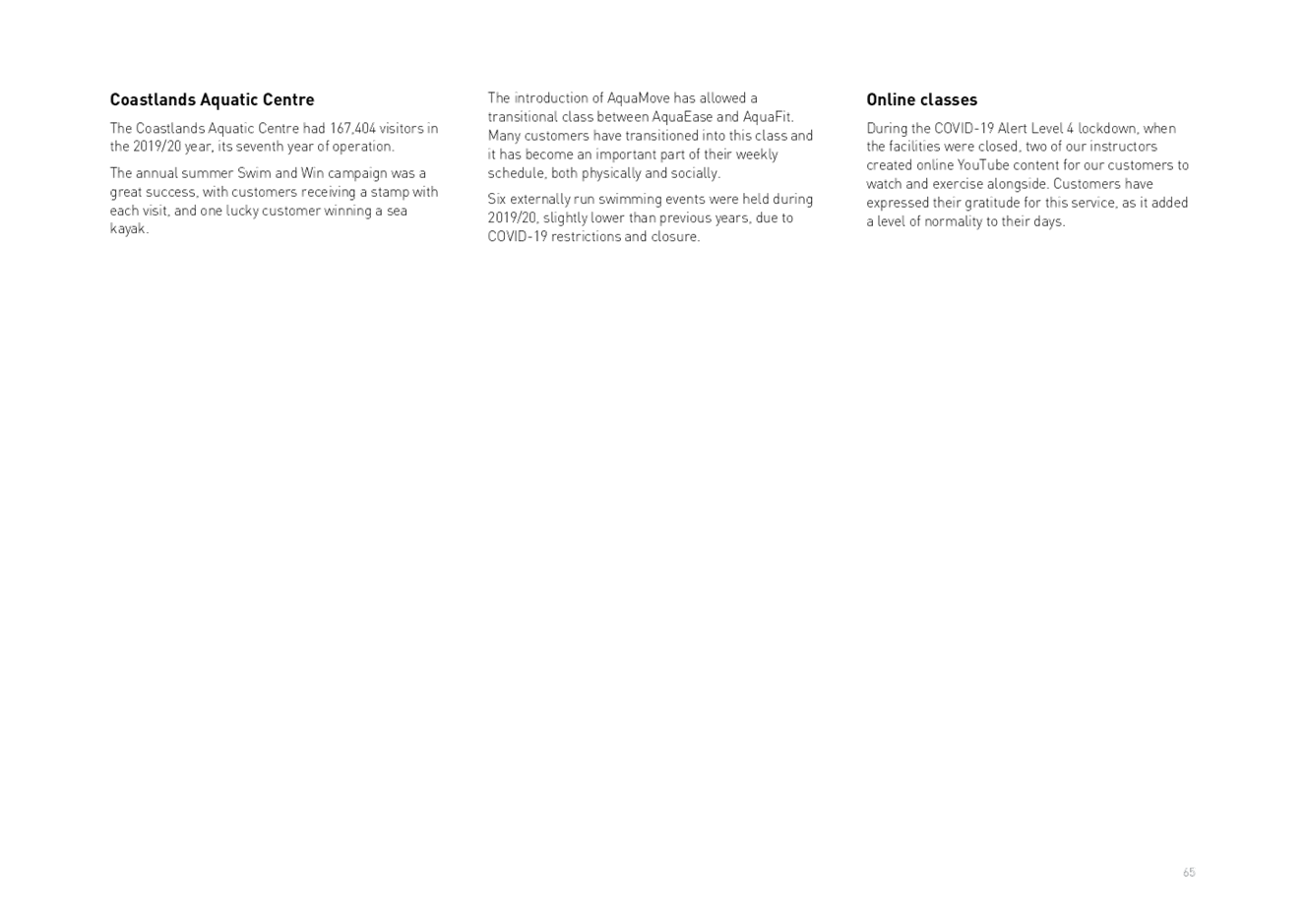
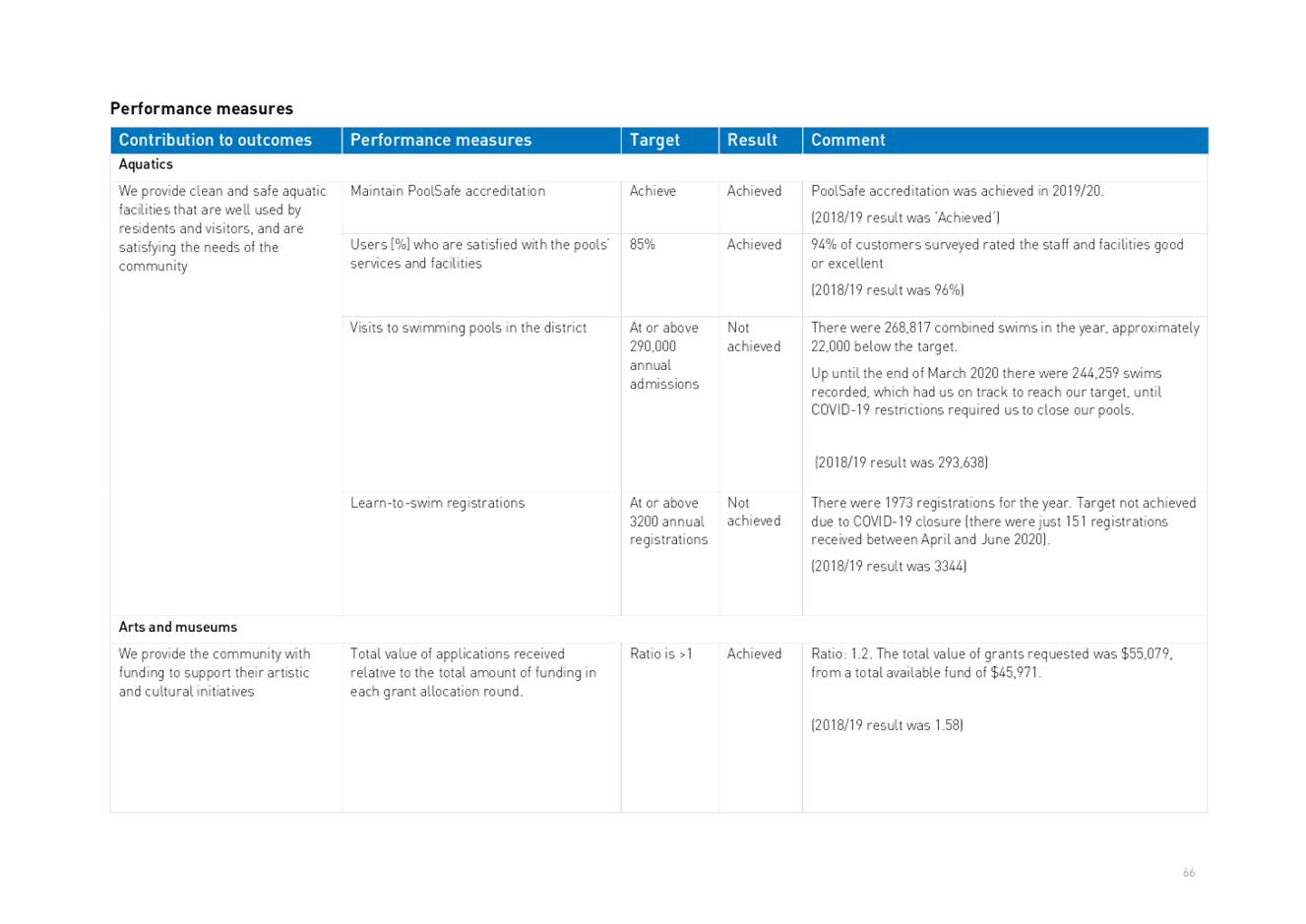
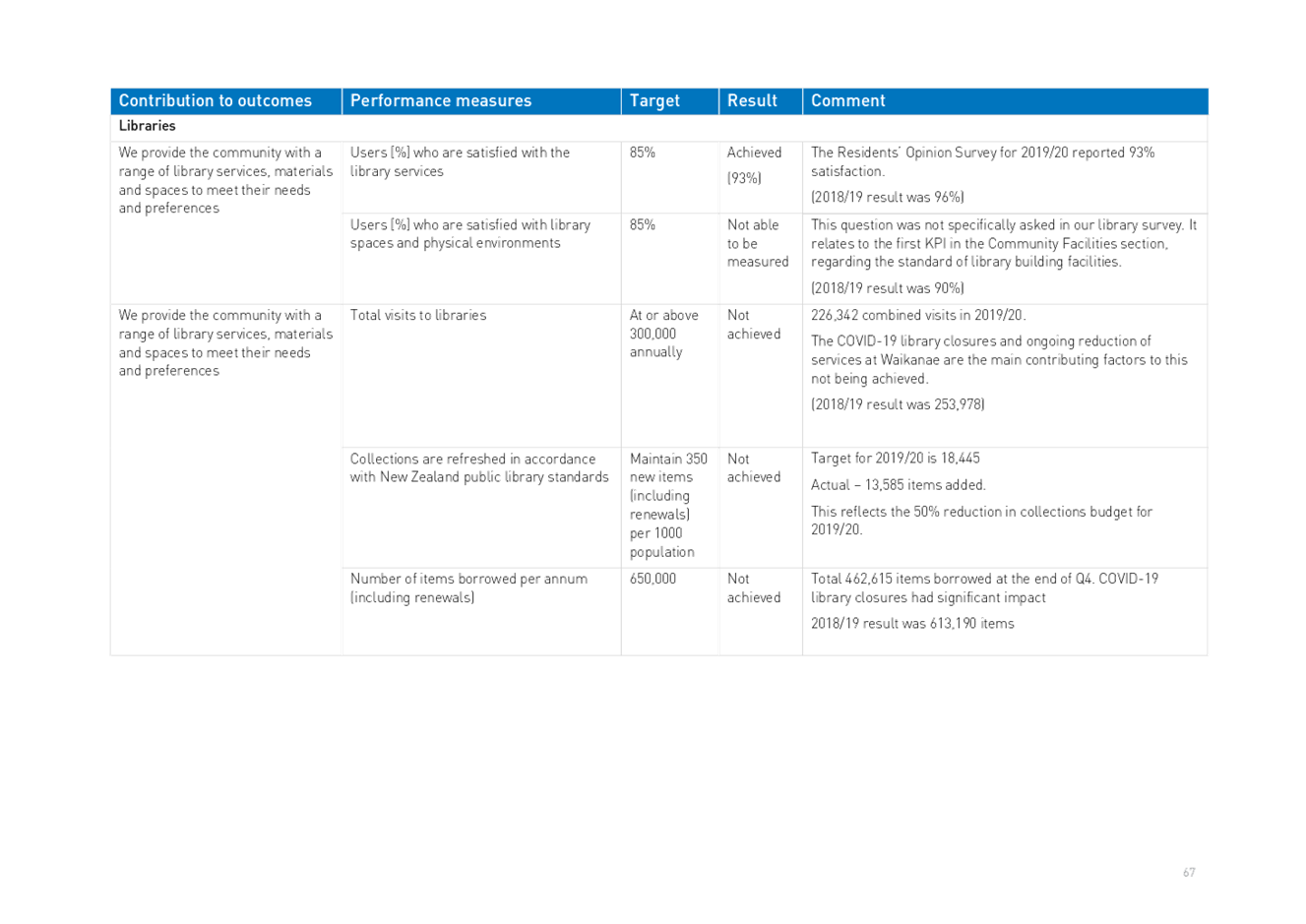
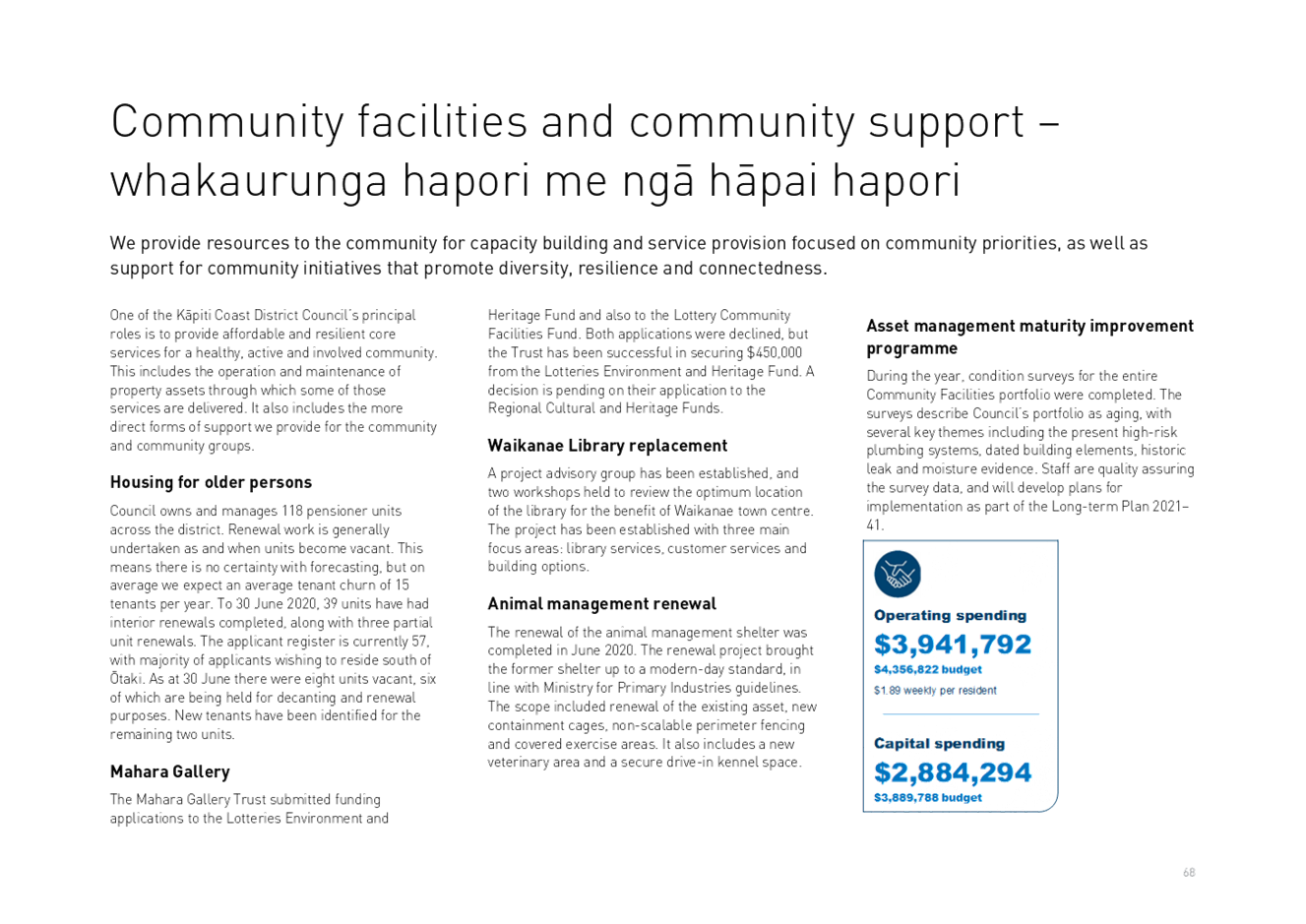


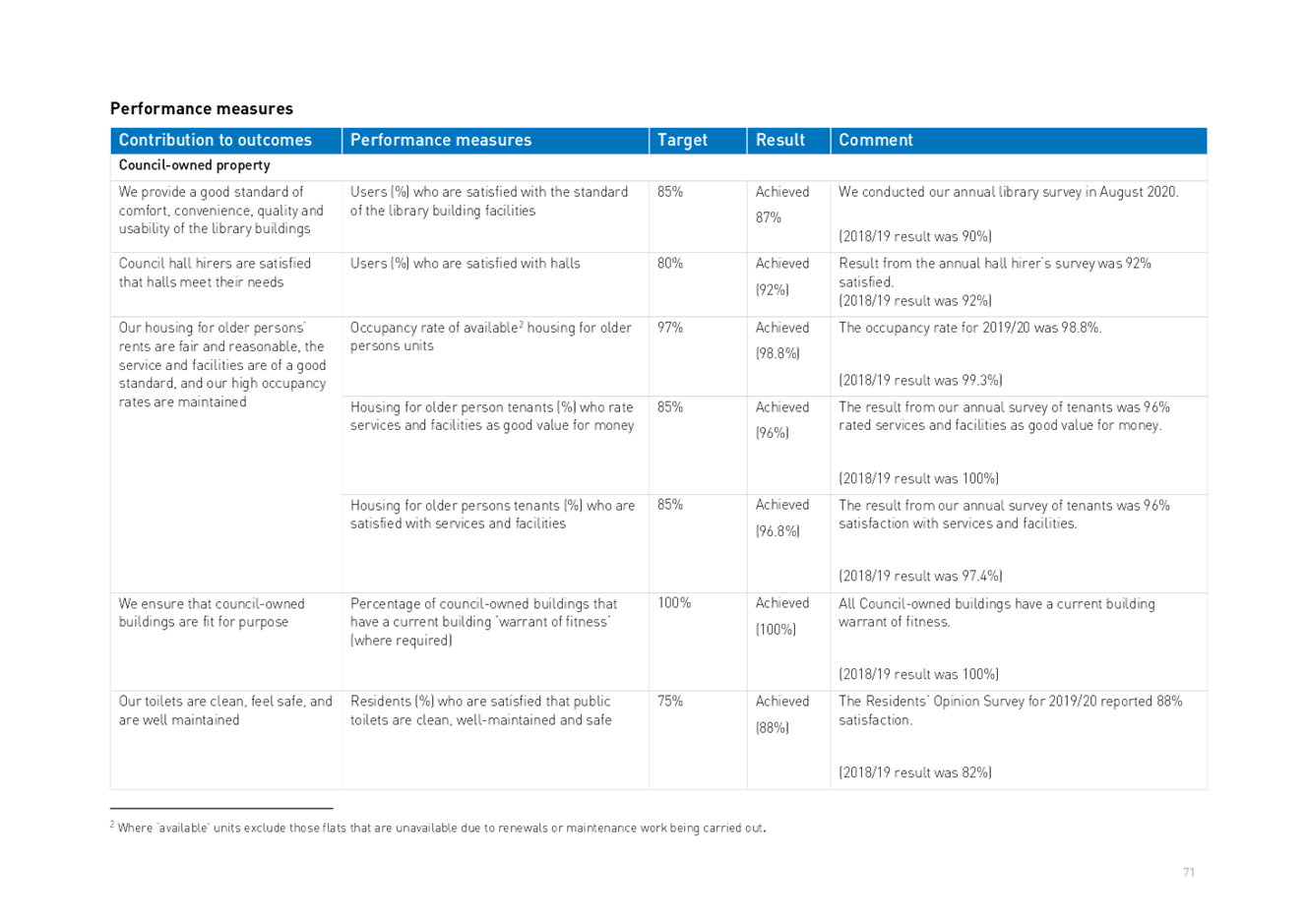



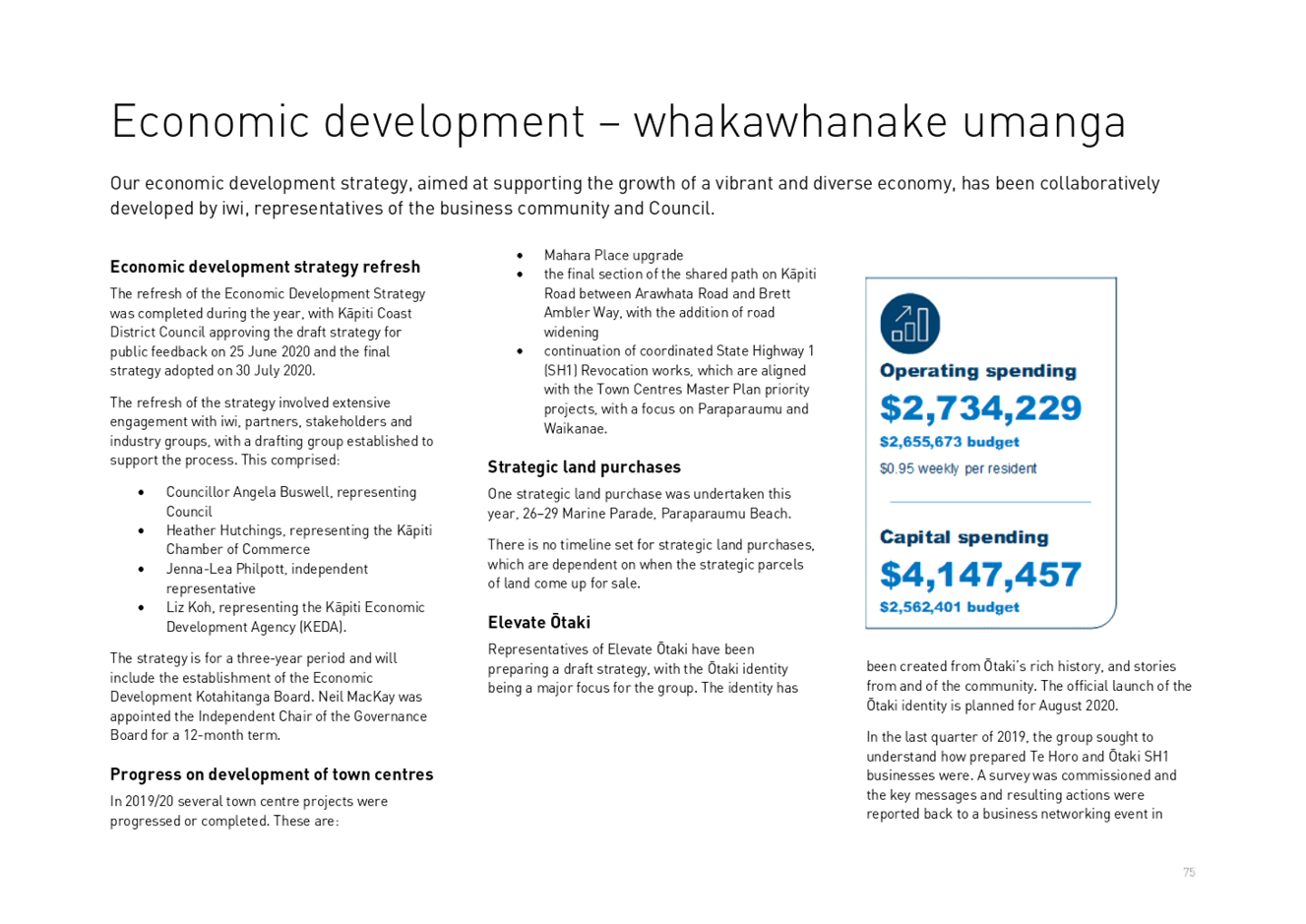
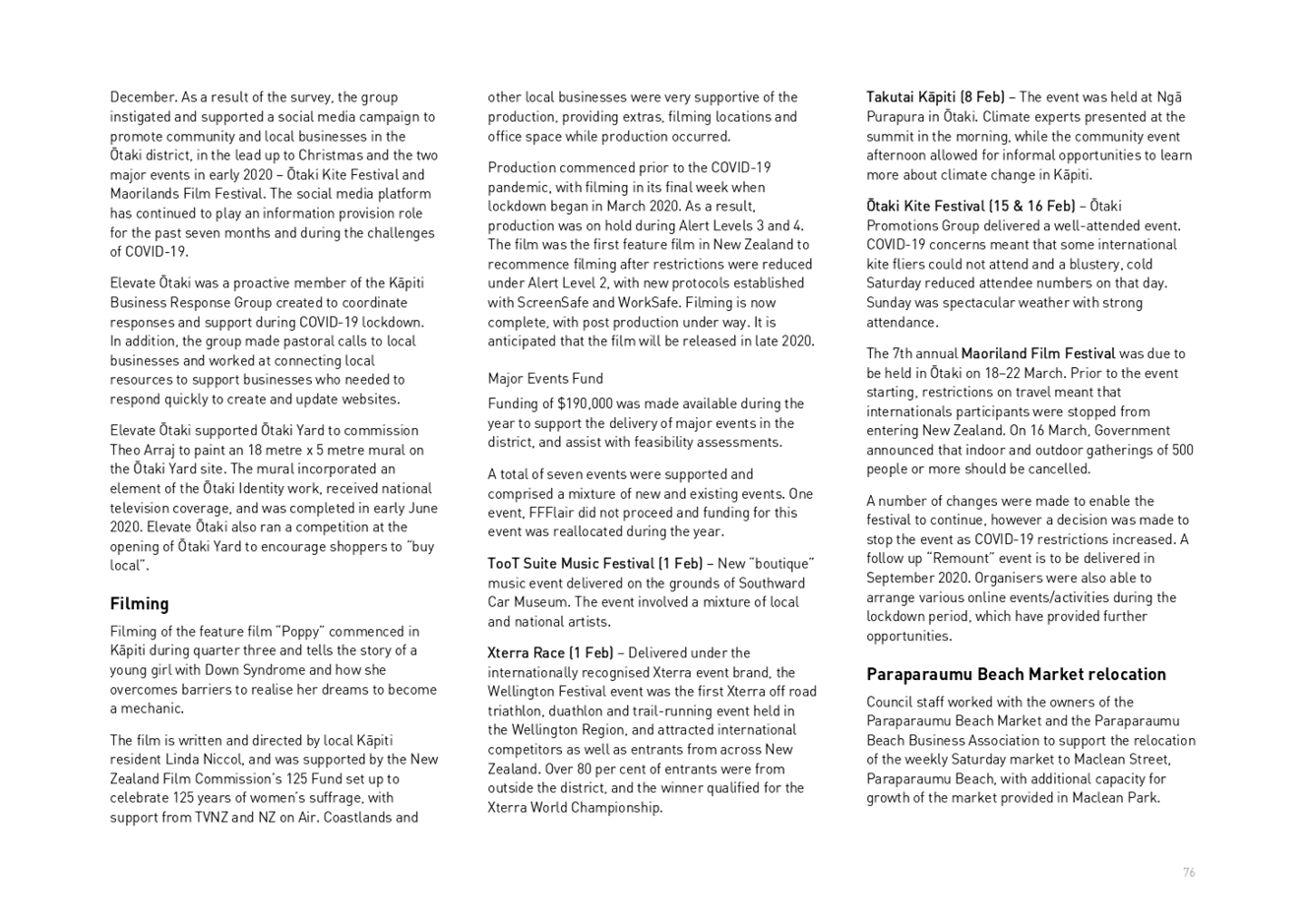
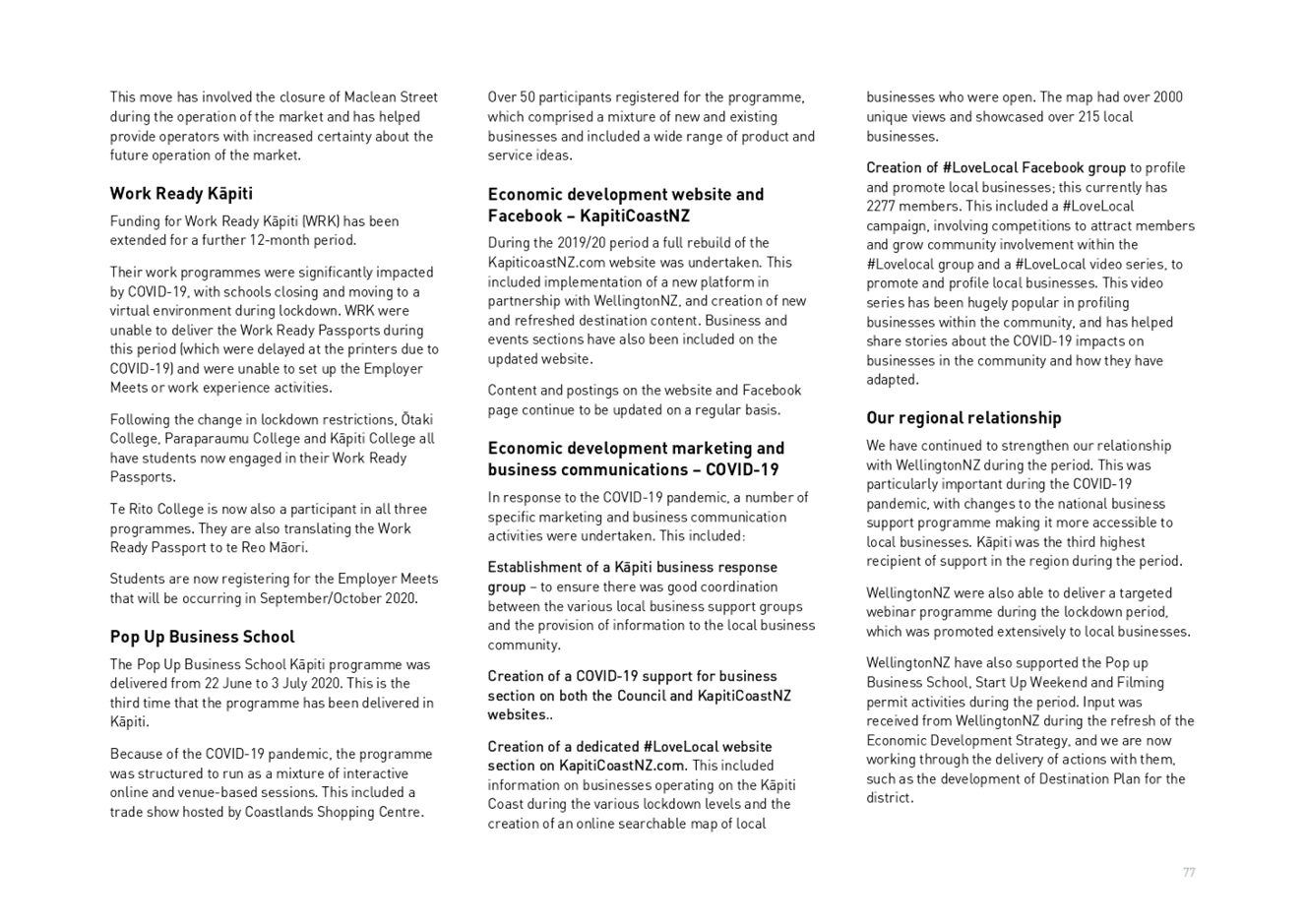
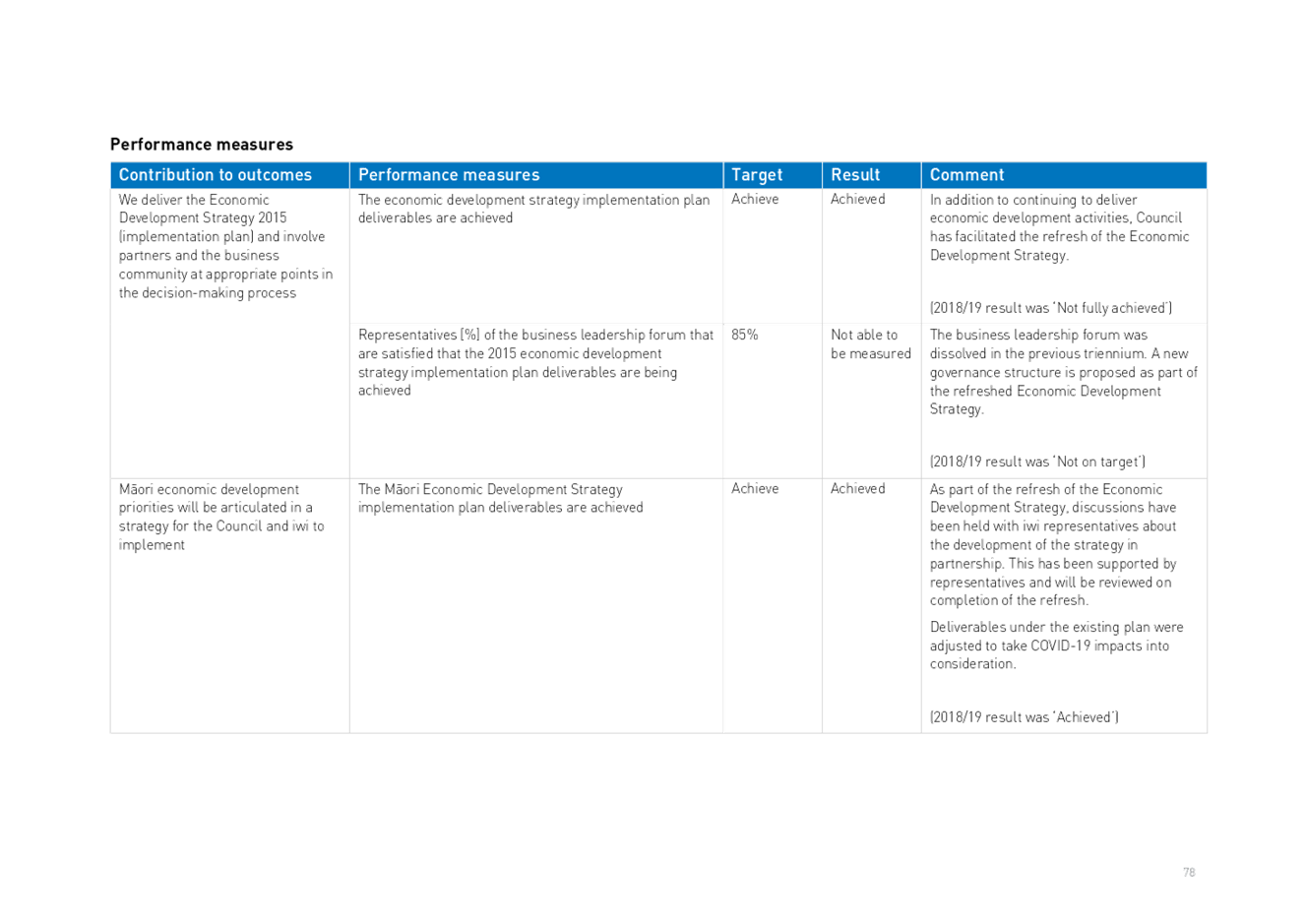
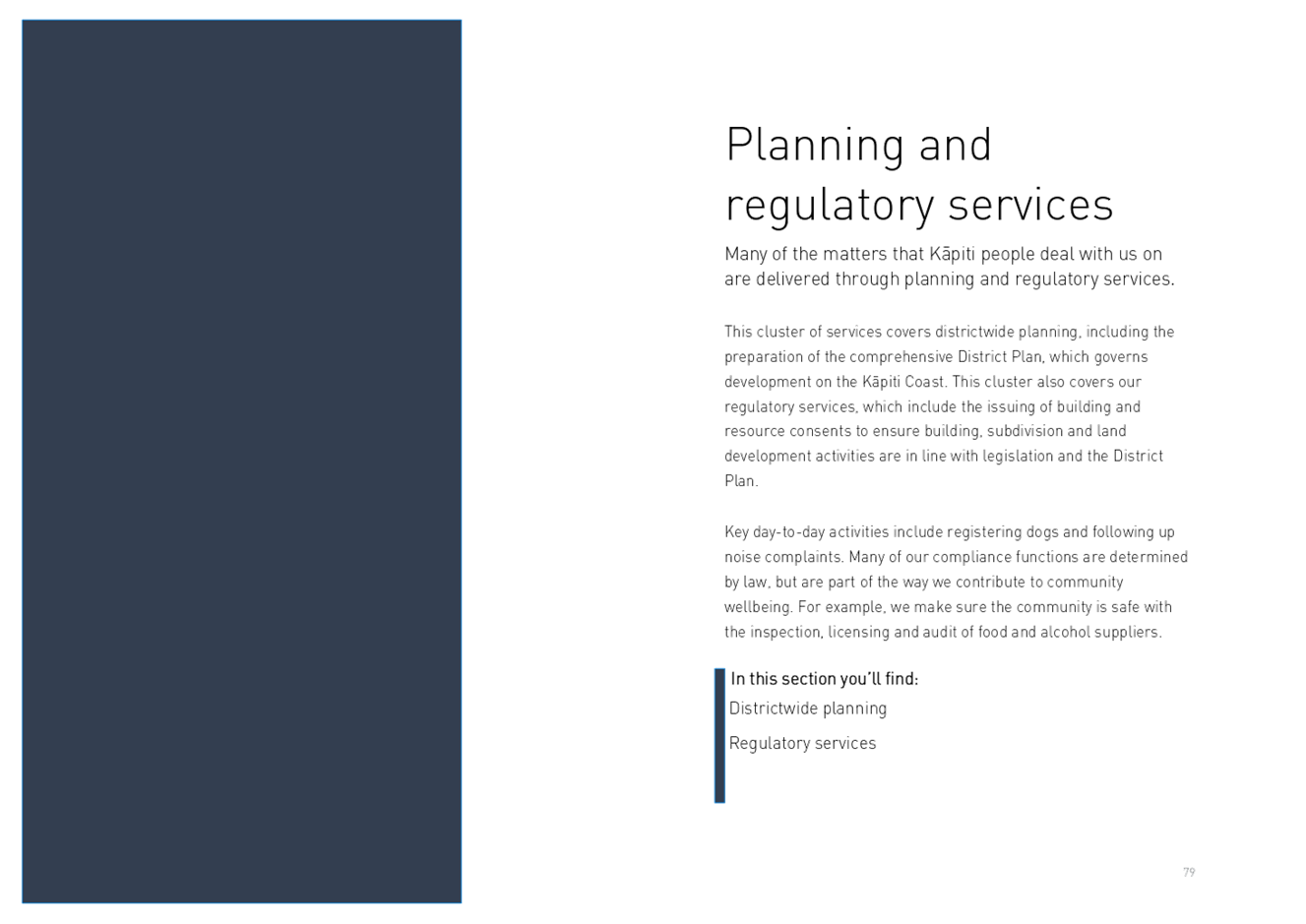



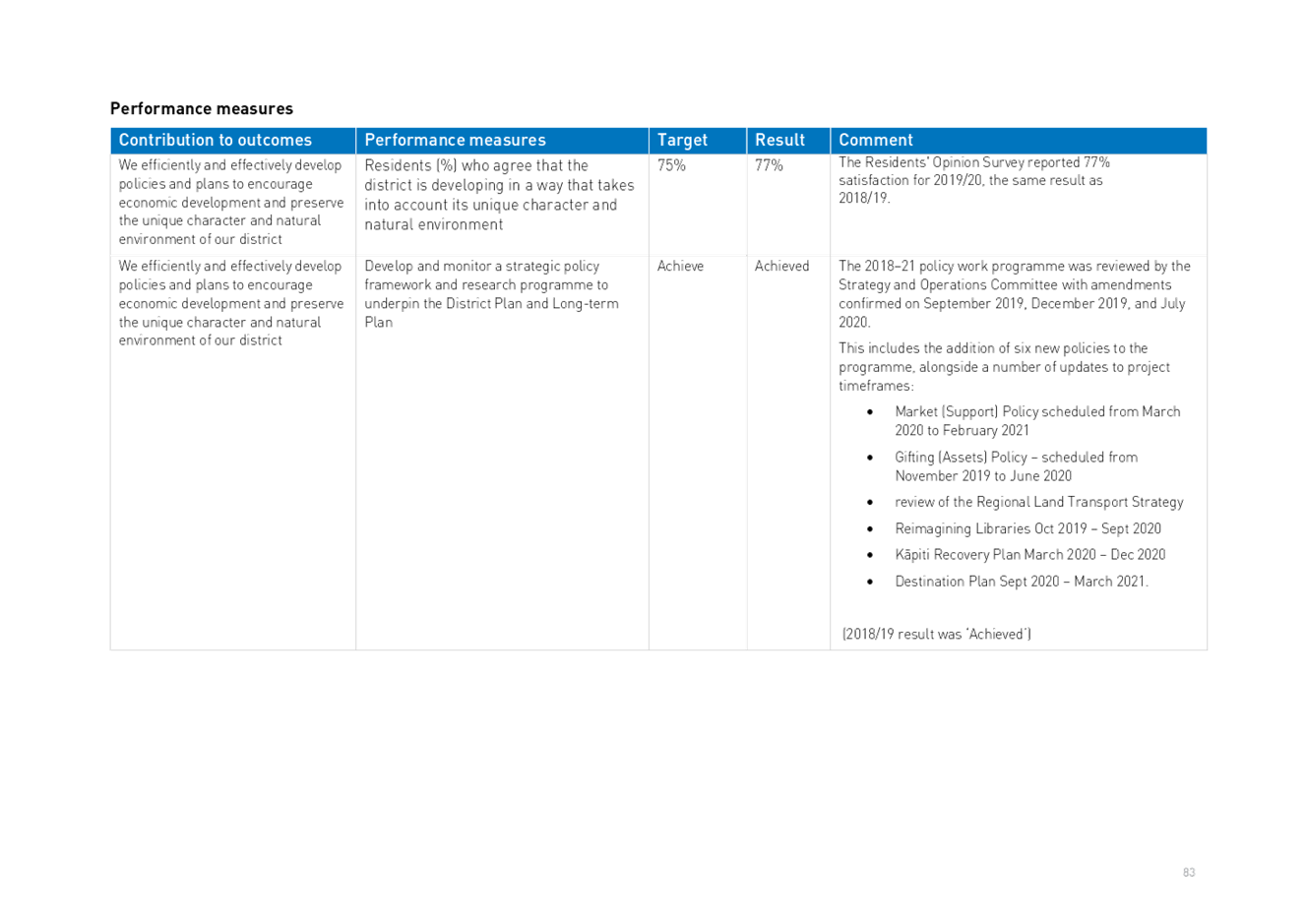

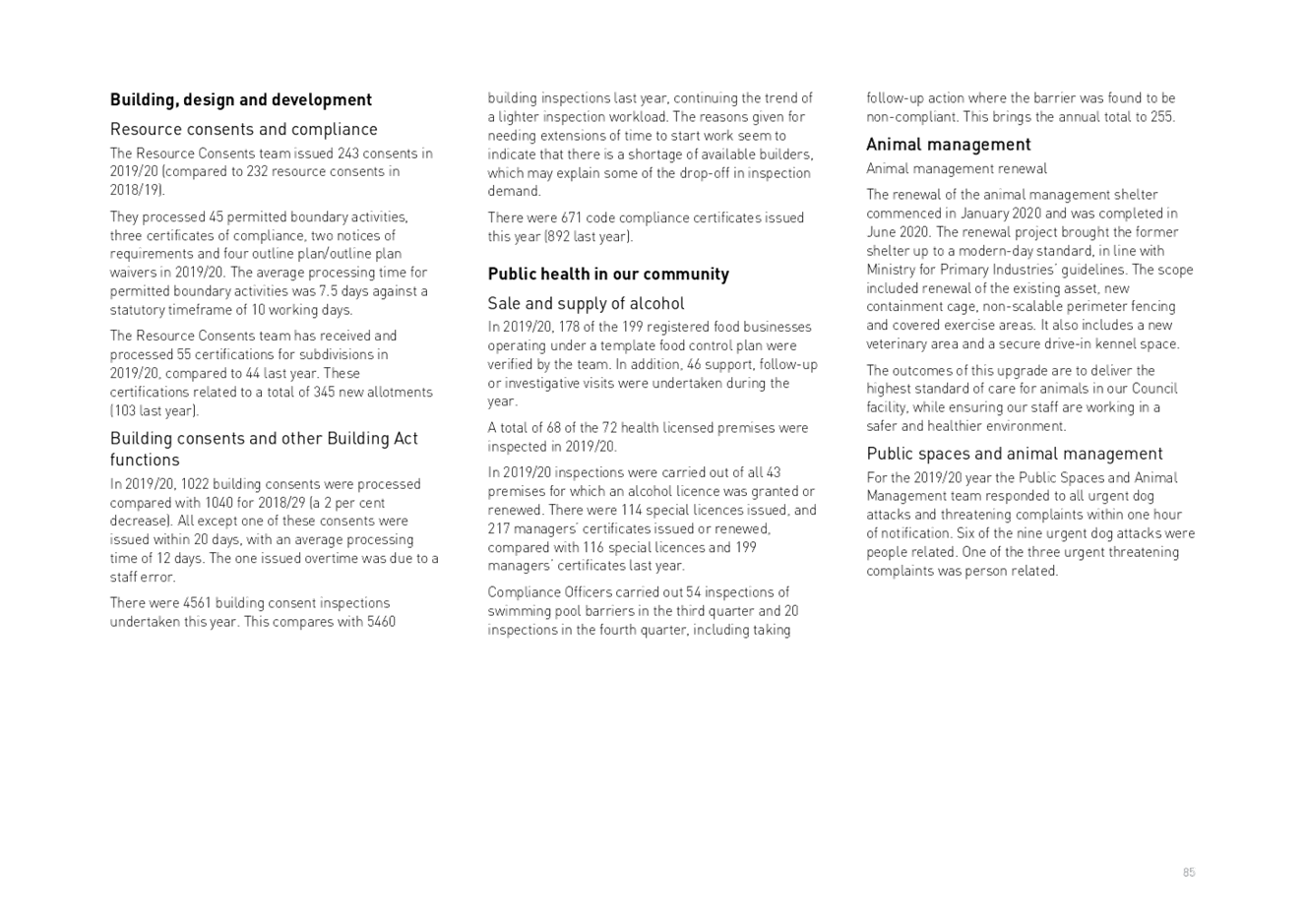


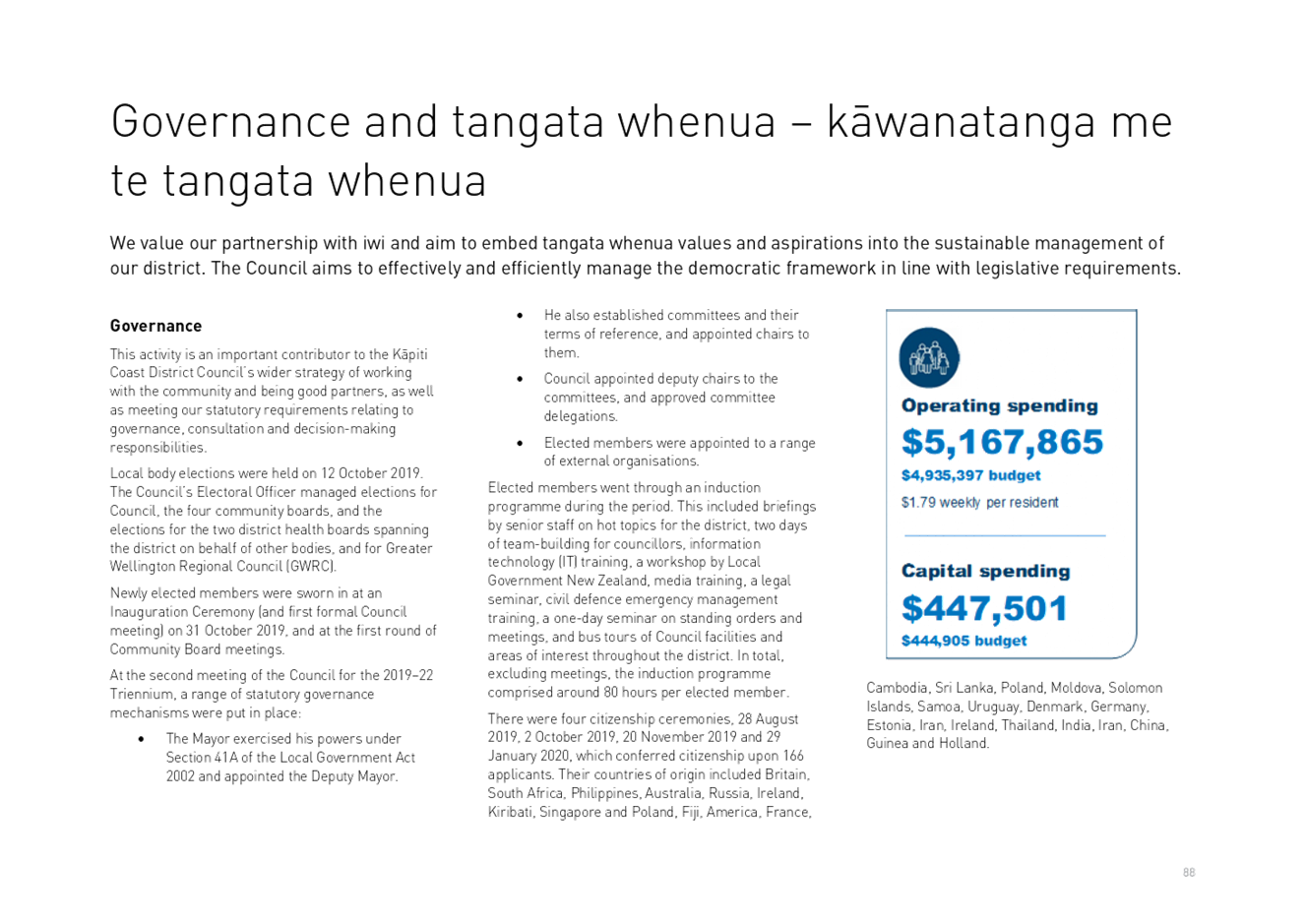
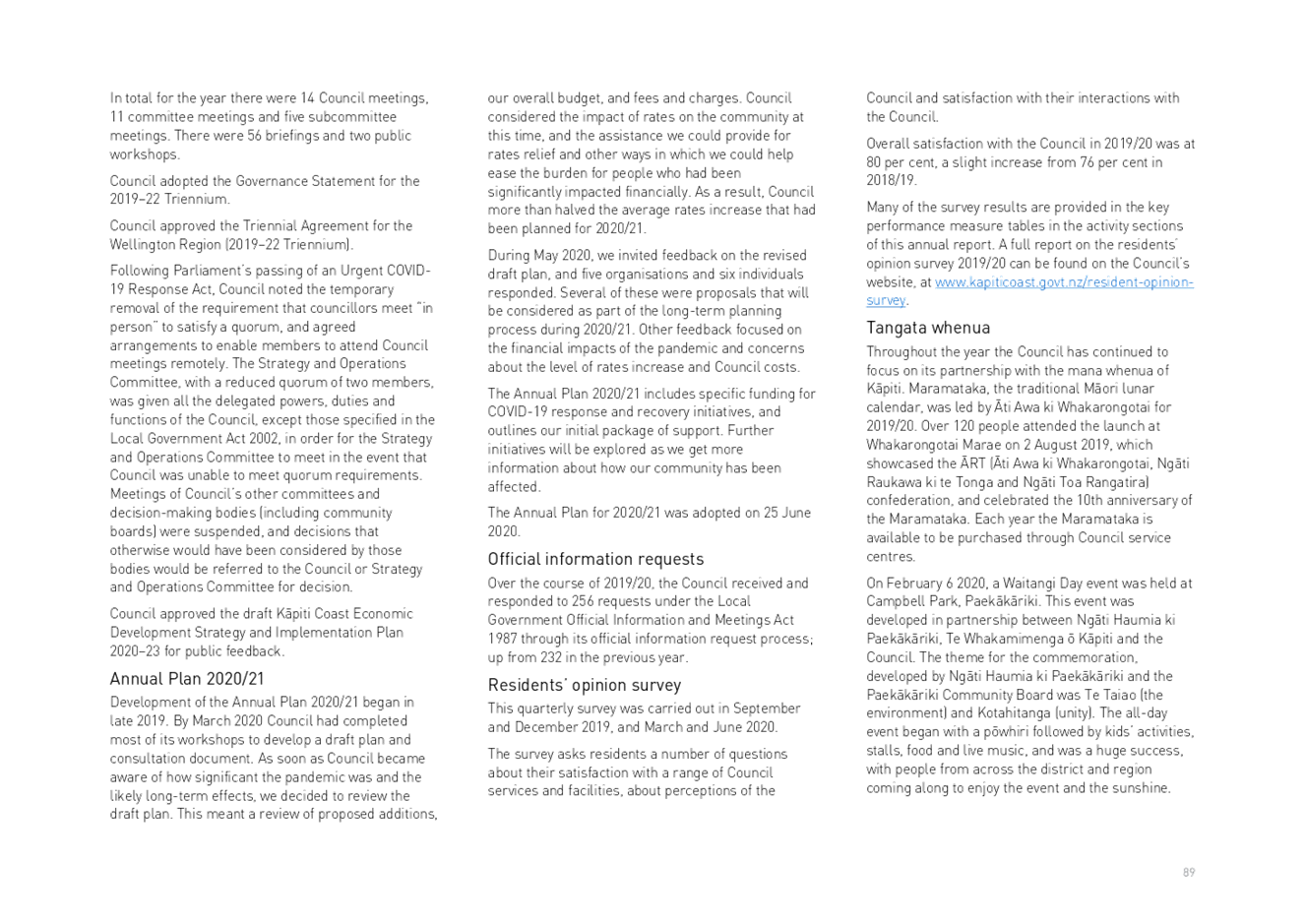

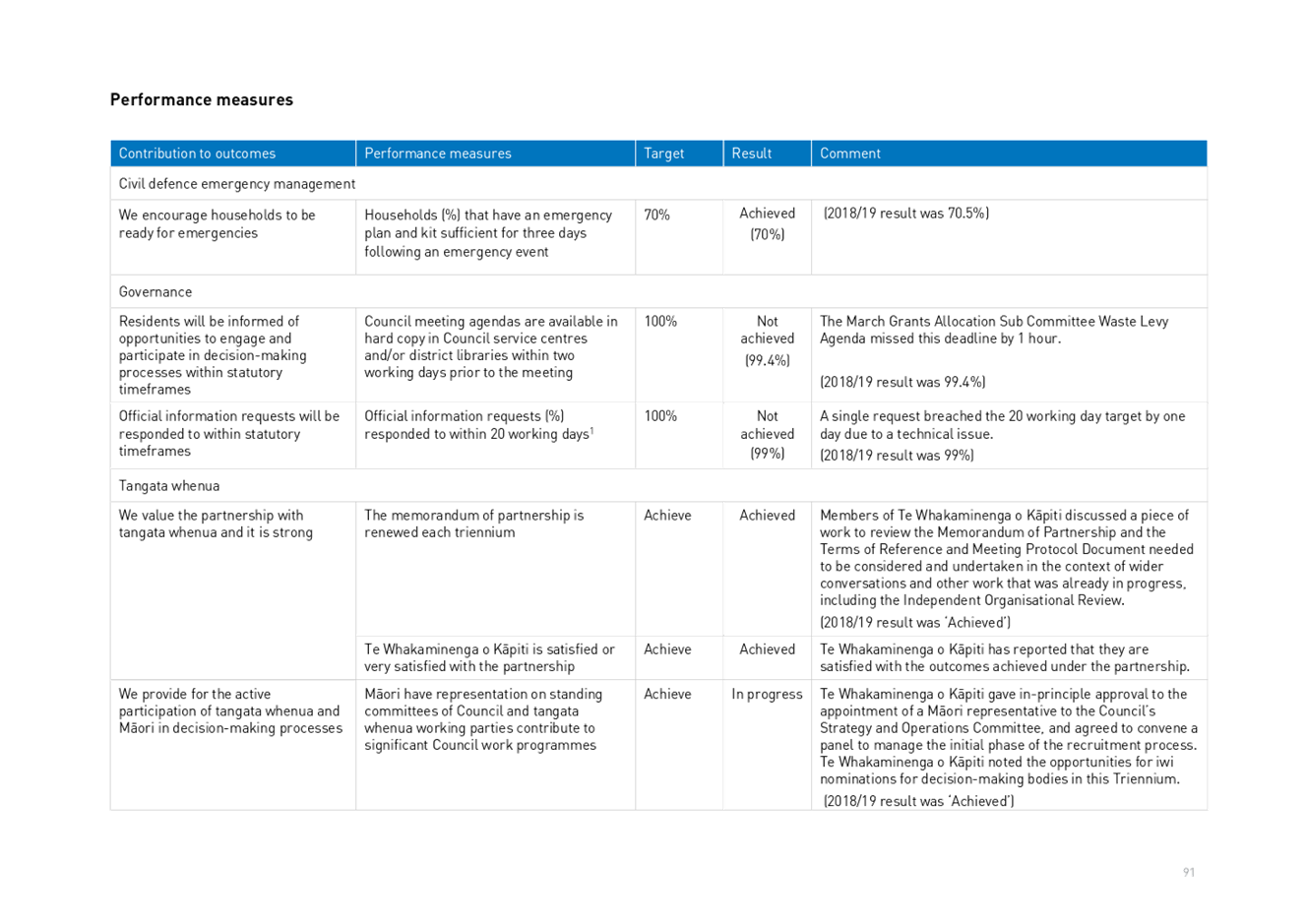
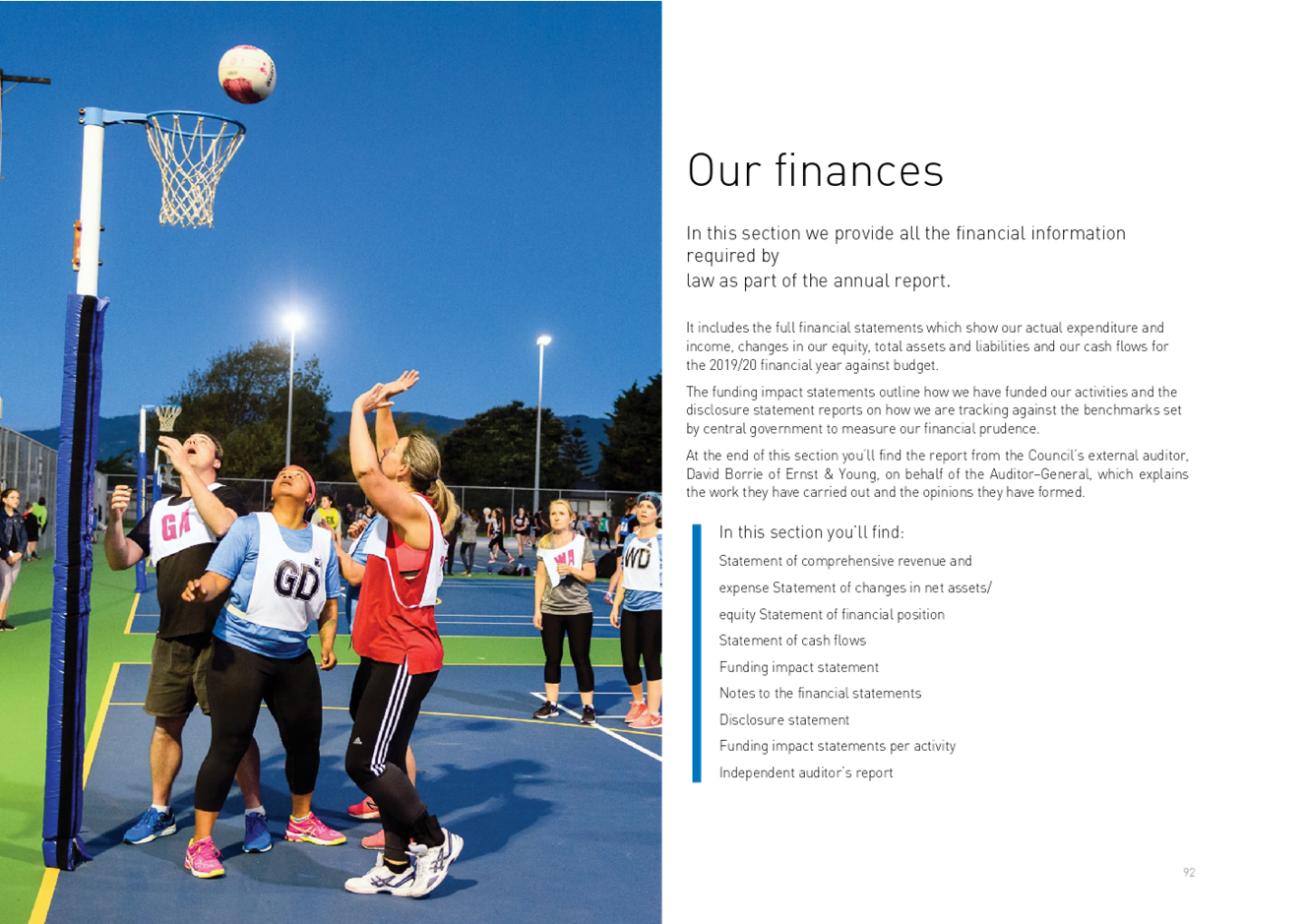
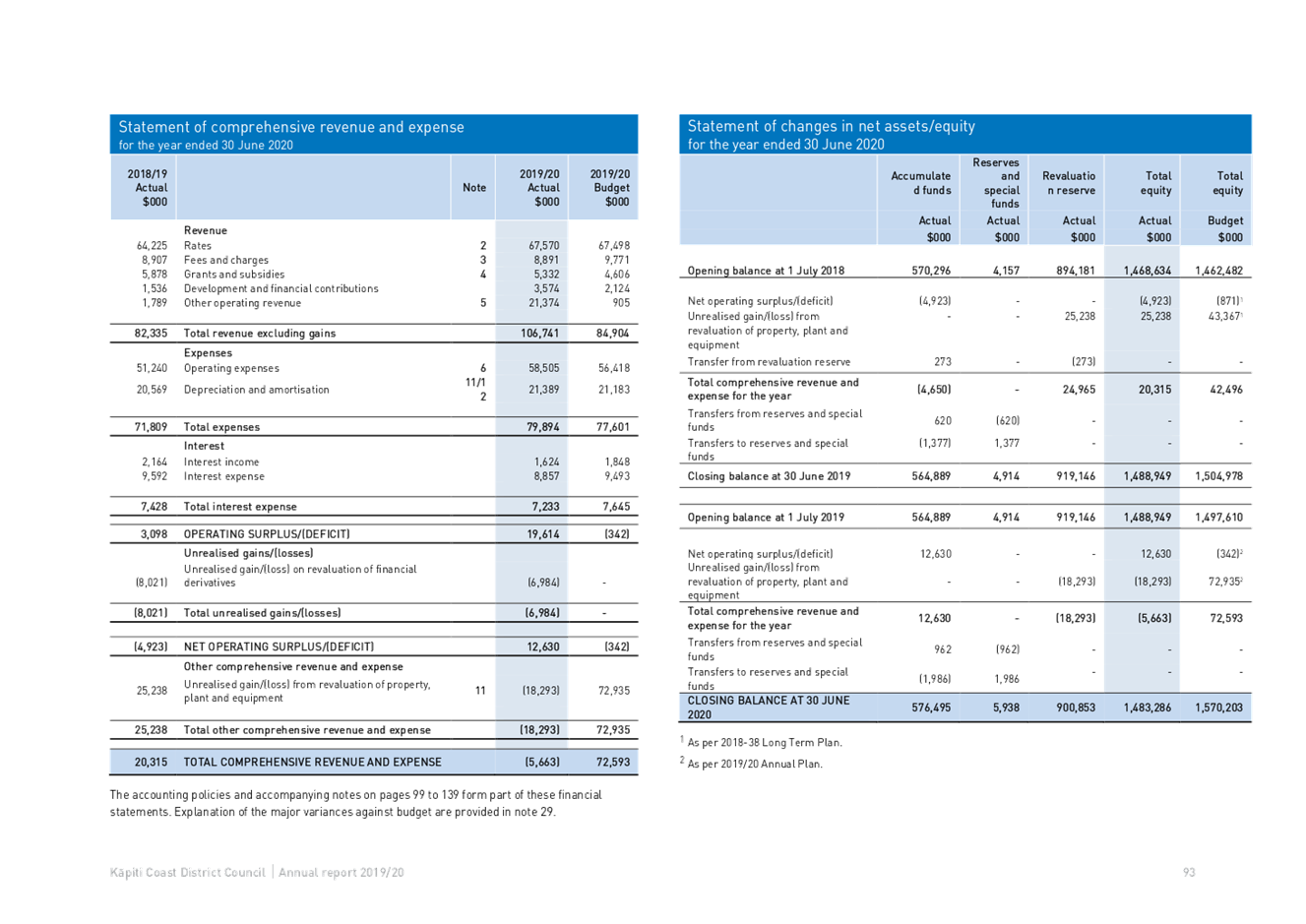
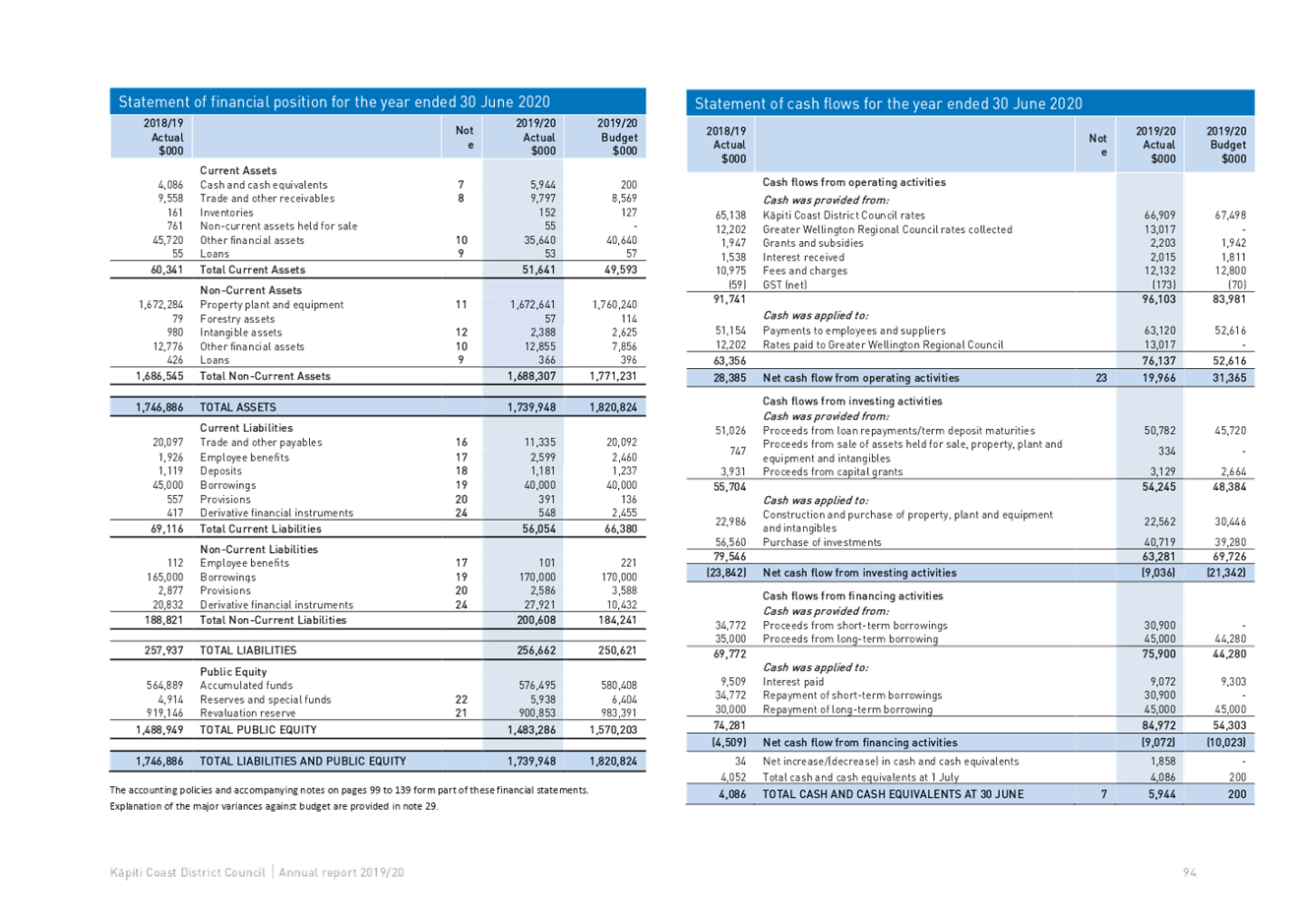

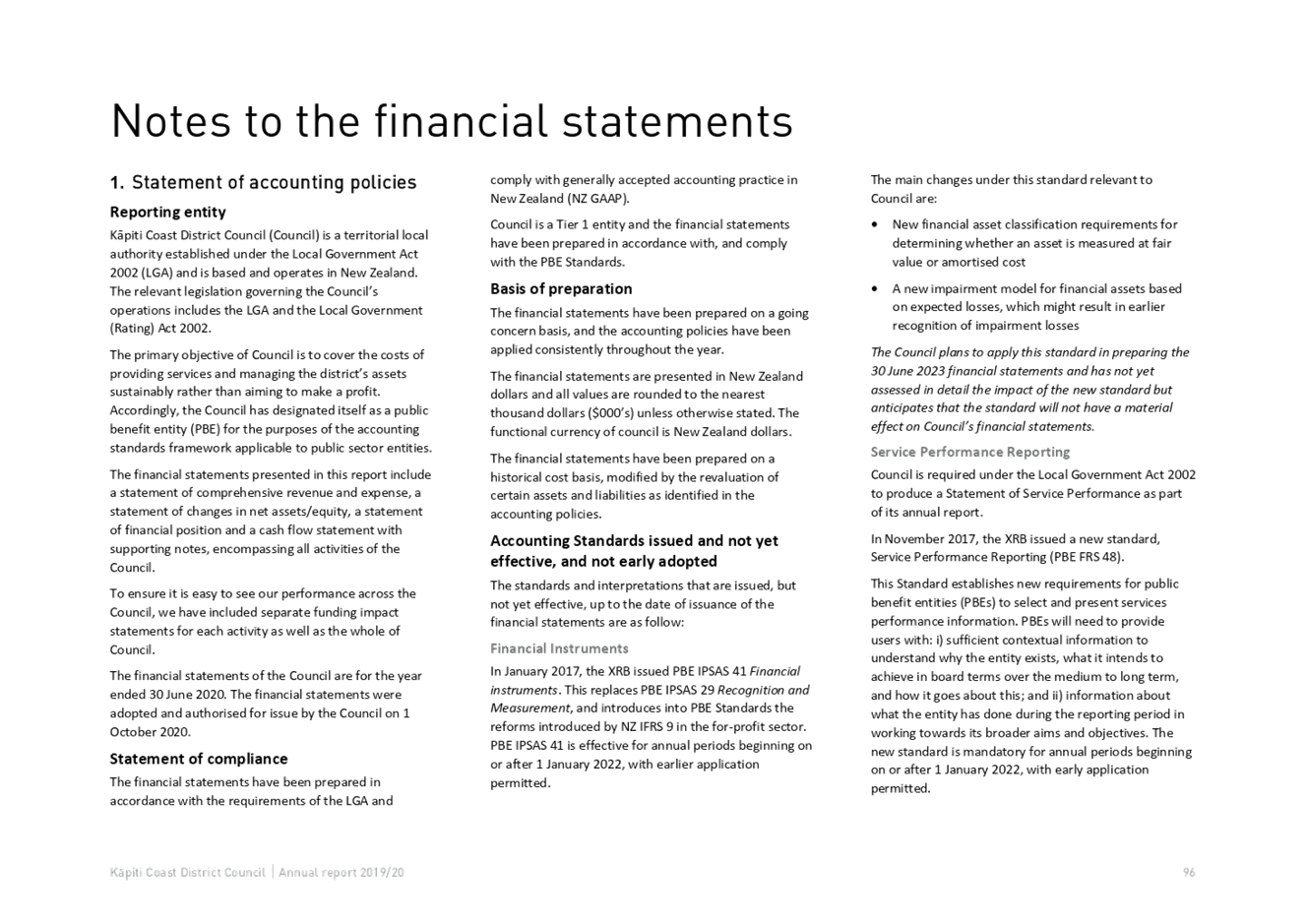
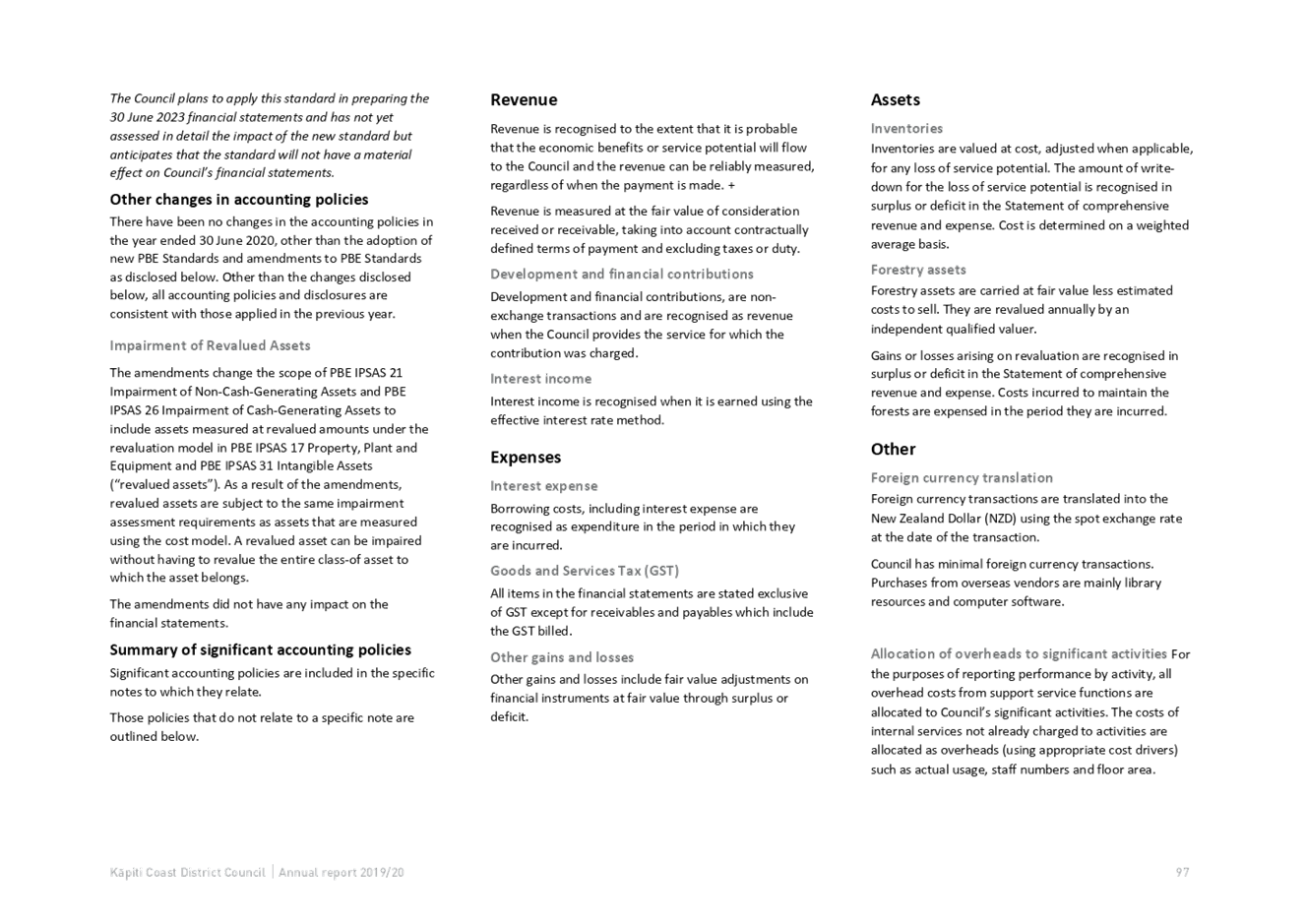
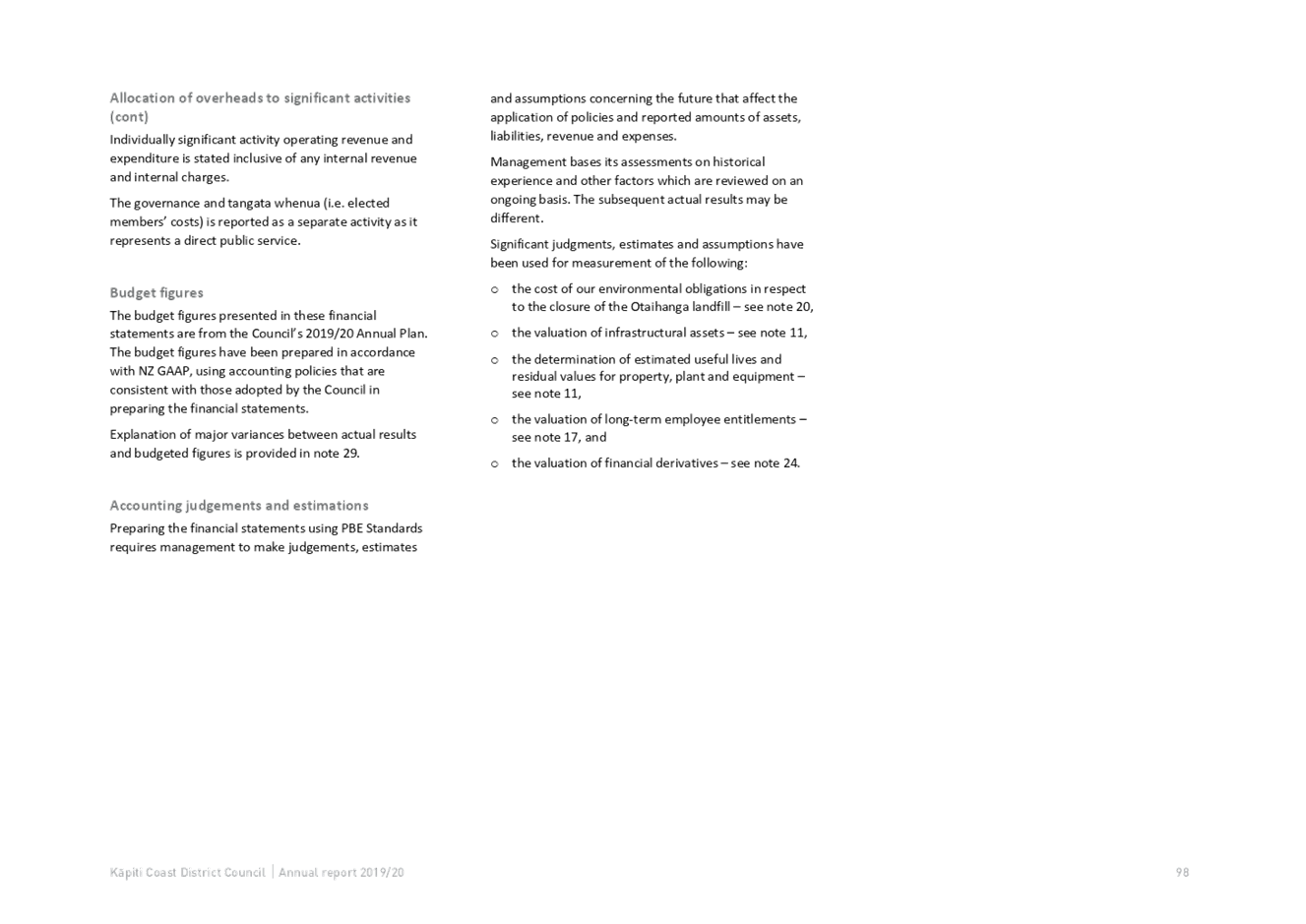
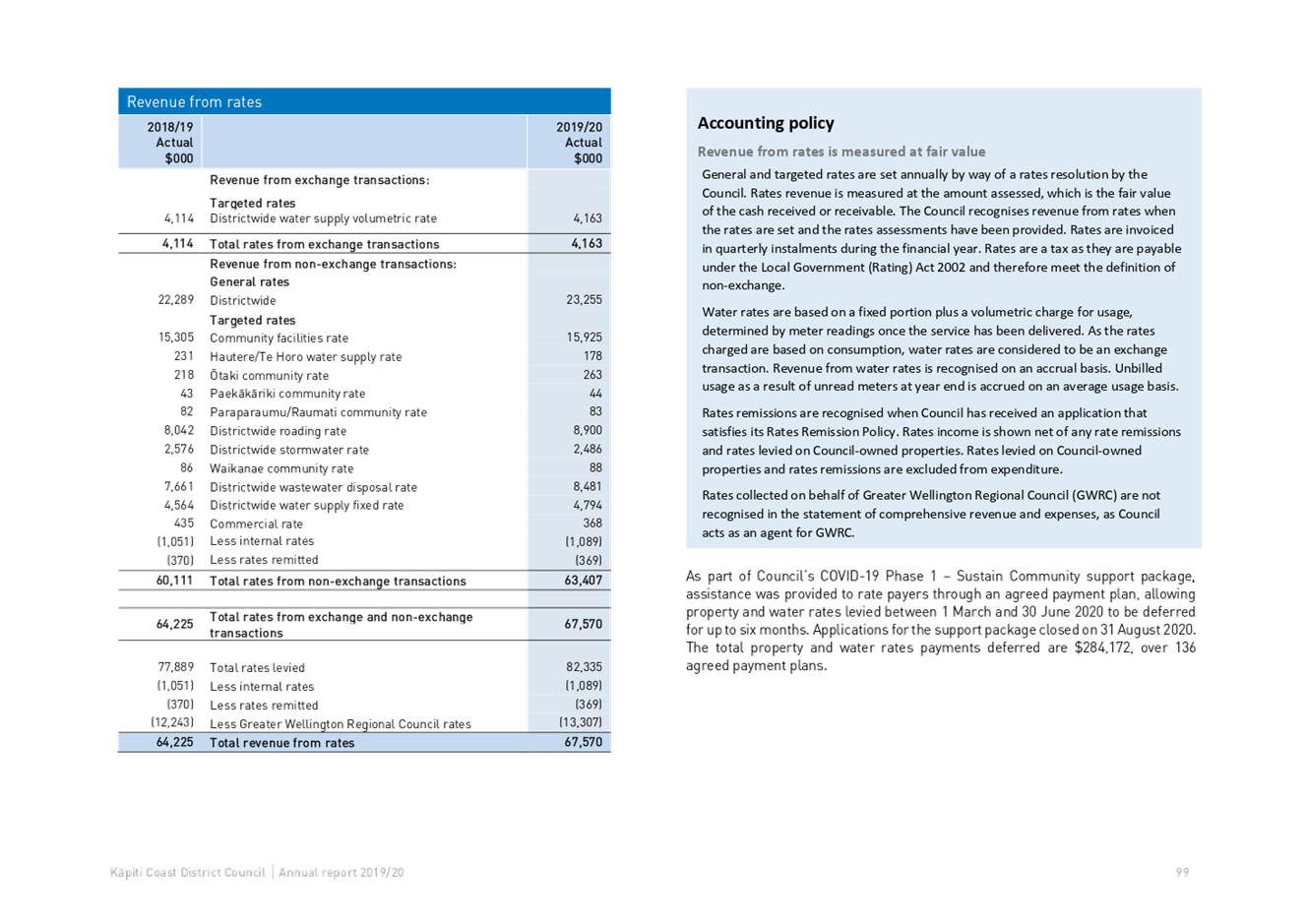


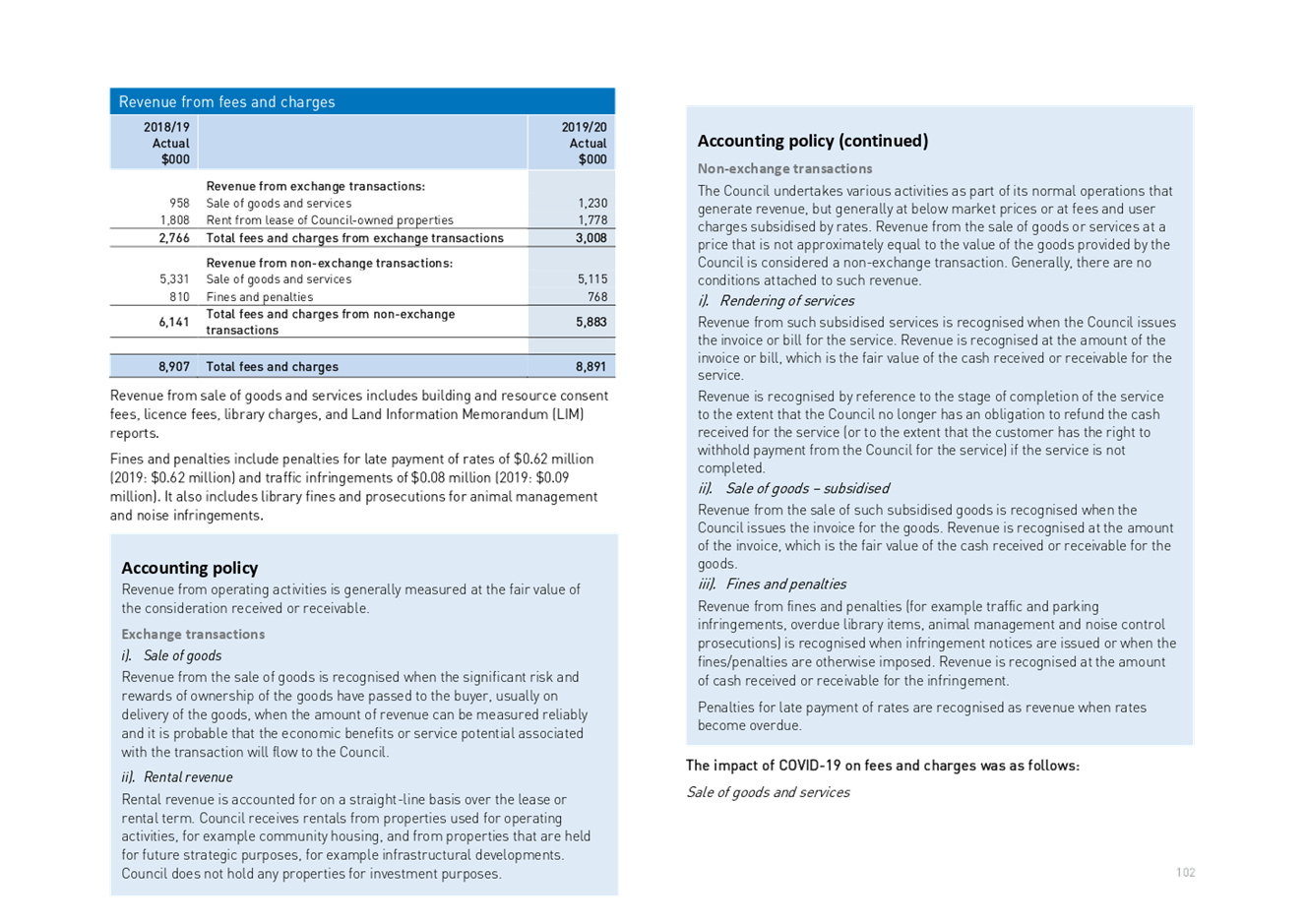
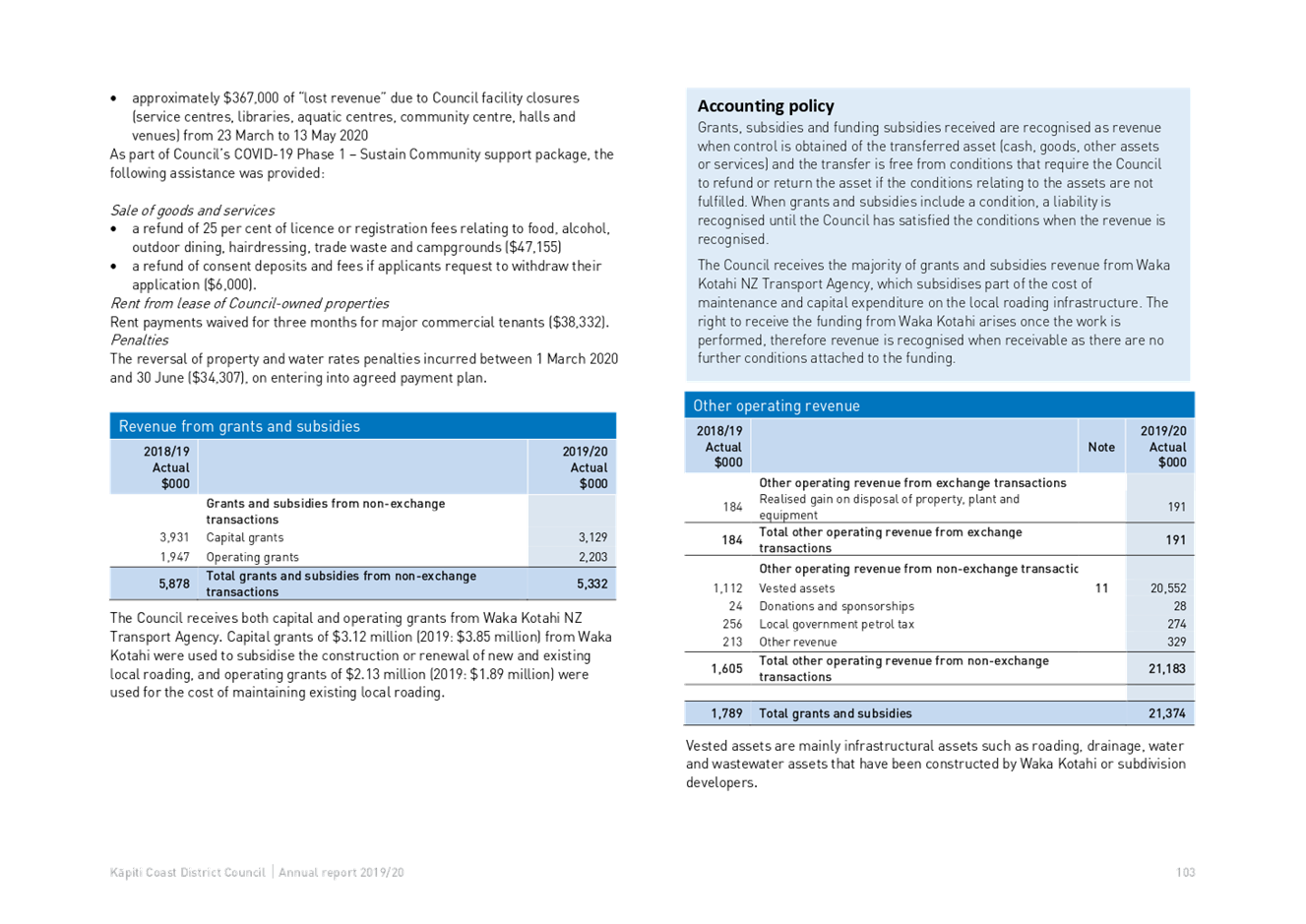
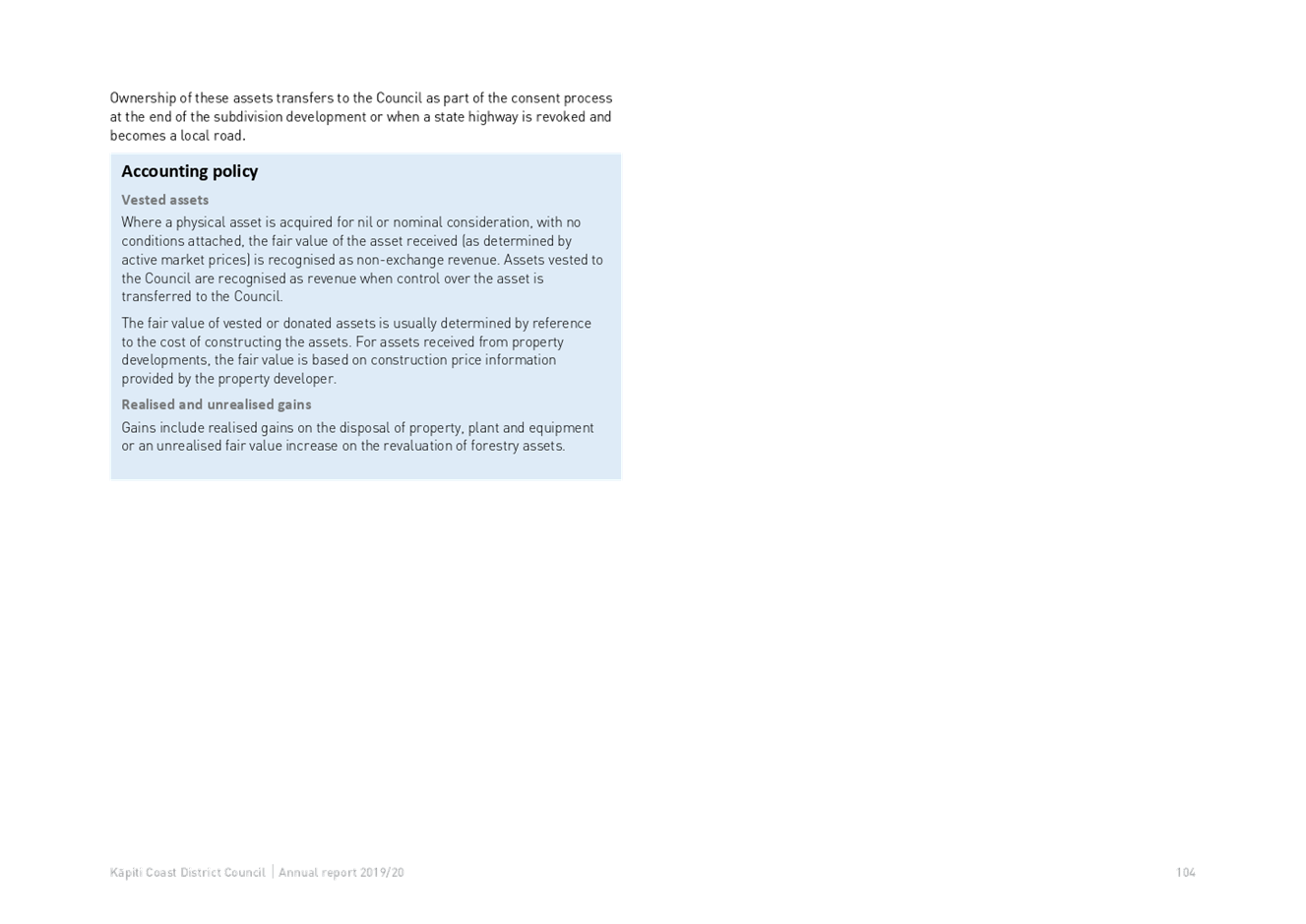
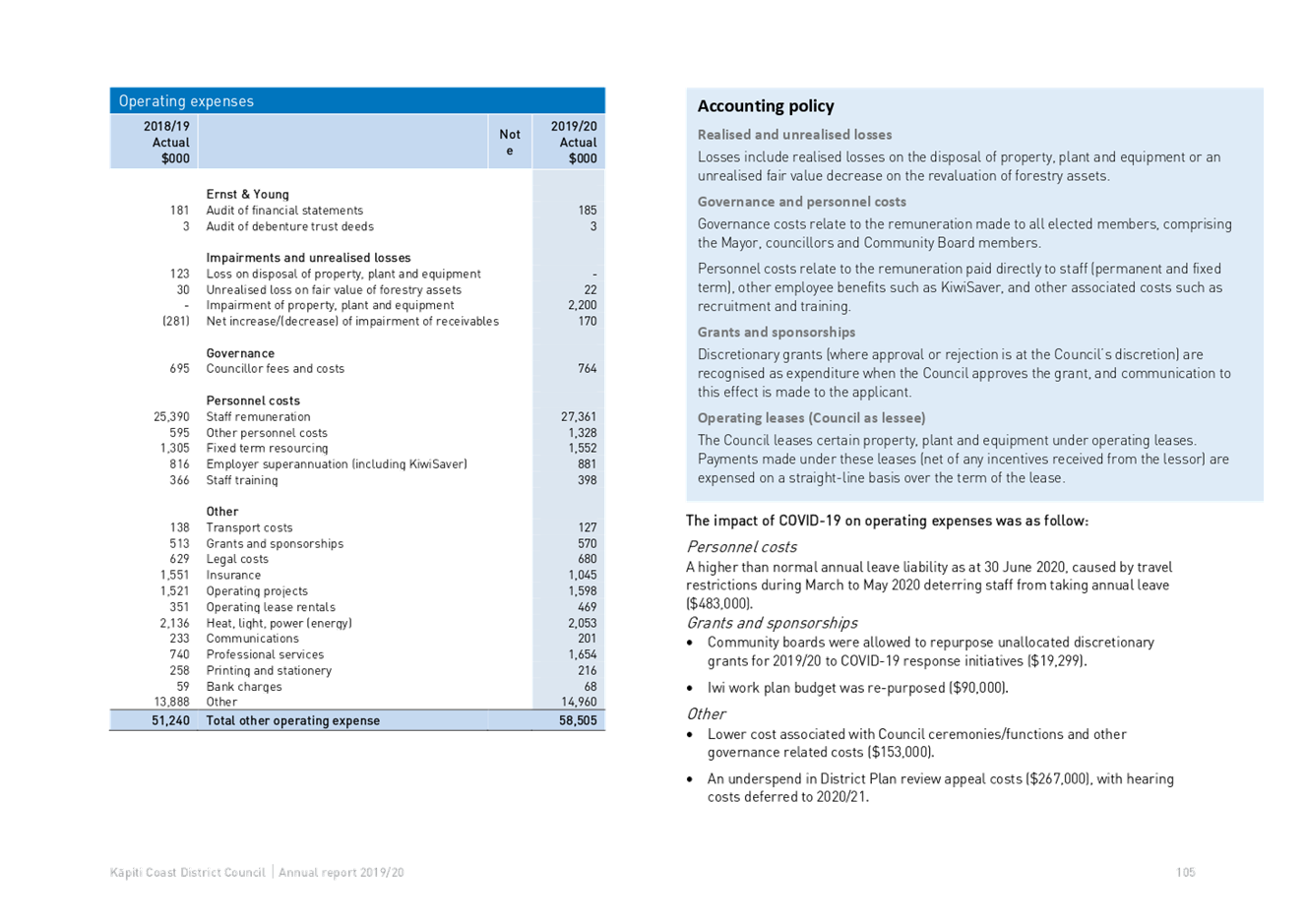
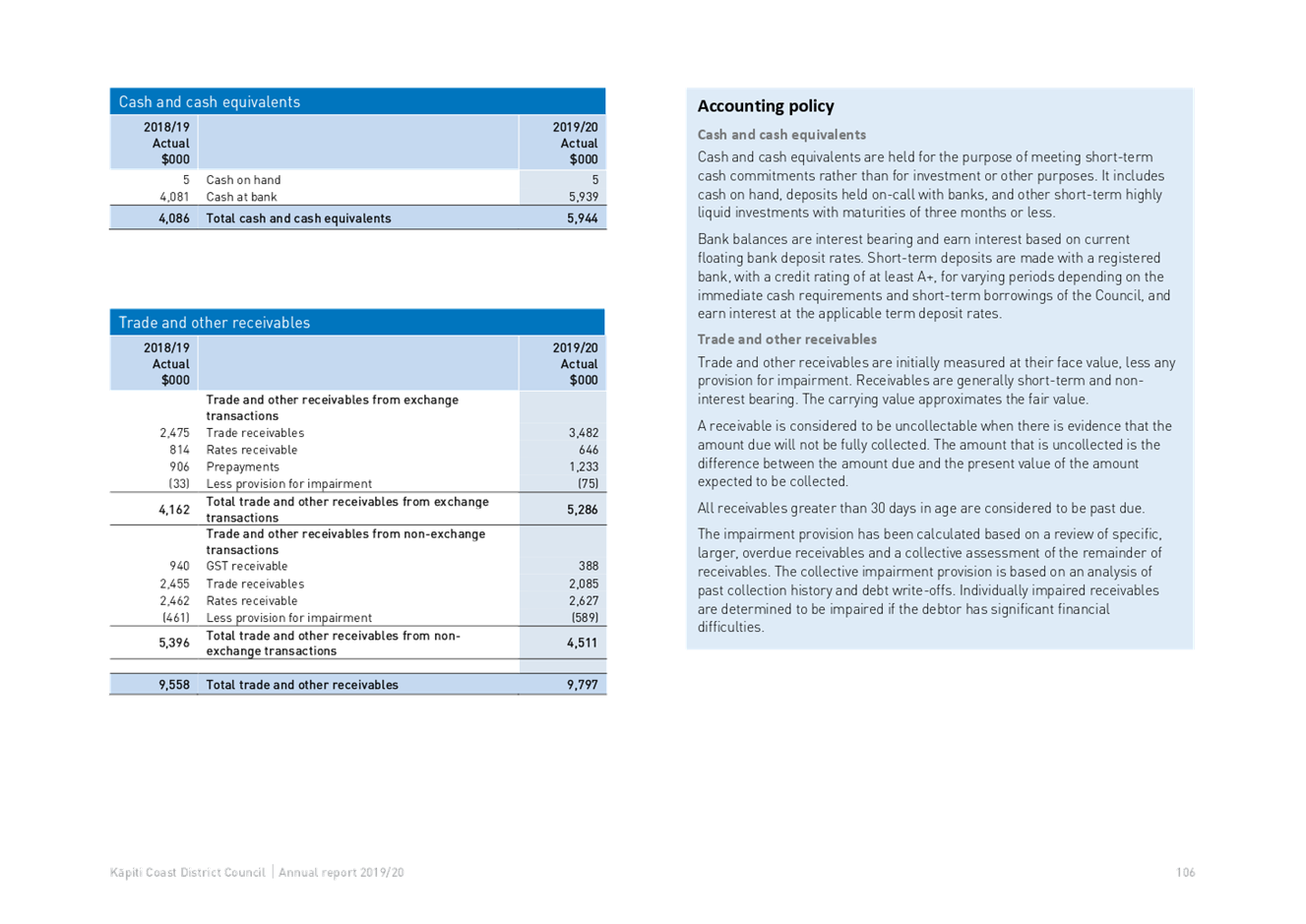

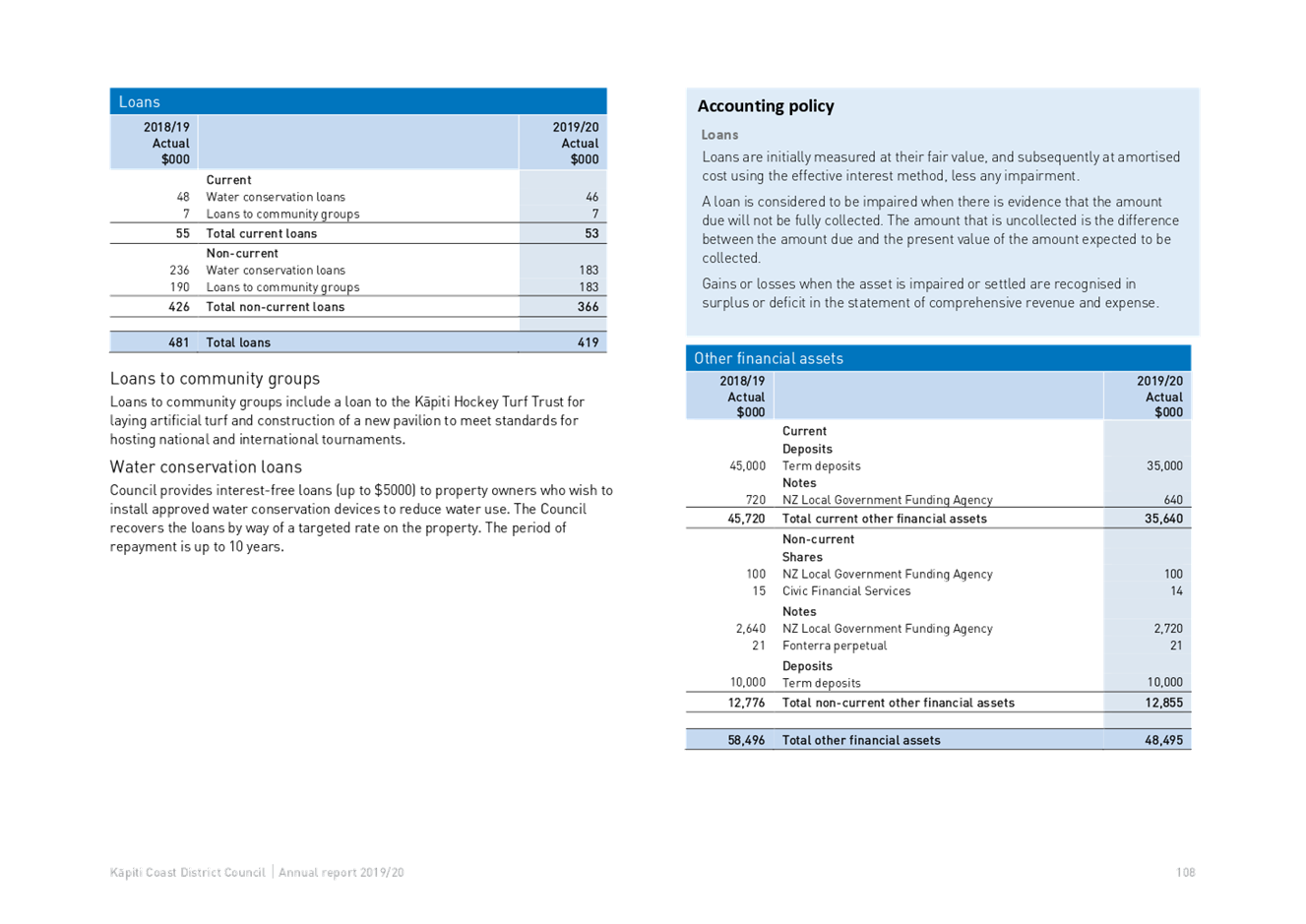

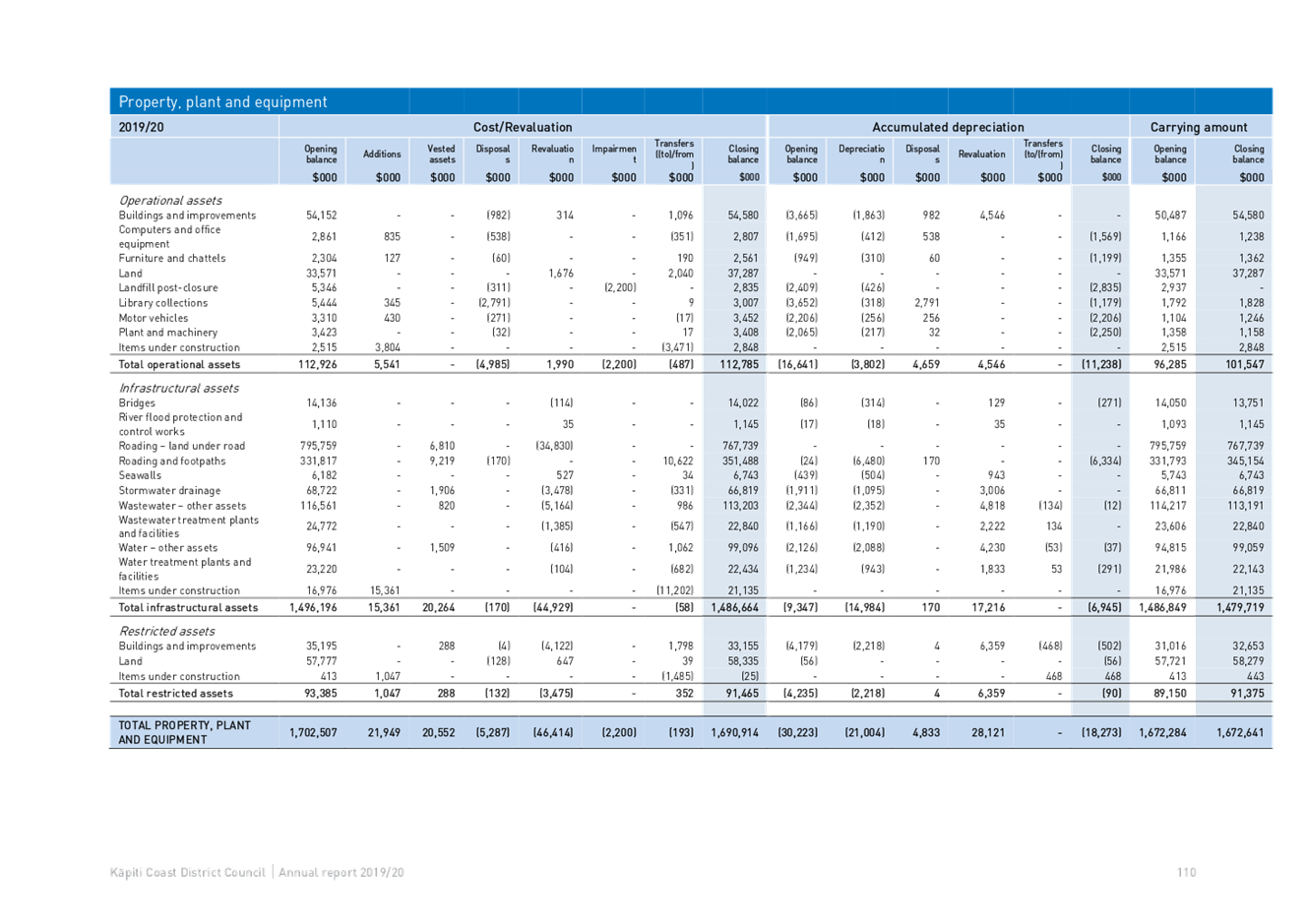
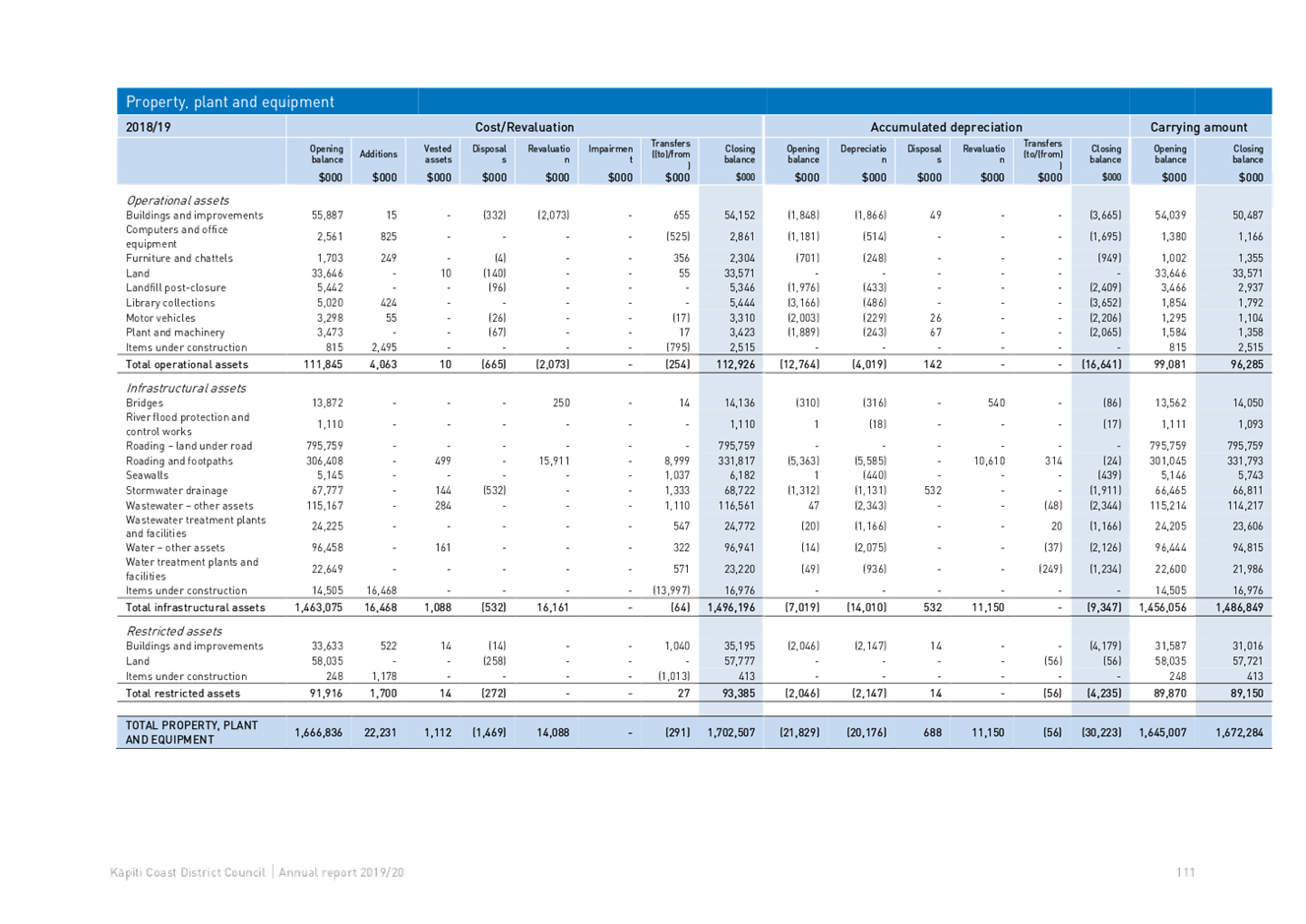

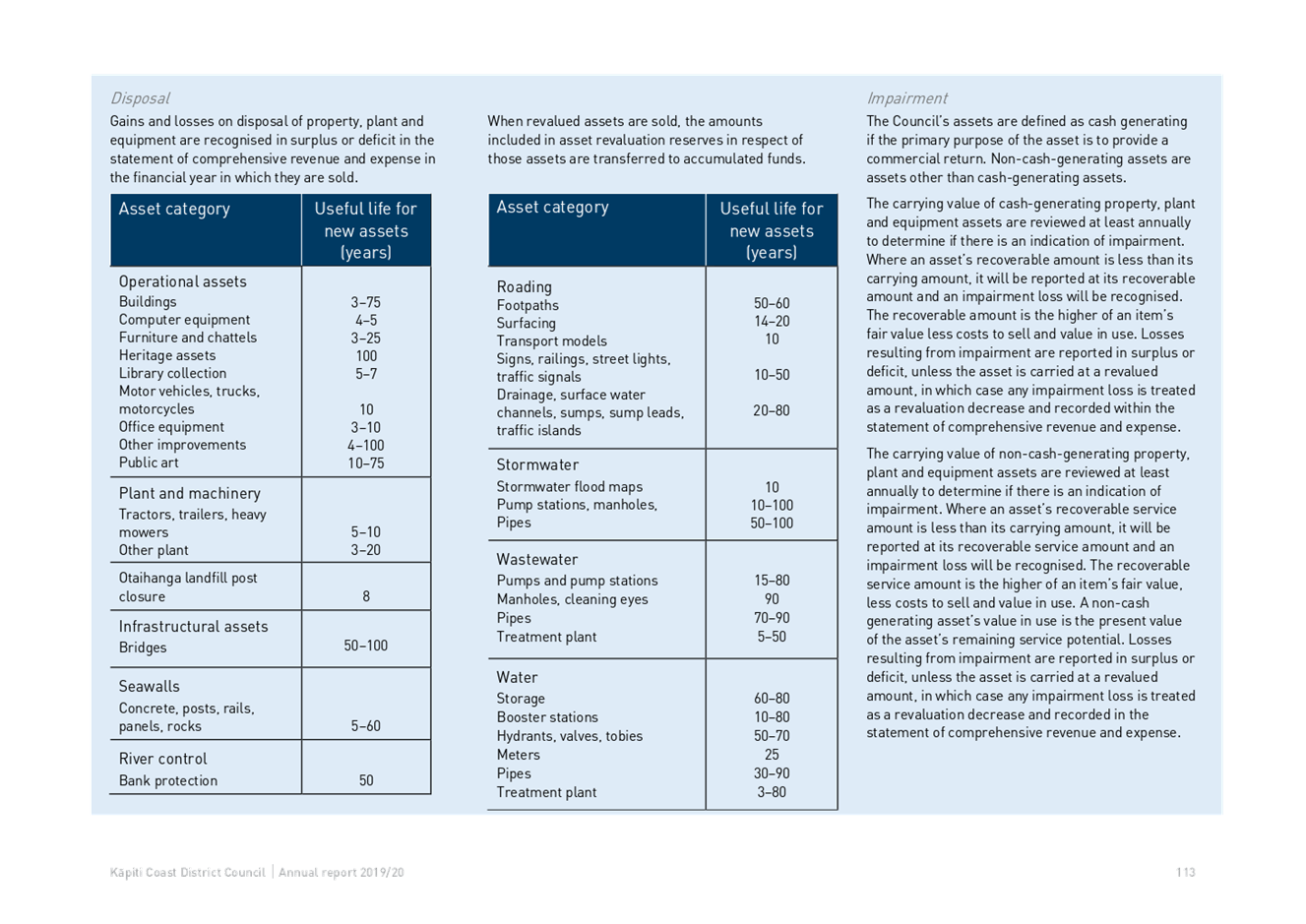

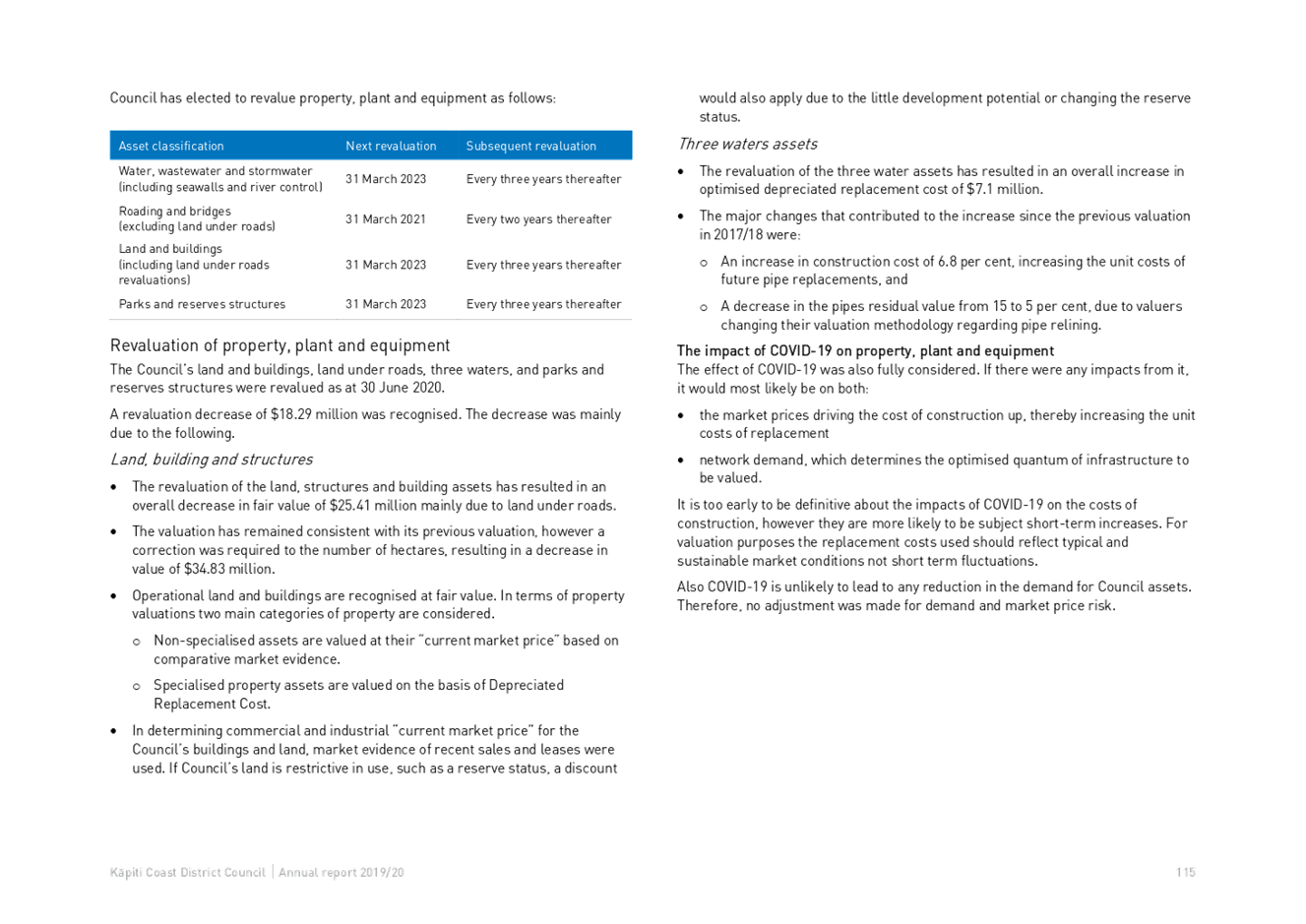
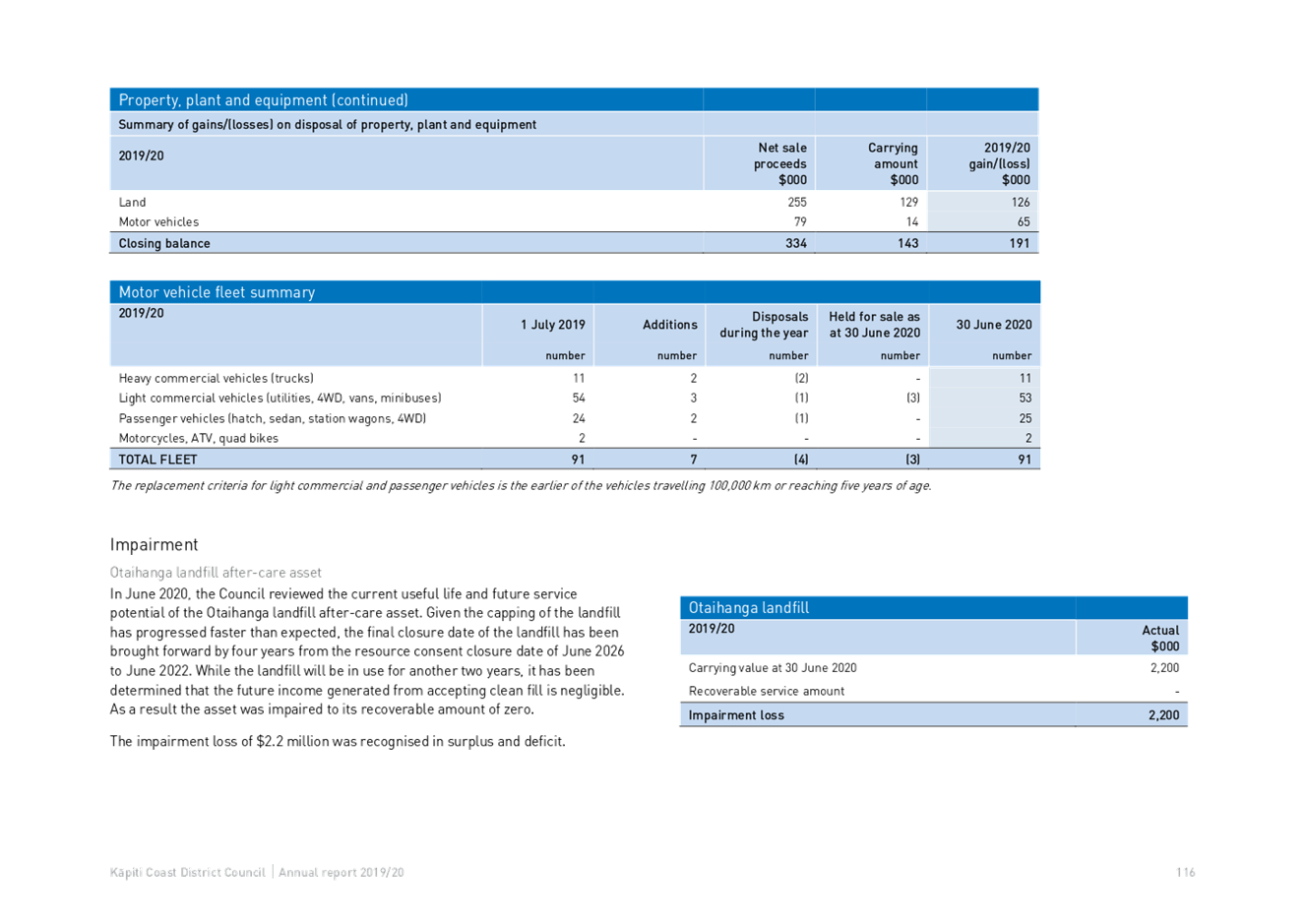
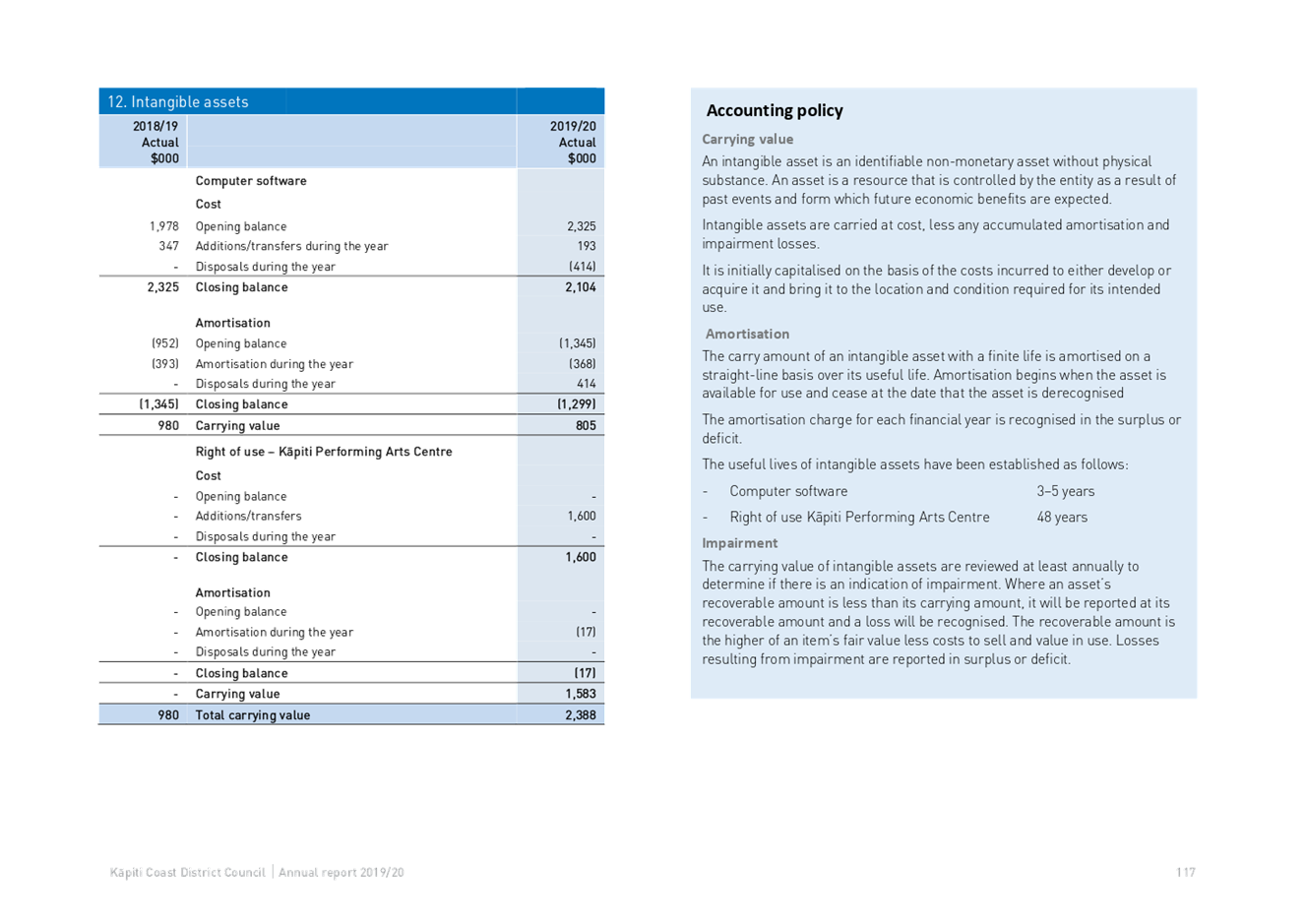
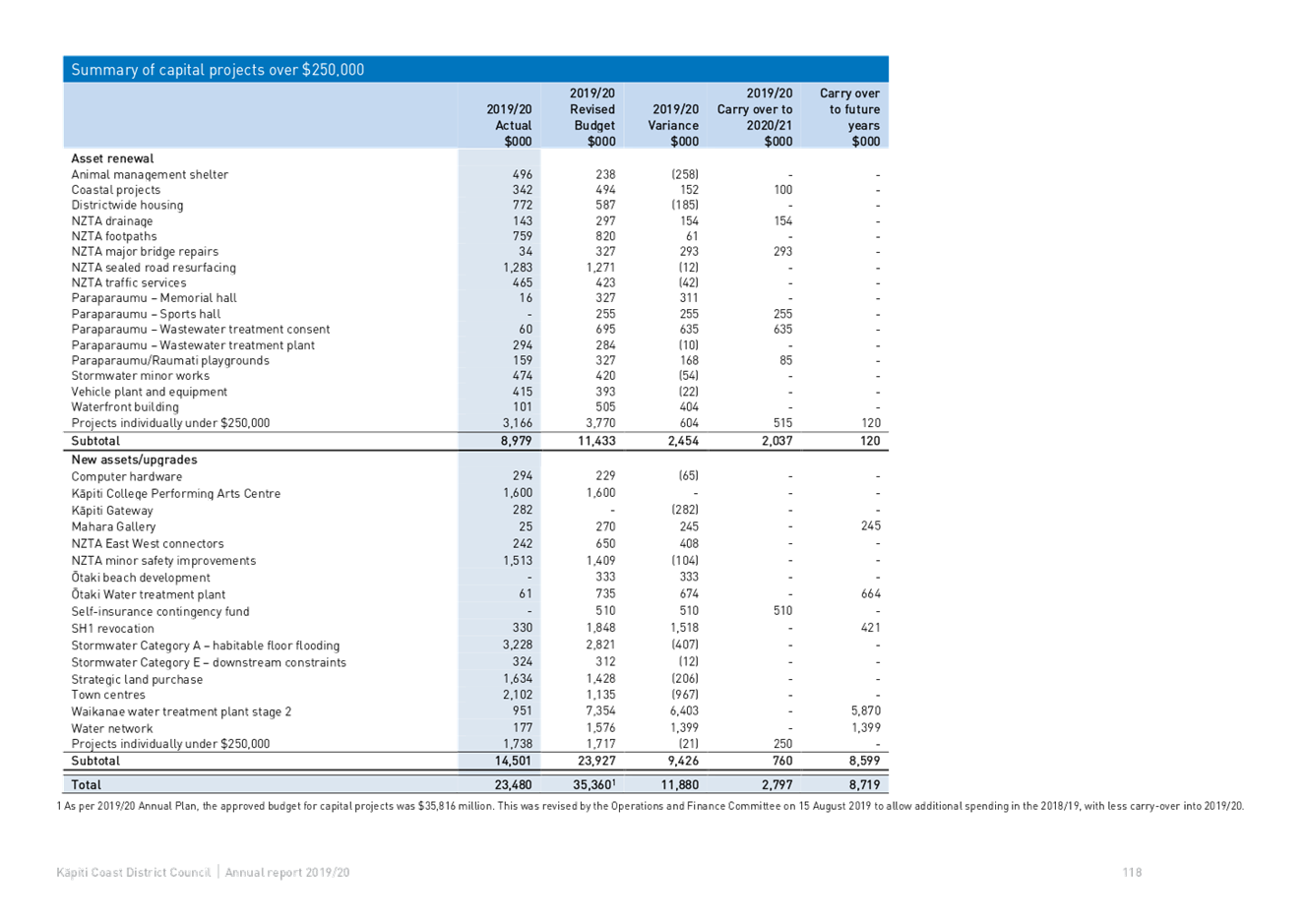
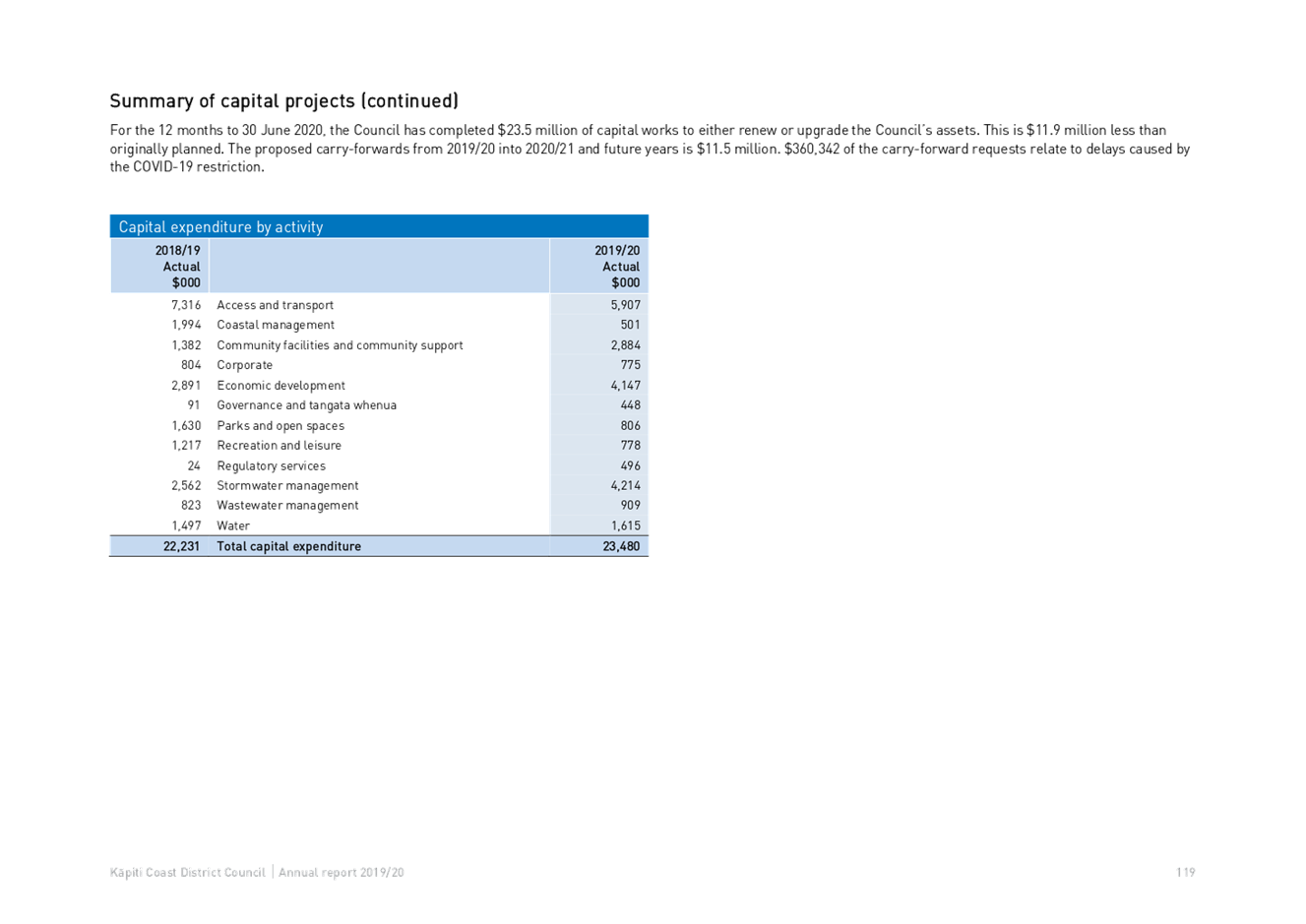
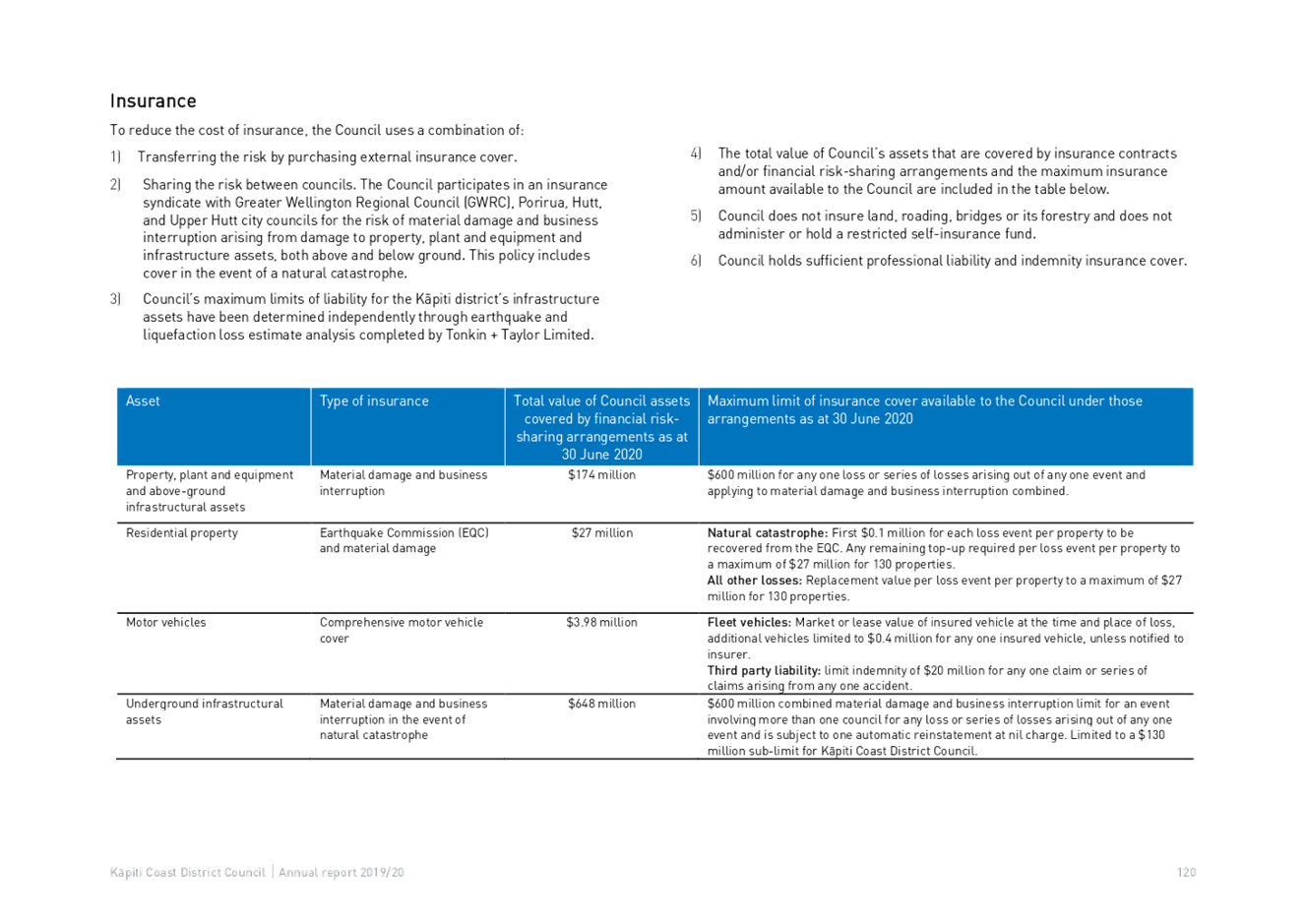
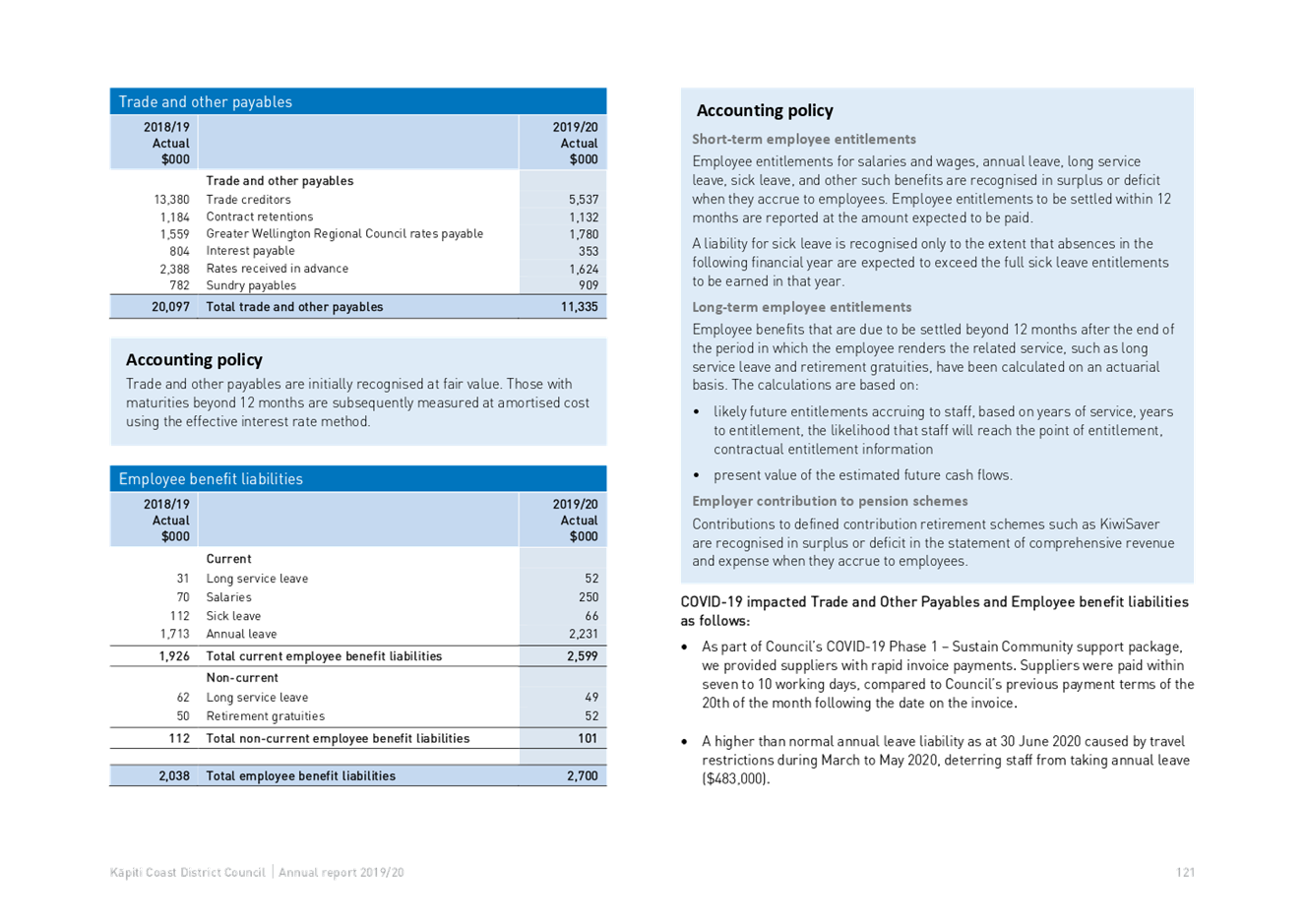

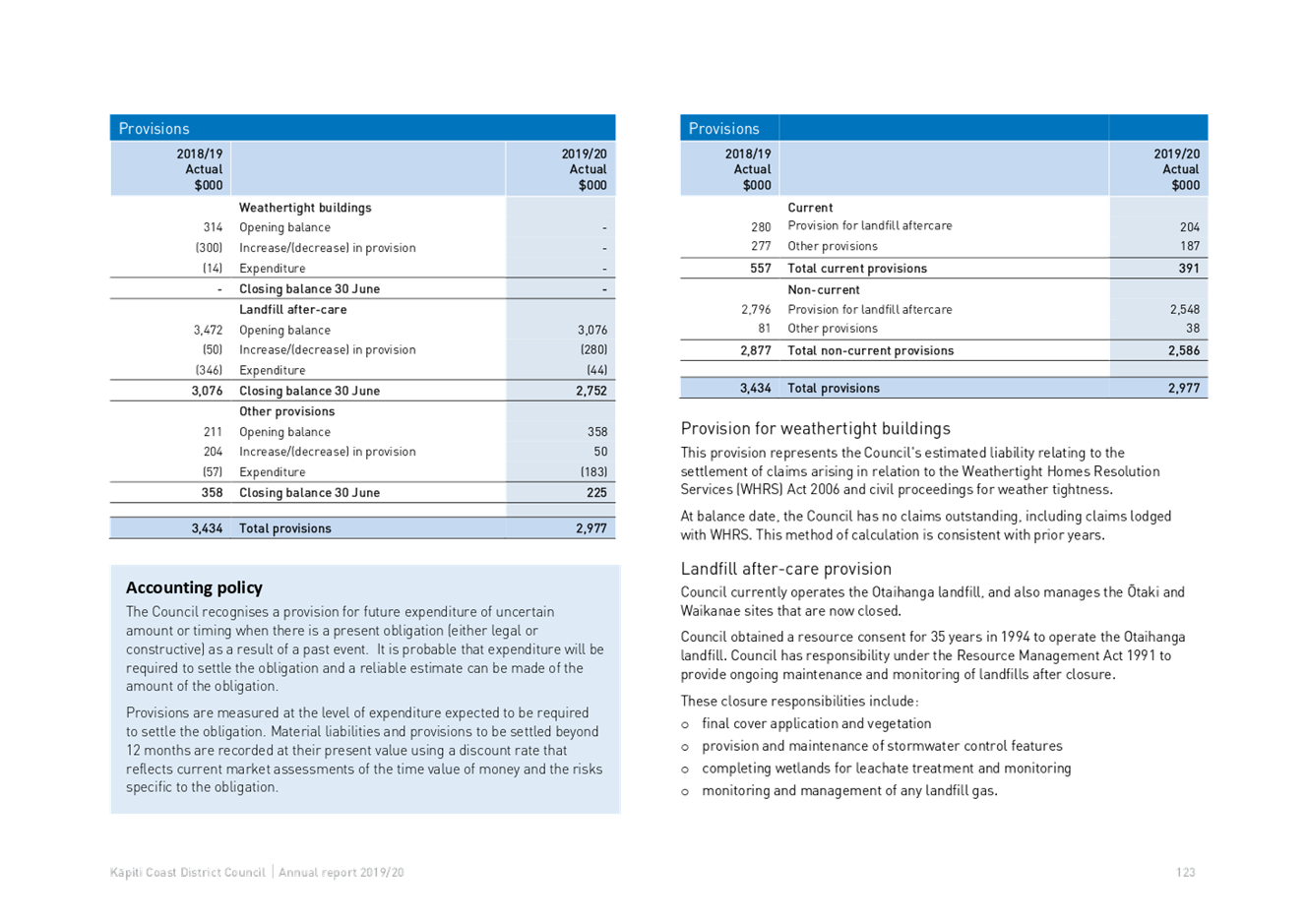
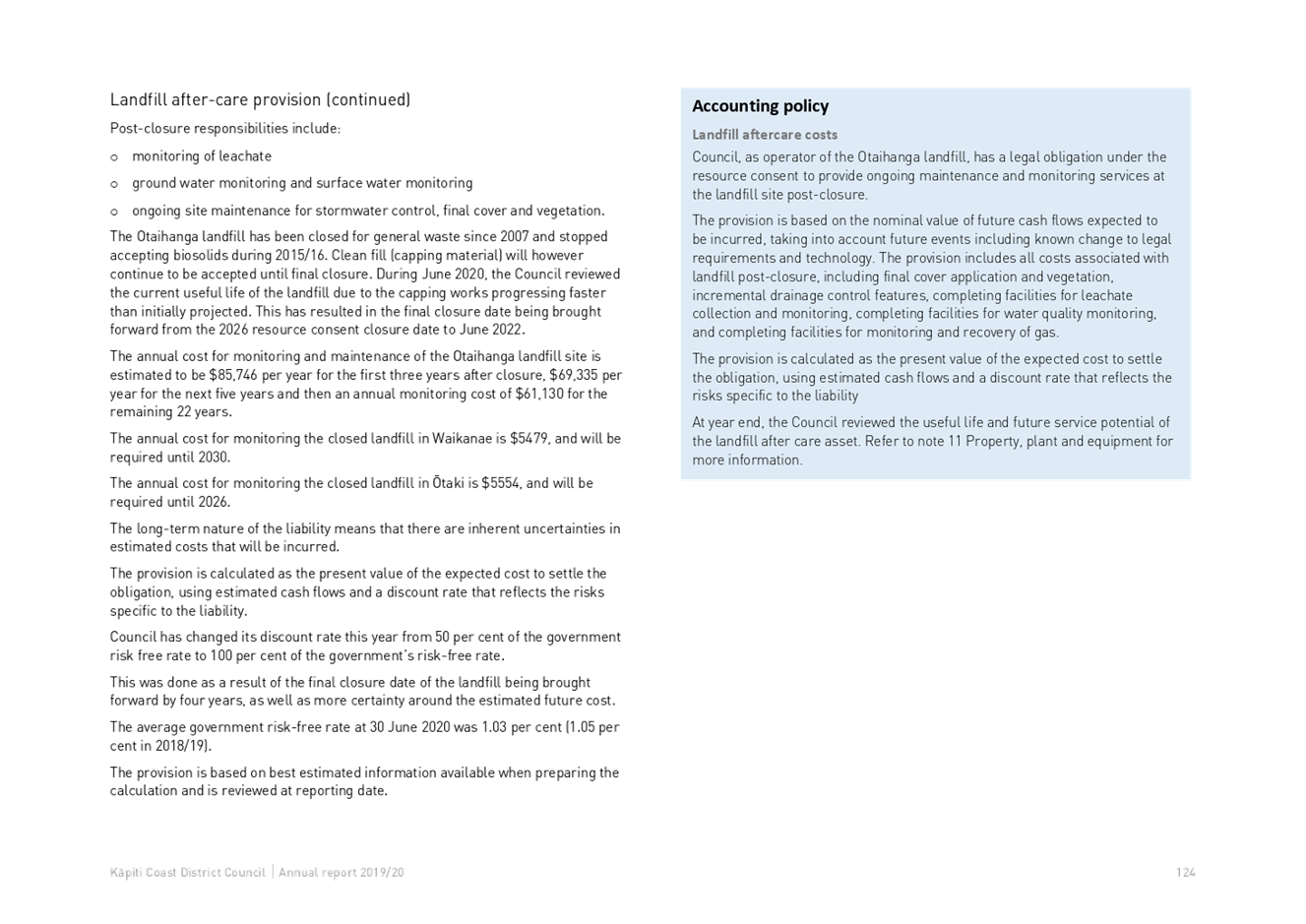
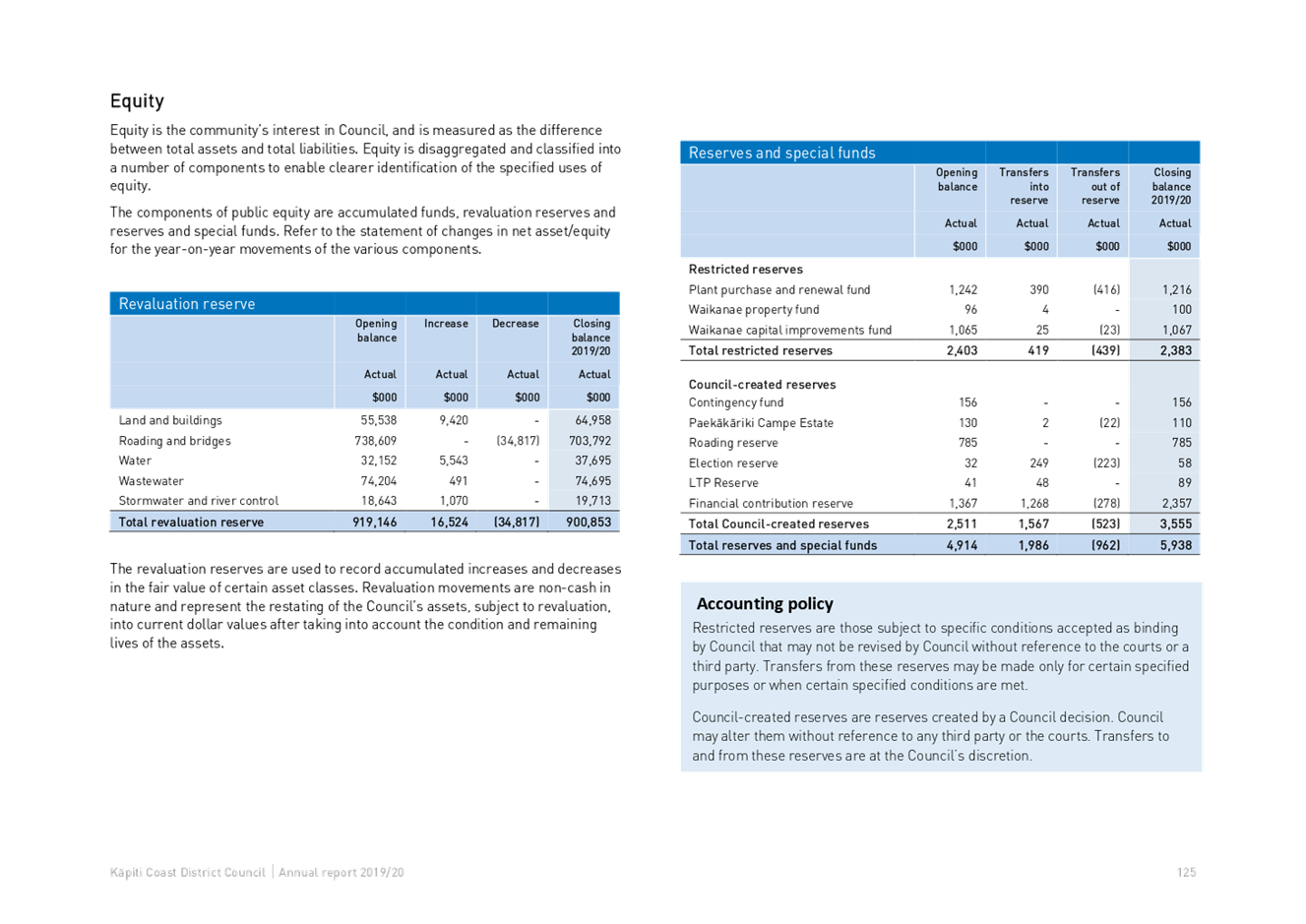
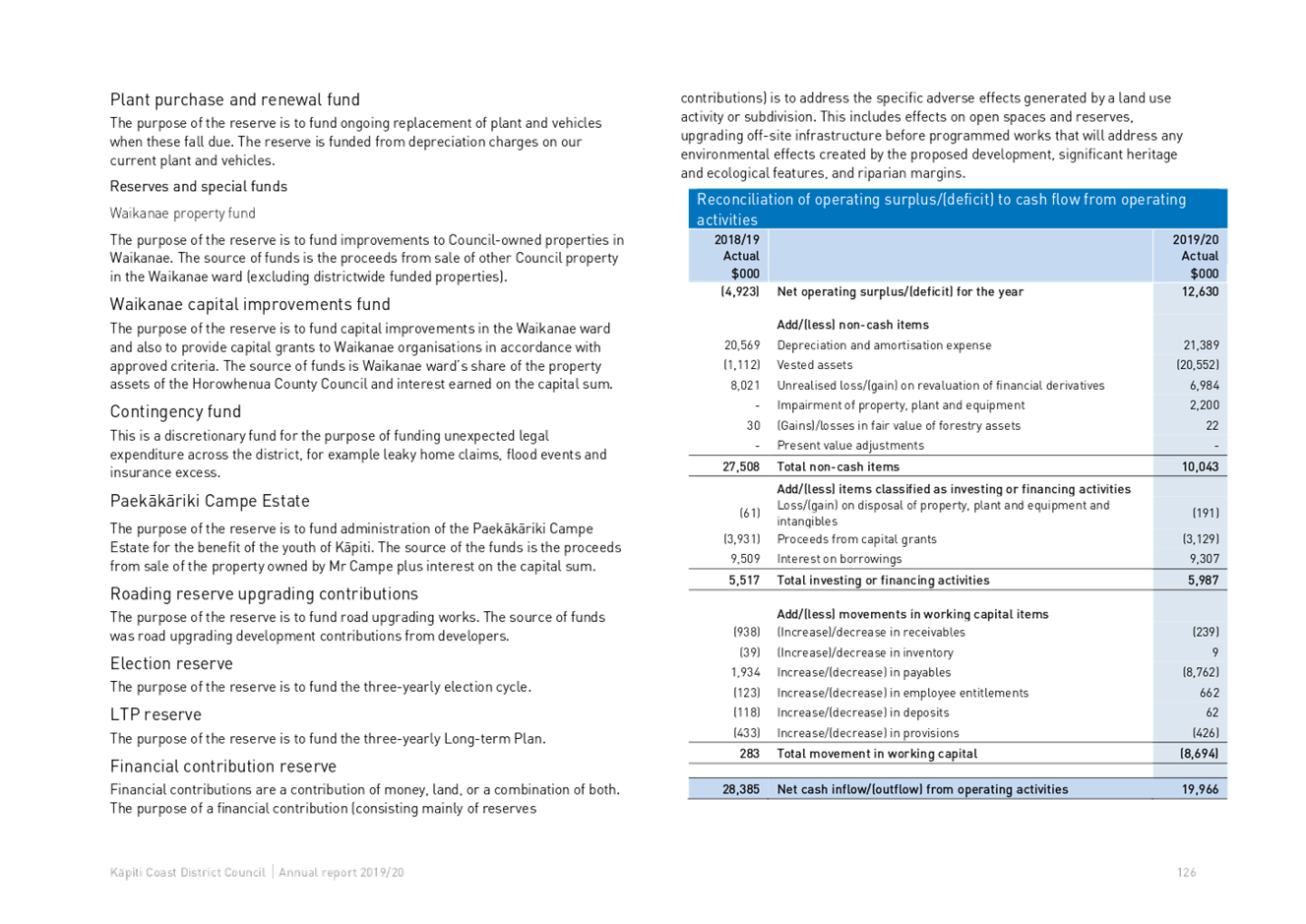
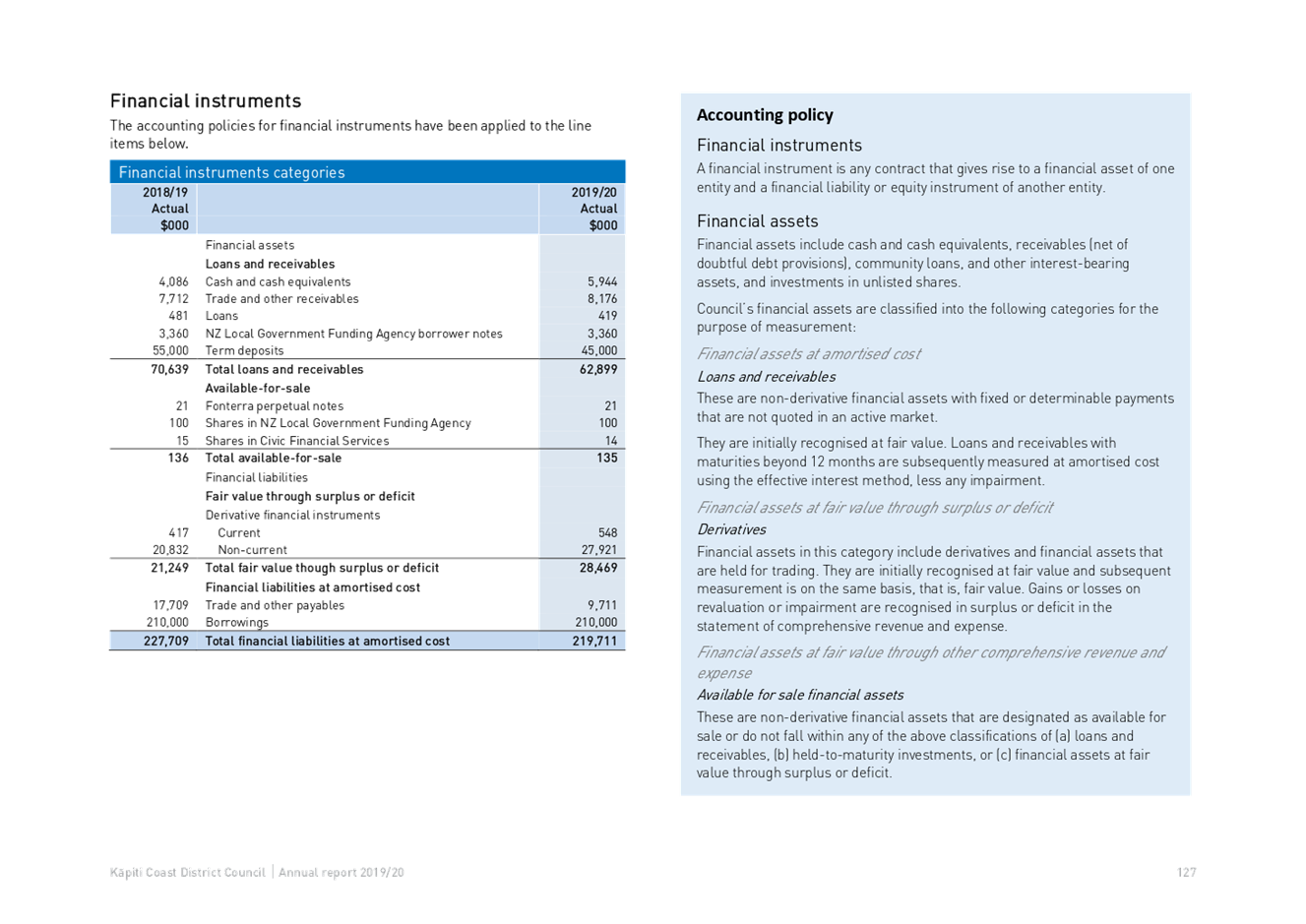
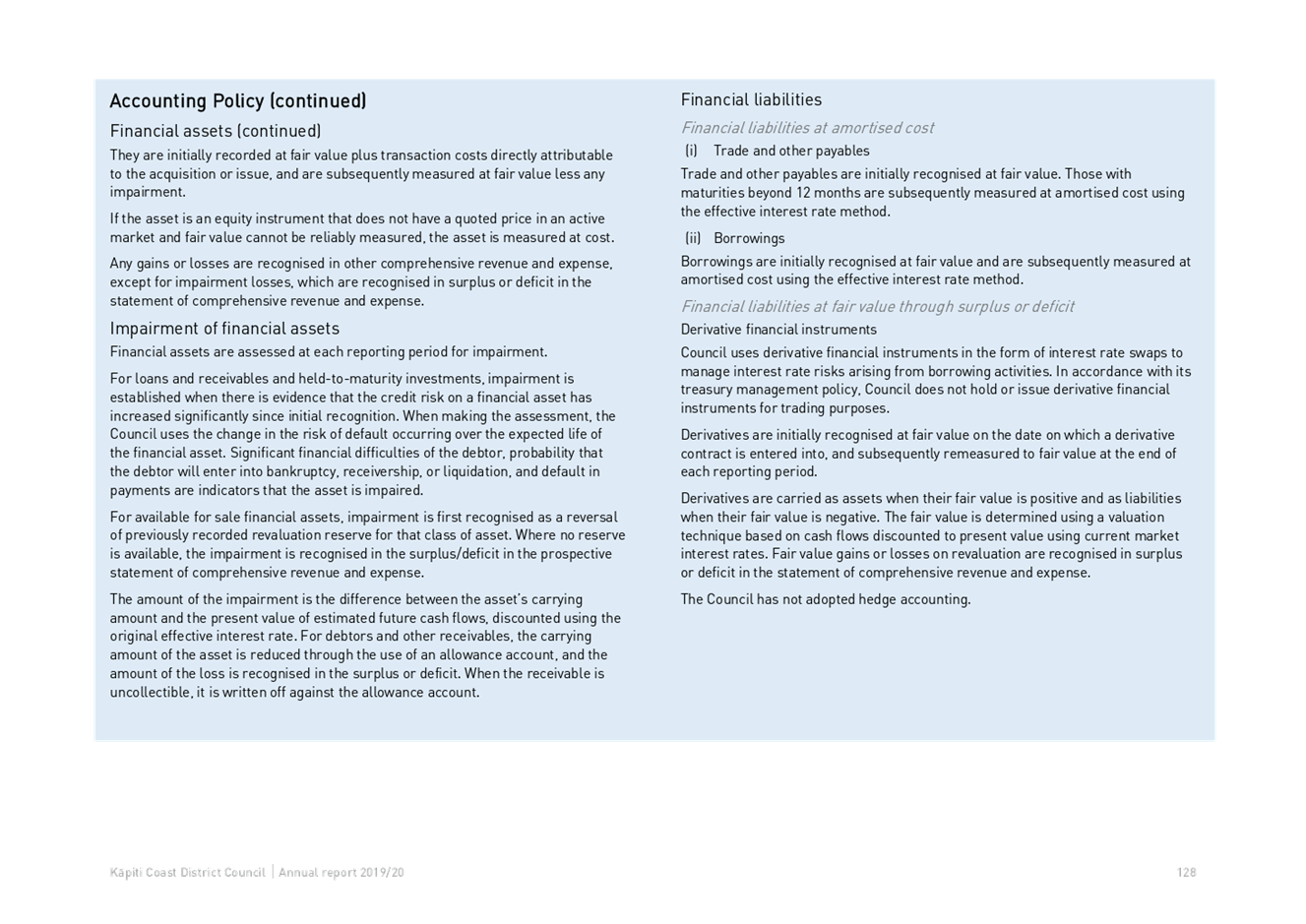
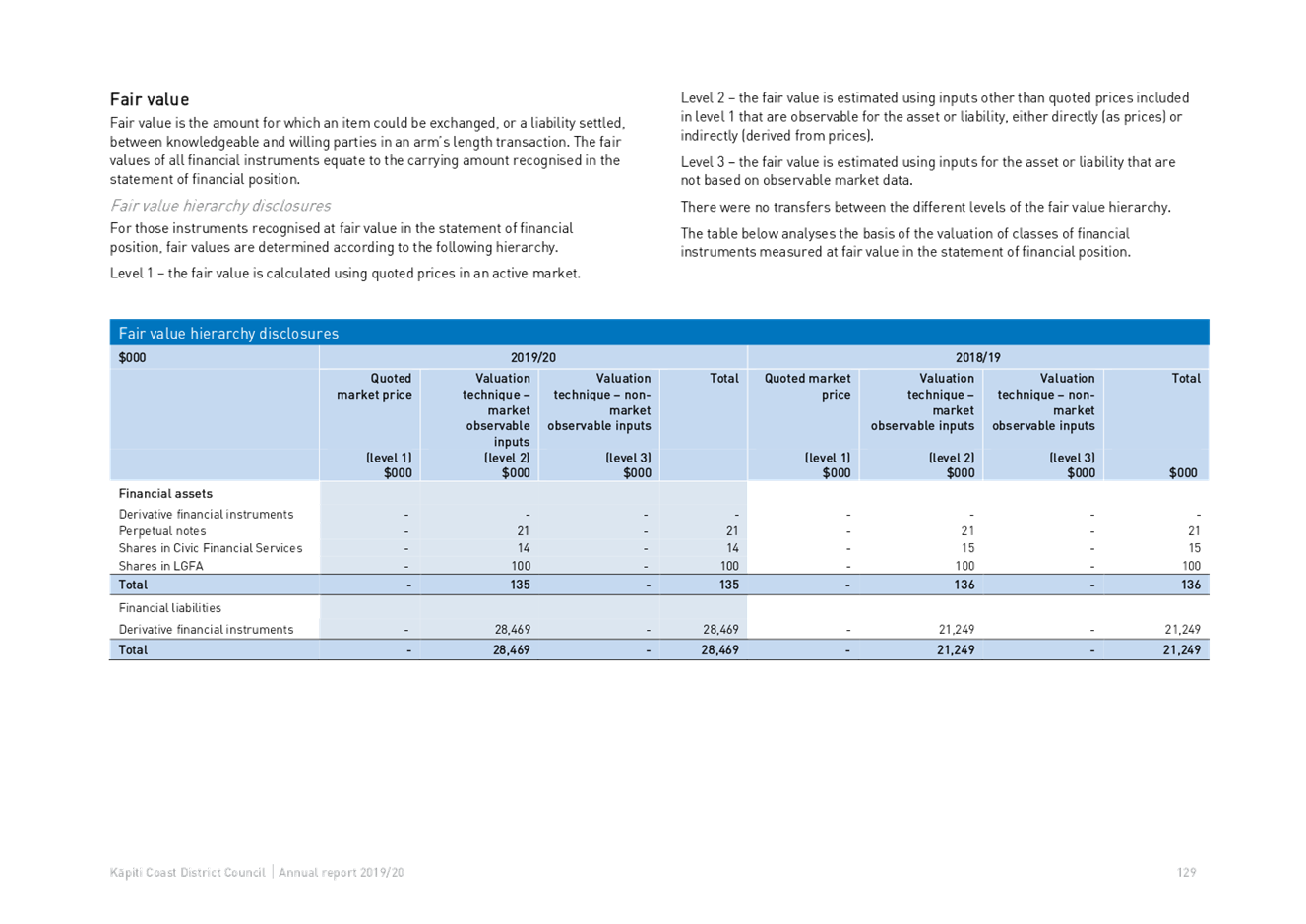
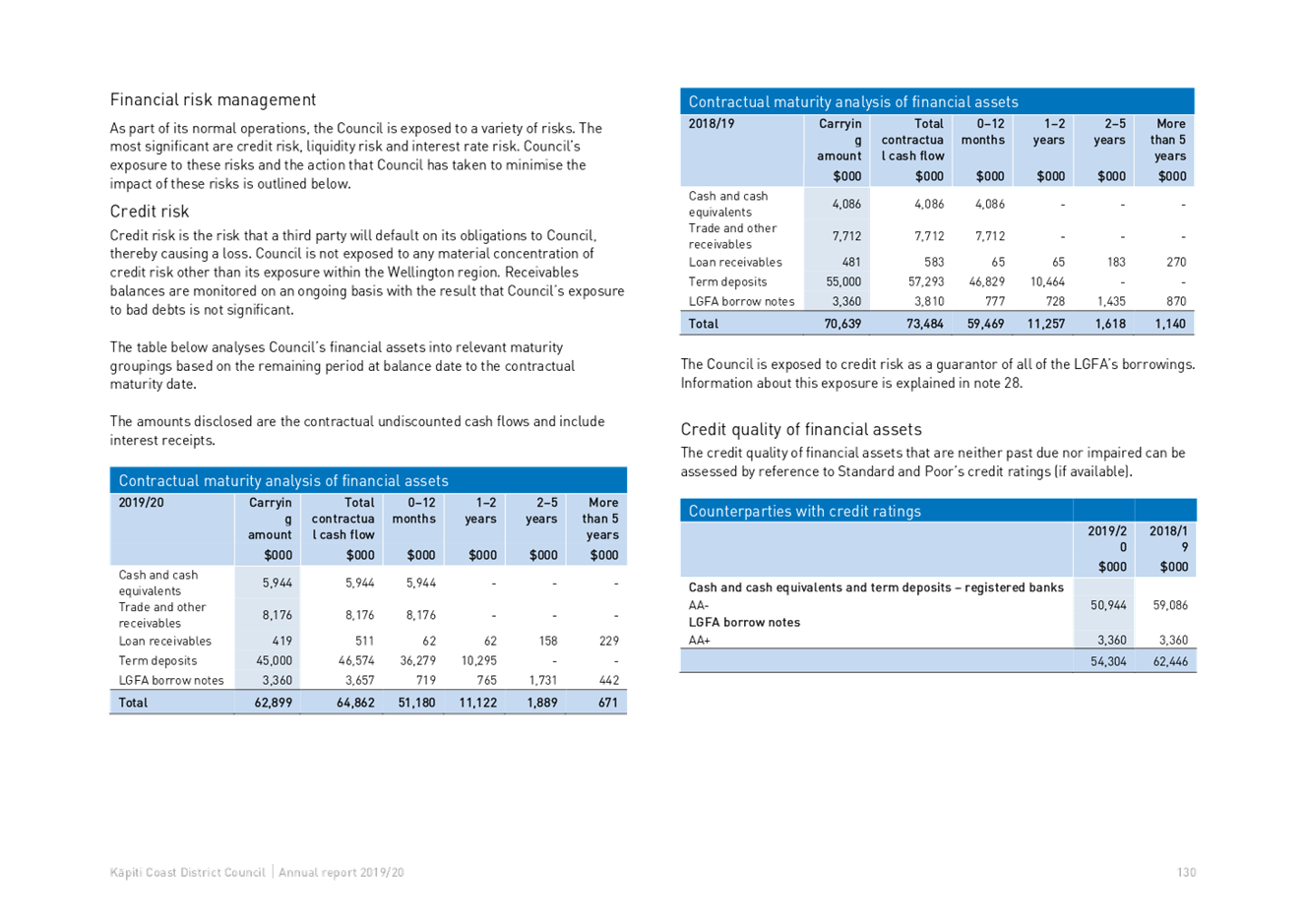
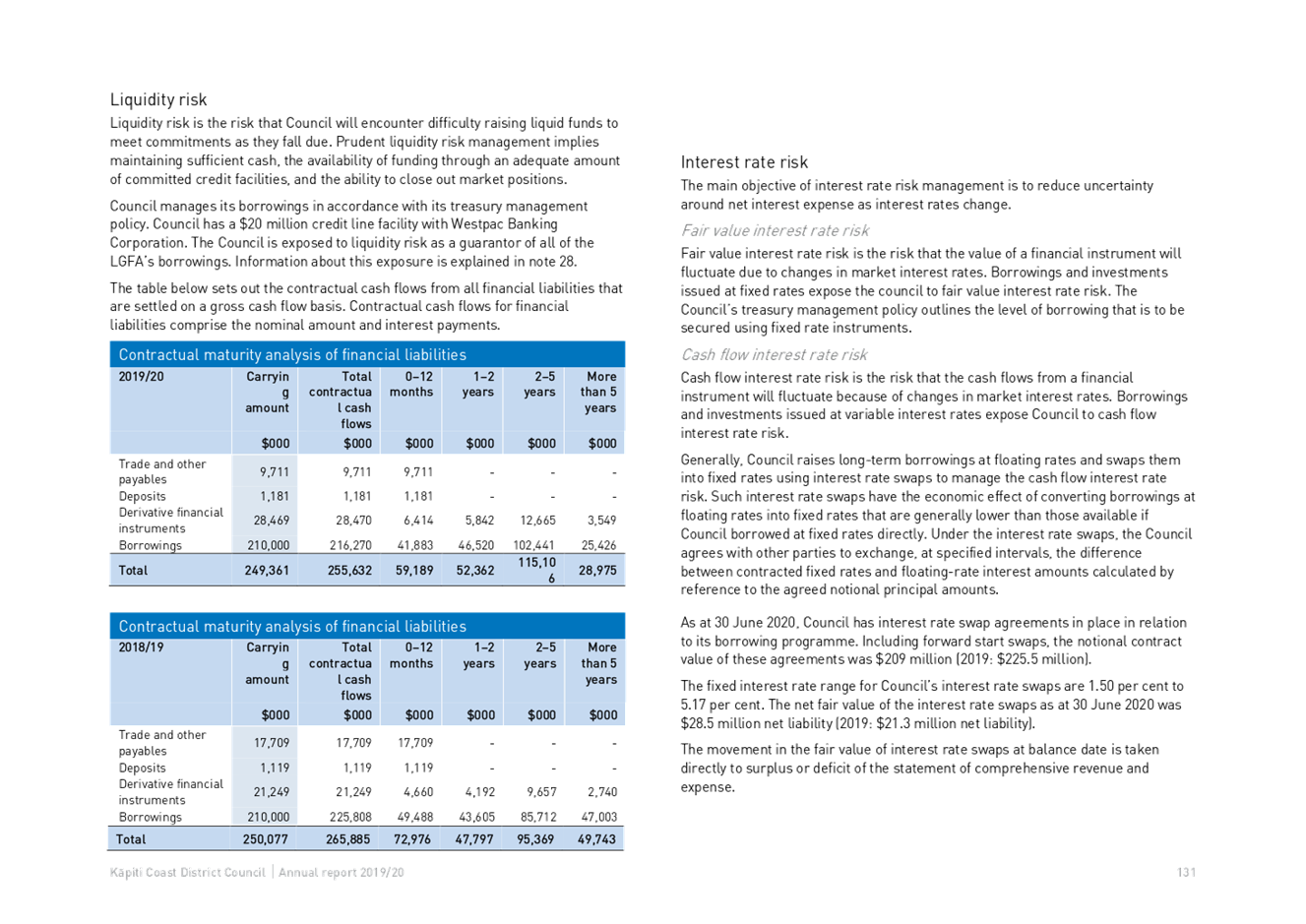
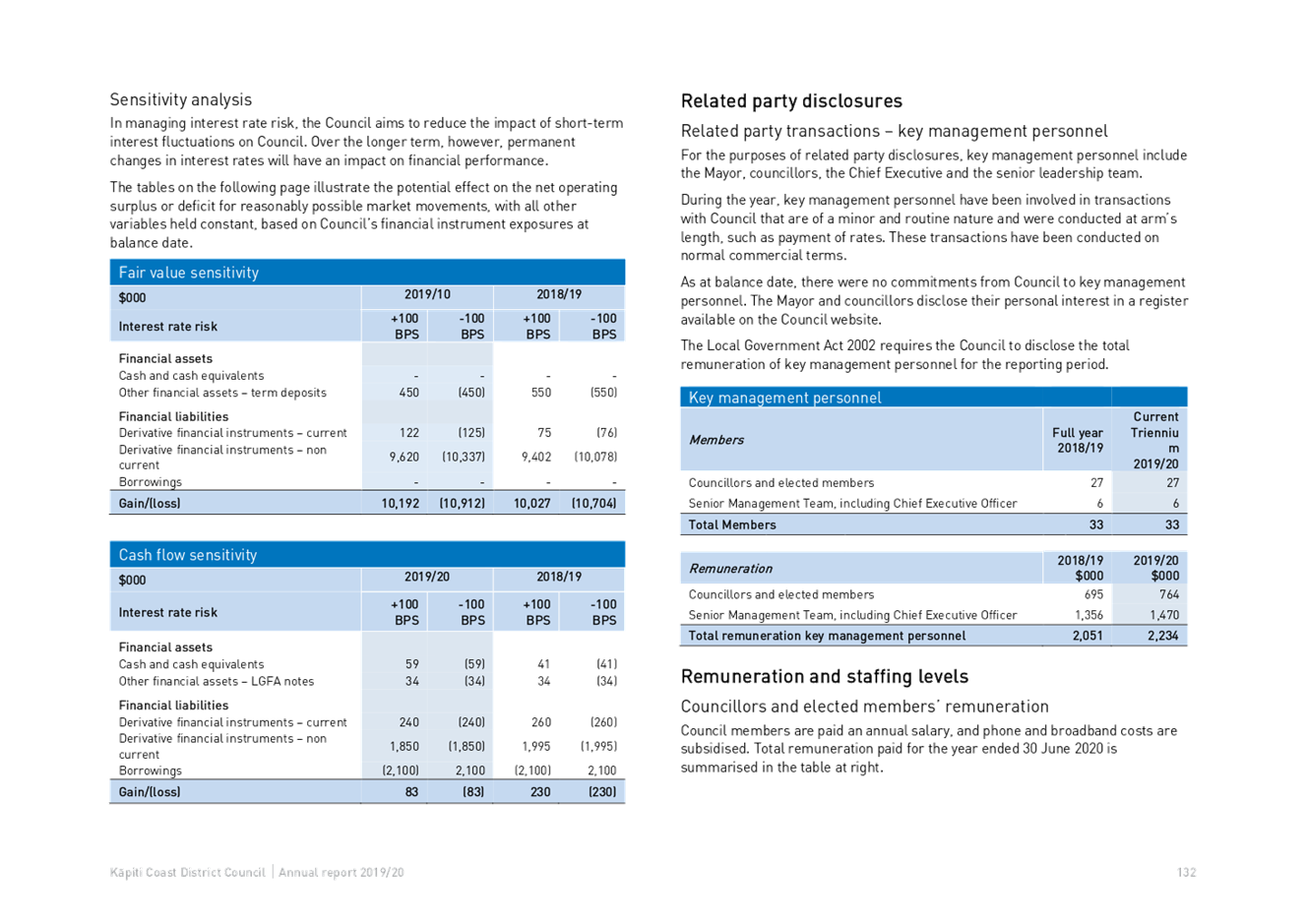
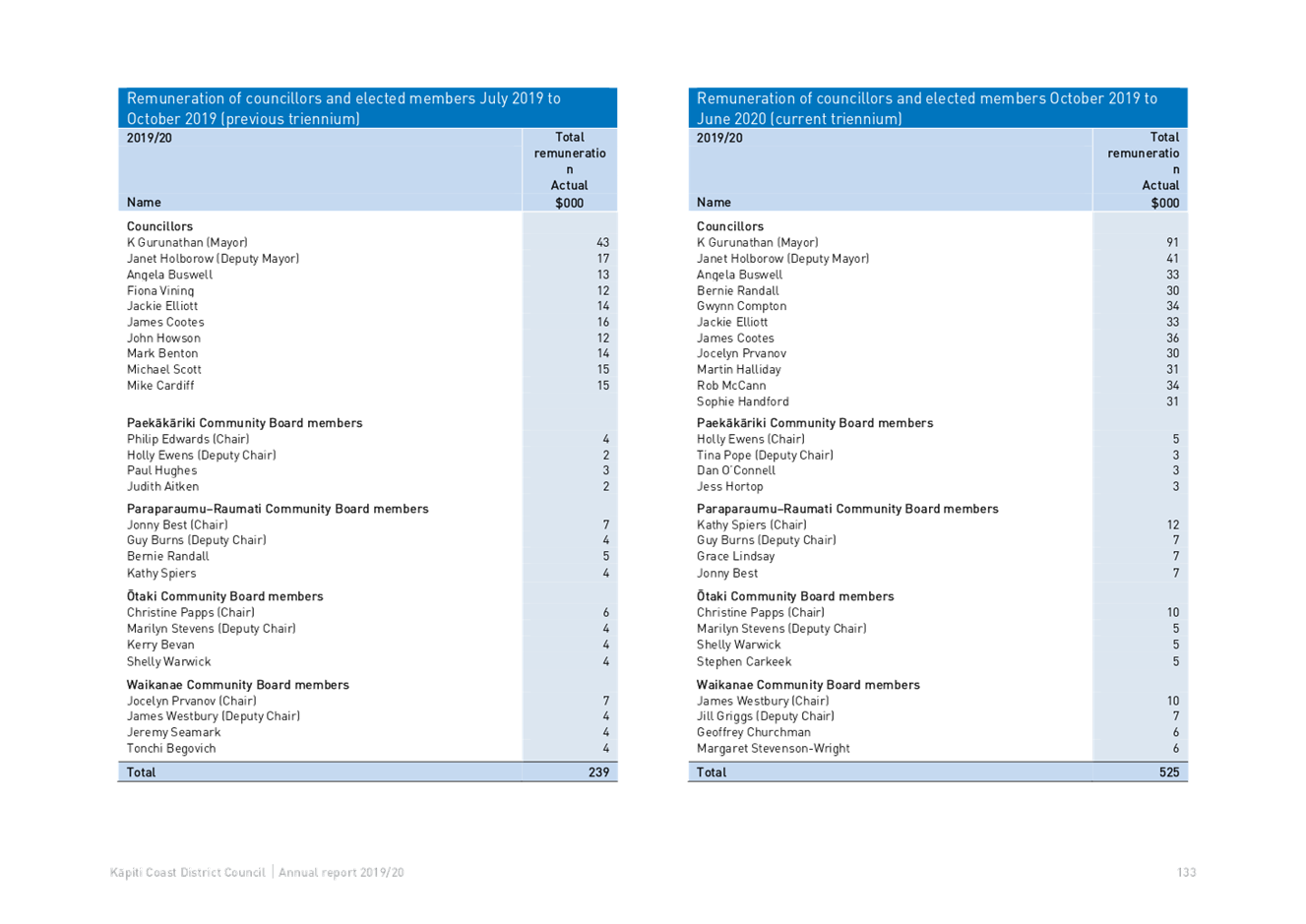

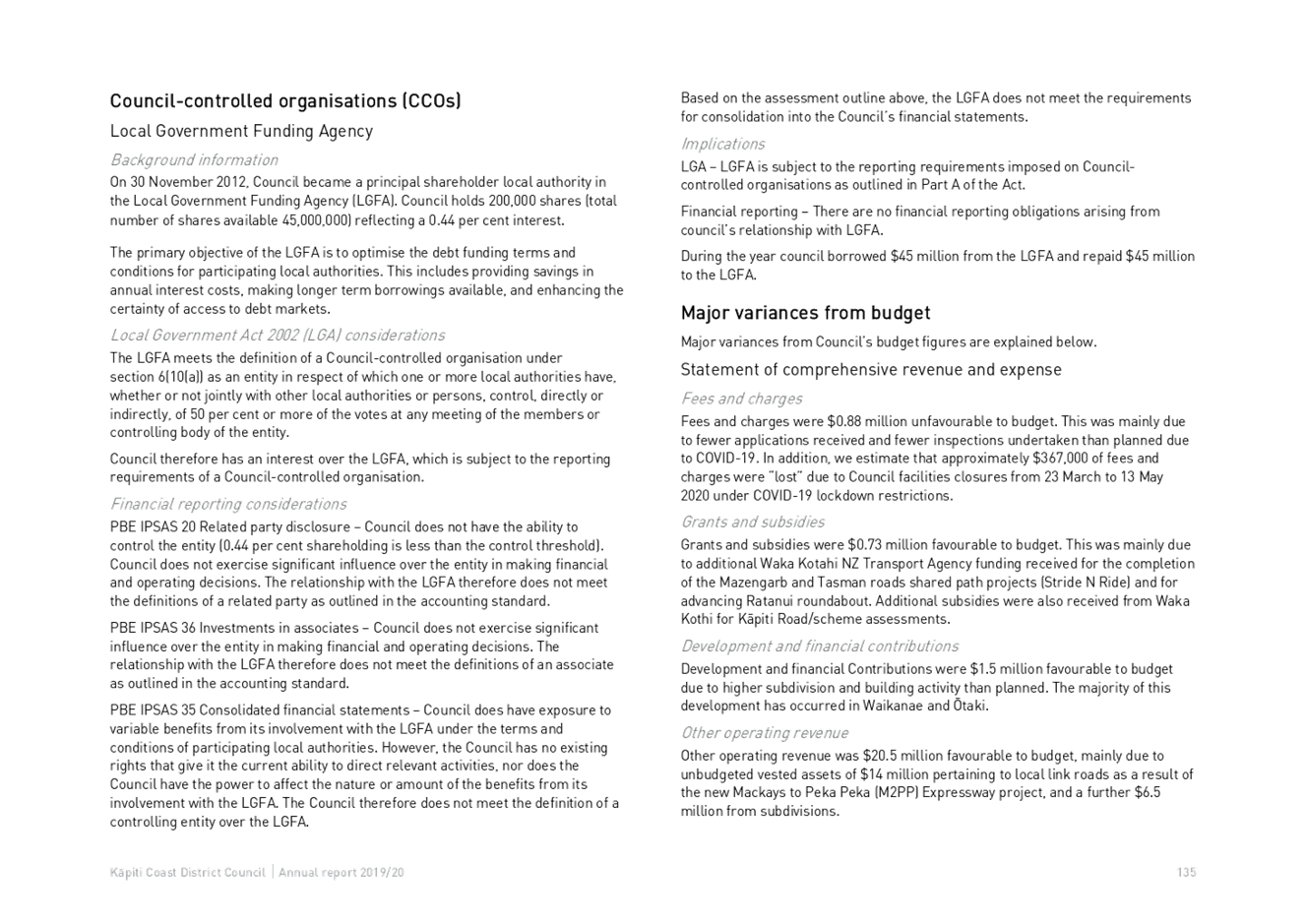
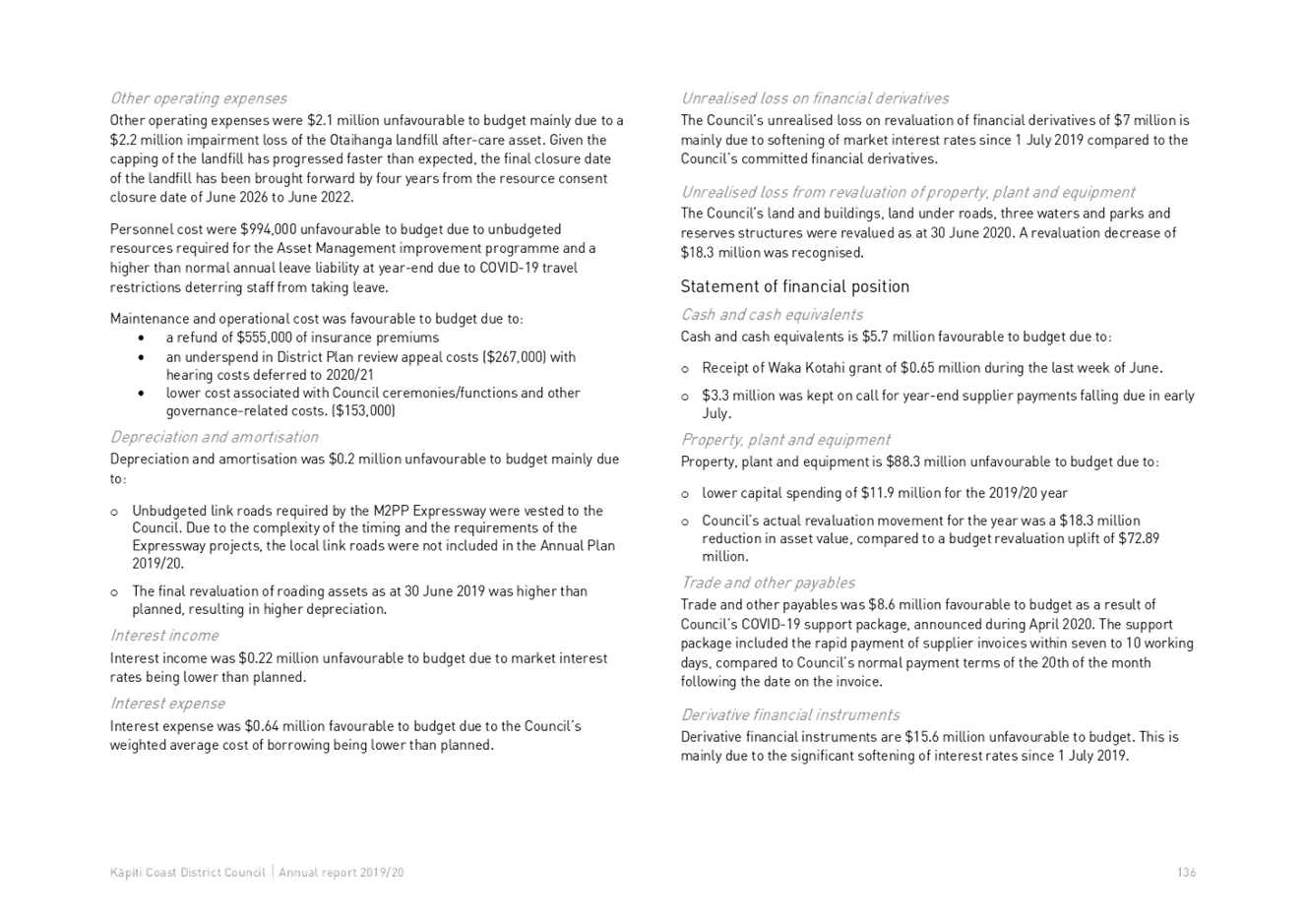

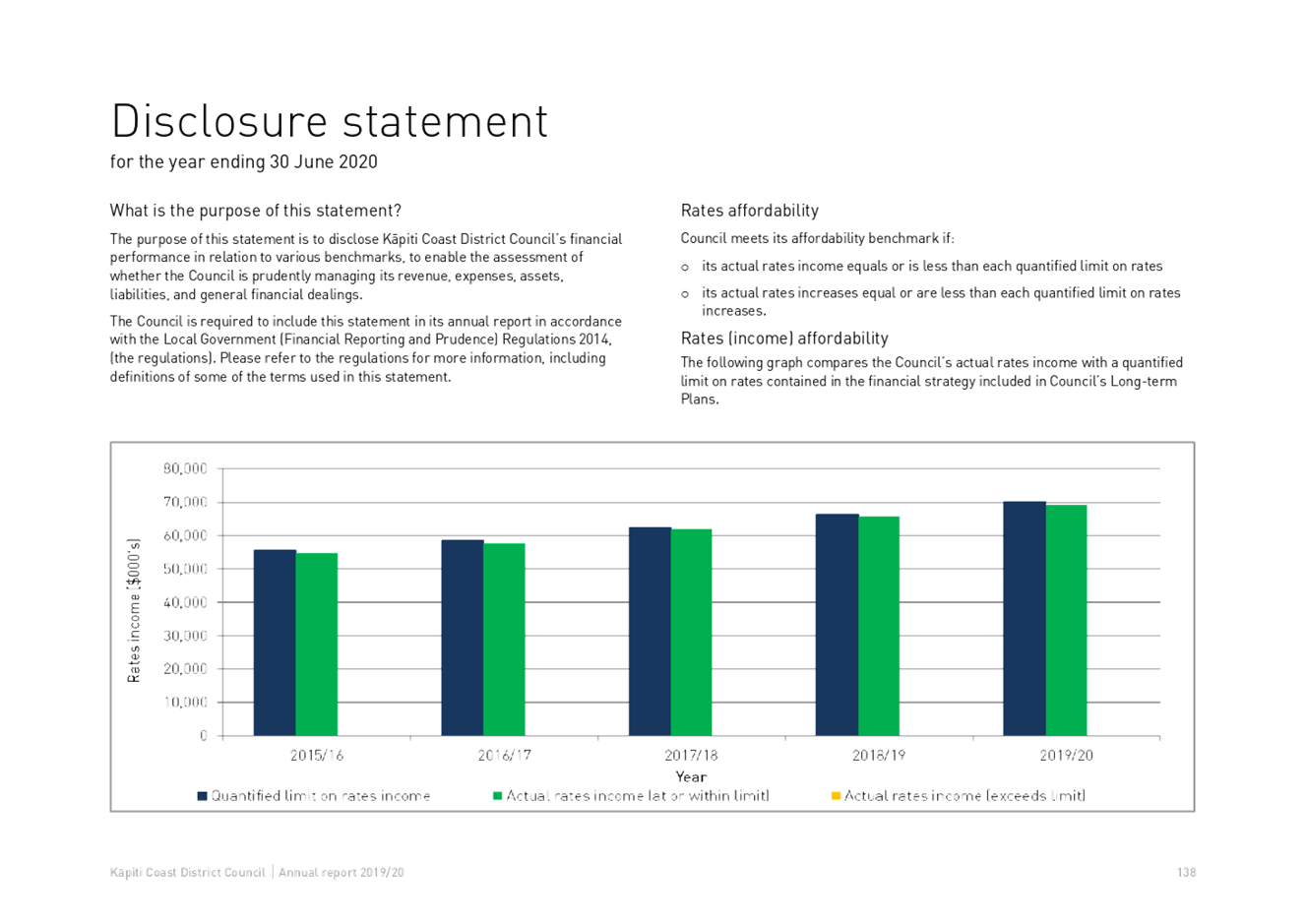
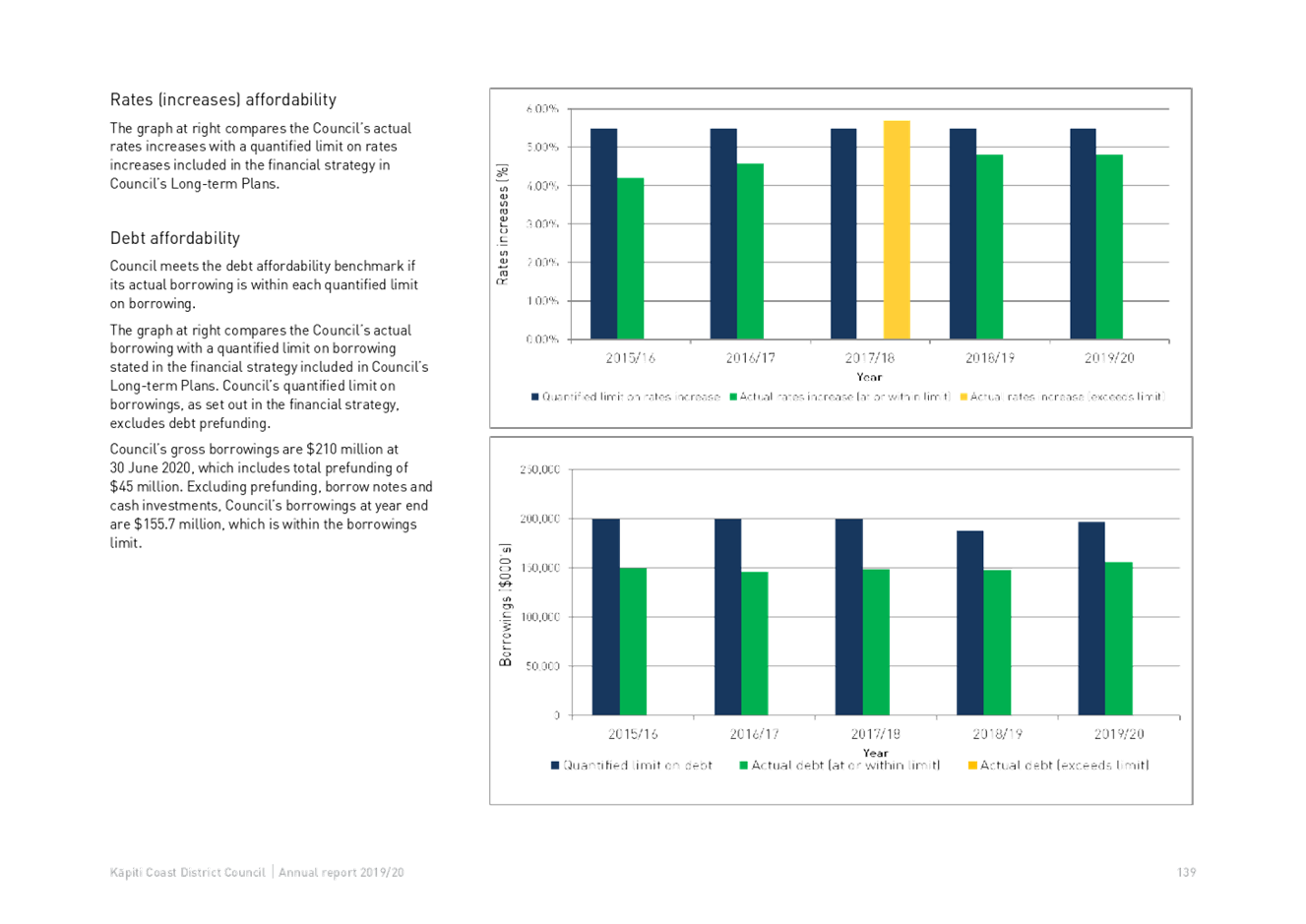

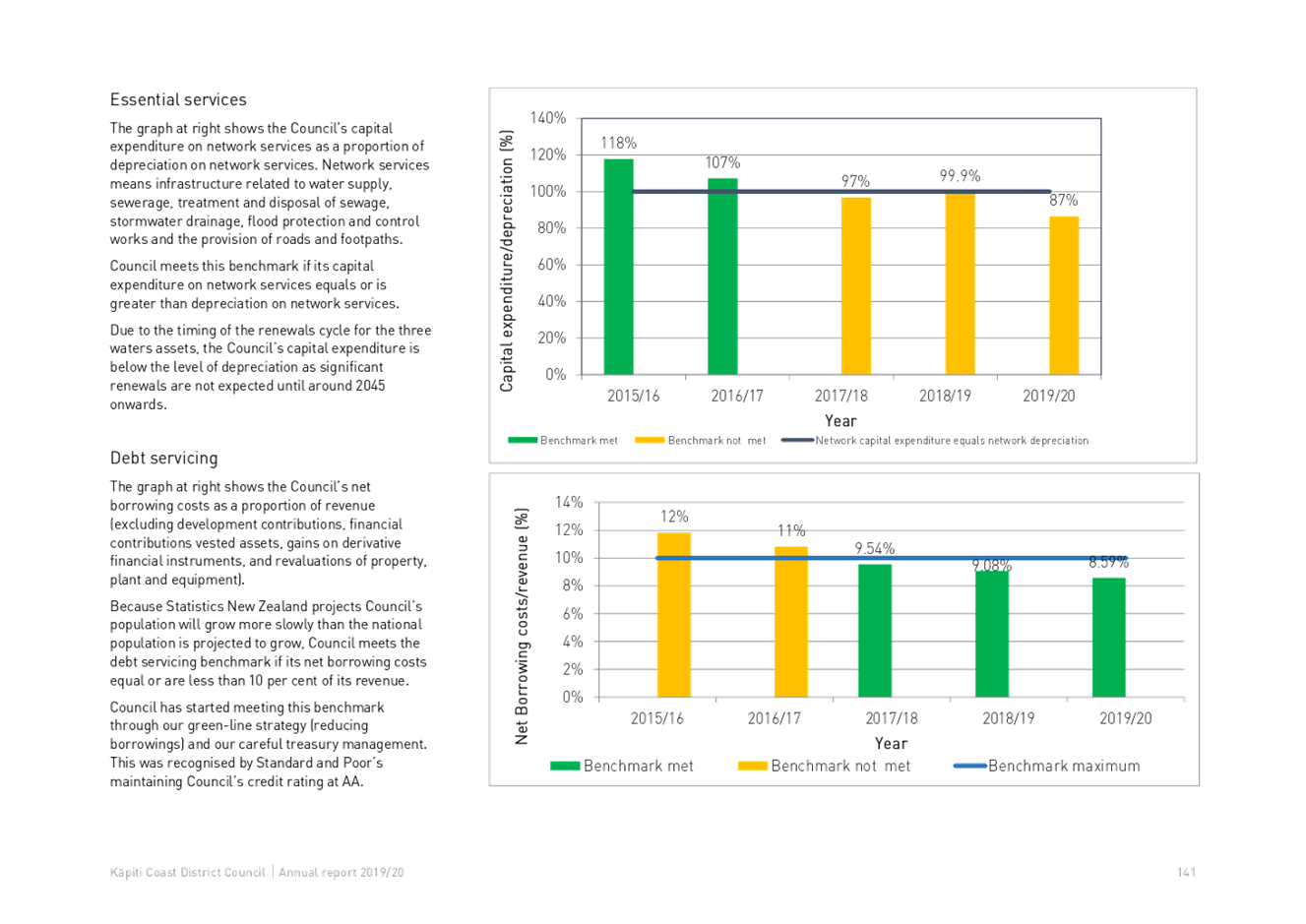
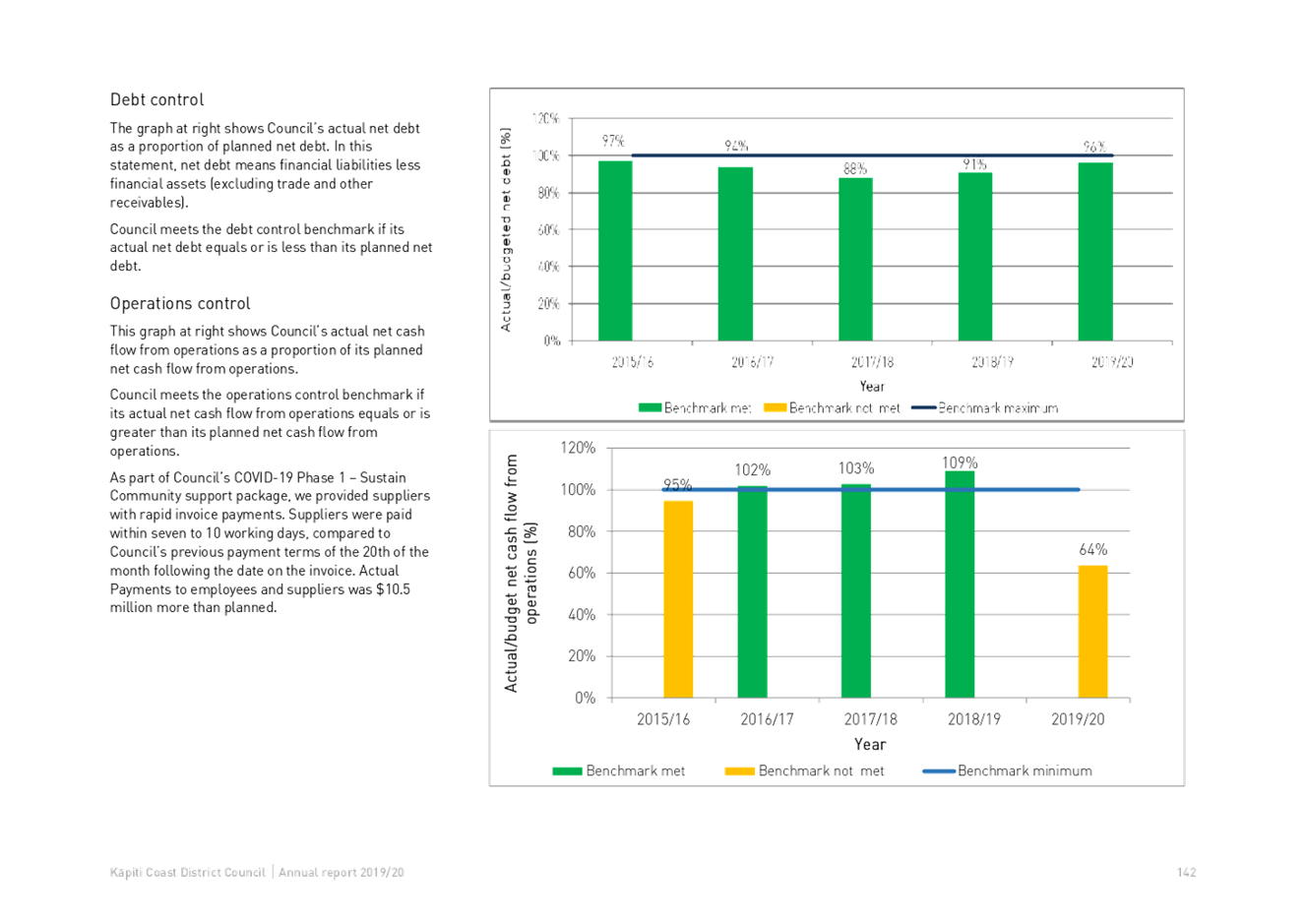
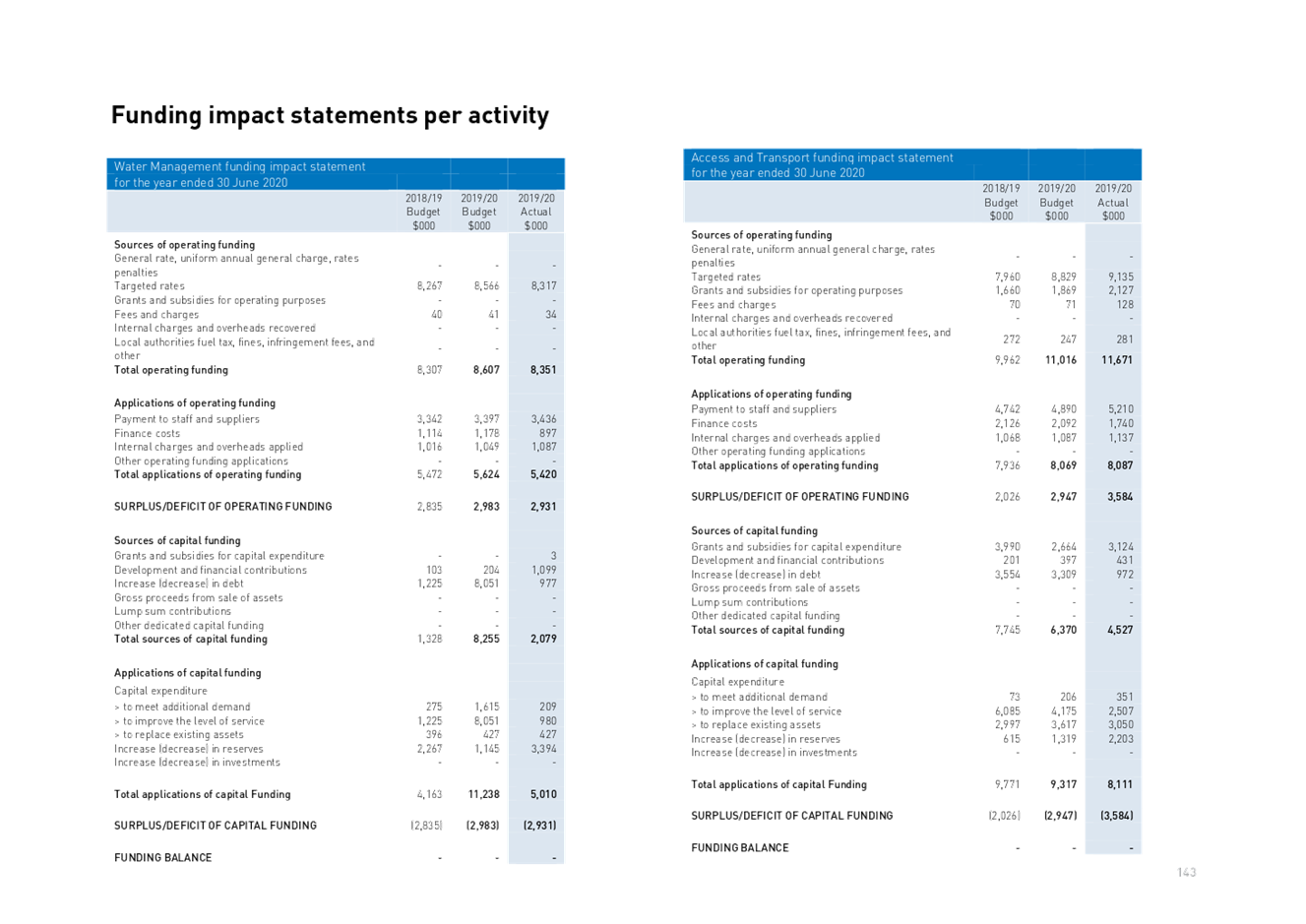

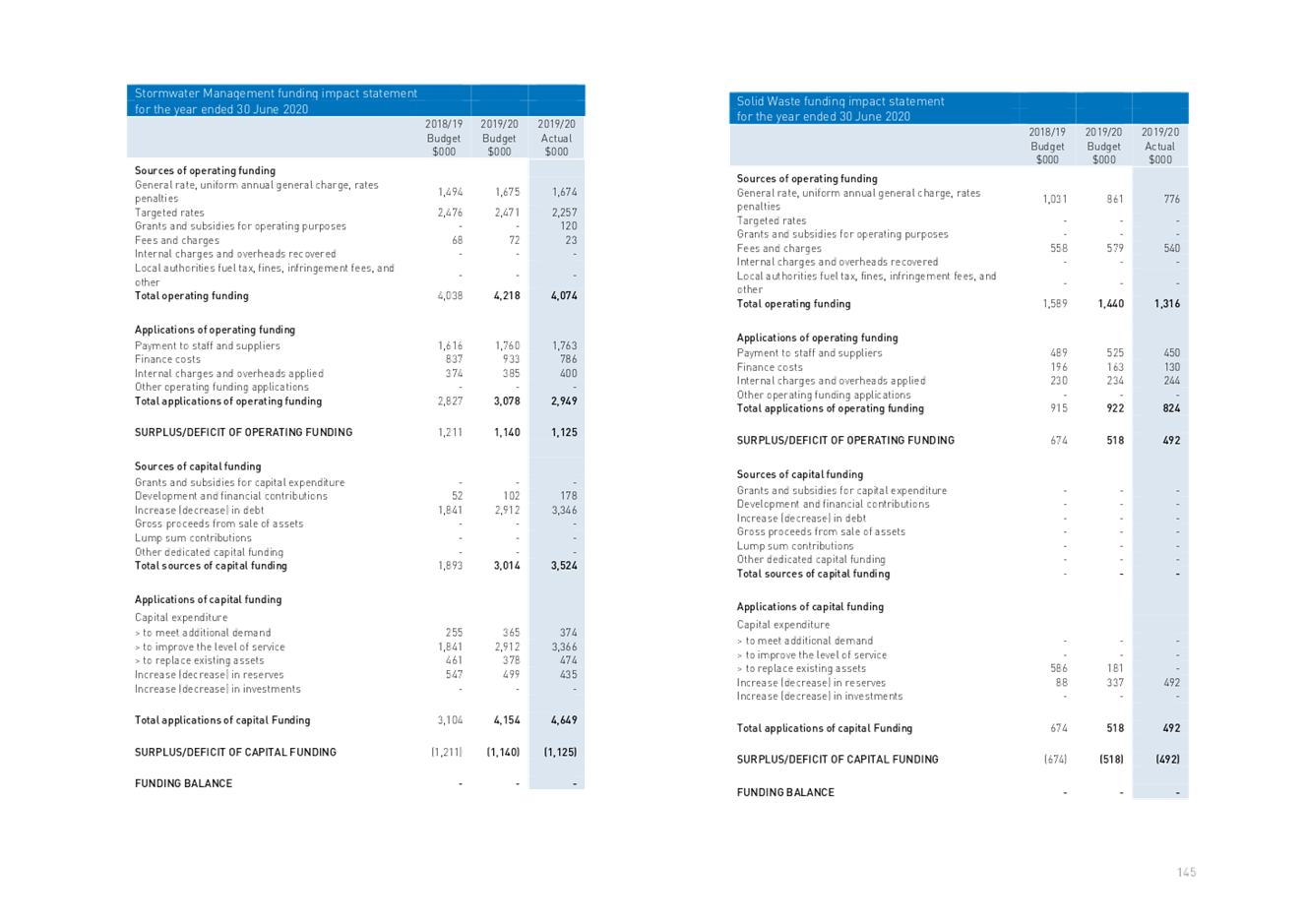
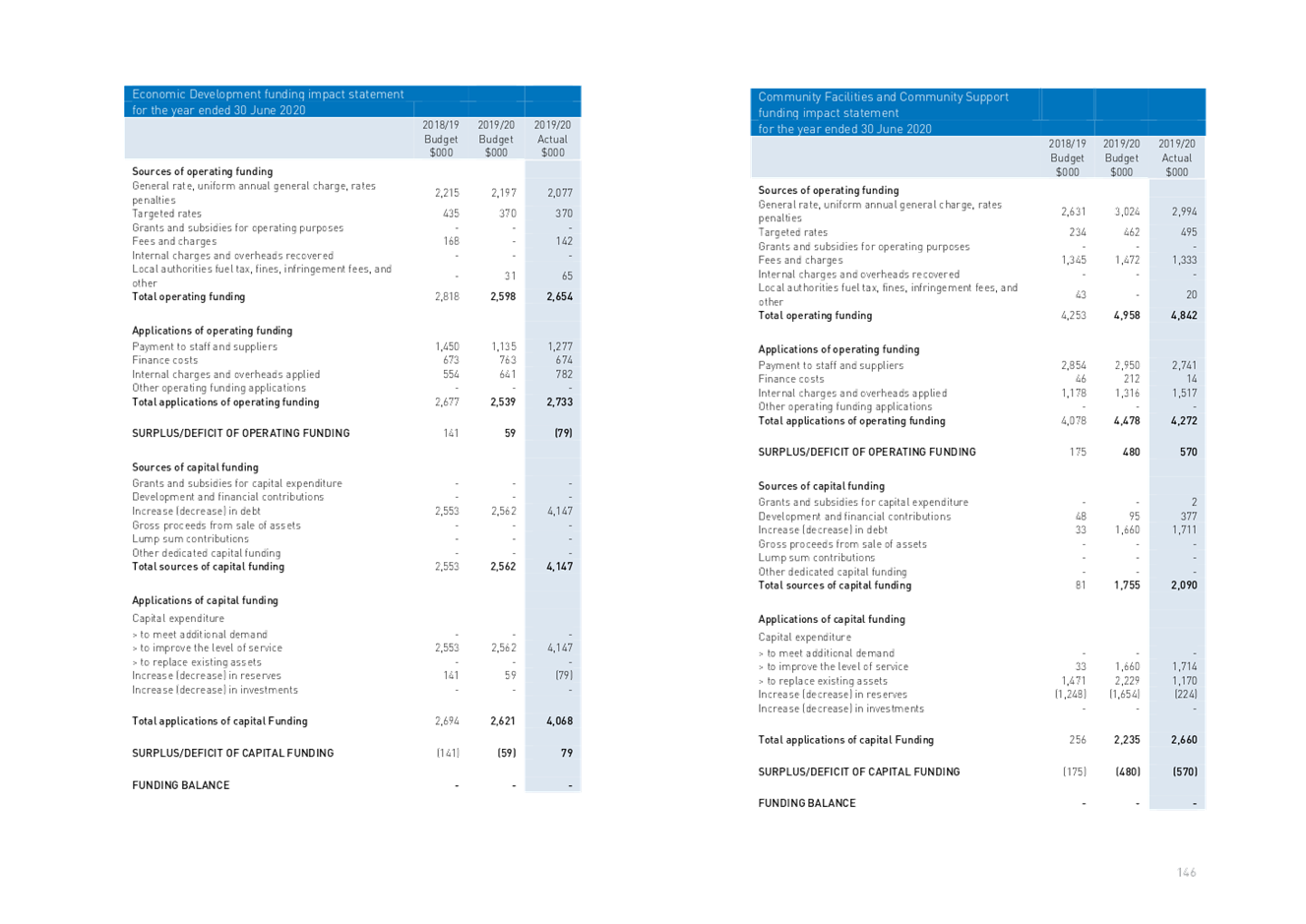


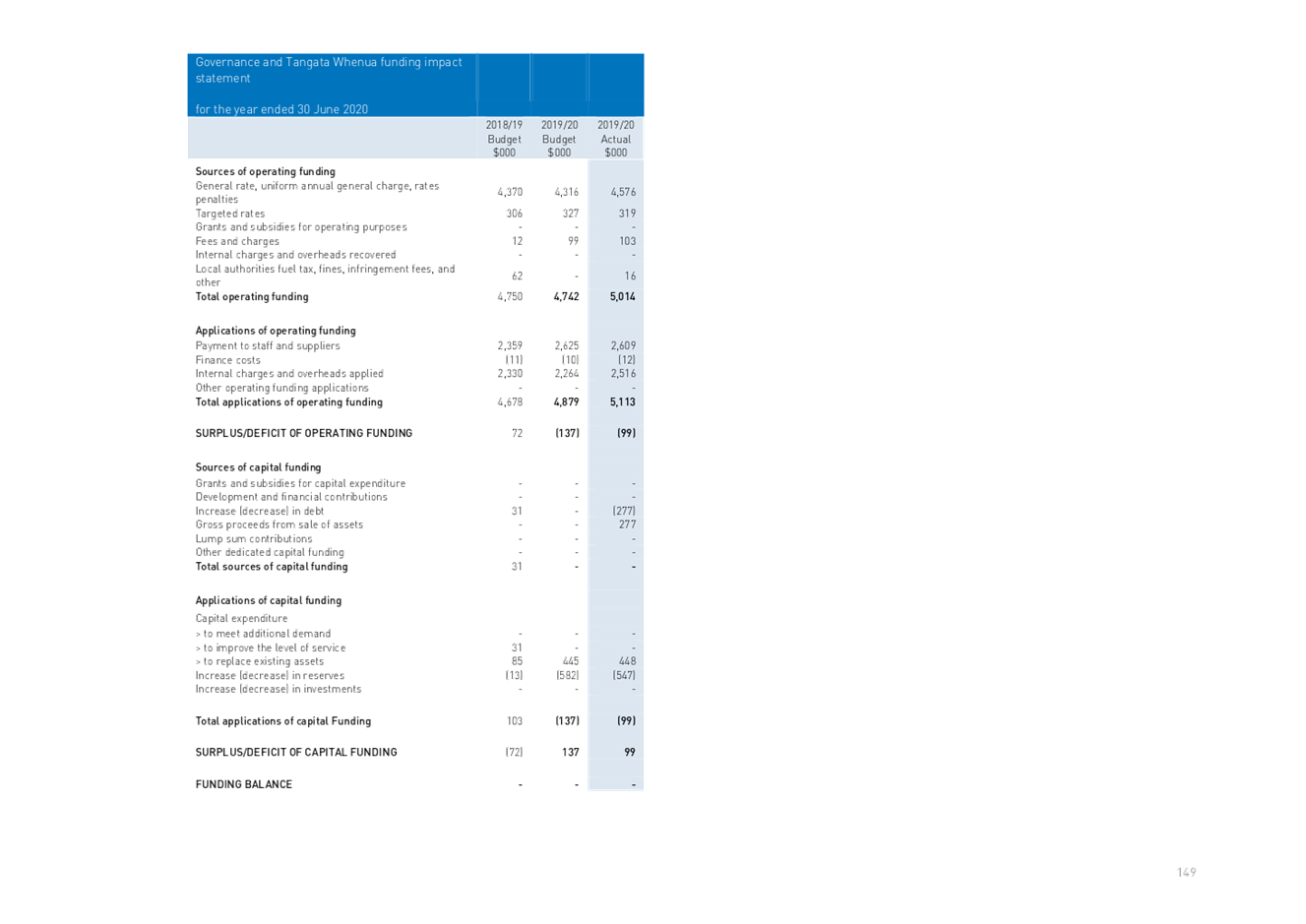
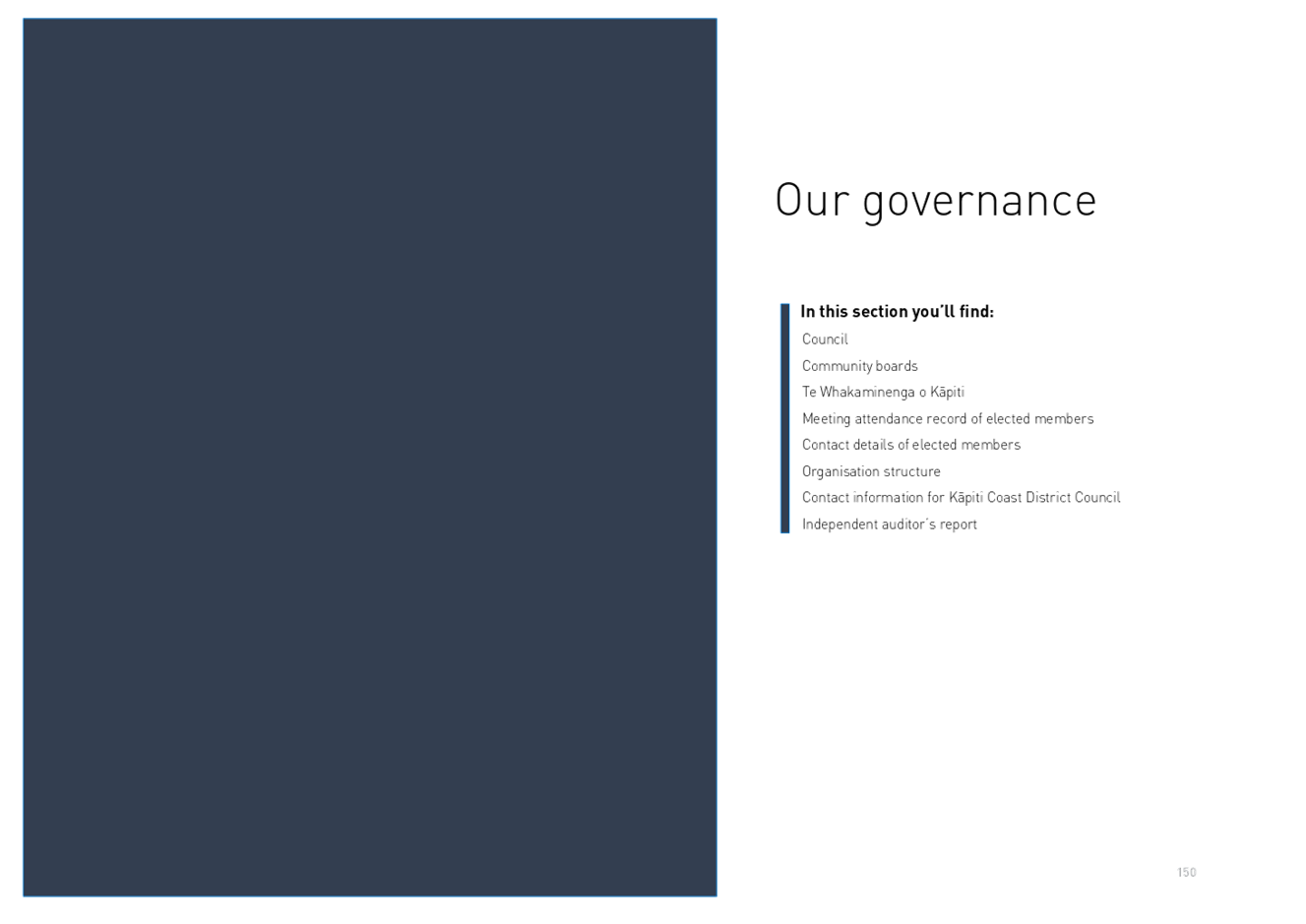
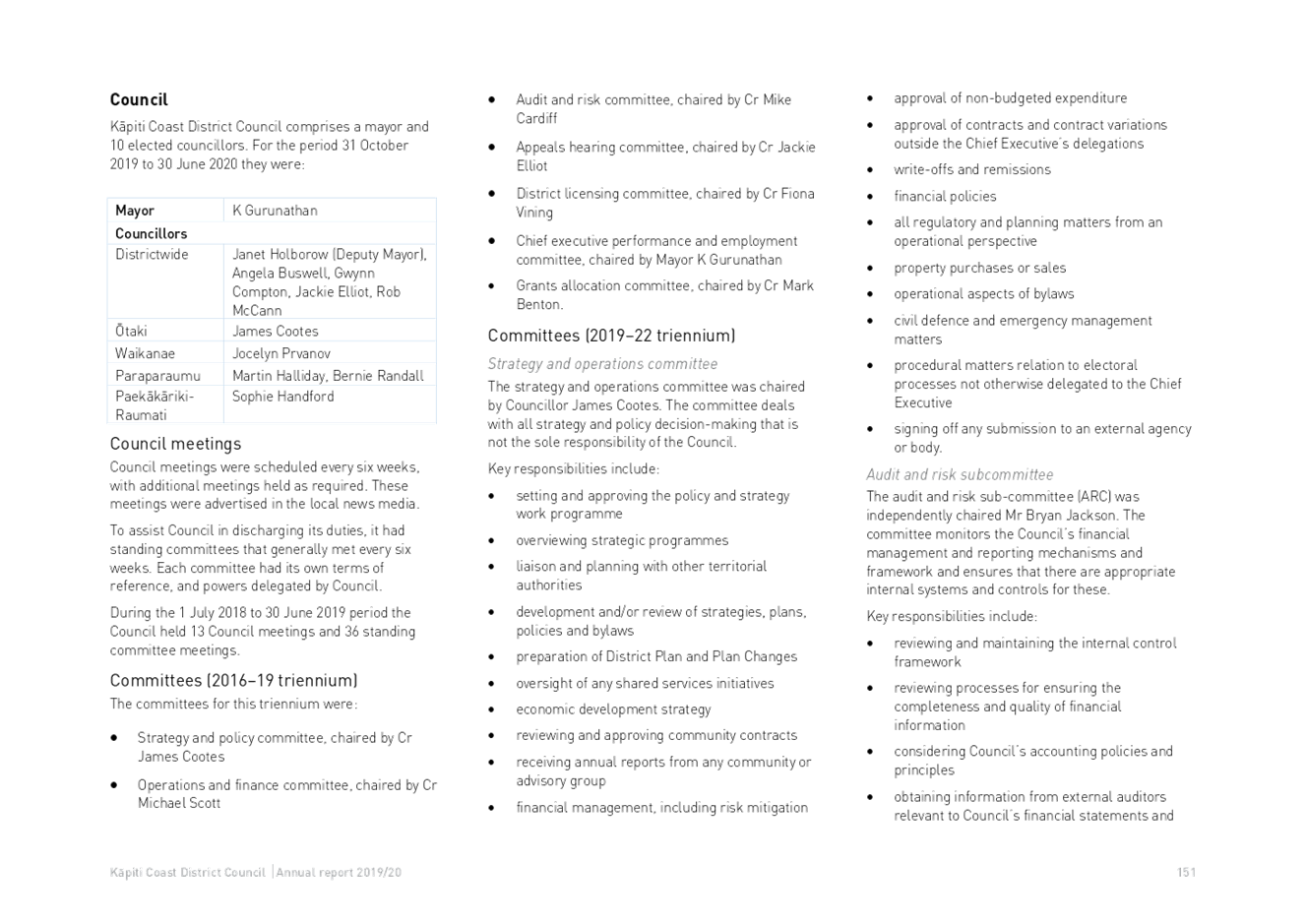
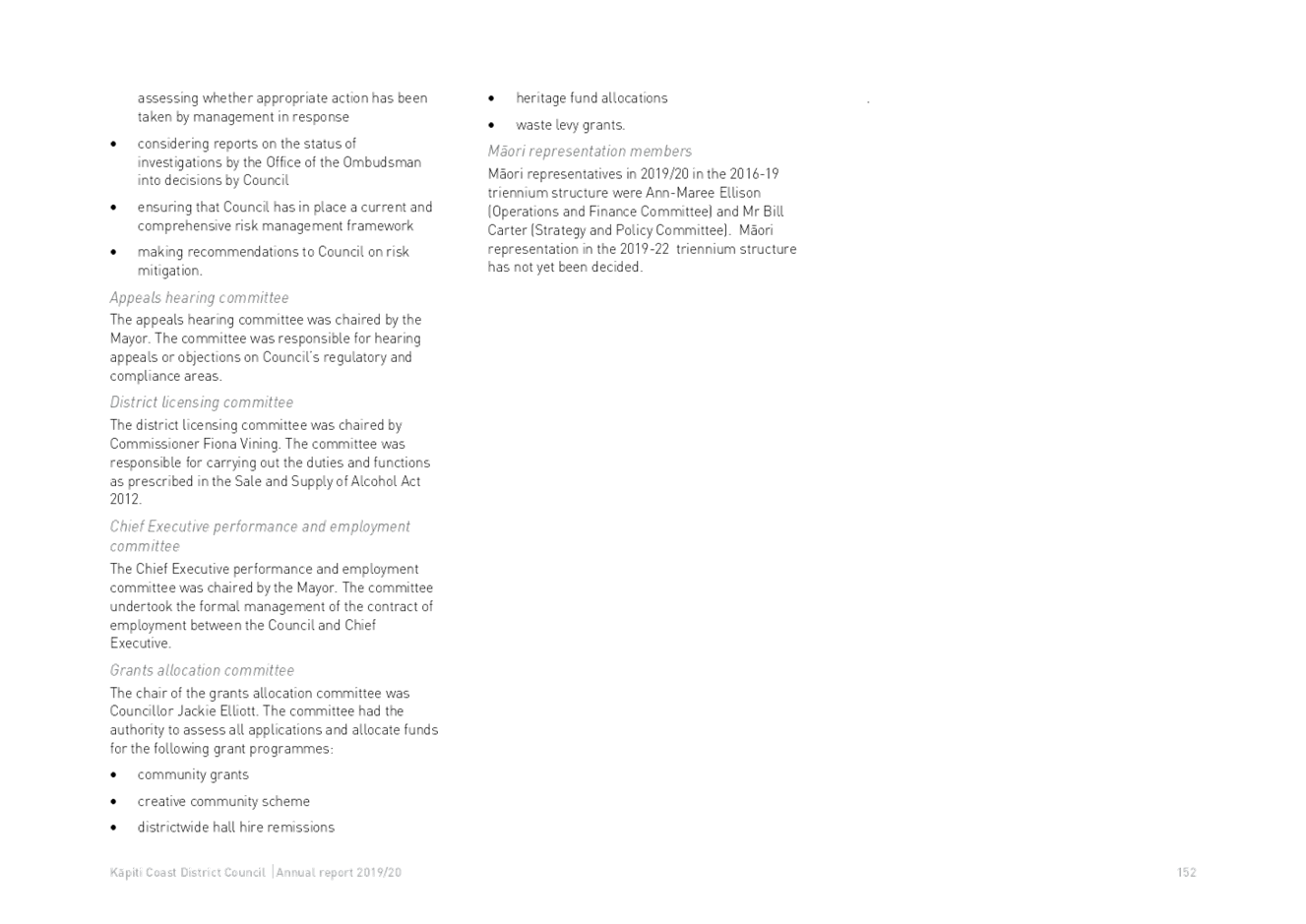
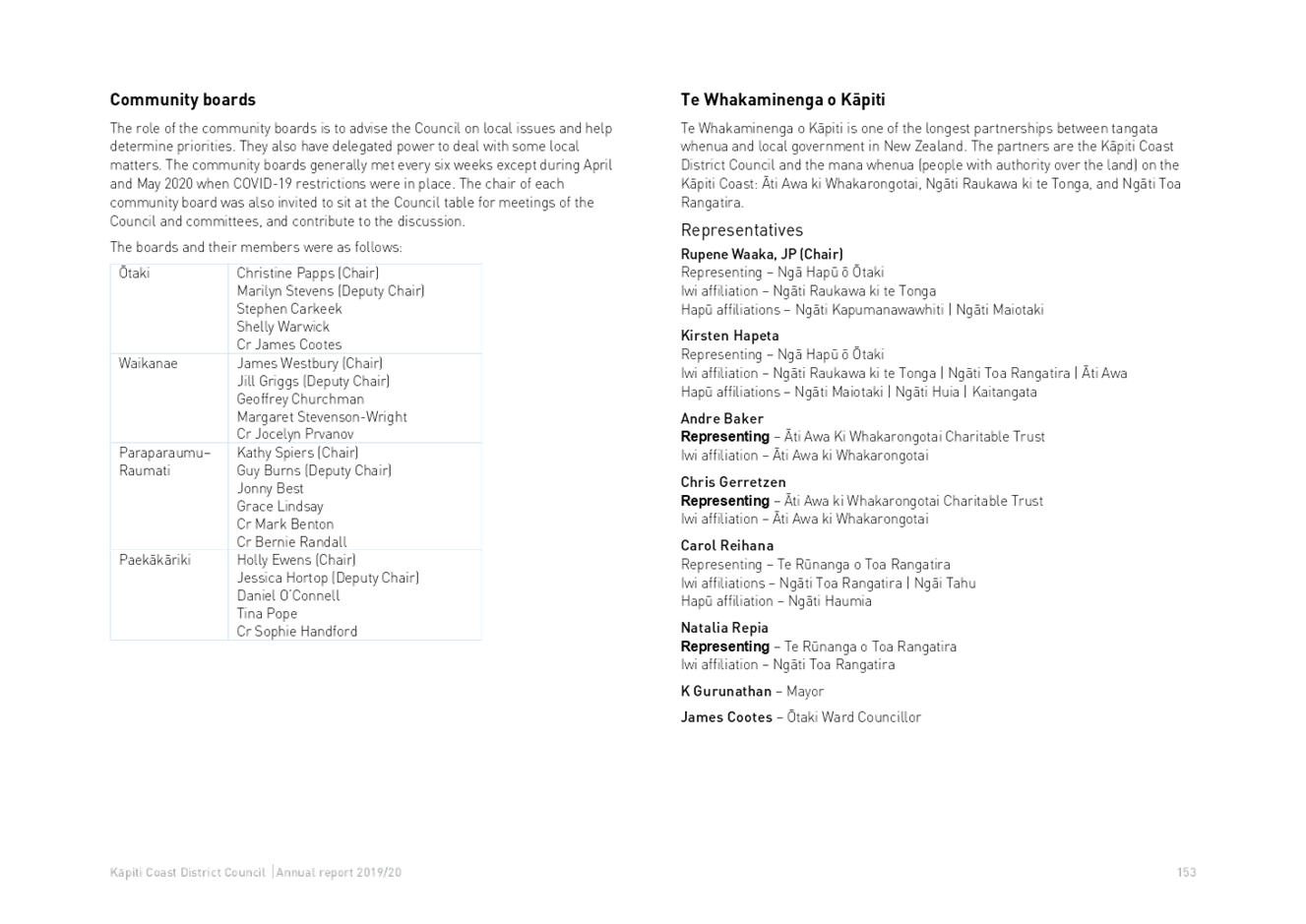
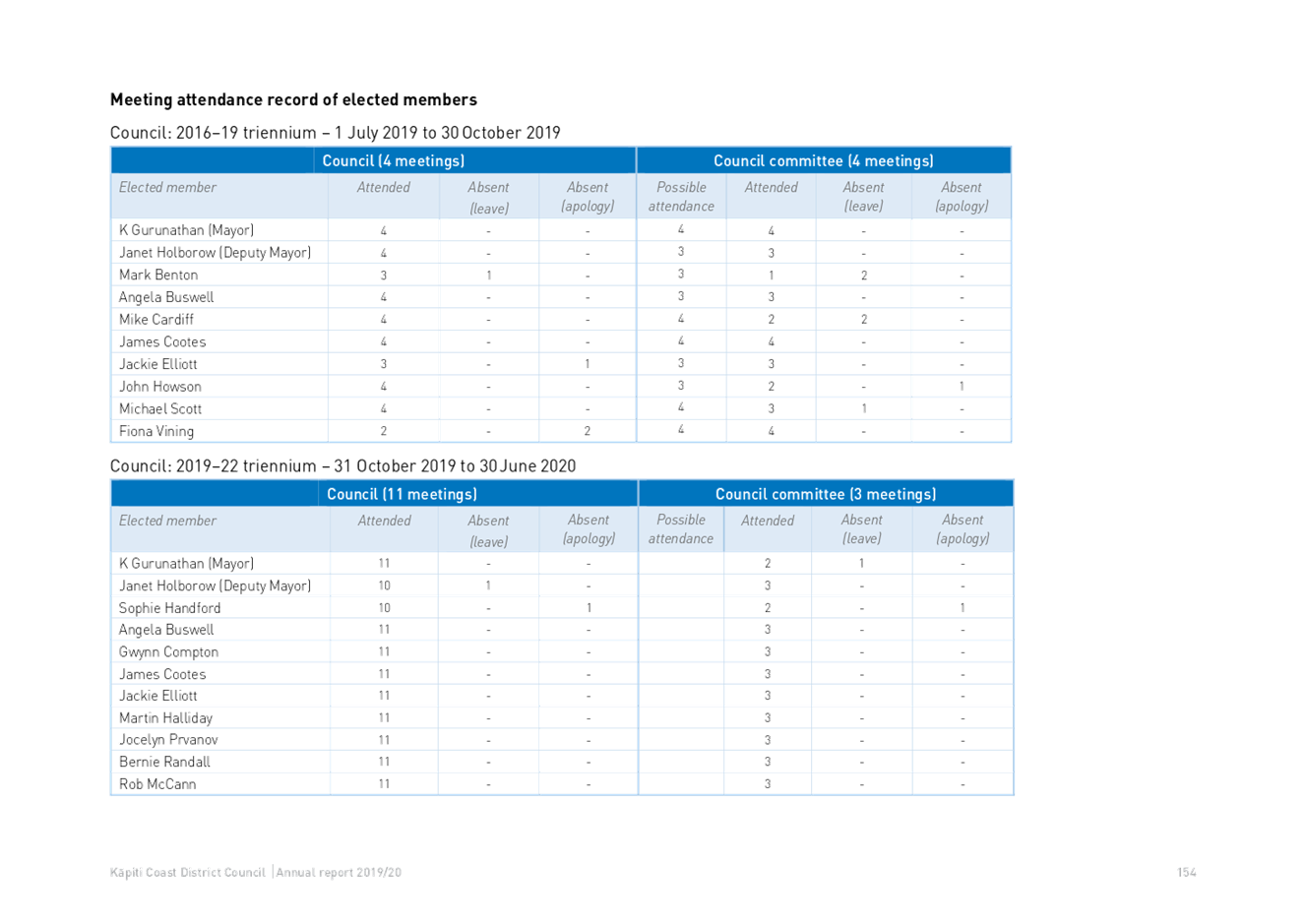
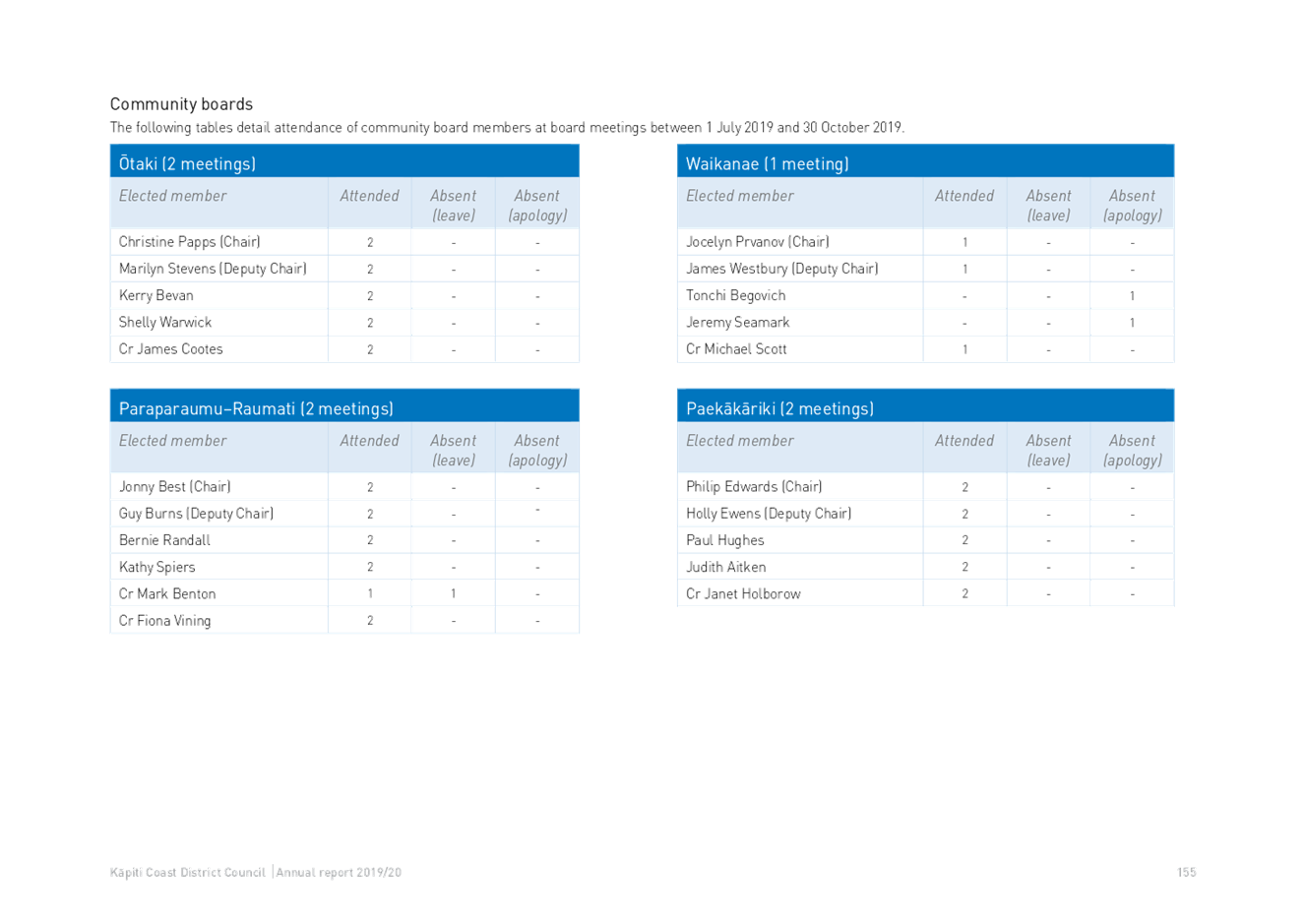
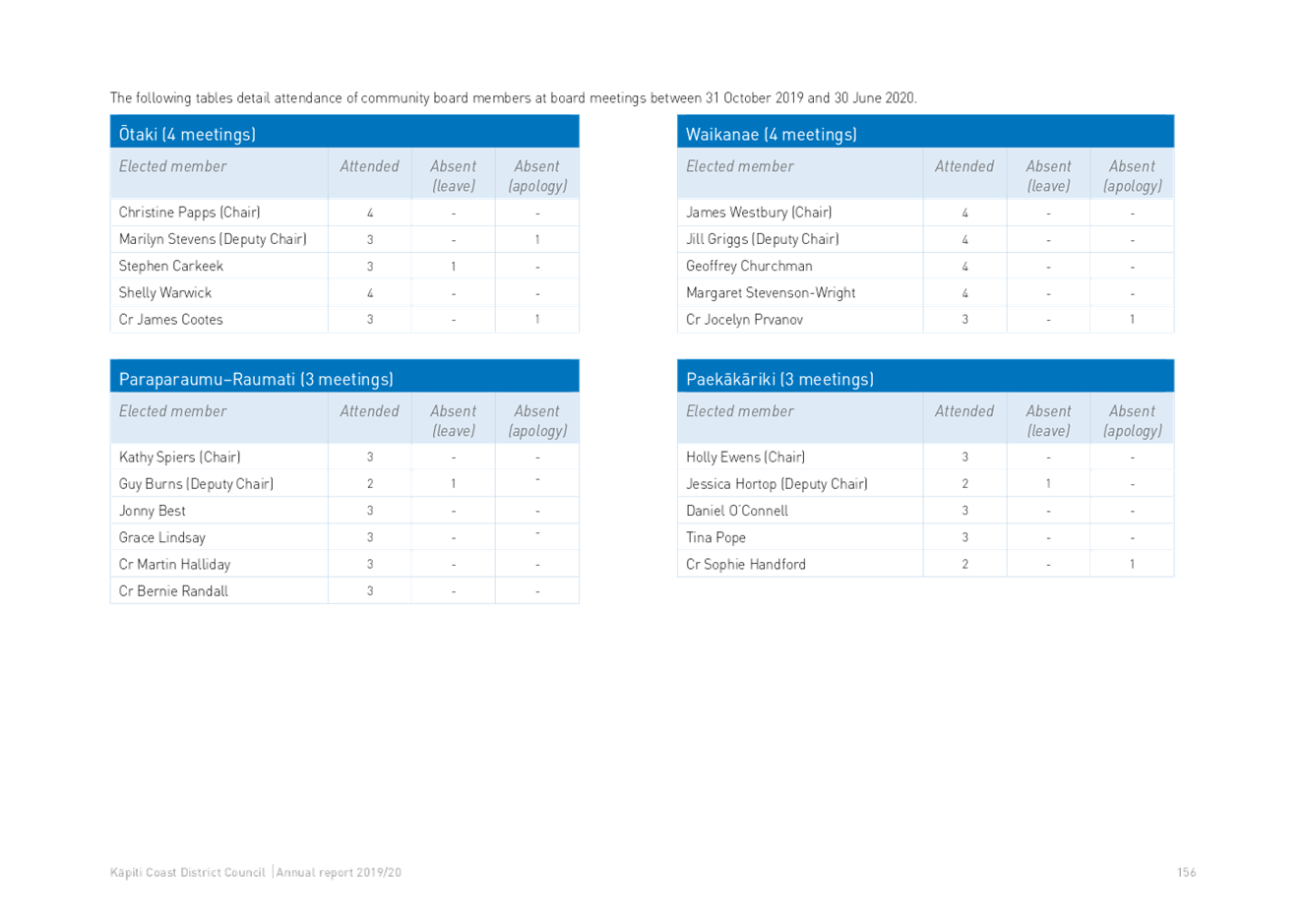
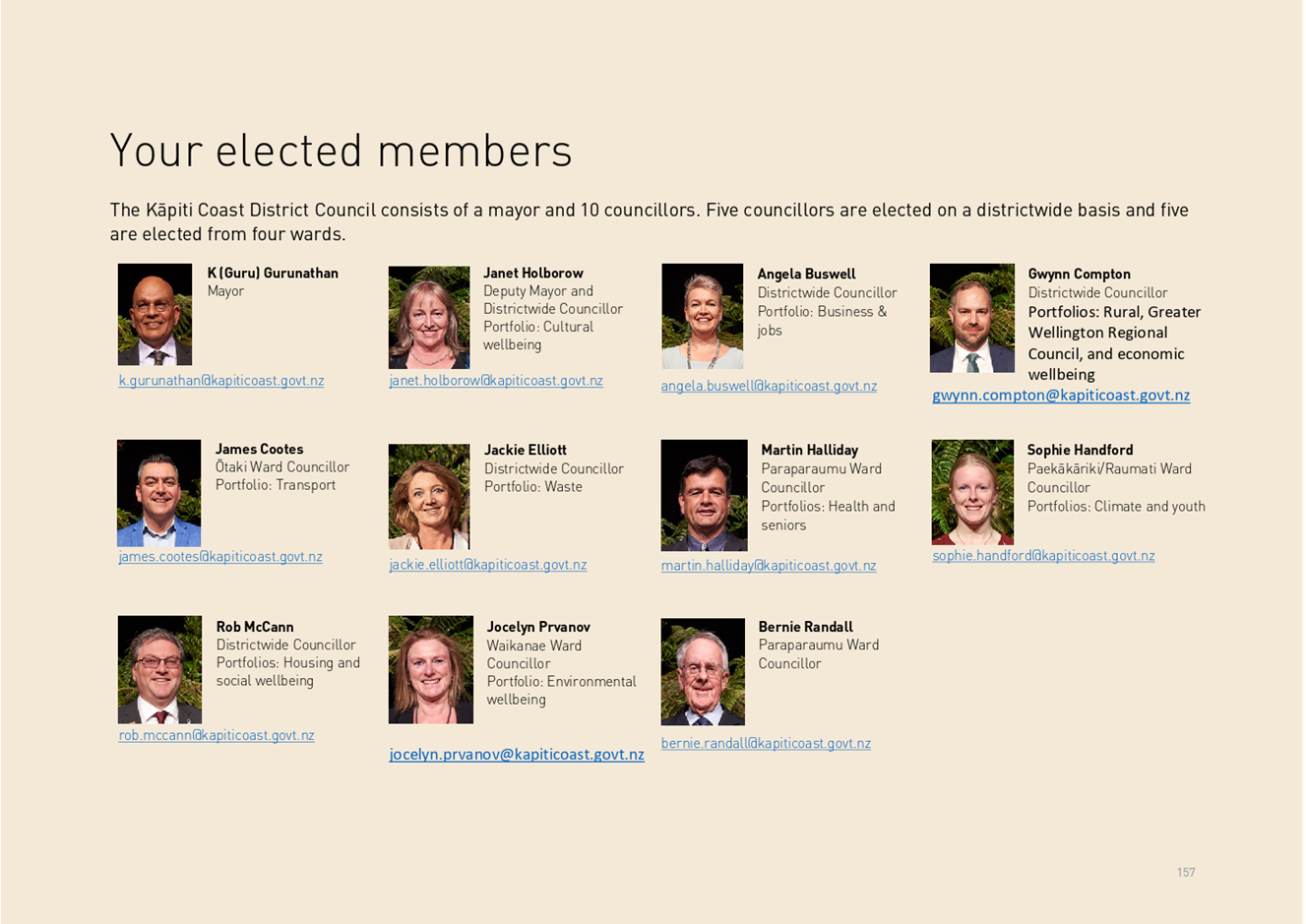
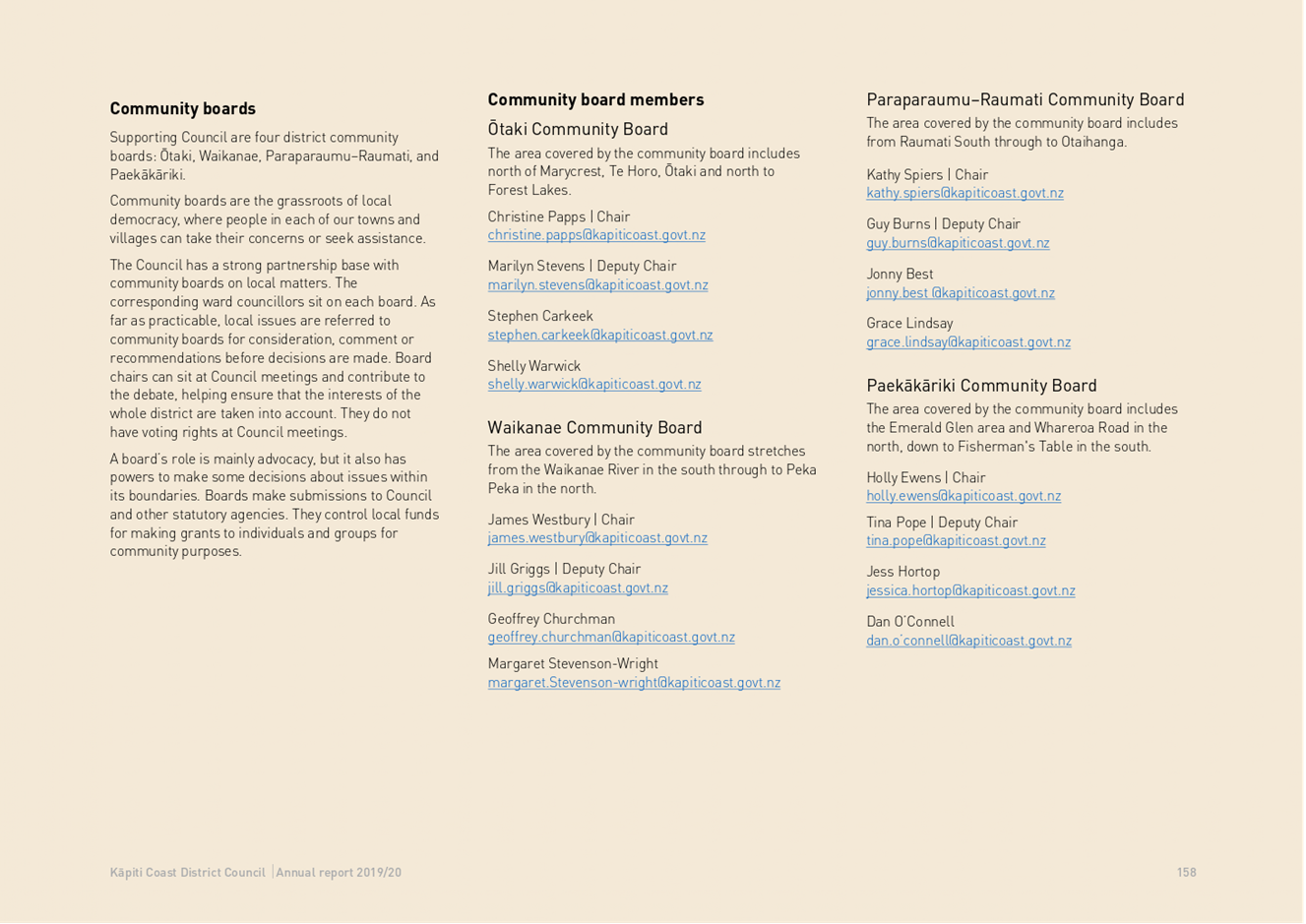
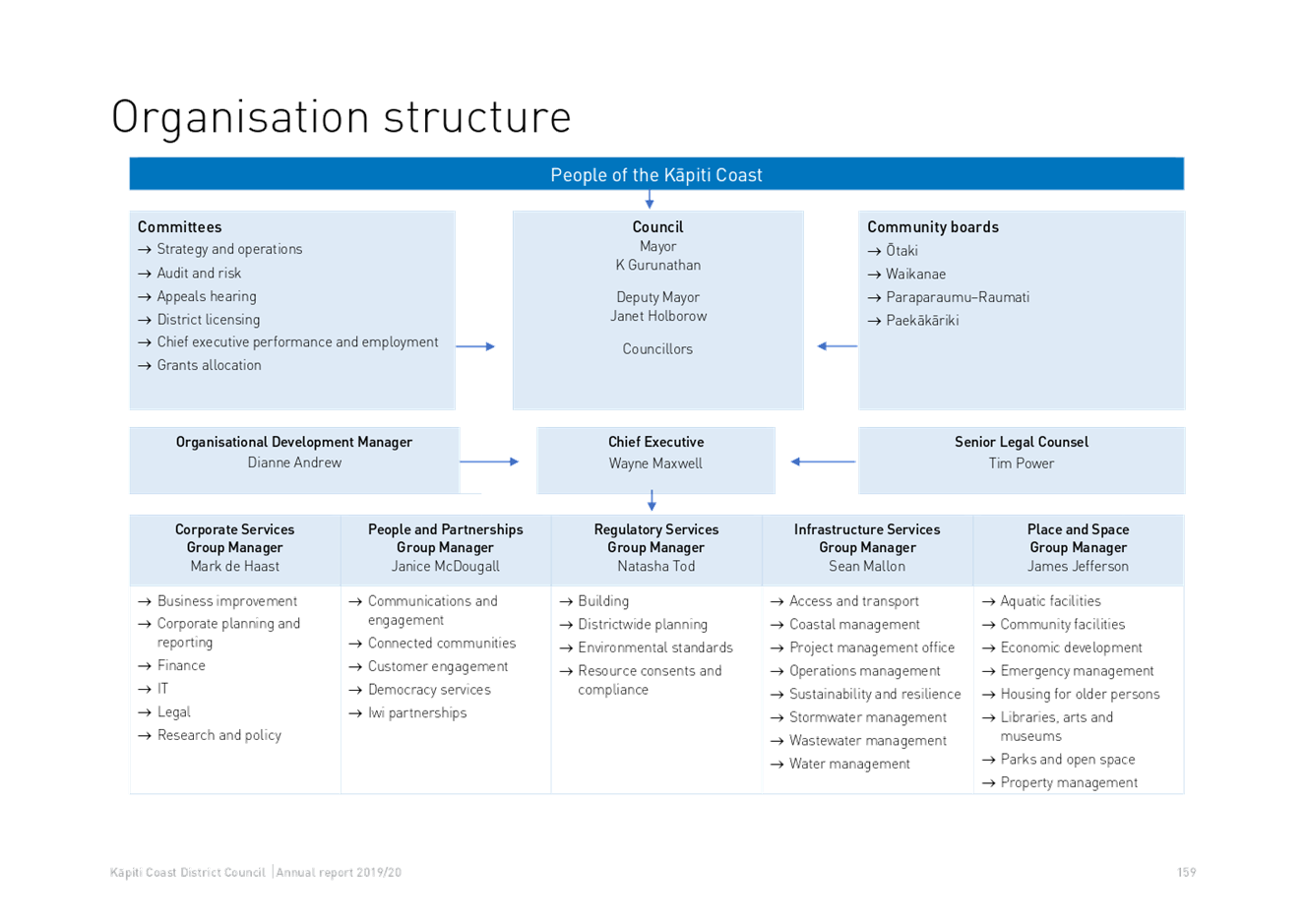
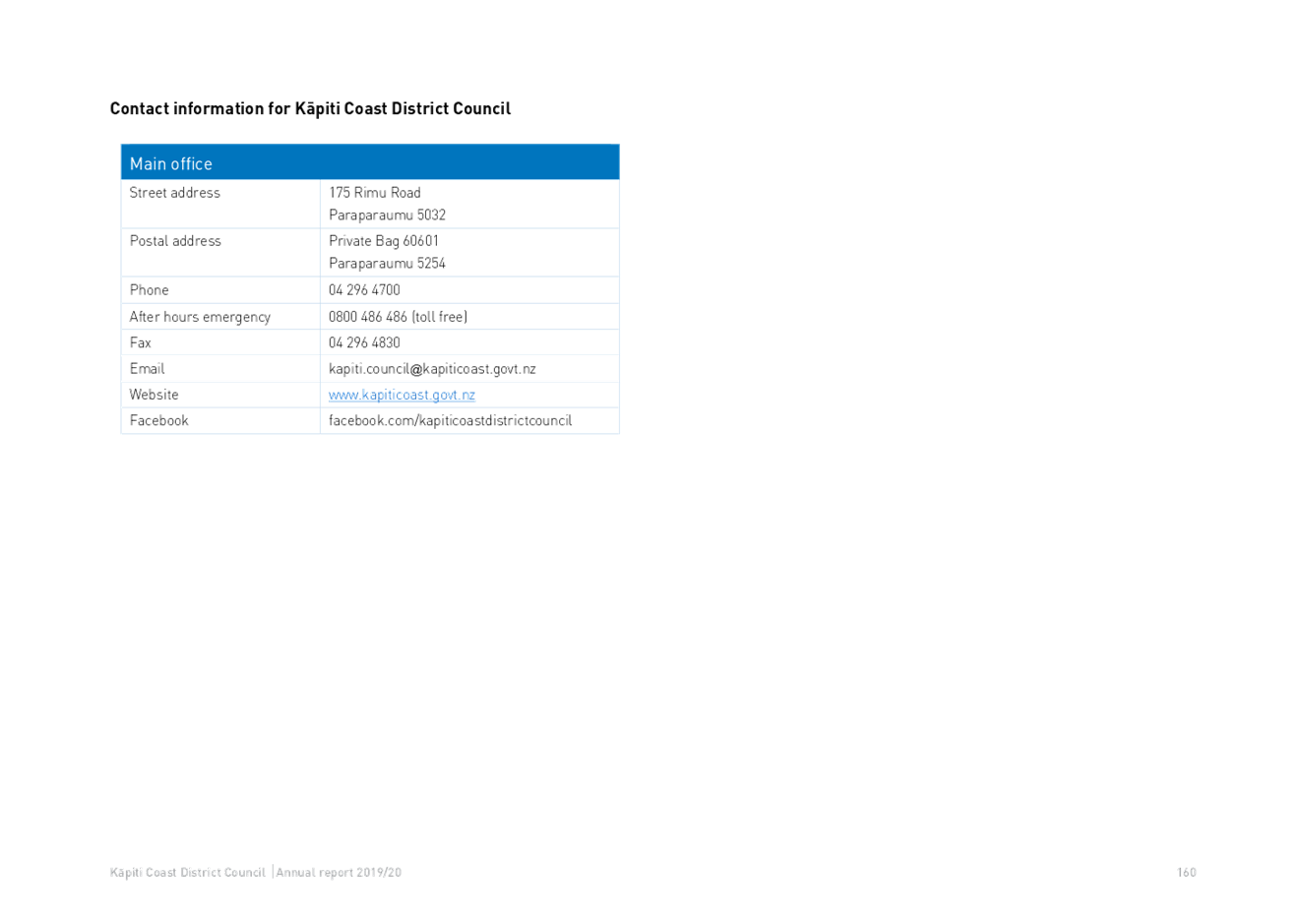
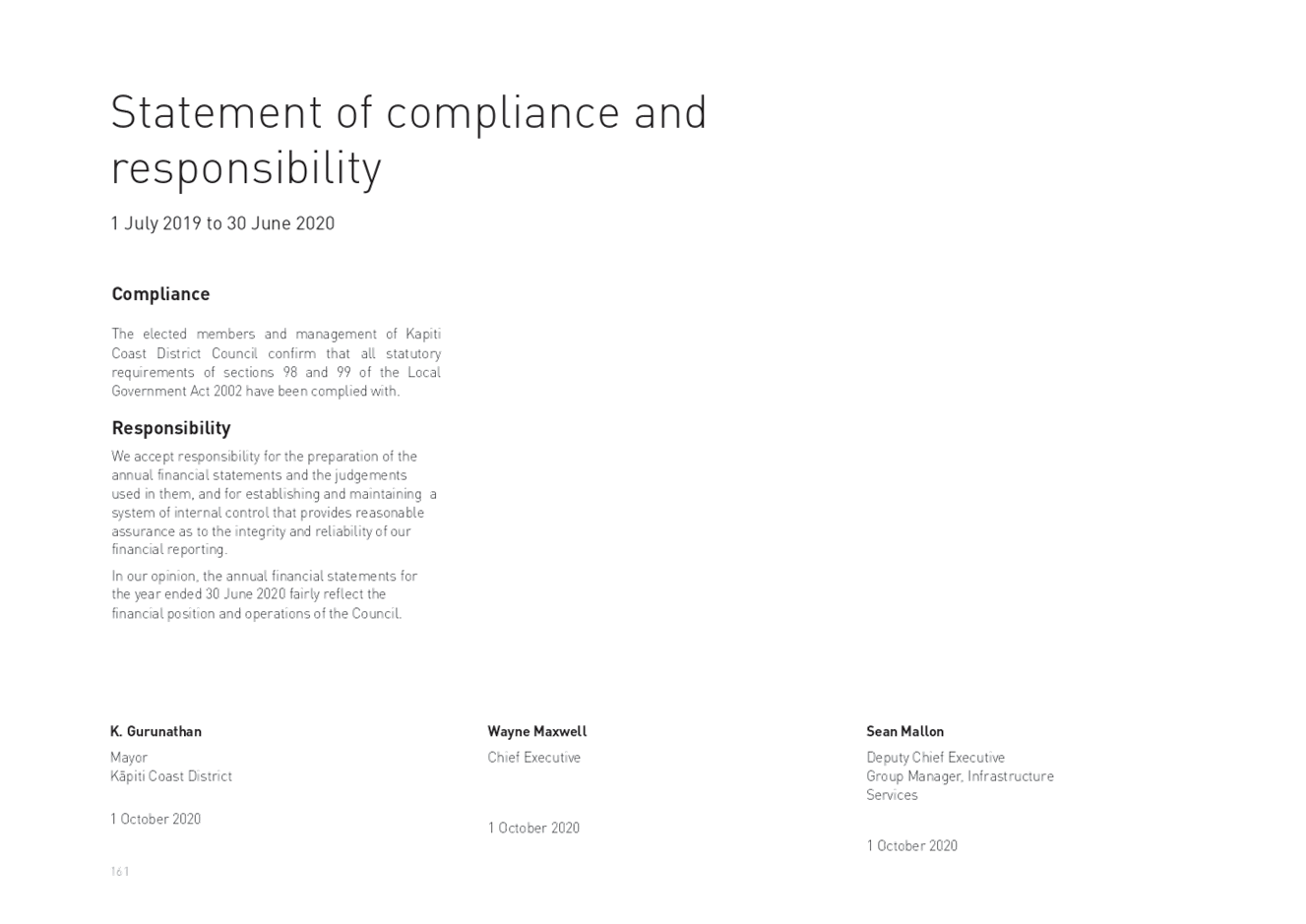
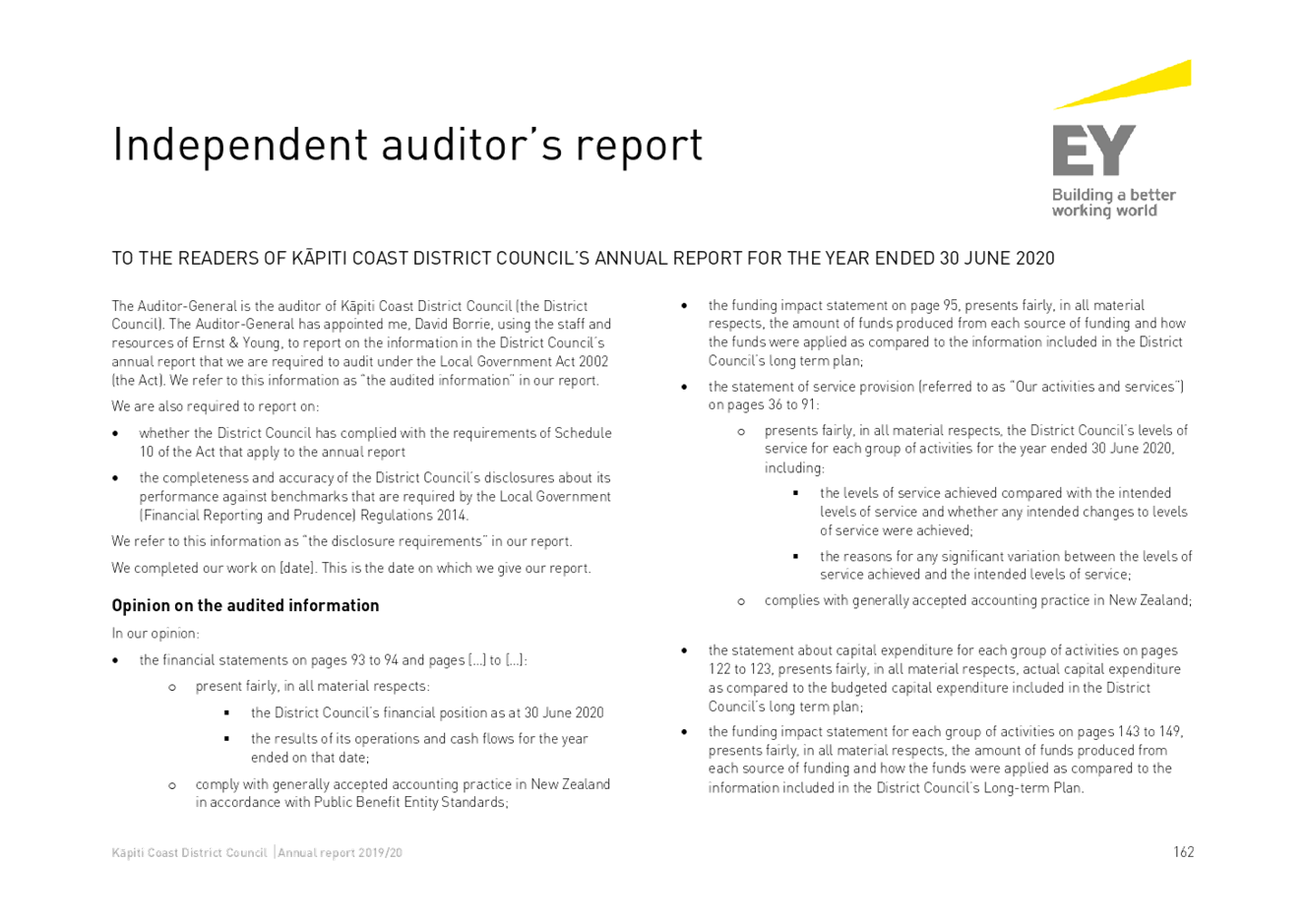
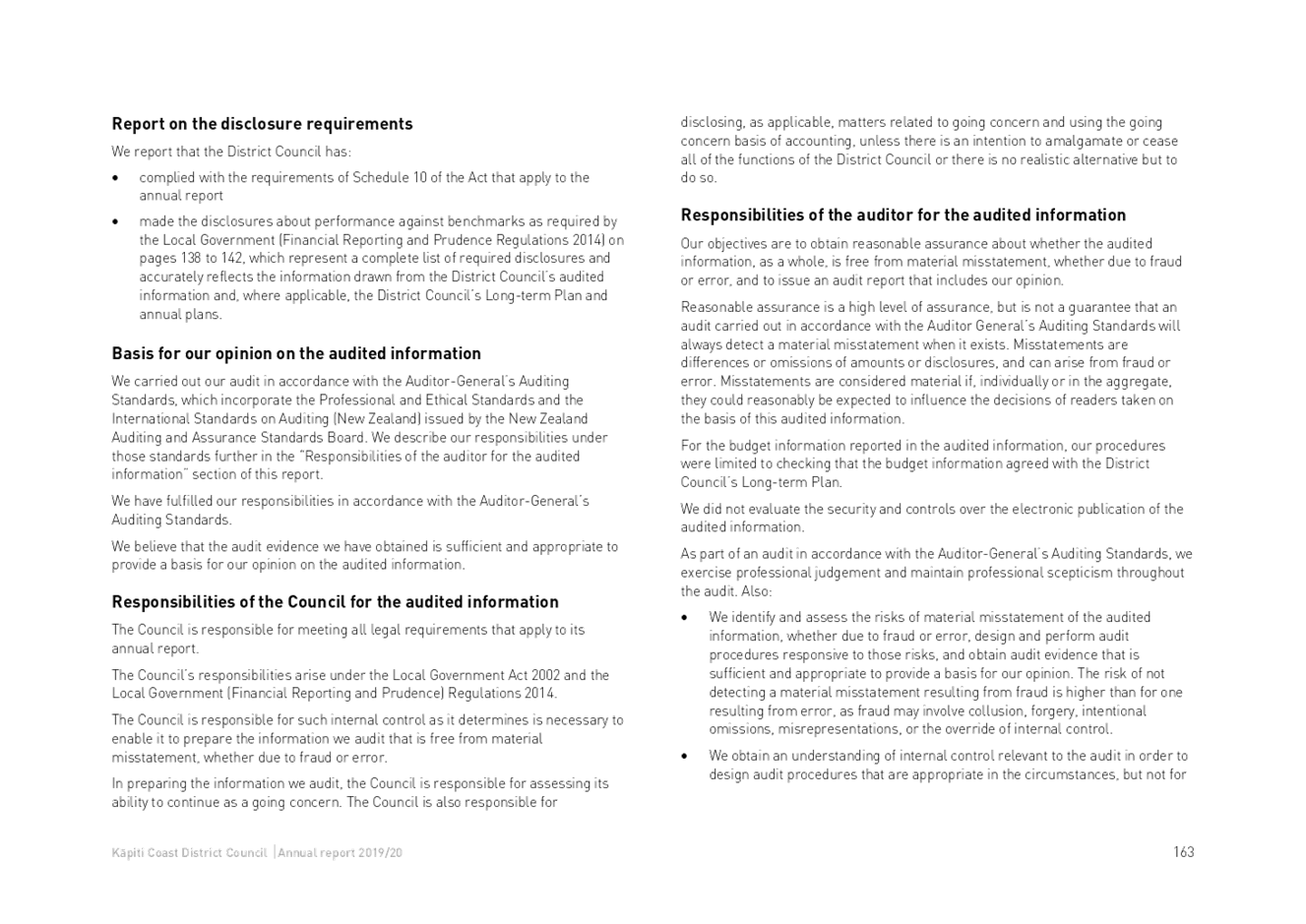
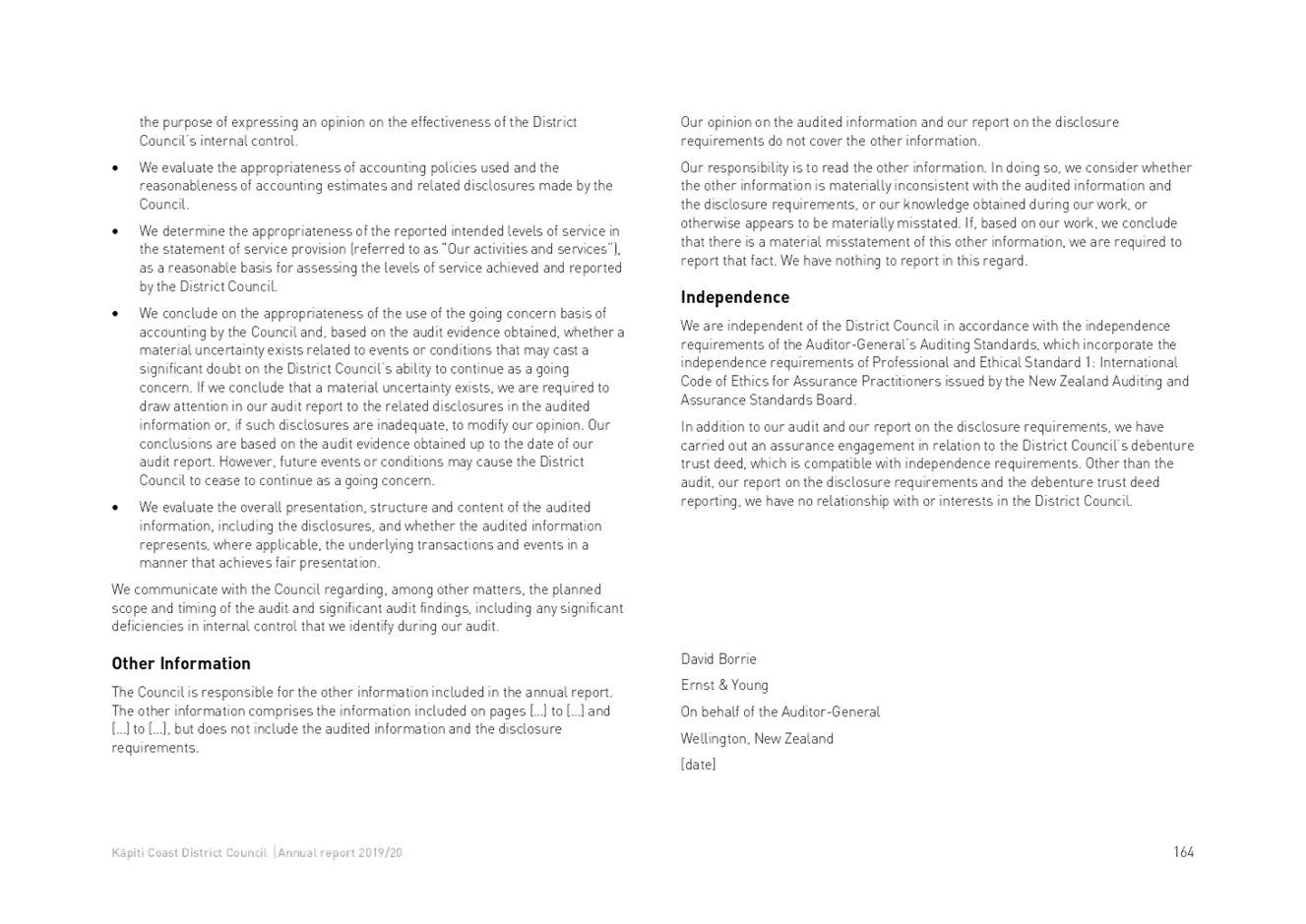
8.3 COVID-19
Recovery Plan for Kāpiti
Author: Jennifer
Allan, Strategic Advisor
Authoriser: Natasha
Tod, Group Manager Regulatory Services
Purpose of Report
1 To
seek Council approval of the Draft COVID-19 Recovery Plan for Kāpiti.
Delegation
2 Council
has the authority under the Governance Structure and Delegations 2019-2022
Triennium to consider this matter within its general role of local government
under the Local Government Act 2002.
Background
3 Work
on recovery started in April 2020 in tandem with the COVID-19 response.
Recovery seeks to minimise the consequences of an emergency, restore essential
community services and functions, reduce future exposure to hazards and their
risks, and regenerate and enhance community well-being.
4 As
well as undertaking immediate actions to support recovery, a core focus has
been to produce a recovery plan for the Kapiti Coast district with the aim of
identifying and committing to a range of actions to help Kapiti ‘build
back better’.
5 Recovery
is a key part of CDEM functions and there is a requirement for development of a
recovery plan to bring together our recovery activities.
6 Council
has previously received updates on this work at briefings on 21 April, 26 May,
21 July and 18 August 2020, and most recently an update at the Council meeting
of 27 August 2020.
7 Many
uncertainties still remain as the pandemic continues to unfold around the world
and a proven vaccine is yet to be developed. Government support for
businesses in the form of loans, wage subsidies and tax relief has cushioned
some of the impact on businesses but unemployment is rising and will likely
continue to increase for some time. The most recent Treasury figures
predict unemployment to reach a peak of 7.8% nationally by March 2022, up from
a pre-COVID-19 level of 4.2%.
8 The
resurgence of COVID-19 that began in Auckland in August has created new
uncertainty and is having further economic and social effects.
9 Despite
uncertainties, it is important to progress recovery based on what is known, and
be ready to adapt further. Recovery planning must be agile and open to rapid
changes in circumstances. This is particularly the case if part or all of New
Zealand needs to move back up to a Level 3 or 4 response again. Ongoing
monitoring of key indicators will be undertaken to check if new concerns or
issues are emerging which require a change in priorities to address.
10 A
cross-council project team has worked with consultant support to engage stakeholders
and develop a Recovery Plan that:
10.1 Sets
out a vision and aims for recovery on the Kāpiti Coast;
10.2 Identifies
short, medium and long term actions; and
10.3 Communicates
the Council’s work to support community recovery.
11 The
Recovery Plan is supported by updates to our webpage that demonstrate the
actions the Council has underway, and has already taken, to support recovery
across the district. It is complemented by Love Local campaign videos
which tell local stories about response and recovery from the perspective of
members of our community.
12 Recovery
planning at a local level also needs to connect with what is happening at
national and regional levels. There are three aspects in particular to
draw your attention to:
12.1 Caring
for Communities: This is a workstream established by Central government to
operate on a regional basis. It is to be governed by a Regional Leadership
Group involving a range of health and welfare agencies as well as Police, CDEM
and local government, and will have Māori and Pasifika
representation. The work in this area is still being formed up and it is
expected to take a lead role in both recovery and resurgence/response and
focussing on the long-term wellbeing of communities.
12.2 Government
funding: In addition to the substantial financial support the Government
has made available to mitigate impacts of the response (e.g. wage subsidy and
other business support), there is considerable further funding available to
support recovery. One increasingly common avenue for distribution of this
financial support across multiple government agencies is via various new
contestable funds being established. Increasing the amount of resource
focused on identifying and applying for funding has the potential to be very
beneficial for the district.
12.3 Regional
recovery collaboration: Local government work on recovery in Wellington
Region has been underpinned by a philosophy of ‘regionally coordinated,
locally-led’. Wellington region’s Recovery Managers have met
regularly and they have been coordinating and collaborating on regional
recovery where it makes sense to do so. A suite of regional recovery
initiatives identified by this group has been endorsed by the Mayoral Forum.
13 We
have had some success already in the district with obtaining funding to
progress initiatives. In addition to the Gateway funding, this has
included:
13.1 Funding
for two positions for up to two years under the NZ Libraries Partnership
Programme, to support provision of library services to support community
recovery
13.2 Funding
for the refurbishment of the Ōtaki Civic Theatre
($500,000), from the PGF funding allocated to renovation of Wall memorials and
Town Halls
13.3 Funding from Innovating Streets for People pilot fund
($124,200) to bring people together to work on solutions for a safer cycle
facility on Park Avenue in Waikanae
13.4 16 Kapiti Sports and other clubs were successful
in receiving a total of $146,000 funding from the Community Resilience Fund 2
through Sport Wellington.
14 Further
government funding opportunities are currently being explored in the following
areas. These opportunities are related to funding announced in the
Government’s May budget, which are being made available as contestable
funding over the coming months:
14.1 Tū
Manawa Active Aotearoa – for delivery of play, active recreation and
sports experiences for tamariki and rangitahi (Sport New Zealand)
14.2 Lottery
COVID-19 Community Wellbeing Fund (Lotteries Commission)
14.3 Cultural
Sector Regeneration Funds – three different funds being explored
(Ministry of Culture and Heritage)
14.4 Further
funding from the Libraries Partnership Programme
14.5 Regional
Tourism Recovery Through Events (Wellington NZ/MBIE)
14.6 Mana
in Mahi / Apprenticeship Boost Funding (Ministry of Social Development)
14.7 Jobs
for Nature – opportunities for potential funding for biosecurity,
biodiversity and riparian areas (Ministry for the Environment).
15 In
addition to this we are still awaiting decisions on several PGF applications.
DISCUSSION
Recovery
Plan Development
16 Building
from the vision endorsed by Council, ‘Working together to restore our
community wellbeing and regenerate a thriving Kapiti economy’, principles
were developed to guide recovery. These were tested with Councillors in May,
and while further work has been done to refine these, they are largely
consistent in intent with those discussed then.
17 The
Recovery Plan has been developed by the Council with the input of a wide range
of stakeholders from the community, business, the not for profit sector and
government. Around 100 people/groups have been involved.
18 An
initial workshop hui was held with representatives of mana whenua of
Kāpiti to explore the impact of COVID-19 on Kāpiti Māori and to
scope some ideas on how Māori can be supported and empowered to recover
from this event. A survey of social sector organisations was commissioned by
the Council and responses to this informed the plan’s actions. Key local
economic development leaders were engaged with.
19 Collectively,
this engagement informed our understanding of the effects of COVID-19 on our
community and helped develop ideas for actions that will assist with the
district’s recovery. An assessment was made of the impact and timeframe
for delivery of actions, and they are grouped by objectives in the Recovery
Plan.
20 Priority
has been given to initial actions in the current financial year. Council
funding for actions beyond the current financial year will need to be looked at
as part of the Long Term Plan due for consideration later this year and early
next year. Some medium and longer term actions have been scoped, and more
groundwork is needed to develop these further.
21 The
scope and/or priority of recovery actions may need to be adapted depending on
the pandemic and its effects as this continues to unfold over time. Further
engagement and discussions with many of the partners and organisations who
provided input for the Recovery Plan’s development will be important.
Overview
of Recovery Plan
22 The
purpose of a recovery plan is to set our vision and framework for recovery in
the Kapiti District, to identify our priority areas to focus on, and specific
actions which will be undertaken. The framework sets out principles,
aims, our objectives and actions to work towards our recovery vision for
Kāpiti.
23 The
four core principles to guide recovery are set out below and further explanation
of these can be found on section 6 of the Recovery Plan:
23.1 Pūkengatanga
– Build on existing work
23.2 Ūkaipōtanga
– Holistic approach to wellbeing
23.3 Whanaungatanga
- Strong Partnerships
23.4 Kaitiakitanga
– Climate and Resilience
24 Recovery
aims sit under the principles and focus on the three core ‘recovery
environments’ affected by the pandemic: the social, economic and cultural
environments. The aims are for recovery to:
24.1 Reconnect
our community - Whakapapa
24.2 Reactivate
business and the economy - Manaakitanga, and
24.3 Restore
social wellbeing - Kotahitanga.
25 The
actions have been grouped into six objectives, which help to articulate what is
most important and what will be focussed on in the recovery process.
These objectives can be found in section four of the Recovery Plan.
26 The
Recovery Plan contains an ambitious programme of actions for commencing in the
current year. These action uses a mix of existing budget as well as budget
allocated for recovery. Where appropriate the recovery actions have been
aligned with existing work programmes, such as the Economic Development
Strategy.
27 It
is important to acknowledge the Recovery Plan is a ‘living
document’ that we will continue to adapt as needs and circumstances
evolve. For example, we may need to move between response and recovery due to
changes in alert levels, and recovery activity may need to be paused if we have
further resurgence in our region. We will need to strike this balance for
perhaps the next 12-24 months. We will also be carefully monitoring
emerging data and information about impacts on Kāpiti so we can adjust and
adapt actions as needs may change.
28 We
are also mindful of the capacity and resource constraints of other parties we
will be looking to work with to progress recovery actions, which may affect
timeframes and deliverability of some actions. This will need to be
monitored and adjustments made where necessary.
Implementation
29 The
local Recovery Manager will have ongoing responsibility for overseeing implementation,
monitoring and reporting, as well as bringing any significant changes to
Council for noting or approval. More broadly, the Council website will be
utilised as a primary source of information for updates on progress being
made.
30 Where
possible responsibility for delivery of recovery actions is being aligned with
relevant functional areas across the council. This is designed to reduce
duplication and maximise opportunity for leveraging from existing work
programmes.
31 Some
of the actions in the Recovery Plan will be led by Council and funded from the
recovery budget of $250,000 for this financial year. Other actions will need to
be scoped and considered as part of the Long Term Plan or government funding
sought as opportunities for central government recovery support arise. Council
will use its relationship, partnership and advocacy roles to support
initiatives led by other organisations.
32 Activities
planned or underway in the current financial year are captured in section six
of the Recovery Plan.
Monitoring
33 Reporting
to Council on Recovery Plan implementation will be quarterly. A dashboard
of key indicators will be used to track progress. Wellington Regional
Emergency Management Office, with the support of local councils and key
government agencies, has developed a COVID-19 recovery dashboard with a suite
of indicators that can be used to track how things are going. The
measures used in this dashboard have been selected because they tell a relevant
story and offer regular data points. In many cases they act as a proxy to
more specific or traditional wellbeing indicators which aren’t as
frequently measured. As such they can provide an early warning of
developing trends that could have negative consequences on wellbeing, and may
require further investigation to understand the cause of changes in data
patterns.
Budget
34 A
budget of $250,000 for recovery allocated in the 2020/21 financial year.
This has been allocated to initiatives specified in the Recovery Plan.
35 A
further support package may be needed in the event of an escalation back to
Alert Level 3 or 4 affecting the District. There is no budget provision for
this at this point due to the high level of uncertainty involved.
However, it is anticipated that in such a situation some recovery actions would
progress more slowly and budget reprioritisation would occur.
Considerations
Policy
considerations
36 The
links between work identified in the Recovery Plan and other policy work
underway have been carefully considered, for example the Economic Development
Strategy.
37 The
nature of the actions outlined in the Recovery Plan fit with many other Council
work programmes due to the impacts of COVID-19 exacerbating or highlighting
existing issues within the District. Ensuring that the impacts of
COVID-19 and the recovery aims are considered in upcoming policy work will be
important for ensuring we take a rapid pathway to recovery. Some of the
specific policies which are linked are:
37.1 Reshaping
of various community funds have been done with COVID-19 impacts in mind
37.2 Review
of the Library Strategy
37.3 Housing
programme
37.4 Social
investment programme.
Legal
considerations
38 There
are no legal implications of decisions sought.
Financial
considerations
39 The
actions in the current financial year have been scoped to fit within the
$250,000 budget set aside for recovery in the 2020/21 Annual Plan. In
addition, some actions are covered by existing budget centres, for example work
reshaped in light of COVID-19.
40 The
recovery plan development has also highlighted a range of potential new
initiatives in the medium to longer term which would need to be considered
through the 2021 LTP process.
41 As
noted in paragraph 26 the range of actions for the current year is an ambitious
work programme, and many of these actions will also be reliant on capacity of
other organisations to work alongside us. Our actions are accordingly
designed to be commenced in the current financial year, but it may not be
possible for all to be completed in that timeframe.
Tāngata
whenua considerations
42 Mana
whenua in Kāpiti have been playing an important role in the COVID-19
response and are also really important for the recovery of the district.
The impacts arising from the pandemic have been more heavily felt by iwi. The
restrictions put in place to deal with the health risk of COVID-19 have
affected tikanga Māori (for example tangihanga). The pandemic has
also shone a spotlight on a range of existing social issues for which
Māori are faring poorly (e.g. security of housing, employment, education),
and these issues are expected to be exacerbated by the economic recession
resulting from the pandemic.
43 Early
economic forecasting on the effects of COVID-19 (Infometrics, May 2020)
suggested that in Kāpiti over 200 jobs currently filled by Māori were
likely to be lost and almost half of these were low-skilled jobs.
44 Making
sure that recovery actions are inclusive of Māori and that actions are
tailored to address the specific issues which iwi are facing is critical.
For example, services that are designed and provided by Māori, for
Māori, will have the greatest impact. This emphasises the need for
ongoing work with our iwi partners throughout recovery to make sure support is
tailored and appropriate.
45 An
initial hui was held with a representative from each of Ātiawa
ki Whakarongotai, Ngāti Toa and Ngāti Raukawa on 29 July 2020 to
discuss COVID-19 impacts, response and recovery. This initial discussion
helped inform the actions identified in the Recovery Plan. Further
discussion on an ongoing basis is necessary to follow up on this initial
engagement.
46 Te Whakaminenga o Kāpiti was briefed about Recovery on 30 June
2020. A further update will be given on 29 September 2020.
Strategic
considerations
47 While
COVID-19 has been something which was not anticipated at the time the 2018-2038
Long Term Plan was developed, an effective COVID-19 recovery can contribute to
many of Council’s ten-year outcomes, particularly the three-year
focus.
48 Infrastructure
investment that supports resilience and agreed growth projections: The
recovery work provides an opportunity to invest in infrastructure that supports
resilience and help create jobs.
49 Improved
accessibility of Council services: The pandemic and related restrictions
has made it necessary for Council to rethink delivery of some of its services,
for example making more services available online and through alternative
communication methods.
50 A
positive response to our distinct district identity: Our economic recovery
approach and promoting and supporting local events and buying local, are all
components of a positive response to our distinct district identity.
51 Many
of the recovery actions around ‘loving local’, creating strong
community connections and supporting local businesses, events etc, are part of
developing a positive response to a distinct district identity. In
addition, our economic recovery approach has been designed to support and align
with the Economic Development Strategy, in particular delivering on the actions
focussed on a resilient local economy, growing our skills and capability.
52 An
effective response to climate change in Kāpiti: The Recovery Plan
includes recognition of opportunities for green recovery.
Significance and Engagement
Significance
policy
53 This
matter has a low level of significance under Council’s Significance and
Engagement Policy.
Consultation
already undertaken
54 This
plan has been developed with input from a wide range of stakeholders from the
community, business, the not for profit sector and government. Most of
this involvement occurred during July and August 2020, with a combination of
meetings, workshops and hui, both face-to-face and using online tools such as
Zoom. There was also engagement with Community Boards, who had the
opportunity to provide input into recovery priorities.
55 Further
engagement and discussions with many of these partners and organisations will
be important to achieving recovery aims. The actions contained in the
Recovery Plan cannot be achieved by Council acting alone. Many parties
need to be involved in the Kāpiti district’s recovery.
Engagement
planning
56 Engagement
has been undertaken with a variety of stakeholders and partners in development
of this plan. Further engagement with broader key partners and
stakeholders will be undertaken as the initial actions in the plan are
implemented. Plans for this will be developed as part of
implementation.
57 Consultation
on Recovery Actions will be undertaken via the Long Term Plan. Formal
consultation is not proposed for the immediate/ short term actions, as these
fit within existing budgets and there is a need to get actions underway to
support district recovery.
Publicity
58 A
media release will be prepared for promoting the Recovery Plan.
Additional publicity will be via the Council webpage and social media
channels. The Recovery Plan will be published and available on the
Council’s website following document design.
|
Recommendations
59 The
Council approves the COVID-19 Recovery Plan for Kapiti, as detailed in
Appendix 1 and subject to final edits and copy writing, and authorises the
Chief Executive to sign off the final once the final design is completed.
|
Appendices
1. Appendix
- Recovery Plan ⇩ 
|
Council
Meeting Agenda
|
1 October 2020
|
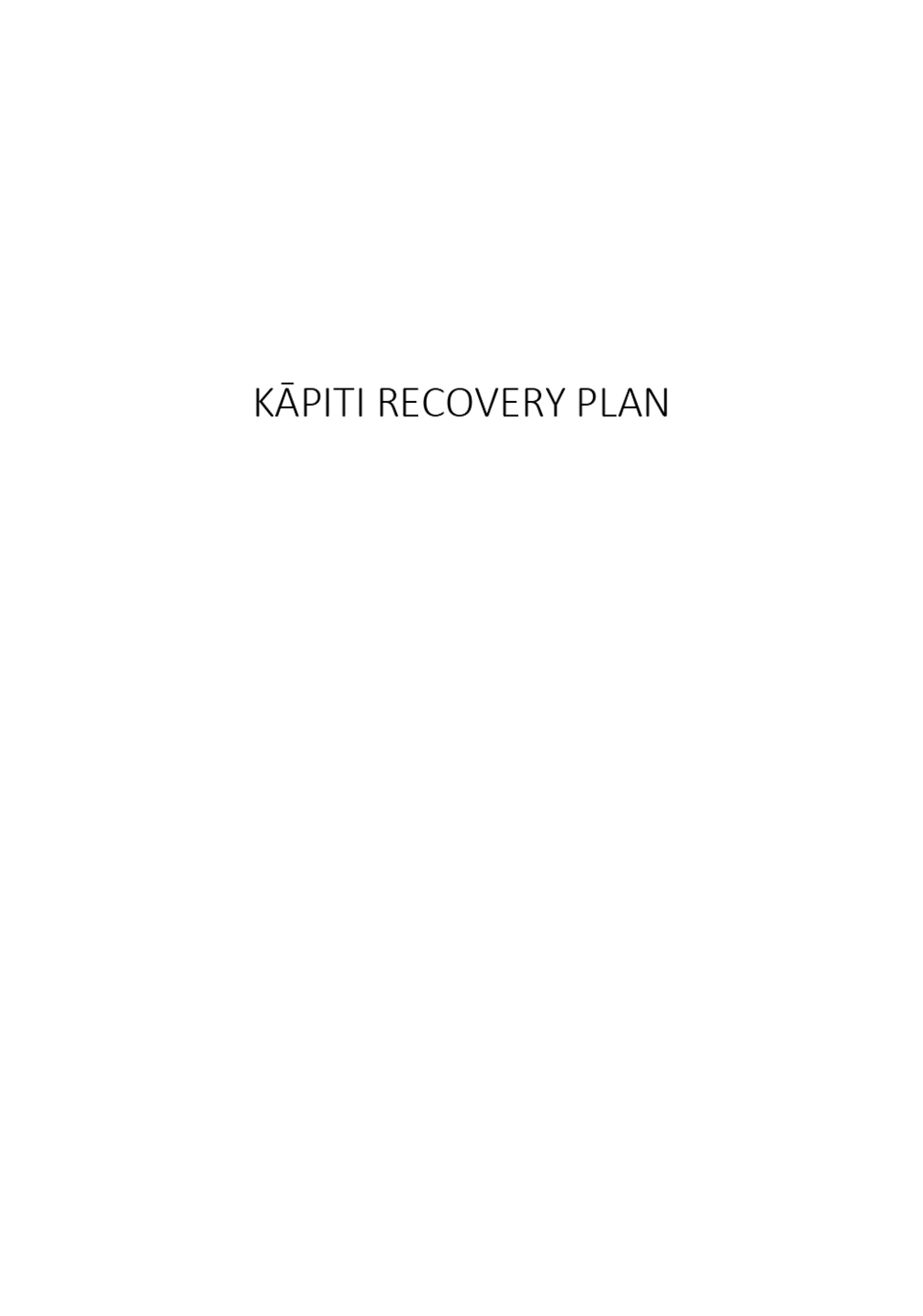


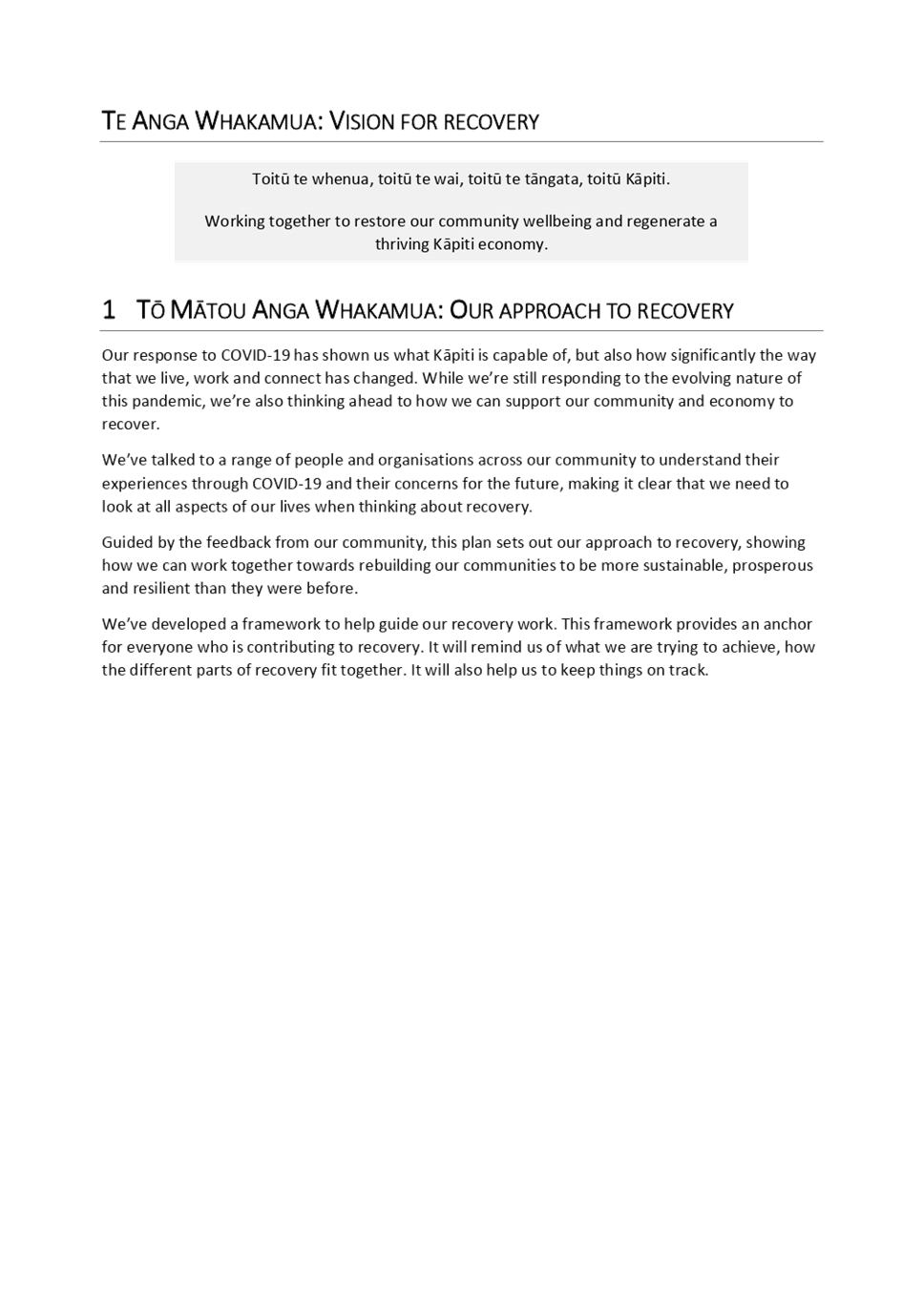
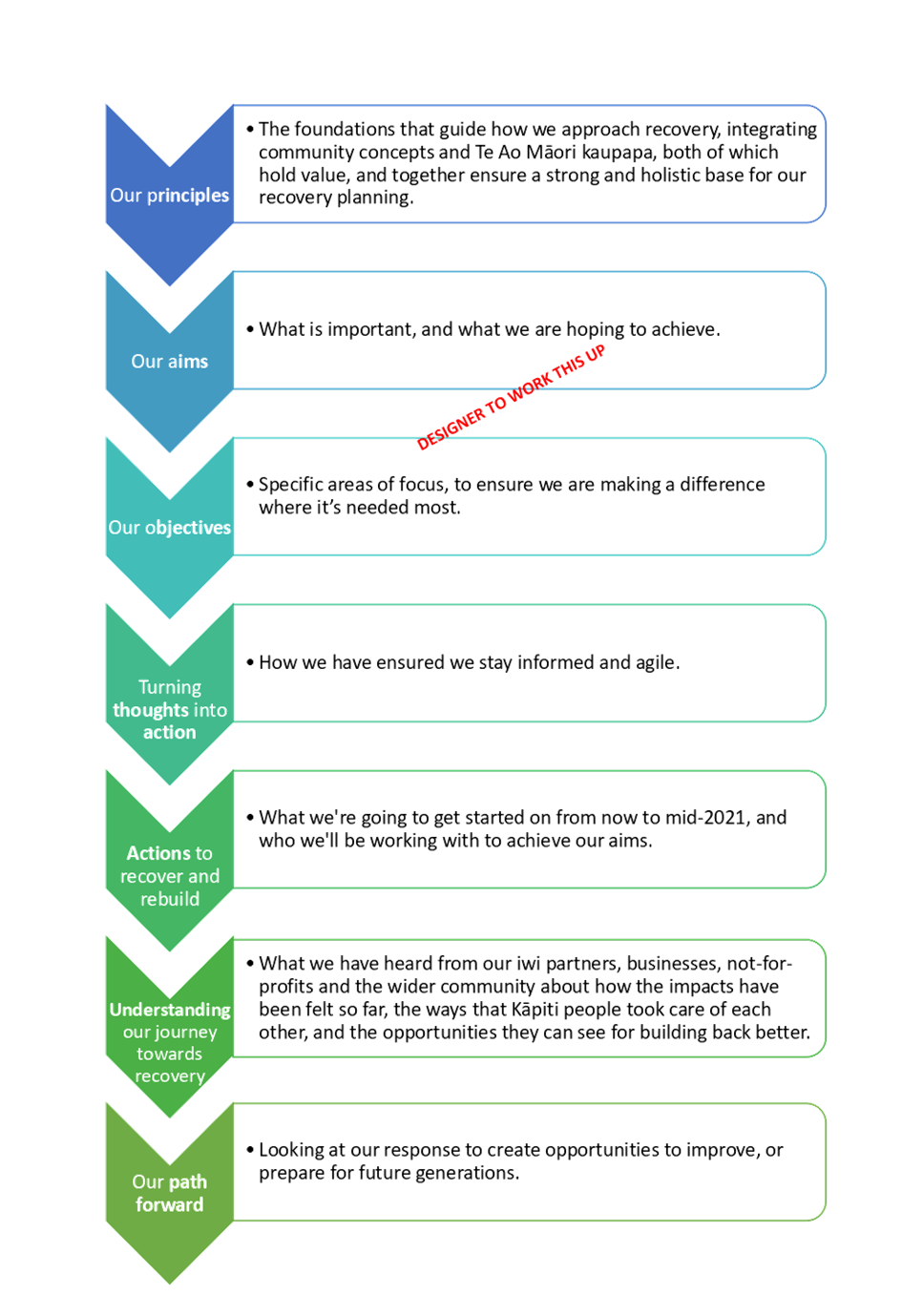


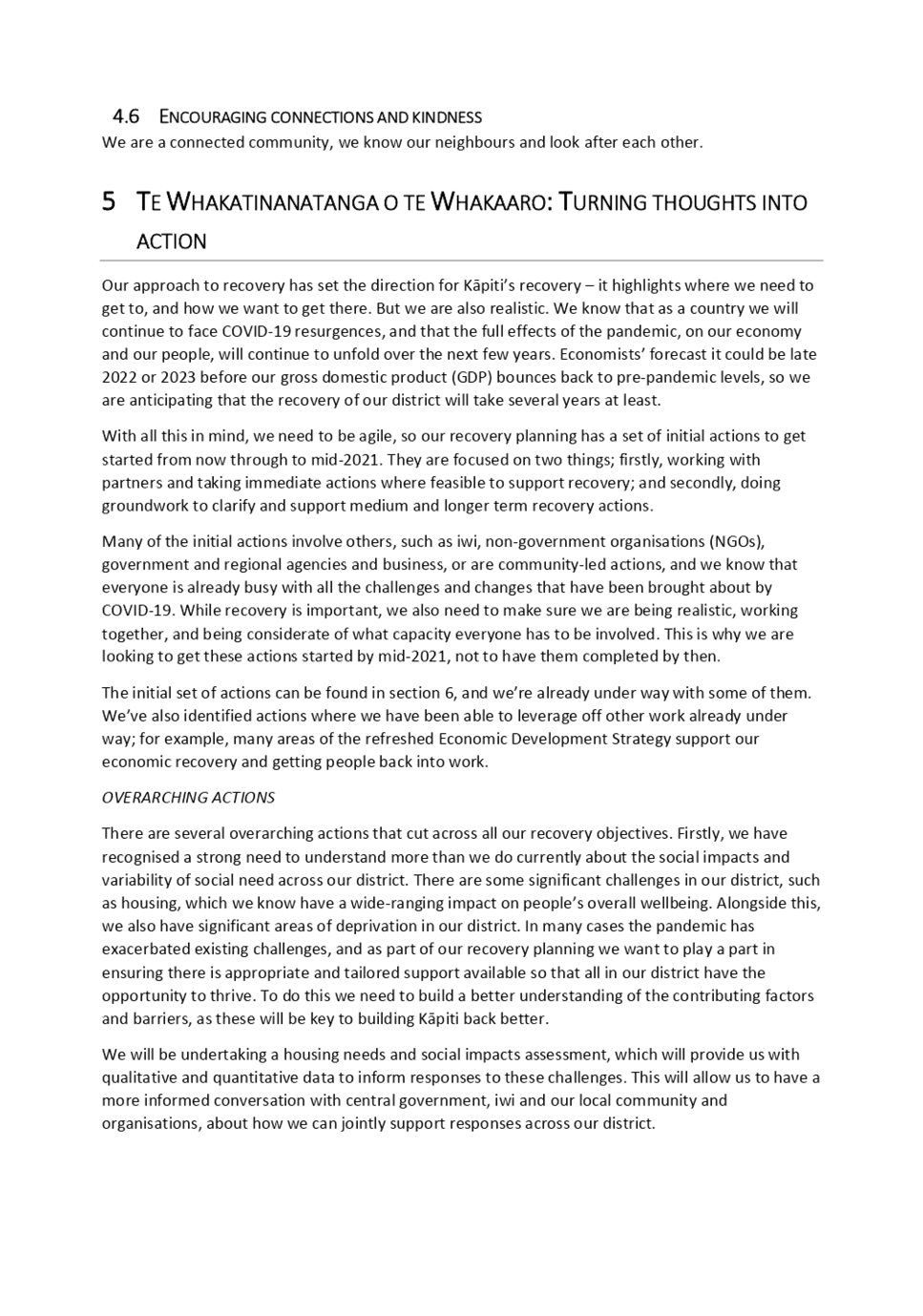

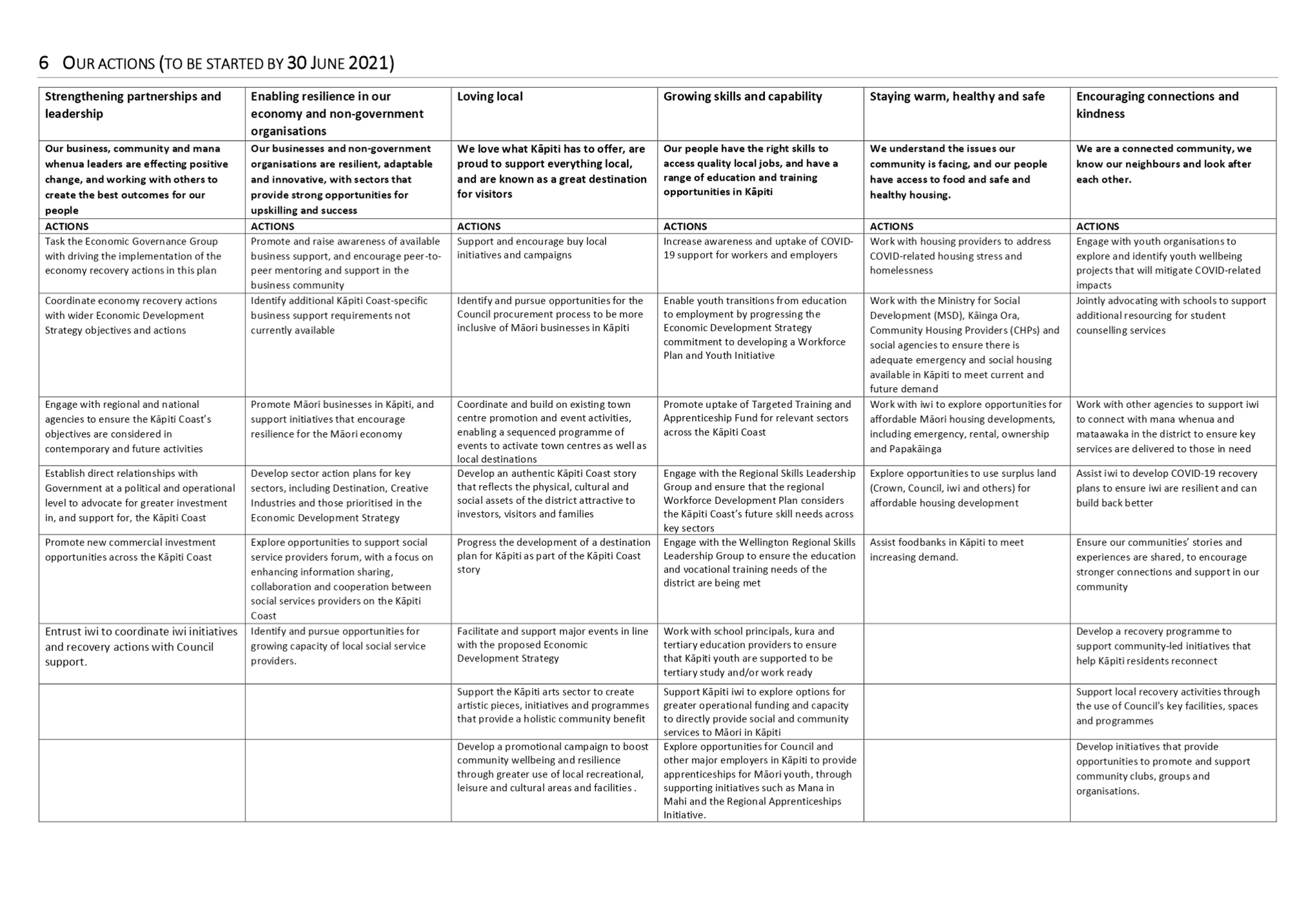
8.4 DRAFT
SUBMISSION ON THE TOITU TE WHENUA PARKS NETWORK PLAN 2020-30
Author: Alison
Law, Acting Group Manager Place and Space
Authoriser: Darryn
Grant, Economic Development Manager
Purpose of Report
1 To
seek the Council’s approval of the draft submission on the Te Toitū
Te Whenua Parks Network Plan 2020-30.
Delegation
2 The
Council has the authority to consider this matter under section B.1 of the
Governance structure and delegations 2019-2022.
Background
3 On
18 August 2020, Greater Wellington invited submissions via a survey on their Te
Toitū Te Whenua Parks Network Plan for 2020-30 (the Plan).
4 The
full Parks Network Plan can be read at the following link https://haveyoursay.gw.govt.nz/parksplan
5 Regional
Parks form an important part of the character and open space network for the
Kāpiti Coast District as we strive to provide connectivity and
accessibility for people and wildlife, and a balanced and diverse range of
recreational opportunities across the district contributing to its character and
vibrancy. Parks also support visitor attraction and climate change resilience.
6 The
Plan is a statutory management plan for eight regional parks and forests within
the region totalling approximately 33,000 hectares of public land, and it sets
the directions for management of the regional park network over the next ten
years.
7 The
plan has been drafted based on the feedback received during Greater
Wellingtons’ 2018 consultation that asked for feedback on issues,
opportunities, values and aspirations for regional parks.
8 The
regional parks and forests within the Kāpiti District are:
· Akatarawa
Forest
· Queen
Elizabeth Park (QEP)
9 The
draft Plan has six core goals which set the overall direction for the regional
parks. Three of these are core and ongoing for parks; managing natural values,
recreation experiences, heritage and landscape. The other three are for
particular focus over the life of the Plan and they overlap; working with mana
whenua, climate change and sustainability, and ‘the way we work’.
10 The
draft Plan has a number of actions for work. These include:
· Work
to restore natural heritage, including restoring native vegetation, healthy
waterways, and wetlands;
· Master
planning processes with public and partner input to identify new or realigned
trails, connections with residential areas and recreation facilities, and
outline details to guide restoration work;
· Improving
access to and within parks by focusing on accessibility and reducing physical
barriers, as well as increasing available information such as things to do and
see in parks within the region;
· Adjustments
in the trail network to accommodate the growth in cycling, mountain biking, and
e-biking;
· Developing
and enhancing recreation experiences via ‘key destinations’, which
includes storytelling about features, nature play/fun opportunities, enhanced
trails and connections, and adaptively reusing park buildings as facilities for
community benefit;
· Building
on collaborative work with mana whenua partners and community conservation and
recreation groups to increase benefits from parks by enabling and supporting
others in restoration and recreation facility work; and
· Building
the response to climate change into everything in parks, to include minimising
emissions, focusing on highly sustainable solutions, strengthening facilities
to withstand severe weather events and utilising education opportunities to
raise awareness of environmental issues.
· Consultation
on the draft Plan closes 23 October 2020. A copy of the survey is available as
Appendix 1 to this report. A draft submission has been prepared providing
feedback on a number of areas of the draft Plan, and is attached as Appendix 2
to this report.
DISCUSSION
11 We
support the draft Plan in principle and it aligns with our Councils’ 2012
Open Space Strategy. In particular, the focus on ecosystem health and moving
away from farming and plantation forestry is in tune with changes in community
values and aspirations. A summary of key points is outlined below.
12 We
support the Plan’s focus on enhancing the running, walking, cycling and
horse riding networks. This combined with a focus on enhancing equestrian
activities, supports and builds on our own CWB network and provides greater
opportunities for the public to access and connect with recreational areas
across the district. Extending and connecting networks also provides greater
tourisms opportunities for the district.
13 For
this reason, in particular we:
· Recommend
retaining the current Coastal track in QEP, given its uniqueness amongst the
coastal dunes and as a complementary activity to those walking the Escarpment
track
· Support
the development of a landscape masterplan at QEP which includes a prospective
new entrance to the Park from Poplar Avenue.
· Recommend
inclusion of a potential summit track from the Maungakotukutuku Valley to the
summit of Papakirae, overlooking Paraparaumu. This would greatly enhance the
Mountains to Sea and back country recreational access for residents and provide
a great scenic track for tourism.
· Support
development of a parks marketing plan to create greater awareness of the
recreational opportunities across the area.
· Support
the investigation in to the development of the greater Wellington Area as a
national ‘park city’.
14 We
have also identified the future potential of “Winstone Lakes” in
Otaki. The site is currently owned by Greater Wellington Regional Council and
used for river management purposes, but has future potential to support
recreational and environmental outcomes. The Lakes are increasingly used for a
range of recreational functions including Waka Ama and Canoe Polo, and future
inclusion as part of the regional park network would help further enhance and
add to recreational network in the north corner of the region.
15 We
have indicated that it is appropriate for the Plan to acknowledge Wainuiwhenua
(ex-Perkins Farm). There are significant areas of land between Akatarawa
Forest Park, Battle Hill Park and Queen Elizabeth Park that are currently part
of the Transmission Gully Motorway designation which may have significance for
the regional parks network in the future.
16 While
the Plan sets out clearly what actions are sought to be achieved, it currently
lacks details in regards to when and how action points will be delivered. Given
the linkages and importance of opportunities across and between regional parks
with council’s own networks and facilities, we recommend that there is
greater inclusion of the District’s relevant key stakeholders when planning
and seeing through action points, for example the Kāpiti Coast District
Council Cycleways, Walkways, Bridleways (CWB) advisory group, the Kapiti
Equestrian Advocacy Group (KEAG) the Kāpiti Mountain Bikers club, and the
Coastal Crew, where relevant.
17 Further
details on all points can be found in the draft submission attached as Appendix
2.
Considerations
Policy
considerations
18 There
are no policy considerations arising from this submission.
Legal
considerations
19 There
are no legal considerations for this submission.
Financial
considerations
20 There
are no financial considerations arising from this submission.
Tāngata
whenua considerations
21 We
have not engaged with iwi on this submission.
Strategic
considerations
22 Toitū
Kāpiti reflects aspirations for a vibrant and thriving Kāpiti,
with strong and safe communities that are connected to our natural environment.
Therefore, it is important that the Council advocate for outcomes that will
have a favourable impact on the district.
Significance and Engagement
Significance
policy
23 This
submission has a low level of significance under the Council’s
Significance and Engagement Policy.
Consultation
already undertaken
24 No
public consultation was undertaken for the development of this submission.
Engagement
planning
25 An
engagement plan is not required for this submission.
Publicity
26 This
submission will be uploaded to the ‘Submissions we have made’
section of the Council website.
|
Recommendations
27 That
the Council receive and note this report, including Appendix 1 and 2 to this
report.
28 That
the Council approve the submission to the Greater Wellington Regional Council
on the Te Toitū Te Whenua Parks Network Plan 2020-30, which is attached
as Appendix 1 and 2 to this report.
|
Appendices
1. Parks
Network Plan survey response ⇩ 
2. KCDC
Submission to GWRC Parks Plan ⇩ 
|
Council
Meeting Agenda
|
1 October 2020
|
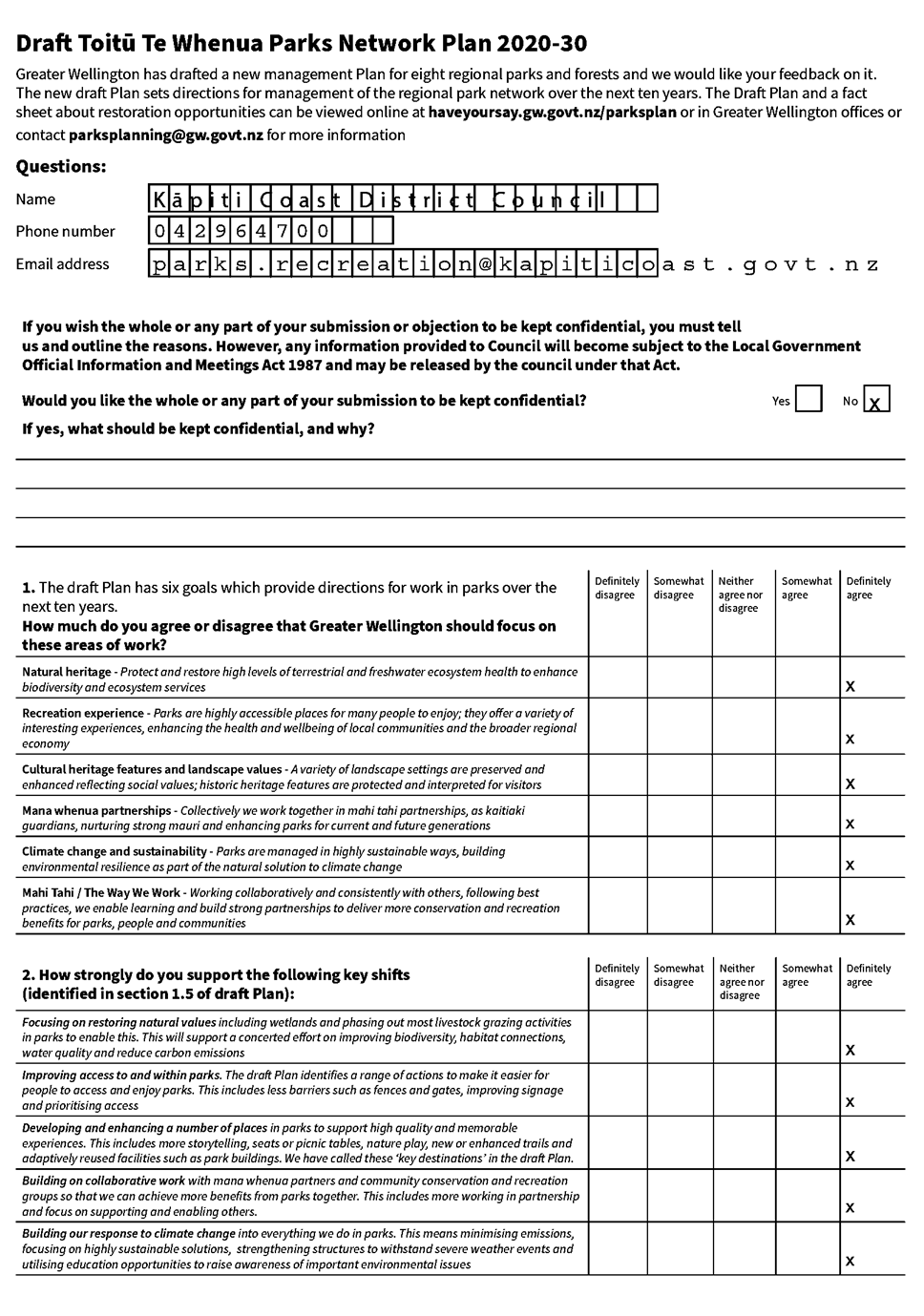
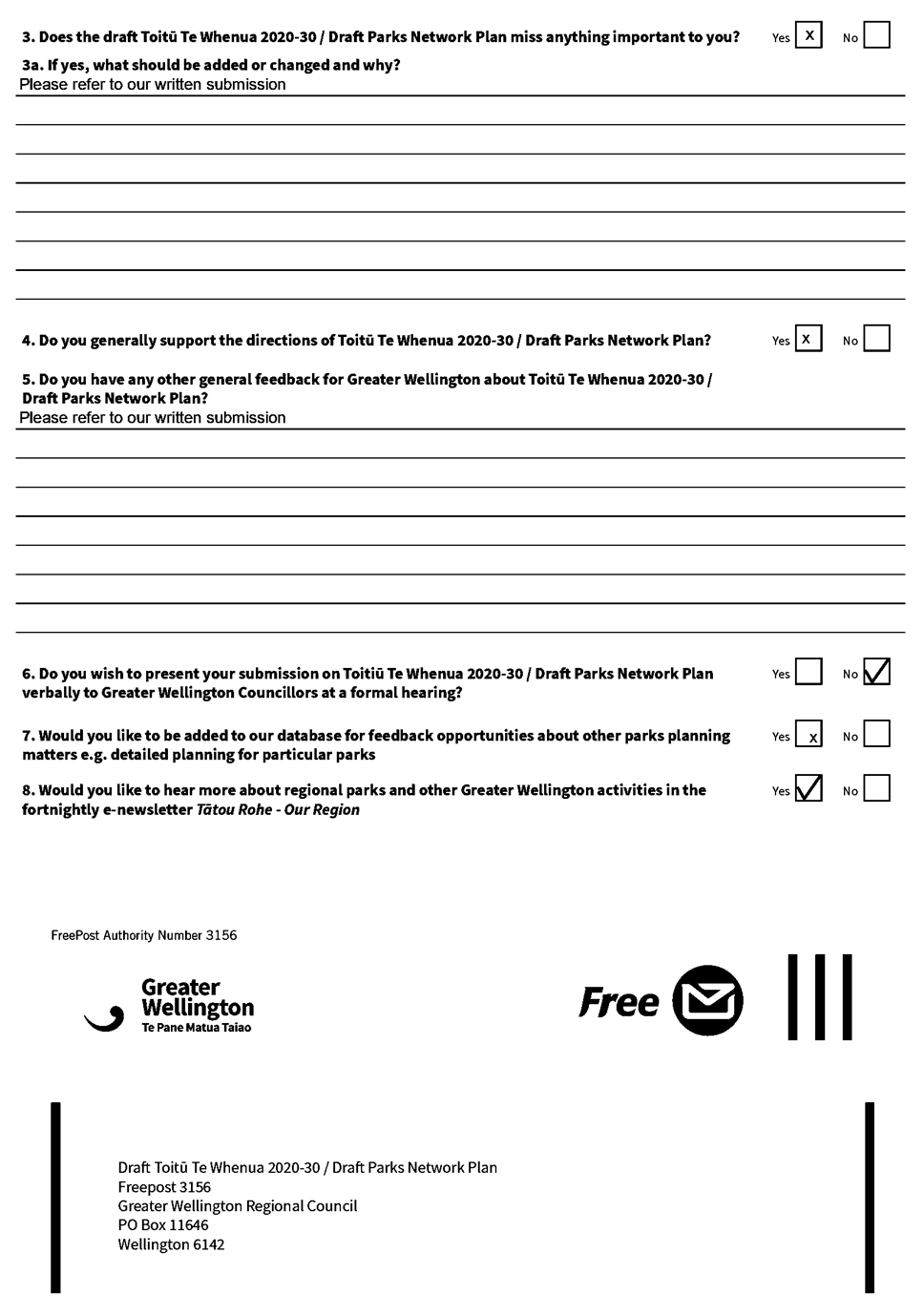
|
Council Meeting Agenda
|
1 October 2020
|
Draft Toitū
Te Whenua Parks Network Plan - Kāpiti
Coast District Council submission
|
Section of the Plan
|
Kāpiti Coast District Council response
|
|
Objective 6: Follow a strategic,
planned and benefits-based approach to new or enhanced visitor facilities
|
|
A46 & A47:
Development of a parks marketing
plan; investigate the development of the greater Wellington Area as a
‘national park city’
|
KCDC is in support of the development
of a parks marketing plan and would welcome the approach to the development
of the greater Wellington area as a ‘national park city’
encompassing regional and other parks – provided it is in liaison with
other agencies as documented in the draft strategy.
|
|
6.4.1 Ngā kaupapa here / policies
|
|
49P
To allow planting of non-indigenous
flora species
|
We acknowledge that the planting of
non-indigenous flora species can be justified for many of the reasons given
in Policy 49P, however we consider that some of the justifications reflect
outmoded views about using non-indigenous flora species to assist ecosystem
restoration.
For example, policy 49P (a.) and
(b.) refer to non-indigenous flora species being used for nursery/nitrogen
fixing purposes, we consider that this is no longer ecological best practice,
and there is little practical justification for using non-indigenous flora
species in preference to indigenous species for these purposes.
We consider native, eco-sourced
species to be most appropriate for large public landscapes, particularly
where they occur in association with remnant native forest areas.
In addition, we also understand the
use and appropriateness of non-indigenous species in some instances, for
example where there is a particular cultural context, historical context or
amenity function to be considered.
|
|
Objective 3. To enable a variety of
visitor experiences a range of facilities and services are provided to
support enjoyment, mental and physical health and wellbeing
|
|
Investigate the development of a
casual horse riding permit system such as a ‘parks horse riding
pass’….
|
KCDC oppose the requirement of a
‘parks horse riding permit’ if such a permit would create
restrictions or a barrier to easy access to horse riding in the regional
parks. We note that no other user group would require a permit.
Generally the plan considers horse
riding in a positive way and we support the proposed inclusions, noting our
comment above.
We ask that the Kapiti Equestrian
Advocacy Group are considered a stakeholder with regard to any changes to do
with equestrian use of parks in Kapiti.
|
|
Proposals relating to Queen
Elizabeth Park (QEP)
|
|
Section 1.3 Looking back
‘…..Tracks are being
relocated inland and other facilities moved’.
|
We would like to see a Coastal track
maintained at QEP, as the view of the coast from this aspect, and the ability
to walk in the Coastal dunes, is a unique feature of this park.
Retaining the Coastal track allows a loop walk with the Inland track which
could be a key feature, promoted as an alternative/add on to the Escarpment
track, which receives around 30,000 visitors a year.
In addition to the tourism
advantages, this is also an extremely popular track for Kapiti residents.
|
|
Enhanced cycling, running and
walking network
A344 (h)
Family cycling (Recreation)
|
The Park is used and enjoyed daily
by walkers, runners, bikers (both recreational and commuters) and
tourists. The trails (especially the sealed Te Ara o Whareroa) are used
by commuters to link Paekākāriki and the rest of the
Coast. Along with the Expressway shared path, they form an application
from KCDC to CycleNZ for a Heartland Ride, which will eventually form an
off-road link from Paekākāriki to Ōtaki.
This has significant tourism potential which KCDC is exploring. The
experience would be enhanced with fresh water outlets at key places on Te Ara
o Whareroa, such as the bisection with Whareroa Rd.
We support the family cycling
(recreation) with skills and pump tracks, and links to Whareroa Farm and the
Akatarawa Forest – provided it is designed and built appropriately for
the surrounds and environment and managed accordingly.
|
|
A327
Masterplan – overarching
priority action for park
|
We are supportive of a landscape
masterplan being developed and would like
KCDC to be engaged as a
stakeholder. Both through the parks team and also in relation to
infrastructure (Access and Transport) at Poplar Ave for example where there
are currently challenges with multimodal interaction, school servicing etc.
on Poplar Avenue). The interface between GWRC and KCDC managed areas at a
prospective new entrance is to be well thought through including early
engagement and involvement in design process.
We strongly support development of
equestrian facilities as QEP is a key part of the equestrian facilities
network.
|
|
A344 (b) and A346
Raumati South Access and Amenity
|
We are very supportive.
It is observed that the main
historical focus of activities and amenity is currently to the southern end
of the park and distinctly ‘Wellington facing’. Improved access
via Te Ara o Whareroa has in recent years improved this and it will be good
to see more of the park development addressing the Kāpiti Coast Community to the
north in years to come.
The northern end of Te Ara o
Whareroa is missing a destination point/trail head to start/finish activities
within the park. Linking onto future tracks to explore wider within the
park will be advantageous for all.
|
|
A351
Trail enhancements
|
Fitness trails, pump tracks or
activity stations need to be designed and built appropriately for the
surrounds and environment and managed accordingly.
Consideration could be given other
e-bike provision such as charging stations in addition to other bike
activities and specialty skills areas if appropriately designed and
constructed.
Supportive of planning for
entry/mid-range mountain bike tracks to provide for advanced
beginners.
|
|
Dedicated bridleway network
|
We would like to see a dedicated
horse track in the park, connecting north to south, to connect the Pony Club
(Poplar Ave) to the equestrian park at Mackays Crossing.
|
|
Restoration
|
We strongly support the long-term
goal of restoring hundreds of hectares of wetland and coastal native forest.
If it comes to fruition QE Park will be the largest restored area of the
coastal plain in the district, and an outstanding biodiversity asset. Between
Paekākāriki and Raumati, there will
be almost unbroken sequences of restored habitats from the coastal dunes to
the Akatarawa foothills.
Implementation will be key to the
successful delivery of restoration.
|
|
Map 25 High level restoration
priorities
|
We are supportive but note that
there has been failure of plantings alongside Te Ara O Whareroa north end.
Perhaps the stock irrigation lines could be repurposed to help irrigate
planting areas during establishment?
We consider that the coastal dune
restoration should be higher than a 4th priority - the blackberry
is becoming dominant.
|
|
Map 24 QEP Potential enhancements
|
We would like to see provision of
connecting cycle trail from The Parade, behind the existing surf club and up
to Wellington Road perhaps via the driveway from the Rangers House.
As stated previously, we are not
supportive of decommissioning the coastal track without an equivalent
alternative being confirmed prior.
|
|
Proposals relation to Akatarawa
Forest
|
|
A100 (c)
Akatarawa Traverse
|
We support this proposed track and
ask that KCDC is recognised as a partner as we manage Campbell’s Mill
Rd for recreational access.
|
|
Key stakeholders should include
walking, trail running, MTB and equestrian groups
|
We would like to see non-motorised
recreation groups recognised as key stakeholders in the forest. From
Campbell’s Mill Rd entrance there are many tracks popular with mountain
bikers (MTB), trail runners, walkers and horse riders. The route up
Campbell’s Mill Rd, down Whakatikei Rd and up Hydro to Orange Hut, and
Perhams to Titi are particularly important in the MTB network on the Kapiti
Coast. These tracks form part of our recreation base in Kapiti.
These tracks are especially important as grade 2/3 tracks are rare in this
district, and we would like to promote them more.
We would like to see the Kapiti MTB
Club, the Coastal Crew and equestrian clubs included as key stakeholders.
There are a number of opportunities
listed in the section “Park opportunities” which we support, for
which early engagement with the MTB and equestrian community would be good to
have.
The 1000 hectares of original
lowland podocarp forest and 500 hectares of beech/rimu/miro represent
opportunities for non-motorised use. There are substantial tourism
benefits to be unlocked from promoting the ancient rata trees, and we would
like to see tracks to these developed appropriately. Consideration
would need to be given to appropriate development for tourism whilst
protecting the environment, ie enhancing the existing Akatarawa Traverse
track with points of interest along the way such as the Rata Trees.
|
|
Motorised recreation vs restoration
|
The ongoing designation of high
biodiversity value areas of the Akatarawa Forest Park as a prime 4 X 4
recreation area could be considered to contradict the plan’s
environmental philosophy. This form of recreation is incompatible with
protecting and restoring such areas. It is difficult to ‘minimise
adverse effects’ and there is nothing in the plan to suggest any new or
more effective means of doing so will be instigated.
This area has become
‘regionally significant’ for this activity over time as it has been
developed and managed to facilitate it, rather than because of any intrinsic
suitability. It could be argued that it is intrinsically unsuitable because
of its biodiversity values.
However, we acknowledge that there
is the need for a 4x4 recreation area and support this provided it is well
managed and uses appropriate locations. We would like to see
consideration given to creating a regionally significant area for the 4x4
activity somewhere more appropriate, such as in plantation pine forest.
|
|
Akatarawa future opportunities
|
 We
suggest for inclusion the idea of a potential summit track from the
Maungakotukutuku Valley to the summit of Papakirae be explored and
included in the plan. This could potentially connect to the paper road at the
extension of Old Valley Road near the Nikau Centre and substation. This would
greatly enhance the Mountains to Sea and back country recreational access for
Paraparaumu residents. We
suggest for inclusion the idea of a potential summit track from the
Maungakotukutuku Valley to the summit of Papakirae be explored and
included in the plan. This could potentially connect to the paper road at the
extension of Old Valley Road near the Nikau Centre and substation. This would
greatly enhance the Mountains to Sea and back country recreational access for
Paraparaumu residents.
|
|
|
We suggest for inclusion
identification of a superior MTB route than the Pram track be considered for
future development of MTB specific infrastructure in the Akatarawa Forest.
This will better connect the Kapiti Coast with Upper Hutt. We also recommend
that better signage and maps be provided at key junctions/roads to provide
better guidance for all park users.
|
|
|
We suggest for inclusion a track
from southern end of Maungakotukutuku Road to the KCDC owned future dam site
in Nikau Valley. This could potentially provide a grade 2/3 MTB connection
and greatly enhance back country recreational access for Kapiti Residents.
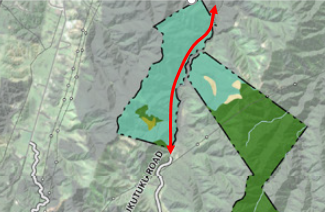
|
|
|
We suggest for inclusion the idea of
a potential track from southern end of Campbell’s Road below and around
the summit/flanks of Mt Wainui to the upper Puketiro loop in Battle Hill be
explored and included in the plan. This could potentially provide a grade 3/4
MTB experience similar to what the hugely popular Paekakariki to Pukerua Bay
escarpment track provides for walkers. This would greatly enhance back
country recreational access for Paraparaumu & Porirua residents. 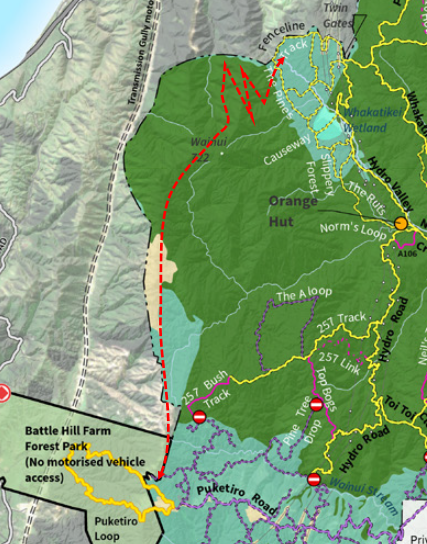
|
|
FUTURE LANDUSE AND NETWORK GROWTH
|
|
Wainuiwhenua (Perkins Farm)
|
We believe that it would be
appropriate in this future focused document to acknowledge the following:
· That there are significant areas of
land between Akatarawa Forest Park, Battle Hill and Queen Elizabeth Park that
are currently part of the Transmission Gully Motorway designation which may
have significance for the regional parks network in the future.
· Wainuiwhenua is a community led
focus group that has been established to advocate for the long-term use of
this land.
· That these areas may have strategic
significance for the rationalisation, connectivity or future development of
the regional parks network, or the protection and enhancement of landscape,
stream catchment or biodiversity values which will be relevant to the
Regional Council’s activities.
|
|
Otaki Lakes
|
We also believe that it would be
appropriate in this future focused document to acknowledge the following:
· That the land north of the
Ōtaki River currently known as “Winstone Lakes” is owned and
managed by GWRC, currently for river management purposes.
· That the lakes currently, and
increasingly support a range of recreational functions including Waka Ama and
Canoe Polo and planning should include the lake’s ability to host national
events in the future.
· That the lakes are to be
progressively restored to support recreational and environmental outcomes as
part of the resource consent conditions.
· That at the completion of gravel
extraction works and should the land (or part of the land) no longer be
required for River Management purposes an assessment and determination of
this land holding in relation to the definition of Regional Park provided in
the Local Government Act s139 (1) (a) will be undertaken with a resolution from
GWRC to determine its future function and use as a regional park.
Specifically in this section and section 139A, regional park—
(a) means land—
(i) owned by a regional council;
and
(ii) acquired or used principally for community, recreational,
environmental, cultural, or spiritual purposes…
|
|
|
|
Additional Comments:
|
|
Biodiversity, ecosystem and
restoration
|
Overall, the draft GW Parks Network
Plan is sound from a biodiversity protection and restoration perspective.
Making ecosystem health central to park management is enlightened, and the
shift from farming and plantation forestry to restoration is in tune with
changes in community values and aspirations.
We would like to see more
specificity regarding when and how things will actually happen.
|
|
Inclusion of key stakeholders in
planning processes
|
We could like KCDC’s CWB
Advisory Group should be a stakeholder in all CWB consultation in relation to
QEP and Akatarawa Forest Park.
We would like the Kapiti Equestrian
Advocacy Group (KEAG) to be a stakeholder with regard to equestrian
facilities and activities in QEP and Akatarawa Fores Park.
We would like KCDC officers to be
included in the key stakeholder involvement with regard to QEP and Akatarawa
Forest Park.
|
8.5 Councillor
Triennial Training and Development Framework
Author: Leyanne
Belcher, Democracy Services Manager
Authoriser: Janice
McDougall, Group Manager People and Partnerships
Purpose of Report
1 This
report asks Council to adopt a programme for Councillors training and
development for the rest of the triennium.
2 In
essence the proposed programme would consist of two LGNZ workshops per
financial year plus attendance at the LGNZ Conference by the Mayor and up to
three Councillors, attendance by three Councillors at IOD training each year,
and RMA training for Hearing Commissions.
3 However
the budget only just covers the current plan of core training. The budget will
require review as part of the Long Term Plan process in order to be able to
more appropriately cover the broader training and development requirements. In
addition, the Martin Jenkins Independent Organisational Review of Kāpiti
Coast District Council highlighted opportunities for increased support for
Community Boards which would, if implemented, require additional training and
development budget for Community Boards.
Delegation
4 Council
has the authority to consider this matter.
Issues and Options
Issues
5 Once
elected, elected members undergo an extensive and comprehensive induction
programme intended to help orientate them in their new roles as quickly as
possible. This includes in-house briefings, seminars and external workshops
such as those developed by Local Government New Zealand. (LGNZ)
6 In
addition, this triennium a number of LGNZ training modules have also been made
available to members on line via LGHub. These include:
· Governance 101,
· Quality Decision
Making
· Financial Decision
Making
· Strategic Thinking
· Asset Management
and Infrastructure
7 Councillors
are invited to consider an integrated training programme for the remainder of
the triennium. This is to allow a consistent approach.
8 The
core of the training framework for the last Triennium featured the following:
· Opportunity for
attendance by each Councillor at the LGNZ Conference or IOD Training event once
per Triennium.
· Attendance at
several workshops in an integrated suite of workshops provided by LGNZ.
· Hearing
Commissioner training for a number of members.
7 LGNZ
is the primary agency responsible for delivering elected member development
programmes through EQUIP. The latter is LGNZ’s Centre of Excellence,
which delivers tailored services, best practice guidance, business solutions,
governance and management support in order to strengthen the local government
sector.
8 Martin
Jenkins, in the recent Independent Organisational Review of Kāpiti Coast
District Council, highlighted the importance of providing governance training
opportunities for new Councillors following their induction into the roles as
Councillors. The report also mentioned there is a range of training offered by
the Institute of Directors.
Local
Government NZ
9 LGNZ
currently provide the following professional governance workshops that aim to
give elected members an integrated grounding in core governance, leadership,
and strategic skills:
· Governance –
Theory and Practice
· Management and
Governance
· Communicating with
Influence – On and Offline
· Maximising
Meetings and Effective Debating (can be done as separate half days)
· Engaging Your
Community (half day workshop)
· Strategic Thinking
and Strategy Setting workshop.
10 The
usual format for these workshops is for Council to hold the workshop ‘in
house’, then, no matter how many Councillors attend there is a fixed
charge of $4995 plus GST (plus disbursements est. $300).
Institute
of Directors Training
11 Individual
Councillors may prefer to attend an Institute of Directors course in preference
to attending an LGNZ Conference. The Institute of Directors offers courses in
Wellington or Palmerston North that are of relevance to Mayor and Councillors at a cost per person per course of $1080 plus GST:
· Finance Essentials
(Financial literacy was the primary development area identified in a survey of
Councillors towards the end of the last triennium.)
· Governance
Essentials
· Strategy
Essentials
RMA
Training
12 Council
currently has four elected members accredited as Hearing Commissioners. The
training programme allows for an additional elected member to be accredited in
order to increase the elected member skills base and provide for additional
flexibility.
13 The
current accredited members are: The Mayor, Cr Holborow, Cr Elliott and Cr
Prvanov. The accreditations were gained through a study course ‘Making
Good Decisions’. Crs Holborow and Elliott are qualified as panel chairs,
while the Mayor and Cr Prvanov are qualified as panel members.
14 Cr
Holborow’s accreditation will expire during financial year 20/21 and
Mayor K Gurunathan’s accreditation will expire during financial year
21/22. Either Elected Member may wish to recertify or an alternative named
person or persons may be nominated to become accredited as Hearing
Commissioners.
Report
on Training Events
15 Elected
Members who attend training events are required to report on their experiences
in a timely fashion, and these reports are published in the Elected Members
Bulletin.
Policy
considerations
16 There
are no policy considerations.
Legal
considerations
17 There
are no legal considerations.
Financial
considerations
18 There
are sufficient funds available for the proposed training framework.
19 The
budgets for 2020/21 and 2021/22 are $26,478 per year.
Tāngata
whenua considerations
20 There
are no tāngata whenua considerations.
Strategic
considerations
21 There
are no strategic considerations.
Significance and Engagement
Significance
policy
22 This
matter has a low level of significance under Council’s Significance and
Engagement Policy.
Engagement
planning
23 An
engagement plan is not needed to implement this decision.
Publicity
24 A
communications plan is not required for this matter.
|
Recommendations
25 That
Council adopts the proposed training framework as at Appendix 1 of this
report, with any amendments, for the remainder of the 2019-2022 Triennium.
26 That
Council approves the attendance at the 2021 Local Government NZ Council of
the Mayor, Cr……….., Cr………….. and Cr
…………..,.
27 That
Council approves IOD course attendance by Cr
……………. and Cr
……………….
28 That
Council approves the recertification of Cr Holborow as Hearing Commissioner
Chair.
OR
That Council approves the
certification of Cr ……….. as Hearing Commissioner Chair.
29 That
Council approves the recertification of Mayor K. Gurunathan at Hearing
Commissioner.
OR
That Council approves the
certification of Cr ………. as Hearing Commissioner.
30
That Council approves the certification of Cr ………. and Cr
………as Hearing Commissioners.
|
|
|
Appendices
1. Training
Programme 2020 to 2022 ⇩ 
2. IOD
Course Calendar ⇩ 
|
Council
Meeting Agenda
|
1 October 2020
|
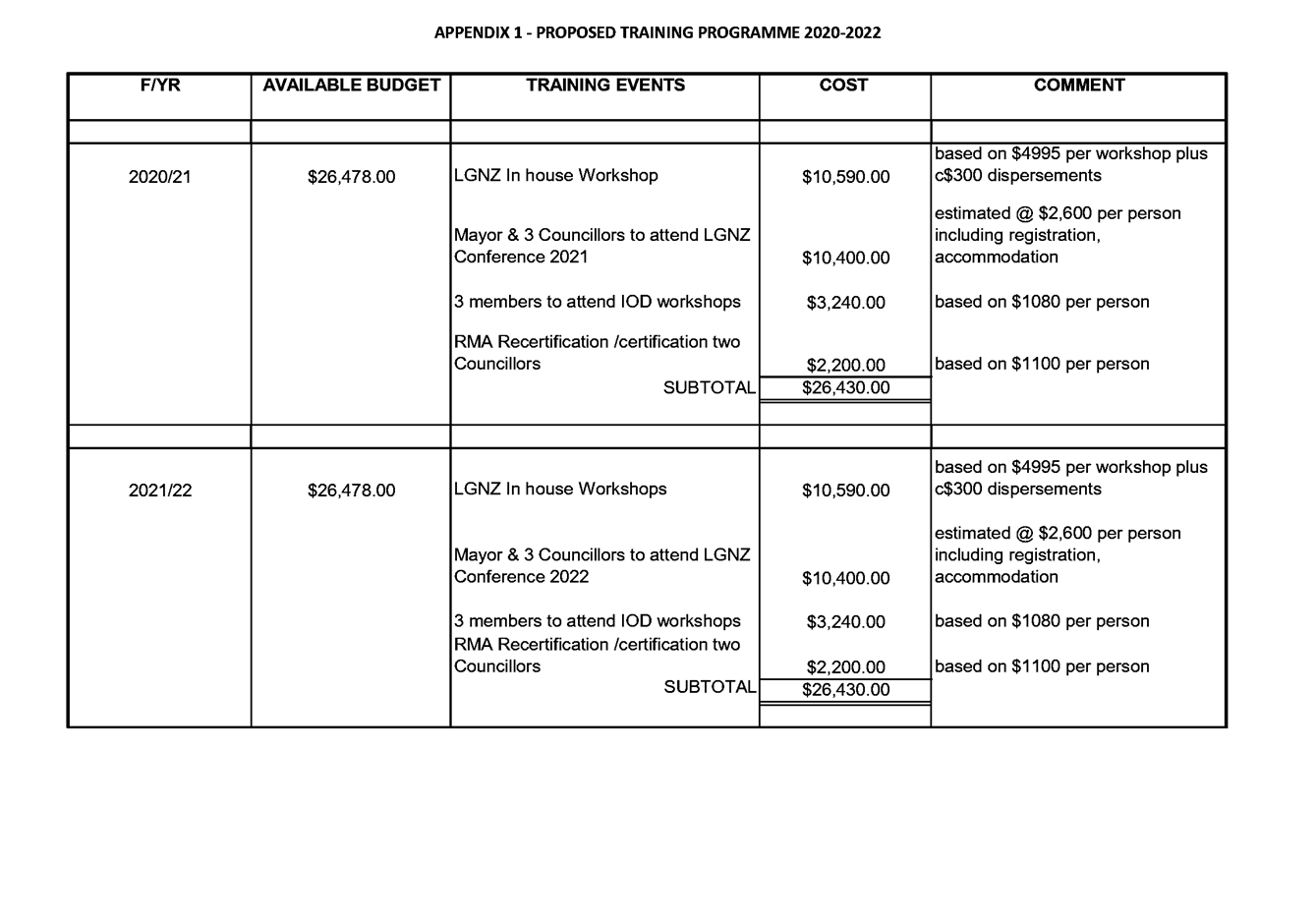
|
Council
Meeting Agenda
|
1 October 2020
|
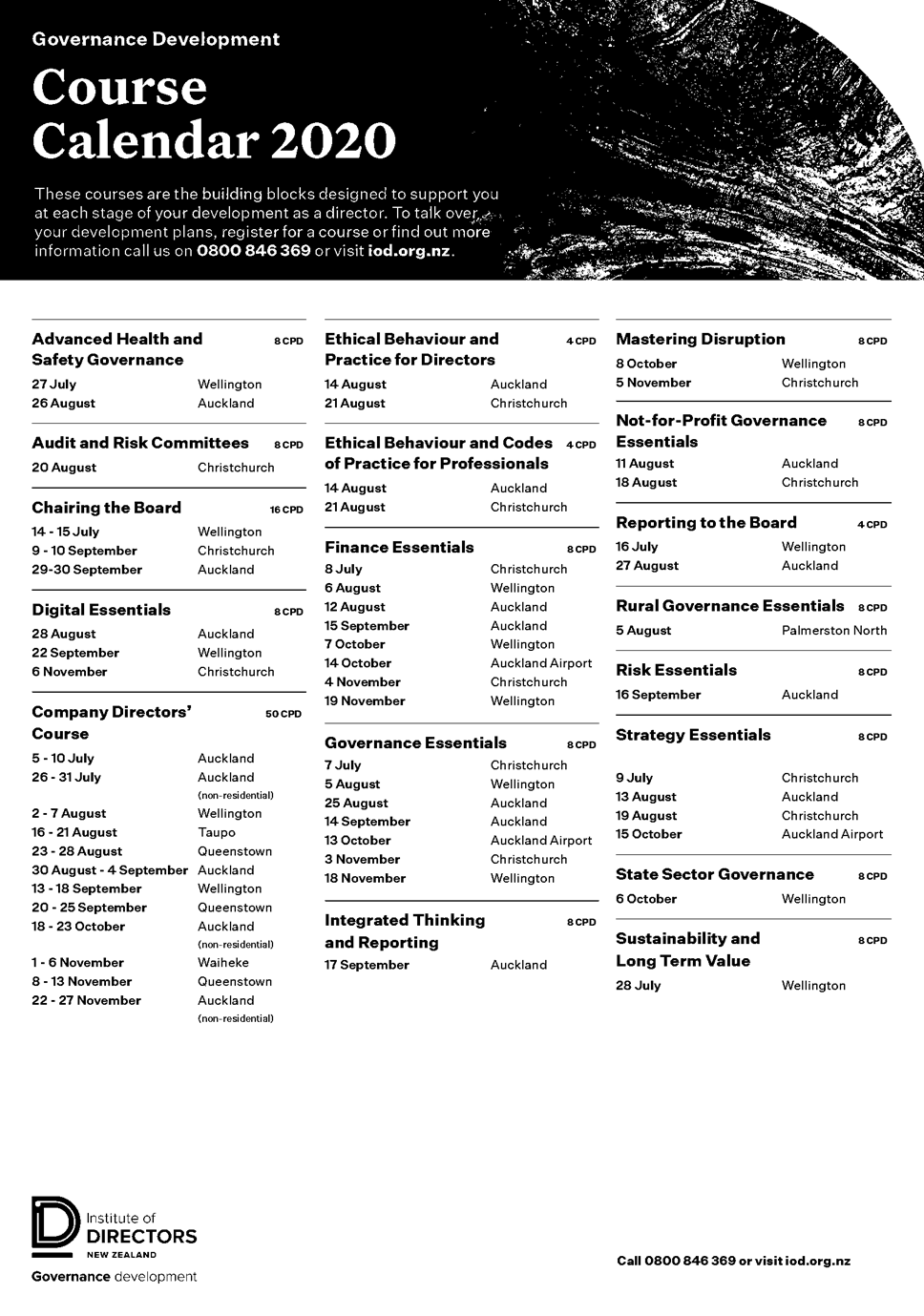
8.6 Amendments
to the Council Delegations to Chief Executive and Staff
Author: Sarah
Lloyd, Senior Advisor Corporate Planning & Reporting
Authoriser: Mark
de Haast, Group Manager Corporate Services
Purpose of Report
1 This
report seeks Council’s approval of amendments to Council delegations to
the Chief Executive and staff including Resource Management Act 1991
delegations.
Delegation
2 Council
has the authority to consider this matter.
3 The
delegations comply with the provisions of the Local Government Act 2002 (clause
32, schedule 7), which empowers the Council to consider an appropriate
governance structure and associated delegations.
4 It
also meets the requirements of section 10 of the Local Government Act 2002
which prescribes the purpose of local government.
Background
5 The
Council has certain statutory powers it can exercise and duties it must fulfil.
Various statutes recognise that it is not efficient or practical for Elected
Members to have to deal with every aspect of their functions, duties and
powers.
6 Various
Acts of Parliament provide the Council with the legal authority to delegate to
Officers. In particular, Council has the authority to delegate to Officers
under clause 32 of Schedule 7 of the Local Government Act 2002. Clause 32 of
the Local Government Act 2002 also sets out certain powers that cannot
be delegated as follows:
“32. Delegations‒(1) Unless expressly provided otherwise
in this Act, or in any other Act, for the purposes of efficiency and
effectiveness in the conduct of a local authority's business, a local authority
may delegate to a committee or other subordinate decision-making body,
community board, or member or officer of the local authority any of its
responsibilities, duties, or powers except‒
(a) the power to make a rate; or
(b) the power to make a bylaw; or
(c) the power to borrow money, or purchase or dispose of
assets, other than in accordance with the long-term plan; or
(d) the power to adopt a long-term plan, annual plan, or
annual report; or
(e) the power to appoint a chief executive; or
(f) the power to
adopt policies required to be adopted and consulted on under this Act in
association with the long-term plan or developed for the purpose of the local
governance statement.
(h the power to adopt a
remuneration and employment policy.”
7 Delegated
authority allows for administrative efficiency and ensures timeliness in the
conduct of Council’s daily business activities.
8 The
majority of the Acts allow the Chief Executive the discretion to sub-delegate
to council staff. However, some Acts prescribe the way delegations must be
made. For example, the Resource Management Act 1991 (RMA 1991) does not allow
the Chief Executive the power to sub-delegate.
Council to Chief Executive and Staff
Delegations
9 The
Council delegations to the Chief Executive and staff are monitored on a regular
basis and reported back to Council for amendment as required, in response to
changes in staff or legislation.
10 The
background for the required amendments is outlined below and the amendments to
the delegations are highlighted yellow
in Appendix A.
COVID-19 Recovery (Fast-track
Consenting) Act 2020 delegations
11 A
new COVID-19 Recovery (Fast-track Consenting) Act 2020 (C19FTCA) came into
force on 8 July 2020 allowing the fast-tracking of resource consents that meet
certain criteria. Although the processing of these resource consents are not
the responsibility of Council there are actions needed as a ‘requiring
authority’ and as the ‘local authority’ if a consent is
required by Council. For the efficiency of expediting a consent it is recommended
that these actions be delegated to the Chief Executive and the Group Manager
Infrastructure Services.
12 It
is recommended that the Chief Executive be given a delegation for nominating a
person(s) to represent the Council for the expert Panel responsible for
considering the applications.
13 Staff
also recommend that the Chief Executive, Group Manager Regulatory Services,
Principal Advisor Regulatory Services, District Planning Manager and Resource
Consent and Compliance Manager are also given a delegation for any urgent or
minor matters that arise. These positions will also require a delegation under
C19FTCA to recover reasonable costs and charge for advice and the supply of
information to the Minister’s Panel.
14 Council
is still responsible for the monitoring and enforcement of these resource
consents however this is carried out under the provisions of the Resource
Management Act 1991.
15 It
is noted that C19FTCA only remains in force two years after assent or if
extended and as such will automatically be removed from the CE to Staff
Delegations at the point it is repealed.
Additional amendments and new
delegations
16 Whilst
reviewing delegations staff have identified a requirement for staff to act as
an Agent and receive levies under Building Research Levy Act 1969.
17 A
report to Council (SP-18-414) in March 2018 amended the title of the Domestic
Violence Act 1995 to the Family and Whānau Violence Act 1995 as of 1 July
2018. Whilst the Family Violence Bill originally proposed to change the name of
the Domestic Violence Act to the Family and Whānau Violence Act 1995 it
appears this never occurred and instead the Domestic Violence Act 1995 was
repealed and replaced entirely. Additionally, Part 6 of the Act is no longer
the correct reference to the “Non-publication of information relating to
protected person on public registers”. In the new Family Violence Act
2018 it is Part 9 which relates to “Public registers not publishing
identifying information related to protected person”.
18 The
Fire Safety and Evacuation of Buildings Regulations 2006 have been revoked and
replaced, on 1 July 2018, by regulation 36 of the Fire and Emergency New
Zealand (Fire Safety, Evacuation Procedures, and Evacuation Schemes)
Regulations 2018.
19 The
National Animal Identification and Tracing Amendment Act 2019 included an
amendment to the National Animal Identification and Tracing Act 2012 (NAITA)
that provided ‘public sector organisations’ the ability to access
data relating to stock and their owners. Rapid access to this data is important
for animal management staff to respond in emergency circumstances to manage
risks to the lives and welfare of animals and people. For this reason, staff
recommend that NAITA 2012 be included in the Council to CE and Staff
Delegations.
20 The
majority of the Privacy Act 2020 comes into effect on 1 December 2020 repealing
the Privacy Act 1993. Subpart 2 of Part 3 and sections 213 to 215 of the new
Act came into force 1 July 2020 however these sections are not relevant to the
Council to CE and Staff delegations.
21 The
Racing Industry Act 2020 came into effect on 30 June 2020 repealing the Racing
Act 2003. As such the delegations have been amended to reflect this.
22 Additionally,
powers were also identified relating to signing a notice for or releasing of a
statutory land charge under the Statutory Land Charges Registration Act 1928.
Resource
Management Act 1991 Delegations made by Council to Staff
23 The
amendments to Council’s RMA 1991 delegations to staff in the following
table are recommended as a result of staff and team structure changes and
amendments made to the RMA 1991 as a result of the Resource Management
Amendment Act 2020.
24 The
amended RMA delegations and glossary can be found in Appendix B.
|
Recommended
amendments to Council delegations to staff under
the Resource Management Act 1991
|
|
Positions
|
Amendments to RMA 1991 delegations
|
|
|
Coastal and Stormwater Asset Engineer
|
A replacement title for Stormwater and Coastal Engineer
in order to align with other team titles. Title to include sections 35,
35A, 332 and 333.
|
|
|
Customer Engagement Representative
|
A replacement title for Customer Services Officer
(also replaces Customer Engagement Officer) resulting from a
restructure to the Customer Service team (now the Customer Engagement team).
Title to include sections 35, 35A, 37A, 87G, 92A, 92B, 98, 99, 101, 113
and 114.
|
|
|
Group Manager, Place and Space
|
Aligning staff position delegations with the rest of their
team. Title to include section 330.
|
|
|
Group Manager Regulatory Services, Resource Consents and
Compliance Manager, District Planning Manager, Independent Planning
Commissioner, Principal Adviser, Regulatory Services, Principal Resource
Consents Planner, Resource Consents Planner, Resource Consents Service
Planner, Senior Resource Consents Planner, Team Leader Resource Consents.
|
As part of amendments to the Resource Management Amendment
Act 2020 adding a new section. Titles to include section 91F(2).
|
|
|
Group Manager Regulatory Services, District Planning
Manager
|
As part of amendments to the RMA via the Resource
Management Amendment Act 2020 remove reference to the Collaborative Planning
Process. Titles to remove Schedule 1 Cl37.
|
|
Considerations
Policy
considerations
25 The
proposed delegations support the Council’s Governance Structure and
Delegations.
Legal
considerations
26 This
paper has been reviewed by the Council’s Senior Legal Counsel.
Financial
considerations
27 There
are no financial considerations relating to the process of making these
amendments.
Tāngata
whenua considerations
28 There
are no tāngata whenua considerations relating to the process of making
these amendments.
Strategic
considerations
29 Delegations
facilitate staff ability to deliver on all Council outcomes.
Significance and Engagement
Significance
policy
30 This
decision has a low level of significance under the Council’s Significance
and Engagement policy.
Consultation,
engagement and publicity
31 No
consultation, engagement or publicity is required relating to the process of
making these amendments.
|
Recommendations
32 That
the Council adopts the revised Council to Chief Executive and Staff
Delegations as shown in Appendix A to the report Amendments to the Council
Delegations to Chief Executive and Staff.
33 That
the Council adopts the revised Resource Management Act 1991 Delegations to
Staff as shown in Appendix B to report Amendments to the Council
Delegations to Chief Executive and Staff.
|
Appendices
1. Appendix
A Council to CE and Staff delegations ⇩ 
2. Appendix
B Council to Staff RMA 1991 Delegations (with glossary) ⇩ 
|
Council
Meeting Agenda
|
1 October 2020
|
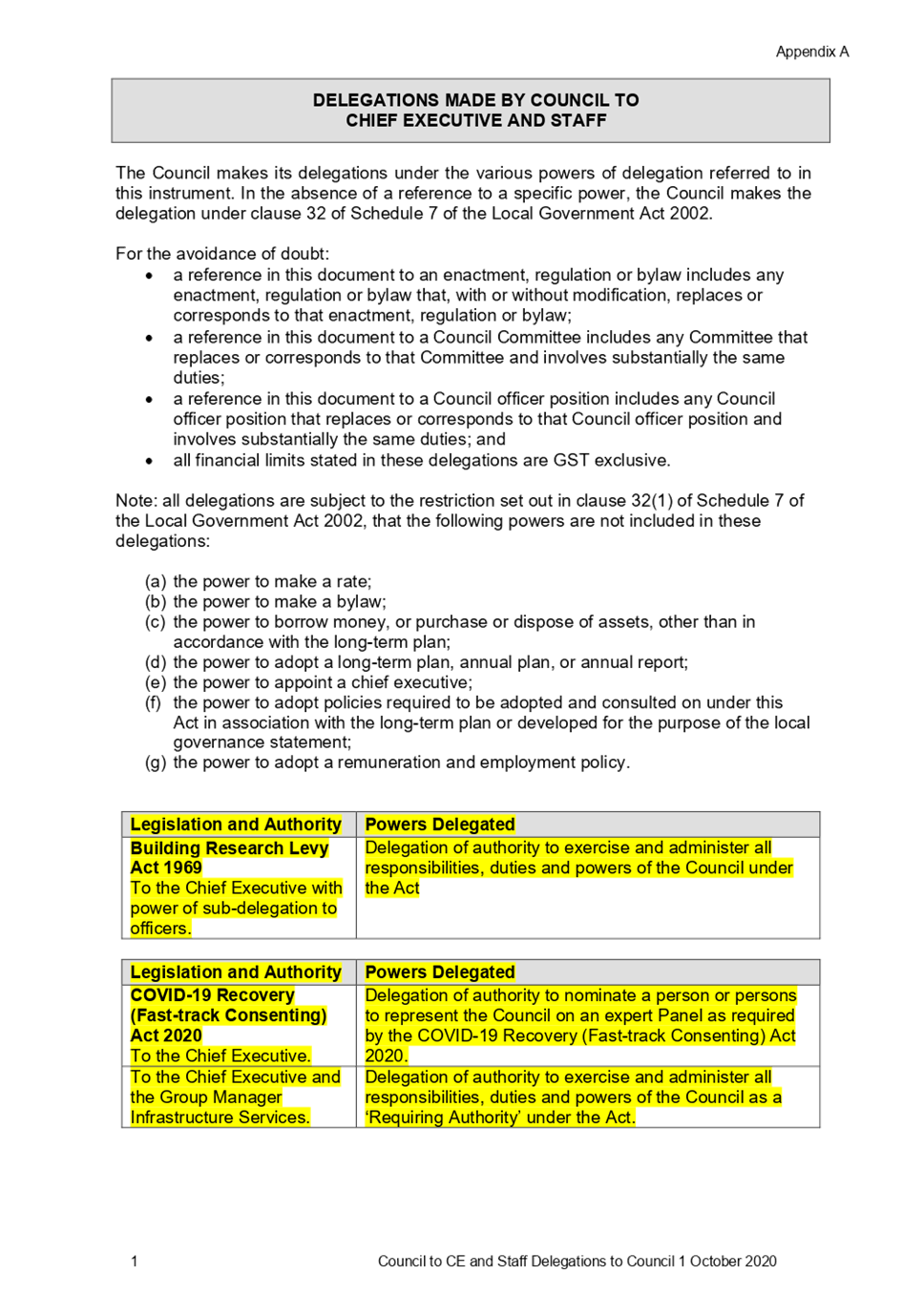
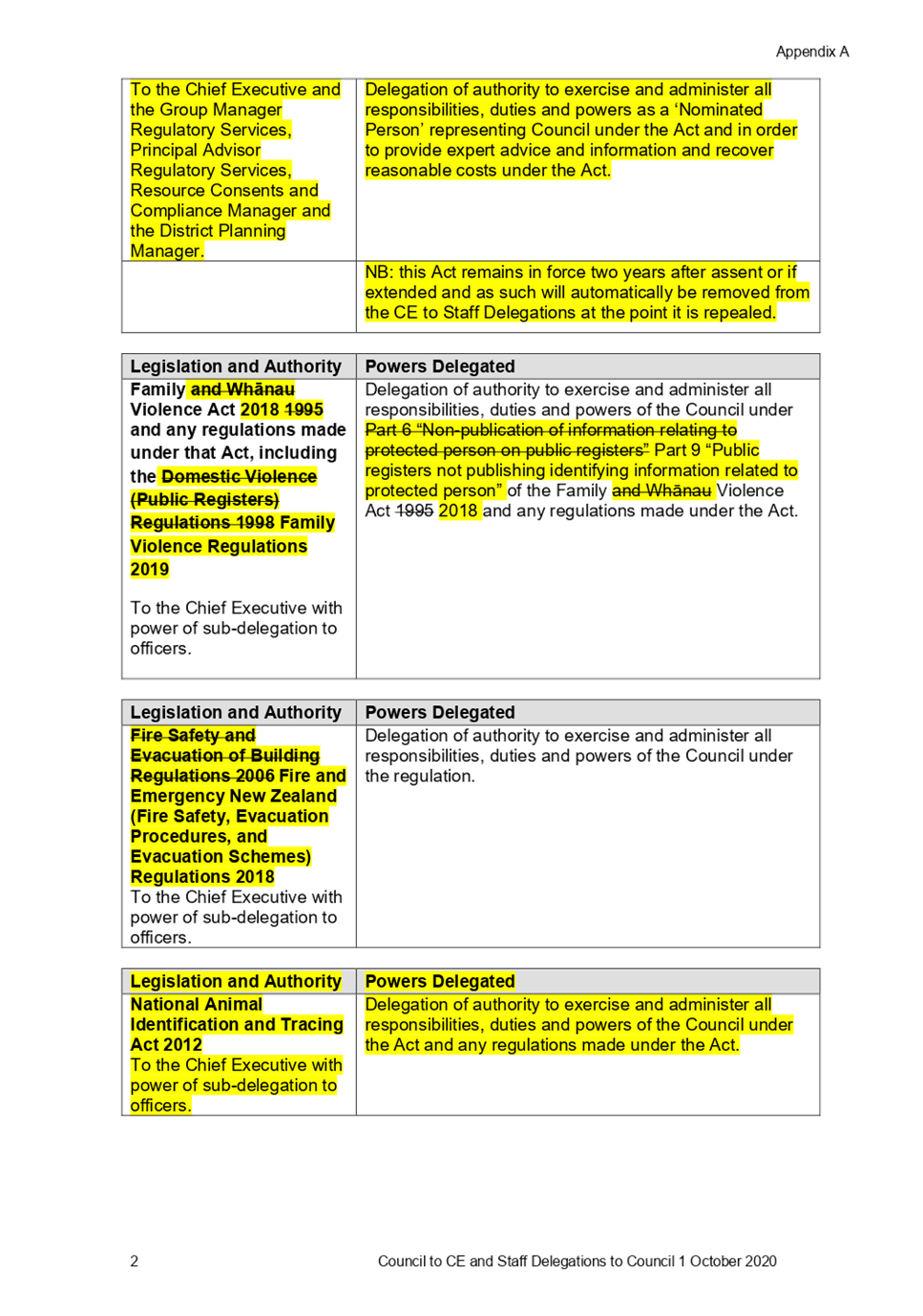
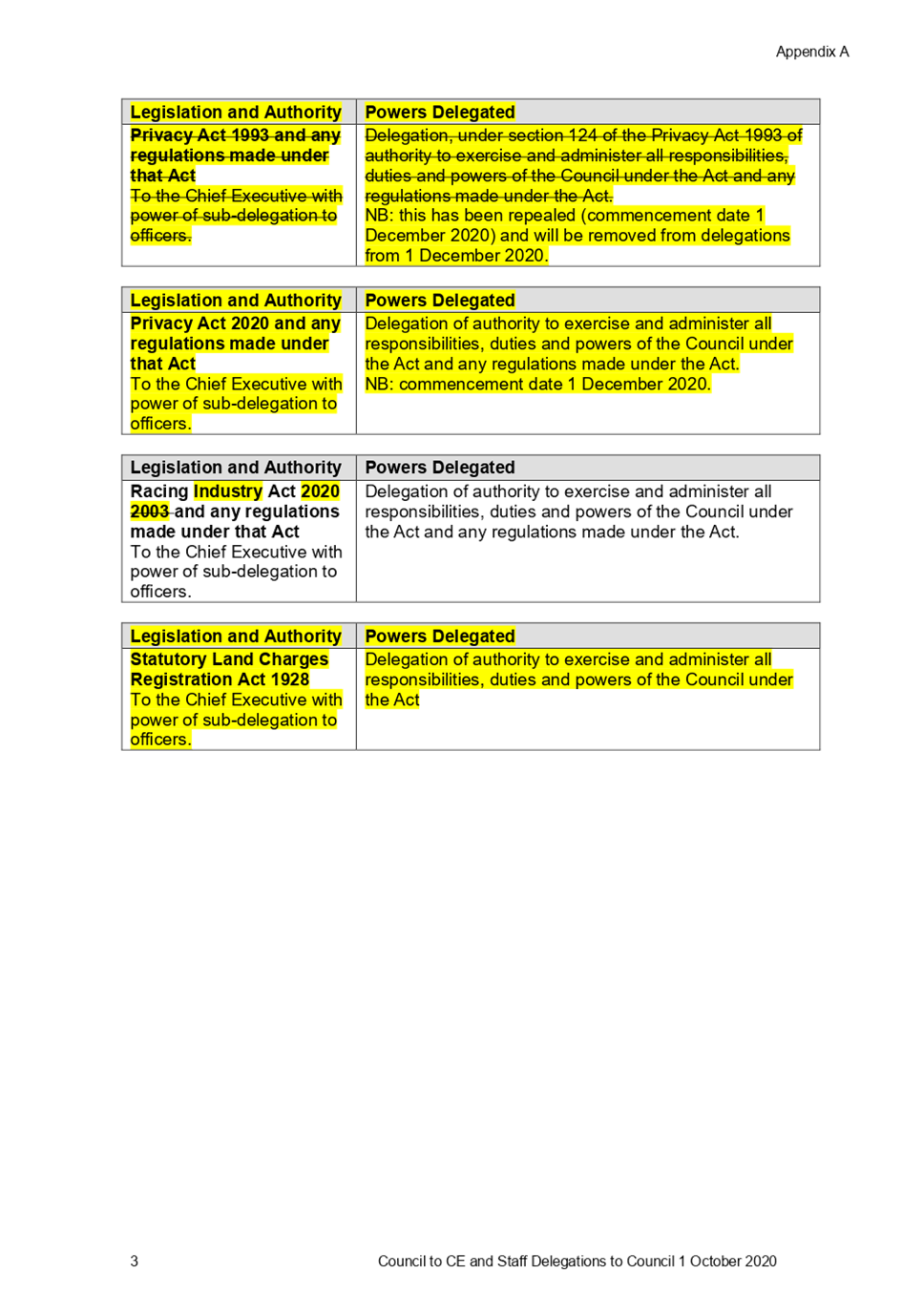
|
Council Meeting Agenda
|
1 October 2020
|
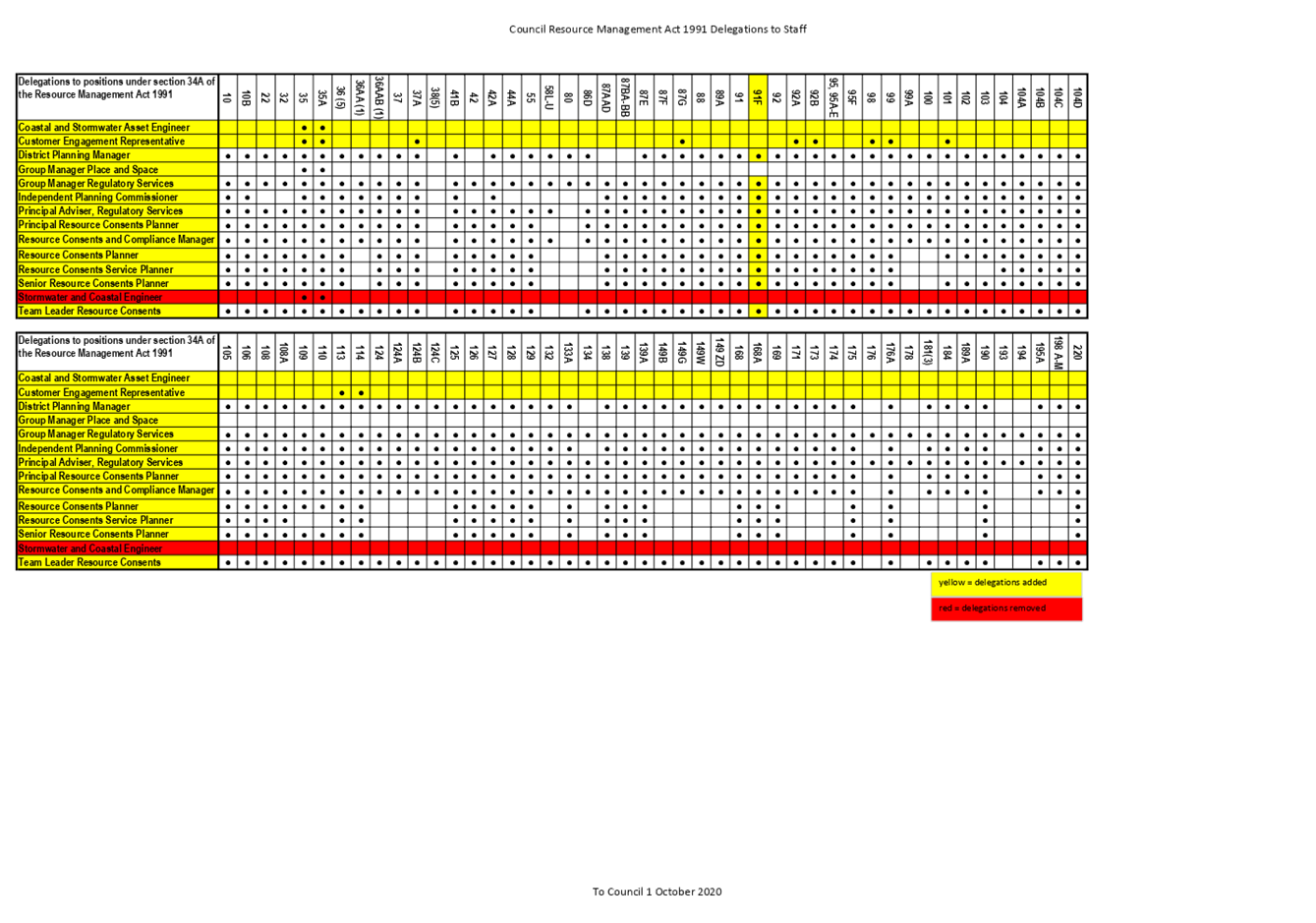
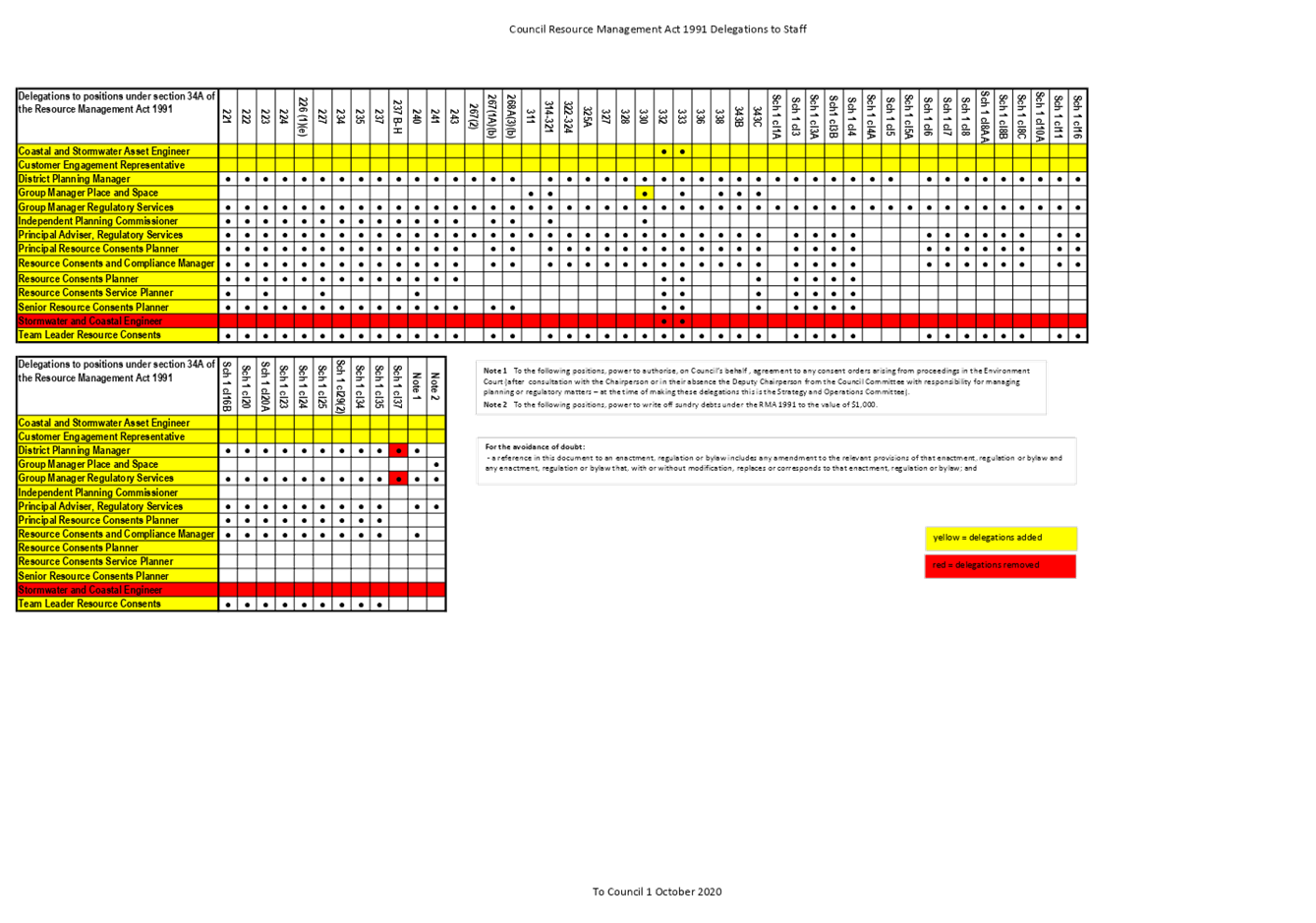

8.7 Elected
Members Remuneration Expenses and Allowances Policy 2019-2022 Update
Author: Leyanne
Belcher, Democracy Services Manager
Authoriser: Janice
McDougall, Group Manager People and Partnerships
Purpose of Report
1 This
report presents to the Council for adoption the updated Elected Members
Remuneration Expenses and Allowances Policy 2019-2020
Delegation
2 The
Council has the authority to consider this matter.
Background
3 The
Elected Members Remuneration Expenses and Allowances Policy 2019 -2020 was
approved by the Council on 30 January 2020. The Policy provides comprehensive,
clear information on Elected Member remuneration, expenses and allowances,
prepared in a user friendly style that can be easily referenced by Elected
Members and staff. This policy has been updated to reflect the following
Remuneration Authority Determinations. The updated policy is attached as
Appendix 1 to this report.
4 The
Remuneration Authority (‘the Authority’) is the independent body
responsible for the setting of elected members’ remuneration. The Local Government Members (2020/21)
Determination 2020 and the Local Government Members (Temporary
Reduction—COVID-19) Amendment Determination (No 2) 2020 were notified in
the New Zealand Gazette of Thursday 16 July 2020.
Issues
5 The
Local Government Members (2020/21) Determination 2020 makes no changes to
elected members’ remuneration, allowances or fees for the 2020/21
year. There are exceptions for a few other councils which changed their
committee structures recently. In those councils the council governance pool is
unchanged, but their remuneration has been distributed slightly differently.
This determination is deemed to have come into force on 1 July 2020. (See
Appendix 2.)
6 The
Remuneration Authority explained in its’ explanatory notes that COVID-19
has created a rapidly changing environment that is having an unprecedented
impact on the New Zealand economy. Taking these circumstances into account, the
Authority decided to maintain the remuneration, allowances, and hearing fees of
local government elected members at their 2019 levels until the expiry of this
determination.
7 The
Remuneration Authority (COVID-19 Measures) Amendment Act 2020 had enabled the
Authority to make a temporary reduction of up to 20% in the remuneration of
those local government members who earn above $100,000 per annum for a defined
period beginning on 9 July 2020 and ending on 6 January 2021.
8 The
Local Government Members (Temporary Reduction—COVID-19) Amendment
Determination (No 2) 2020 amends the Local Government Members (Temporary
Reduction—COVID-19) Determination 2020 (the principal determination).
It updates the cross-references in the principal determination to correctly
refer to the schedule of the Local Government Members (2020/21) Determination
2020. This determination is deemed to have come into force on 9 July
2020, which is the date on which the principal determination came into force.
(See Appendix 3.)
Policy
considerations
9 The
Elected Members Remuneration Expenses and Allowances Policy 2019-2020 has been
updated to include the Local Government Members (2020/21) Determination 2020
and Local Government Members (Temporary Reduction—COVID-19) Amendment
Determination (No 2) 2020 by the Remuneration Authority. The updated policy is
attached as Appendix 1 to this report.
Legal
considerations
10 There
are no additional legal considerations.
Financial
considerations
11 Following
the 2019 election a “governance pool” was allocated to each council
aligned with the ranking of the council on a size index and within the
framework of the new local government pay scale. The determination of the
Remuneration Authority in 2019 which introduced the new governance pool
approach involved a significant increase in the budget required for Elected
Members Remuneration. The budget will need to be increased as a result of that
determination.
12 There
is however no further increase introduced by the most recent determination
reflected in the update to the Elected Members Remuneration Expenses and
Allowances Policy 2019-2020
Tāngata
whenua considerations
13 There
are no tāngata whenua considerations.
Significance and Engagement
Significance
policy
14 This
matter has a low level of significance under Council’s Significance and
Engagement Policy.
Engagement
planning
15 An
engagement plan is not needed to implement this decision.
Publicity
16 Following
its adoption, the updated Elected Members Remuneration Expenses and Allowances
Policy 2019-2020 will be available to view on the Kāpiti
Coast District Council website.
|
Recommendations
17 That
the Council adopts the Elected Member Remuneration, Expenses and Allowances Policy
2019-2020 as at Appendix 1 of this report, ‘Elected Member
Remuneration, Expenses and Allowance Policy 2019-2022 Update’.
|
Appendices
1. Updated
Elected Members Remuneration, Expenses and Allowances Policy 2019-2020 ⇩ 
2. Local
Government Members (2020/21) Determination 2020 ⇩ 
3. Local
Government Members (Temporary Reduction COVID-19) Amendment Determination (No
2) 2020 ⇩ 
|
Council
Meeting Agenda
|
1 October 2020
|
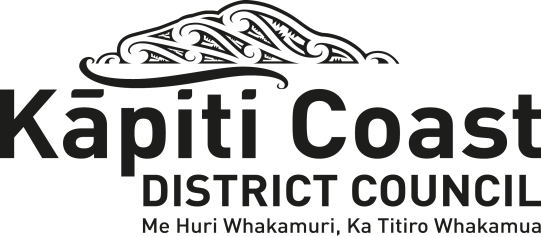
ELECTED MEMBER
REMUNERATION
EXPENSES AND ALLOWANCES
POLICY
2019-2020
|
|
Page
|
|
Policy
objective
|
2
|
|
Principles
|
2
|
|
A.
Remuneration – Mayor and Councillors
|
2
|
|
B.
Remuneration – Community Board Chairs and Members
|
2
|
|
C.
Elected Member Expenses and Allowances
|
3
|
|
1. Accommodation
|
3
|
|
2. Air dollars/points
|
3
|
|
3. Airline clubs
|
3
|
|
4. Air Travel
|
3
|
|
5. Carparks
|
3
|
|
6. Communication Technology
|
3
|
|
7. Entertainment & hospitality
|
4
|
|
8. Gifts
|
4
|
|
9. Incidentals
|
4
|
|
10. Meals
|
4
|
|
11. Professional development
|
4
|
|
12. Stationary
|
4
|
|
13. Subscriptions & memberships
|
5
|
|
14. Vehicles
|
5
|
|
15. Childcare Allowance
|
5
|
|
D.
The Mayor
|
6
|
|
1. Carparks
|
6
|
|
2. Communications Technology
|
6
|
|
3. Subscriptions & memberships
|
6
|
|
4. Vehicle
|
6
|
|
E.
Fees related to Hearings
|
6
|
|
Document
version control
|
6
|
Policy
objective
This policy
clarifies payment of elected member salaries, allowances and reimbursements to
October 2019.
Elected
Members are remunerated in accordance with legislation oversighted by the
Remuneration Authority. (See Local Government Members (2019/20) (Local
Authorities) Determination 2019) [The Determination]. Determinations also
stipulate the parameters around the payment of allowances and other fees.
Within these parameters councils can develop their own policies.
Principles
The payment
of allowances and expenses is:
· in line with
legislation
· related to the
conduct of Council business by Elected Members while acting in their role
· payable under
clear rules communicated to all claimants
· over sighted by
senior management and audit
· adequately
documented
· reasonable and
conservative in line with public sector norms
· does not extend to
any expenses related to electioneering
(Fees
related to District Licencing Committee hearings are not included in this
policy.)
|
A. Remuneration
– Mayor and Councillors
|
|
|
|
|
Role
|
Annual remuneration
|
|
Mayor
|
$138,500 (reduced to
$136,375 from 9 July 2020 to 6 January 2021)
|
|
Deputy
Mayor
|
$60,000
|
|
Strategy
& Operations Committee Chairperson
|
$55,000
|
|
Portfiolio
A Holder
|
$50,610
|
|
Portfolio
B Holder
|
$45,056
|
|
B. Remuneration
– Community Board Chairs and Members
|
|
|
|
|
|
Board
|
Chairperson
|
Member
|
|
Ōtaki
|
$15,250
|
$7,625
|
|
Paekākāriki
|
$7,947
|
$3,973
|
|
Paraparaumu-Raumati
|
$19,976
|
$9,988
|
|
Waikanae
|
$16,325
|
$8,163
|
The
following sections detail the payment of Elected Member reimbursements and
allowances.
|
C. Elected
Member Expenses and Allowances
|
|
1
|
Accommodation
|
a) while
at conferences or training events or other Council business – Council
will pay for accommodation where applicable that balances cost-effectiveness
with proximity to the event
b) private/provided
by friends/relatives – Council has no involvement
|
|
2
|
Air
Dollars/Points
|
Air
points/air dollars earned on travel, accommodation etc. paid for by the
Council are available for the private use of members. Due to the low level of
air travel this is insignificant.
|
|
3
|
Airline
Clubs
|
Council
doesn’t pay or reimburse for these memberships.
|
|
4
|
Air
Travel
|
a) Generally,
air travel bookings are made by staff upon approval and in accordance with
Council policy.
b) If
Elected Members make their own bookings, domestic and international travel
taken for Council-related business will be reimbursed up to the level of
economy class fares; if the elected member wishes to travel at a different
class they must meet the cost of the difference.
|
|
5
|
Carparks
|
At the
beginning of the triennium, elected members will receive a parking permit
which must be displayed in their car when they are attending Council business
at the Council Administration building, Paraparaumu. This permit is
non-transferable and must be returned at the end of the triennium.
|
|
6
|
Communications
Technology
|
a) Broadband
– All elected members will retrospectively receive a $400 allowance for
use of home broadband for Council business for the period 1 July 2019 to 30
June 20120 in line with the Determination. (Where an elected member has not
been a member for the whole for the 2019/20 year the amount paid will be
pro-rated).
b) Consumables
(ink cartridges/paper) – Council will provide these on request.
c) Email
– at the beginning of the triennium Elected Members are provided with a
Council email address which is not to be used by members for any personal
business.
d) Mobiles
– Councillors, Community Board Chairs and Community Board members, who
use their own mobile phone for Council-related business, are entitled to a
$150 equipment allowance and $400 service allowance for the 2019/20 year.
(Where an elected member is not a member for the whole for the 2019/20 year
the amount paid will be pro-rated). A member may opt, instead of receiving
the $400 service allowance, to provide telephone records and receipts clearly
showing which phone calls were made on Council business, in which case they
would be reimbursed for the actual costs of the phone calls.
e) Tablets
and Printers – Councillors and Community Board Chairs will be provided
with tablets at the beginning of the triennium for Council-related use,
although a reasonable degree of private use is acceptable. For Community
Board Members a communications allowance of $240 shall be paid to each member
per annum to cover the use of a personal computer and printer.
|
|
7
|
Entertainment
& hospitality
|
Reasonable
costs will be reimbursed but a claim for reimbursement will need to be put in
writing for approval by the Mayor and the Chief Executive.
|
|
8
|
Gifts
|
Gifts of
any kind (e.g. sports or other event tickets) and value should be declared to
the Mayor’s Personal Assistant for entry into the Gift Register.
|
|
9
|
Incidentals
|
Reasonable
expenses incurred in the pursuit of Council business will be reimbursed on
presentation of an expense claim supported with the relevant
invoices/receipts.
|
|
10
|
Meals
|
This
excludes Council catering for meetings.
Reasonable
costs for meals and sustenance are reimbursed when travelling on Council
business on presentation of receipt/s.
|
|
11
|
Professional
development
|
Registration
costs for attendance at conferences, seminars and training events will be
paid for by the Council, in accordance with the elected members’
induction, training and development programme.
|
|
12
|
Stationery
|
Elected
members will be supplied with business cards. Any other stationery required
for Council business will be considered on request.
|
|
13
|
Subscriptions
& memberships
|
The costs
of these will not be met by the Council.
|
|
14
|
Vehicles
|
a) Mileage
- Reimbursements apply according to the following conditions:
i. Travel
must relate to attendance at Council/Committee meetings, Community Board
meetings, conference/seminars relating to local government or attendance at
community organisation meetings as an elected member.
ii. The
travel must be by the most direct route that is reasonable in the
circumstances.
iii. For
a petrol or diesel vehicle:
79 cents for the
first 14,000 km per annum,
30 cents for
travel over 14,000 km per annum.
iv. For a
petrol hybrid vehicle:
79 cents for the
first 14,000 km per annum,
19 cents for
travel over 14,000 km per annum.
v. For
an electric vehicle:
79 cents for the
first 14,000 km per annum,
9 cents for
travel over 14,000 km per annum.
b) Private
use of vehicle – Elected members may opt to use their own vehicles to
travel to training events or conferences if the reimbursement for mileage
would be cheaper than air travel.
c) Rental
cars – the Council will not meet the costs of using these.
d) Taxis
- the Council will reimburse reasonable costs for the use of taxis associated
with training events and Council business.
|
|
15
|
Childcare
allowance
|
a) Childcare
– Reimbursements apply according to the following conditions:
i. The
member is a parent or guardian of the child, or is a person who usually has
responsibility for the day-to-day care of the child (not on a temporary
basis); and
ii. the
child is under 14 years of age; and
iii. the
childcare is provided by a person who is not a family member and does not
ordinarily reside with the member; and
iv. the
member provides evidence satisfactory to the authority of the amount paid for
child care.
v. Childcare
allowance will be paid at a maximum rate of $15 per hour; not exceeding a
total amount of $6000 per annum OR
vi. An
annual amount of $6000 paid retrospectively for the year.
.
|
|
|
|
|
|
D. The
Mayor
|
|
1
|
Carparks
|
The Mayor
has a dedicated parking space.
|
|
2
|
Communications
Technology
|
The Mayor
is provided with a mobile phone for the triennium with reasonable private use
being acceptable.
|
|
3
|
Subscriptions
& memberships
|
The
subscription for the Mayor’s role as Justice of the Peace will be paid
by the Council.
|
|
4
|
Vehicle
|
The Mayor
is provided with a vehicle for private and business use during the term of
office. [A local authority may provide (a) a
motor vehicle or (b) a vehicle mileage allowance. If a motor vehicle is
provided for private use annual remuneration must be adjusted in accordance
with the Determination. The maximum purchase price is also covered by the
Determination. ]
|
|
E. Fees related to Hearings
|
|
1
|
Chairperson
|
A member
of a local authority who acts as the chairperson of a hearing is entitled to
a fee of up to $100 per hour.
|
|
2
|
Member
|
A member
of a local authority who is not the chairperson of a hearing is entitled to a
fee of up to $80 per hour.
|
|
3
|
Mayor
or Acting Mayor
|
These fees
are not available to the Mayor or to an acting Mayor who is paid the
mayor’s remuneration and allowances.
|
DOCUMENT VERSION CONTROL – AMENDMENTS DURING 2016-2019
TRIENNIUM
|
NO
|
AMENDMENT/S SUMMARY
|
ADOPTED BY COUNCIL
|
|
1
|
Policy adopted by the Council
|
8 August 2019
|
|
2
|
Updates to Mayor and Councillor Remuneration
|
30 January 2020
|
|
3
|
Maintenance
of remuneration, allowances, and hearing fees at their 2019 levels. Temporary
reduction of Mayoral remuneration.
|
|
Signed……………………………………………………………………Date:………………….......
CHIEF
EXECUTIVE
|
Council Meeting Agenda
|
1 October 2020
|
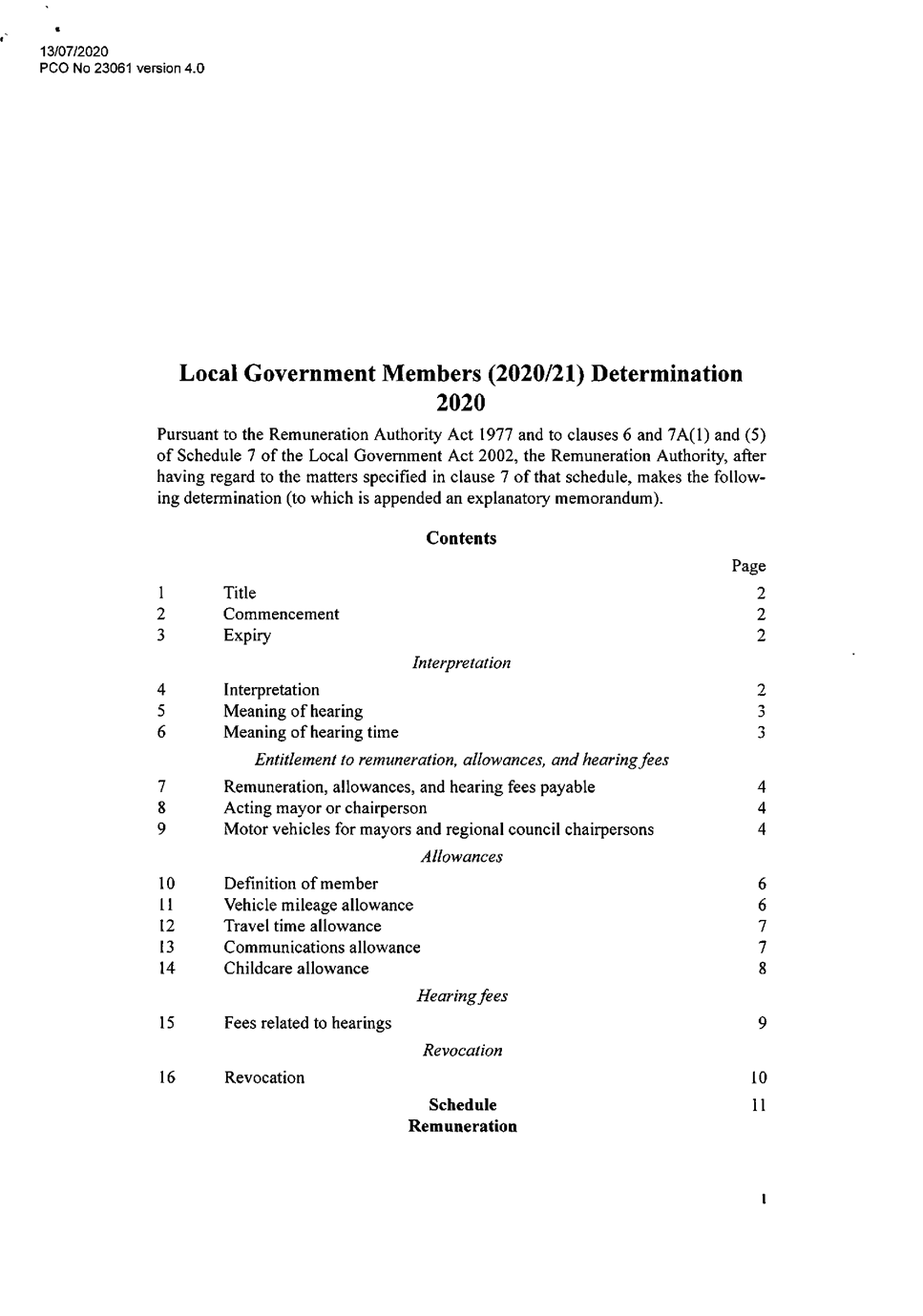

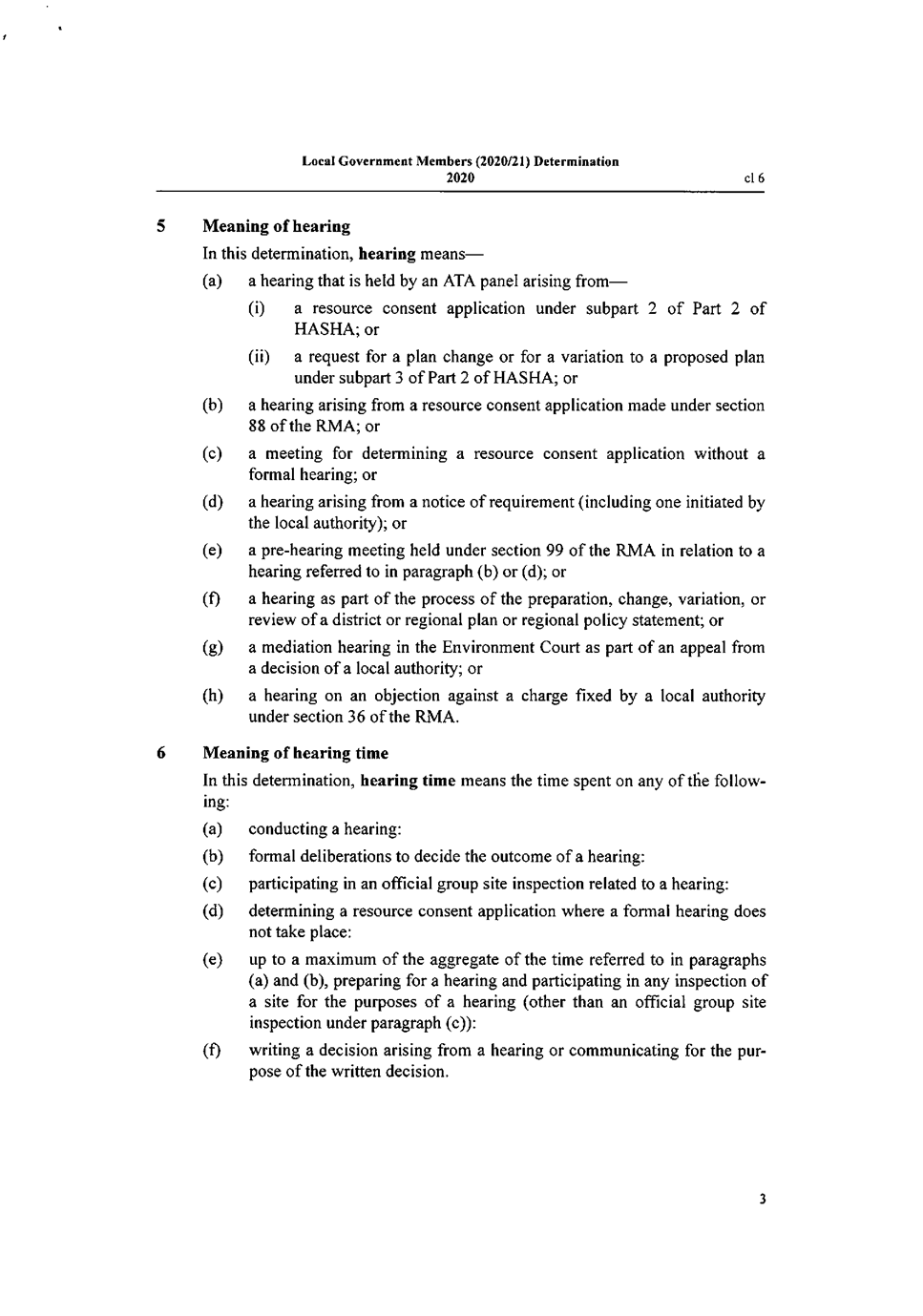

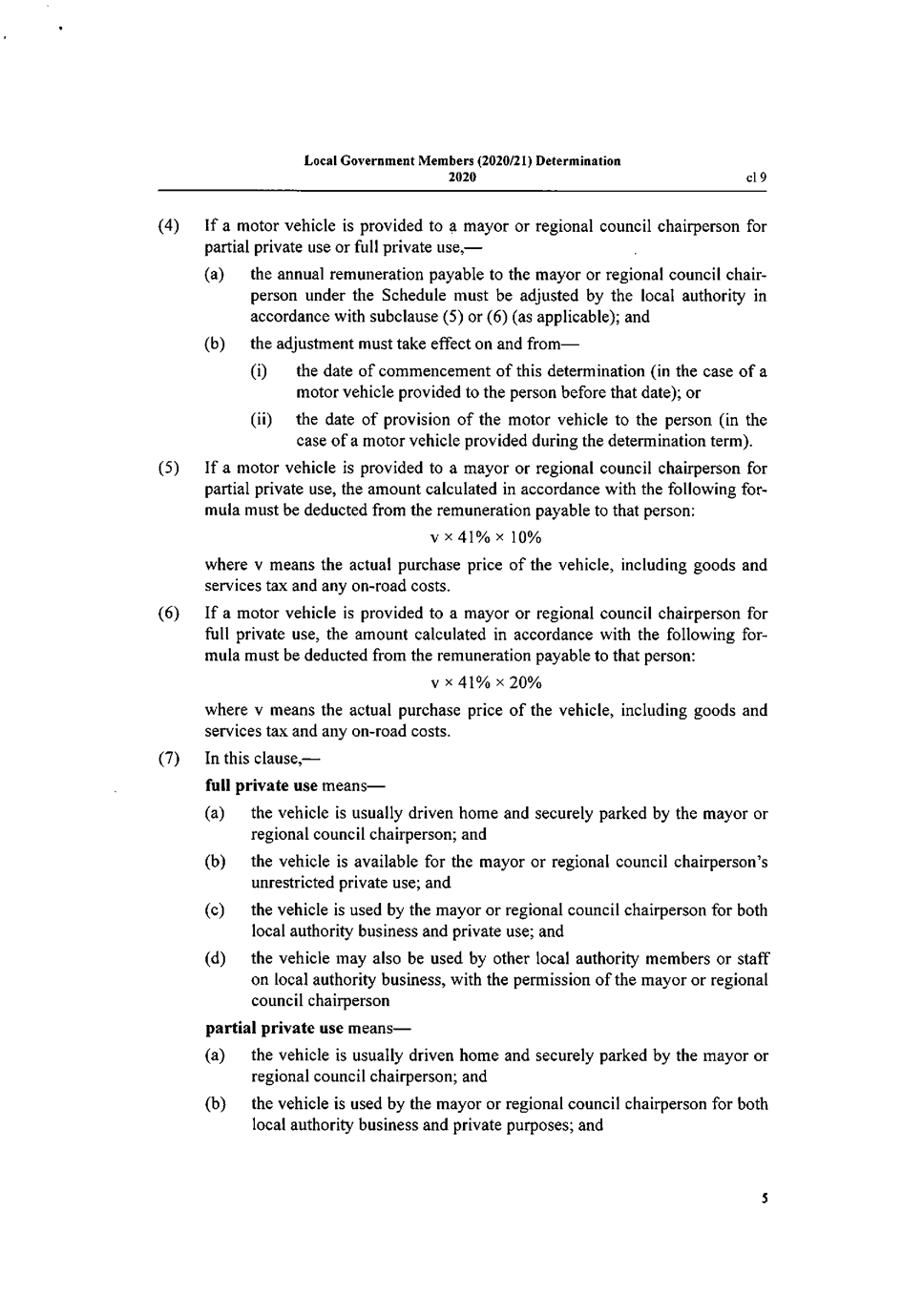

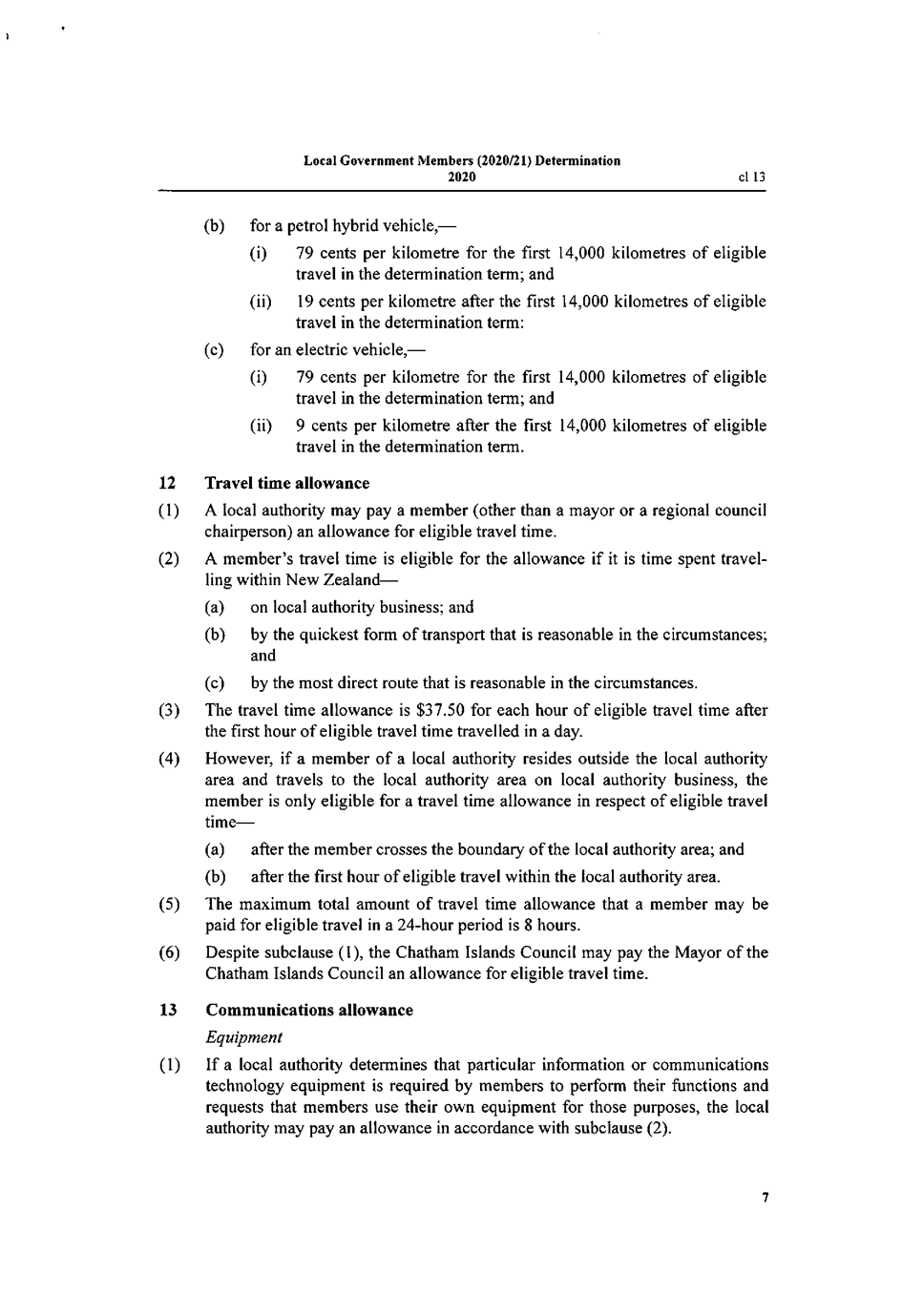
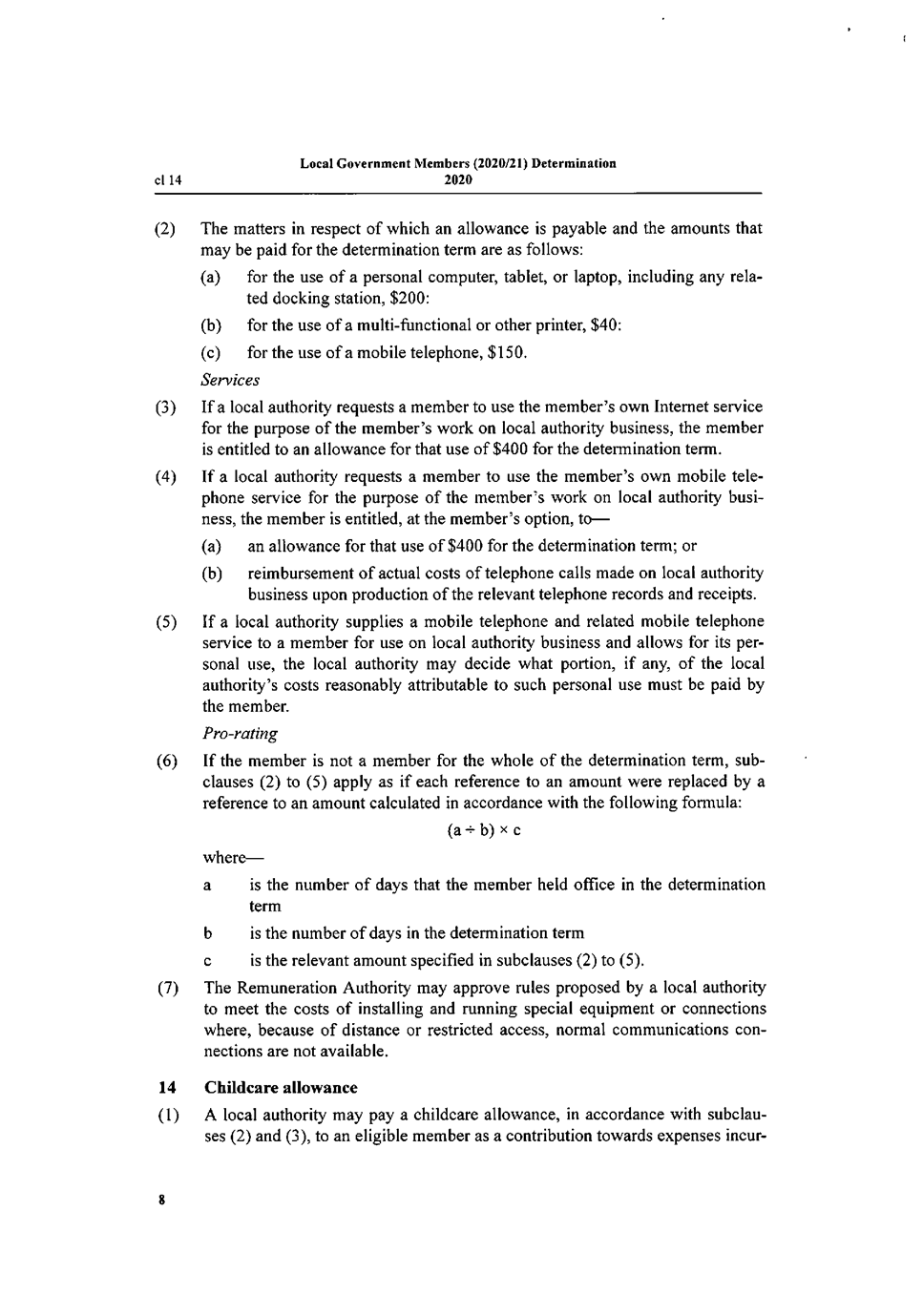
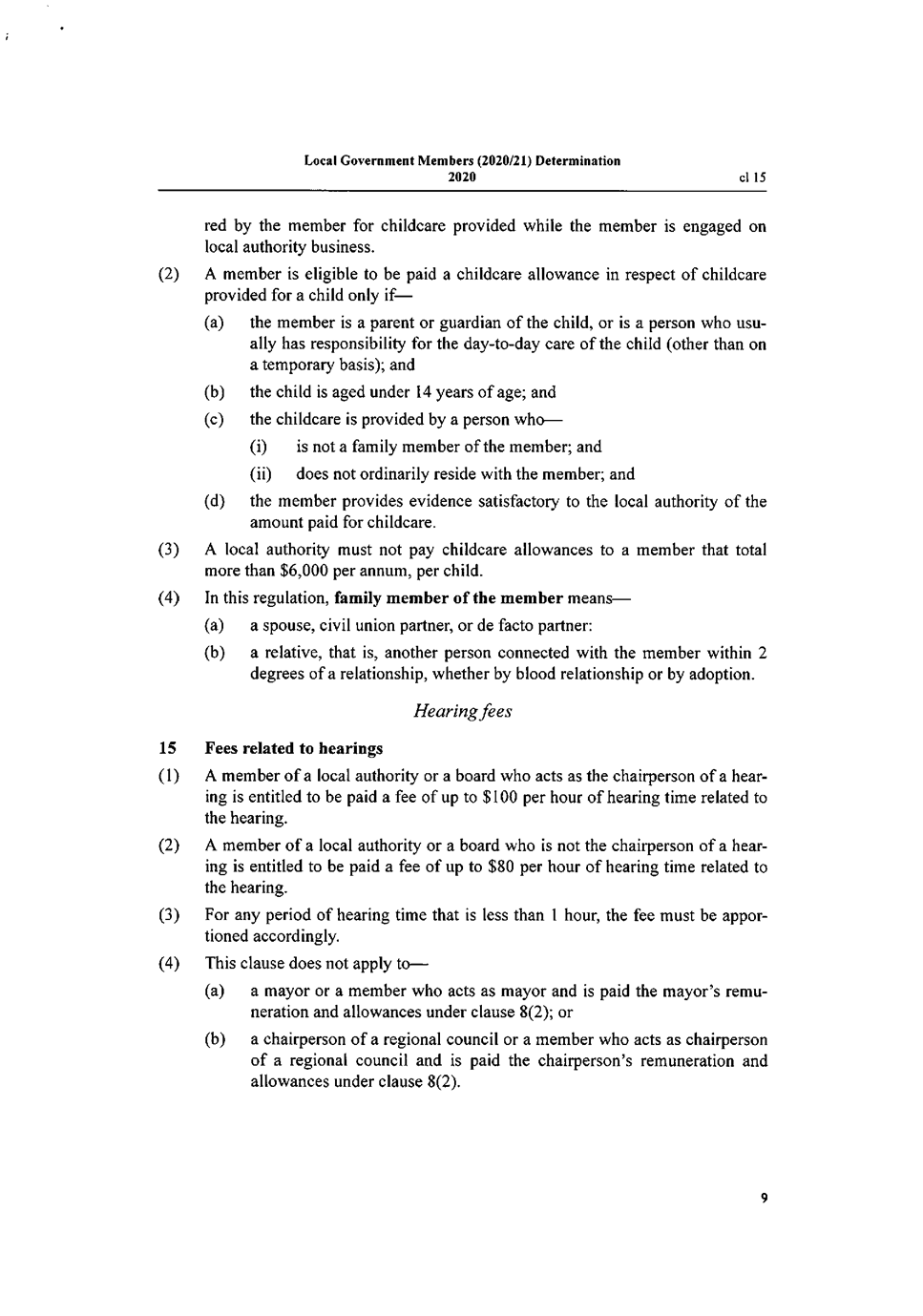

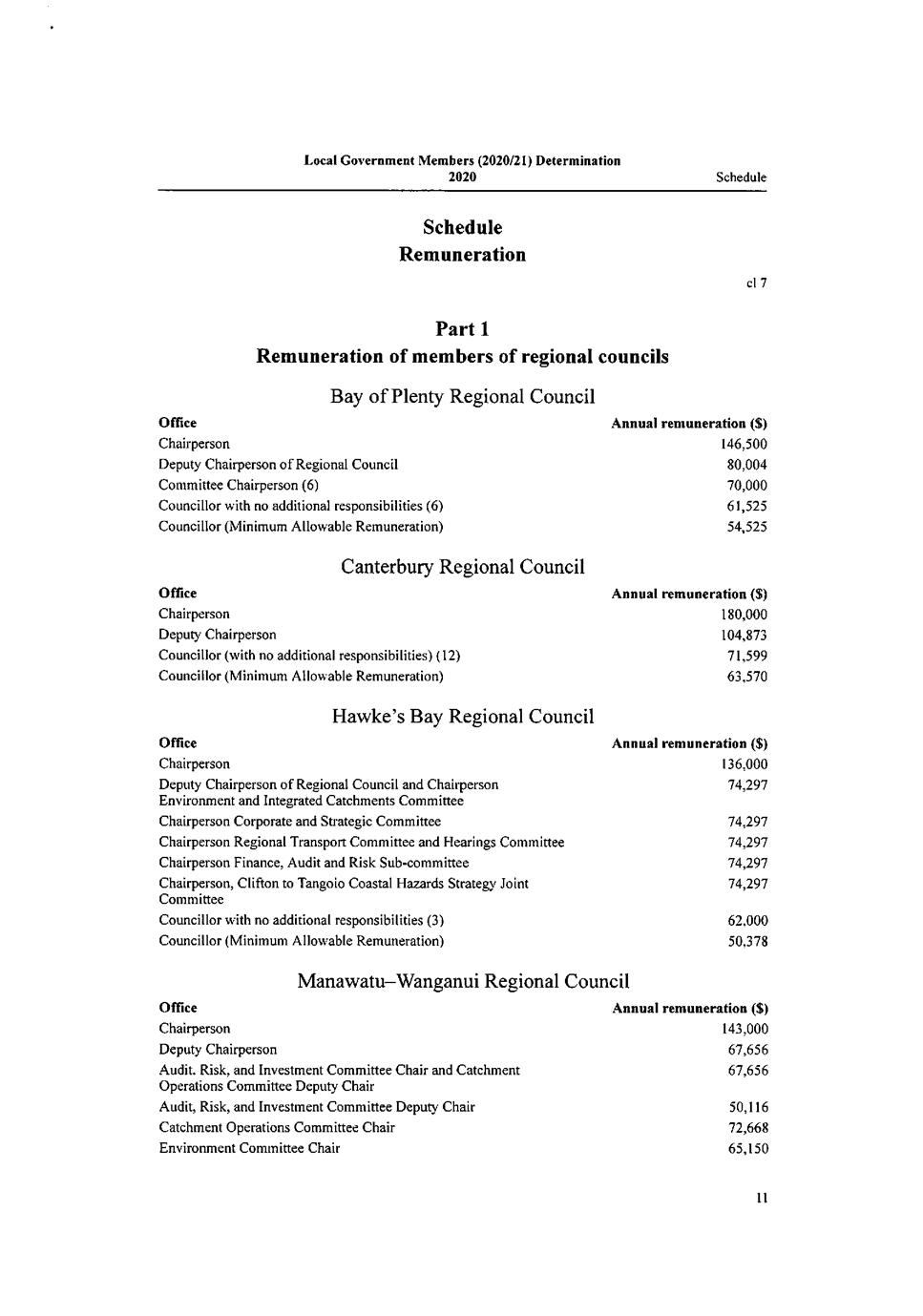
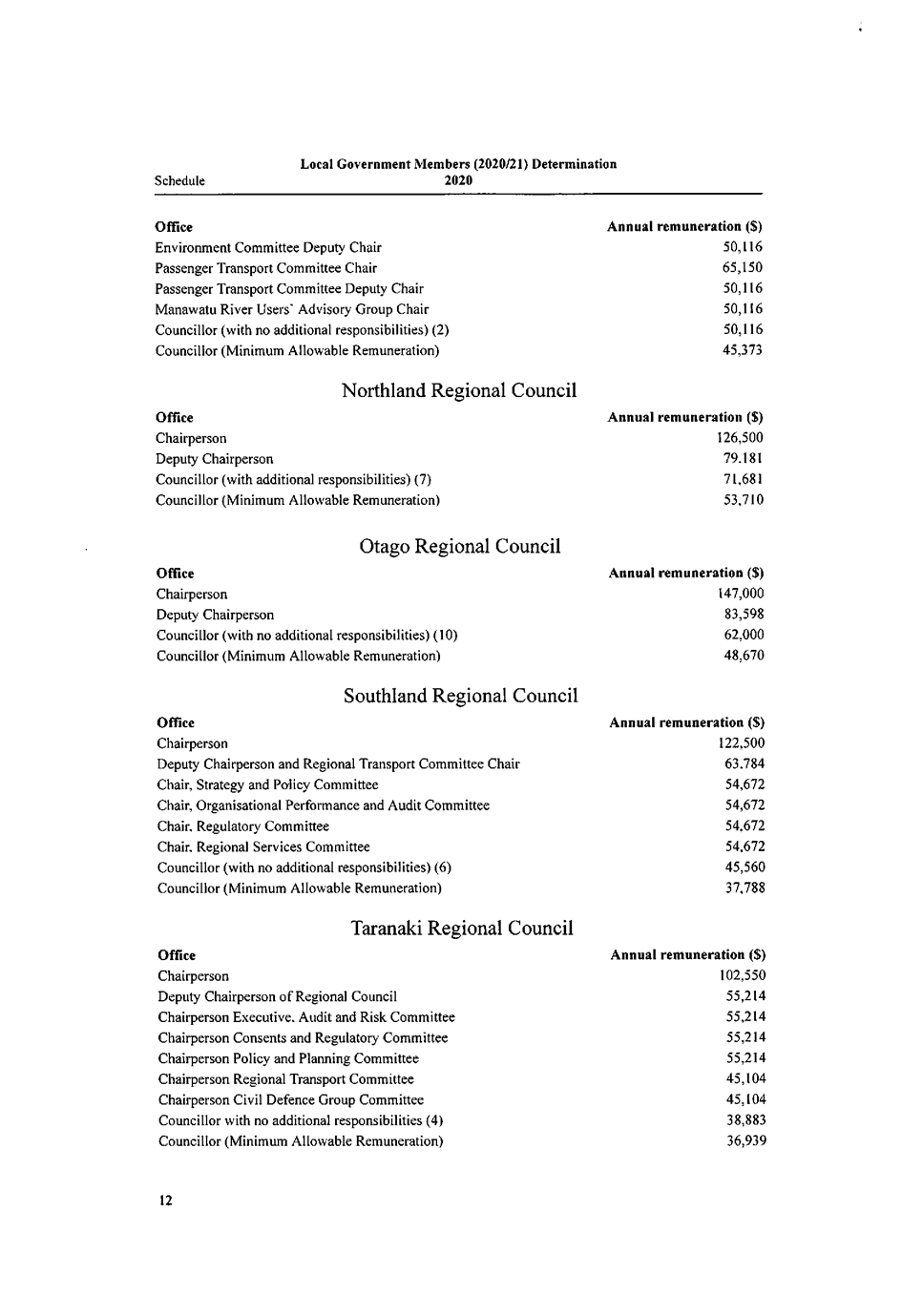
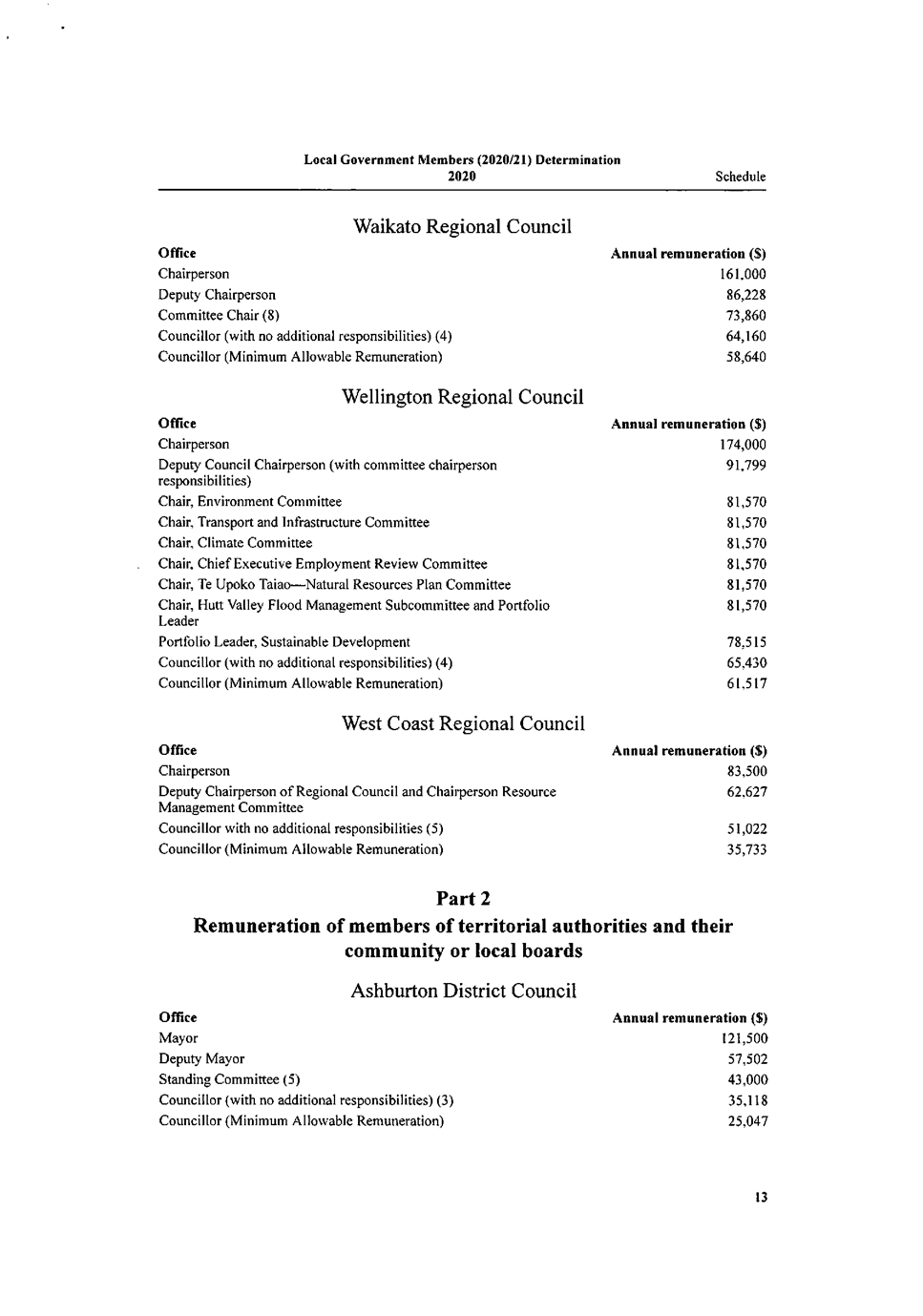
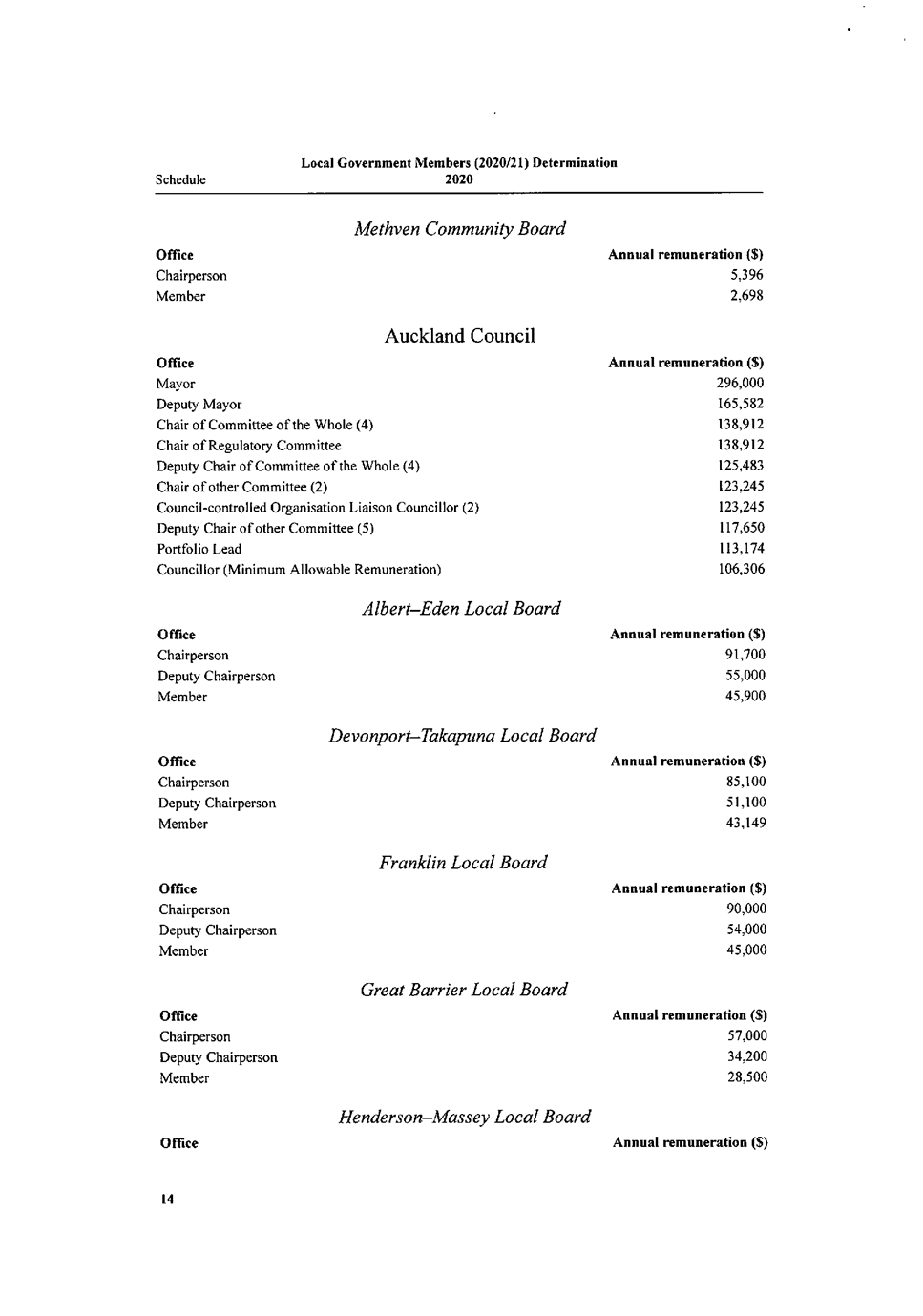
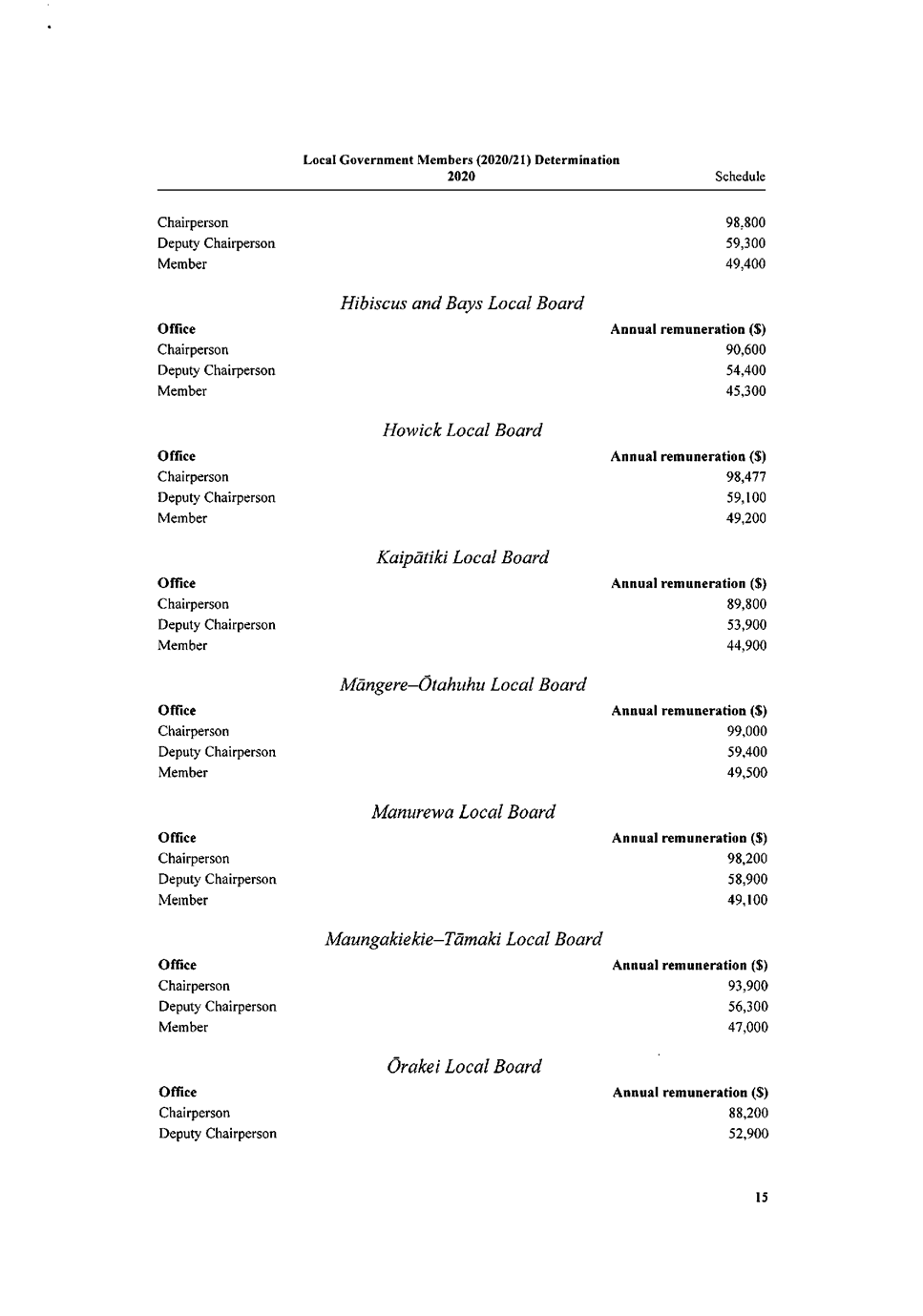
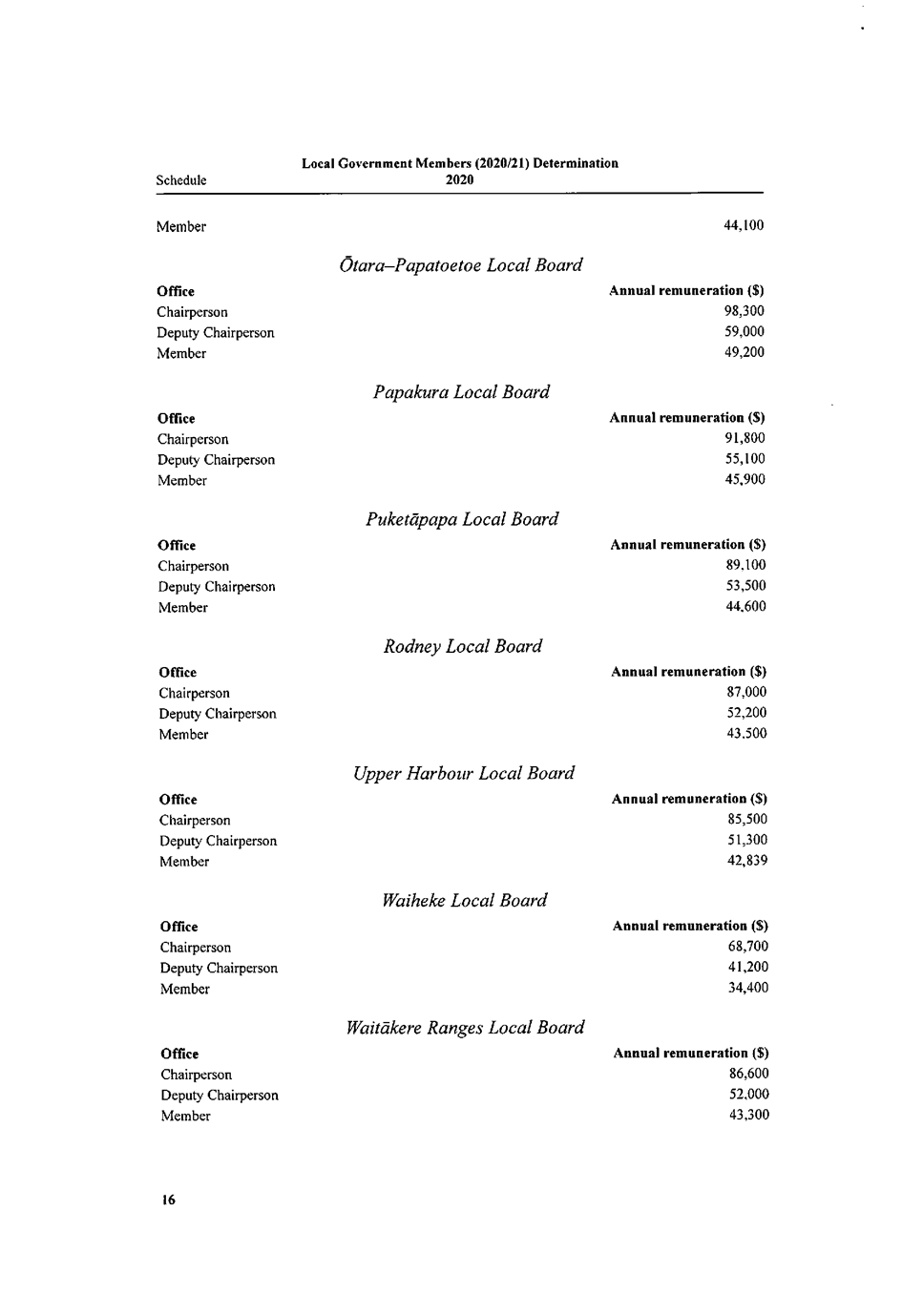

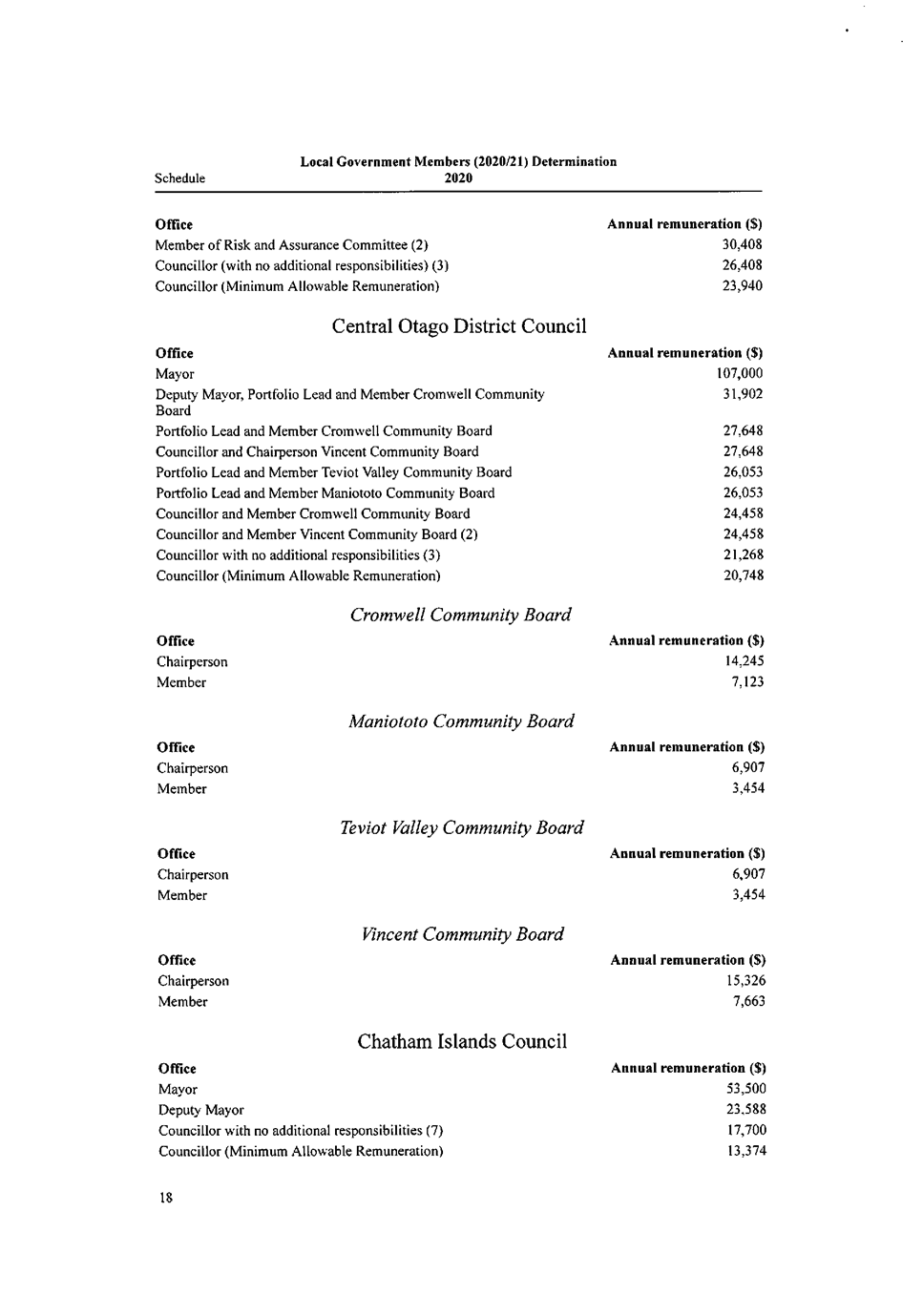

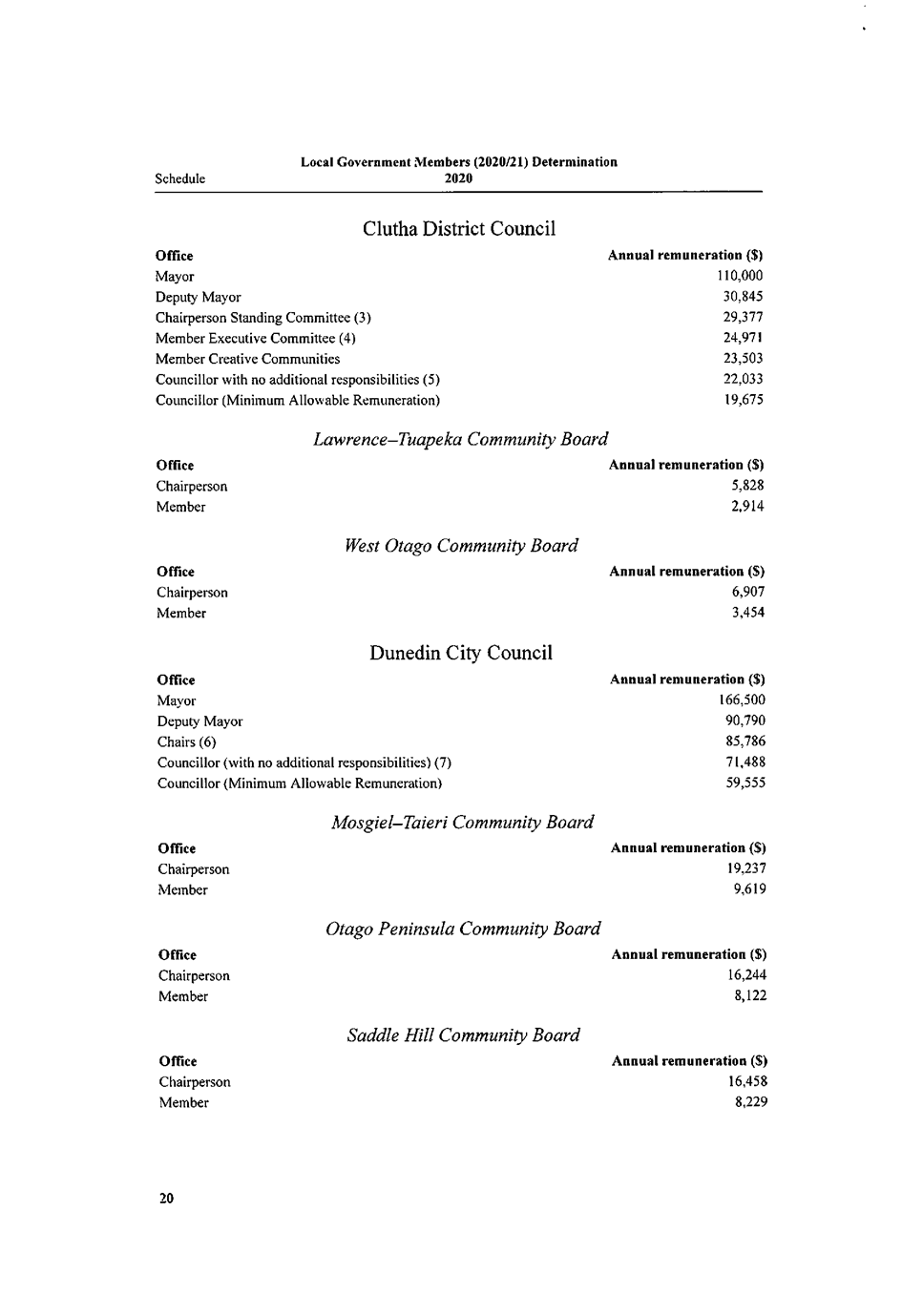


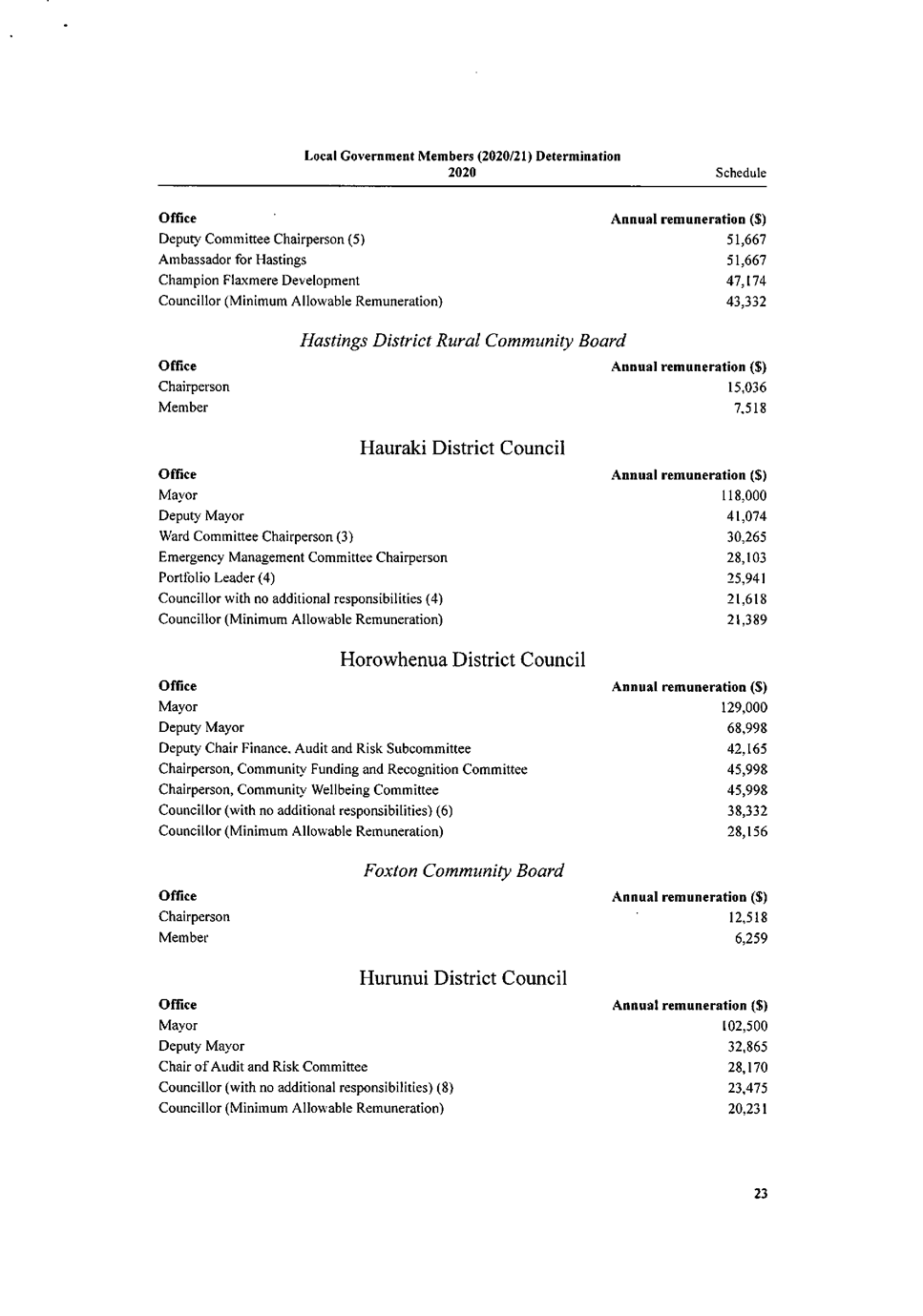
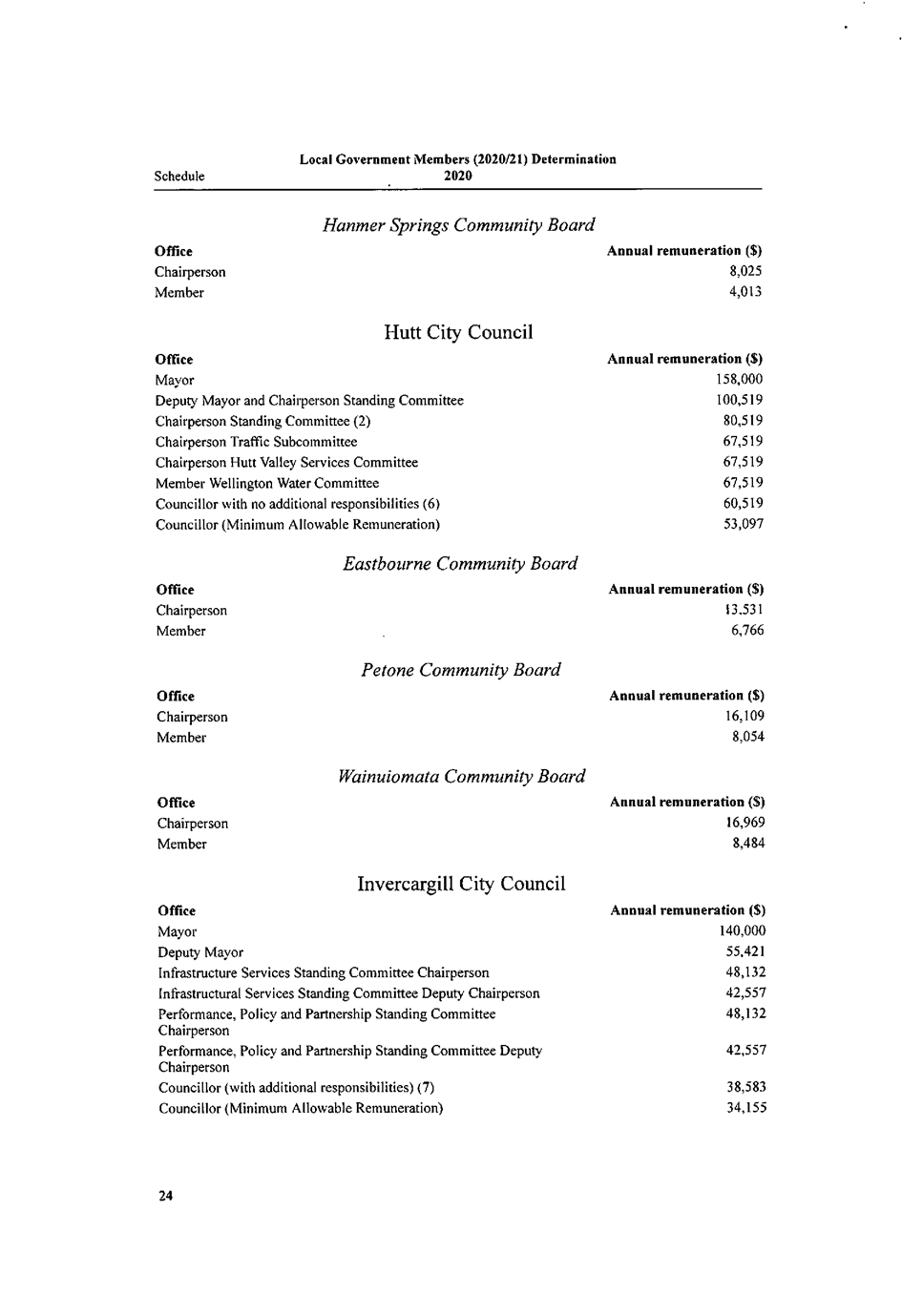
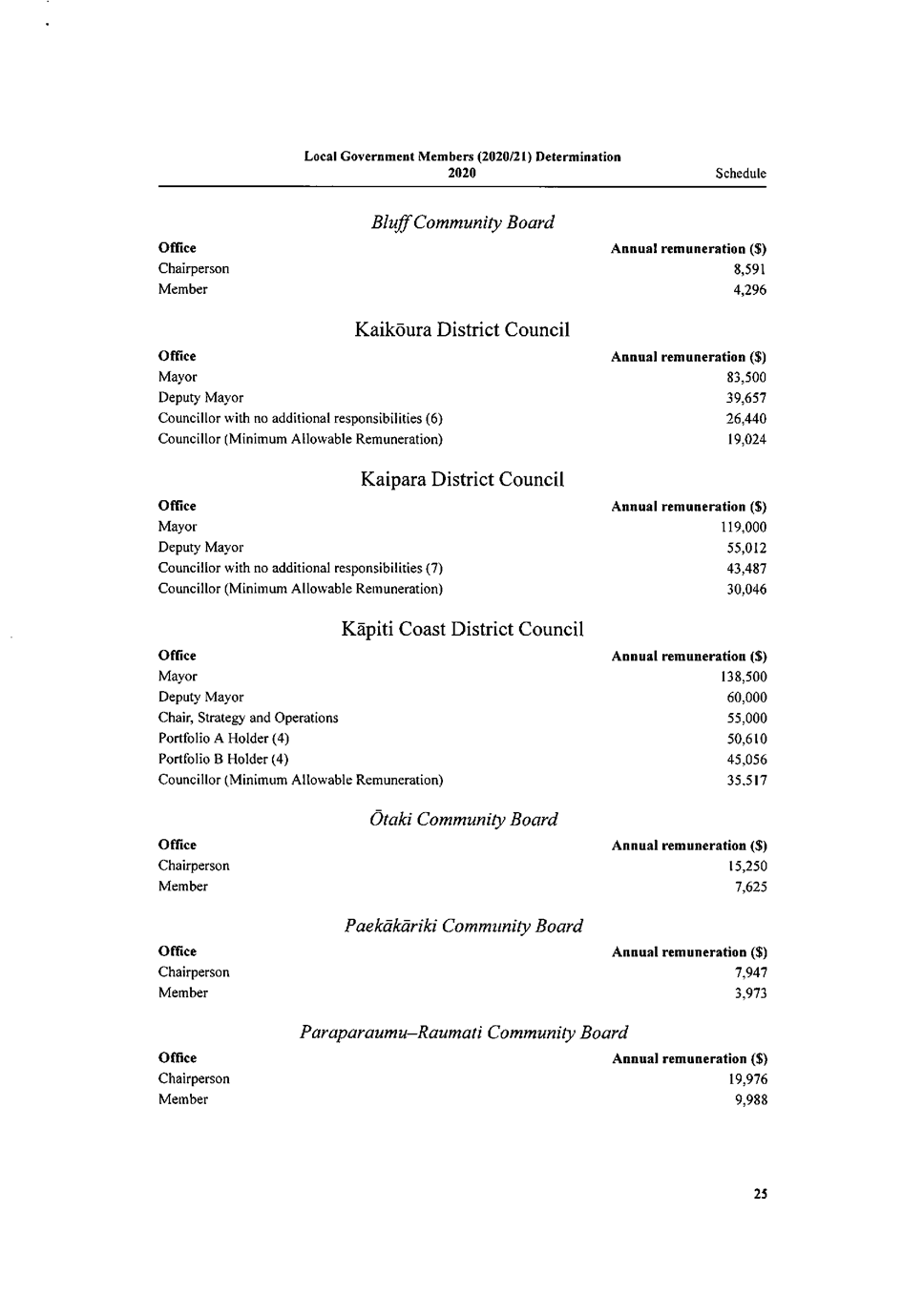
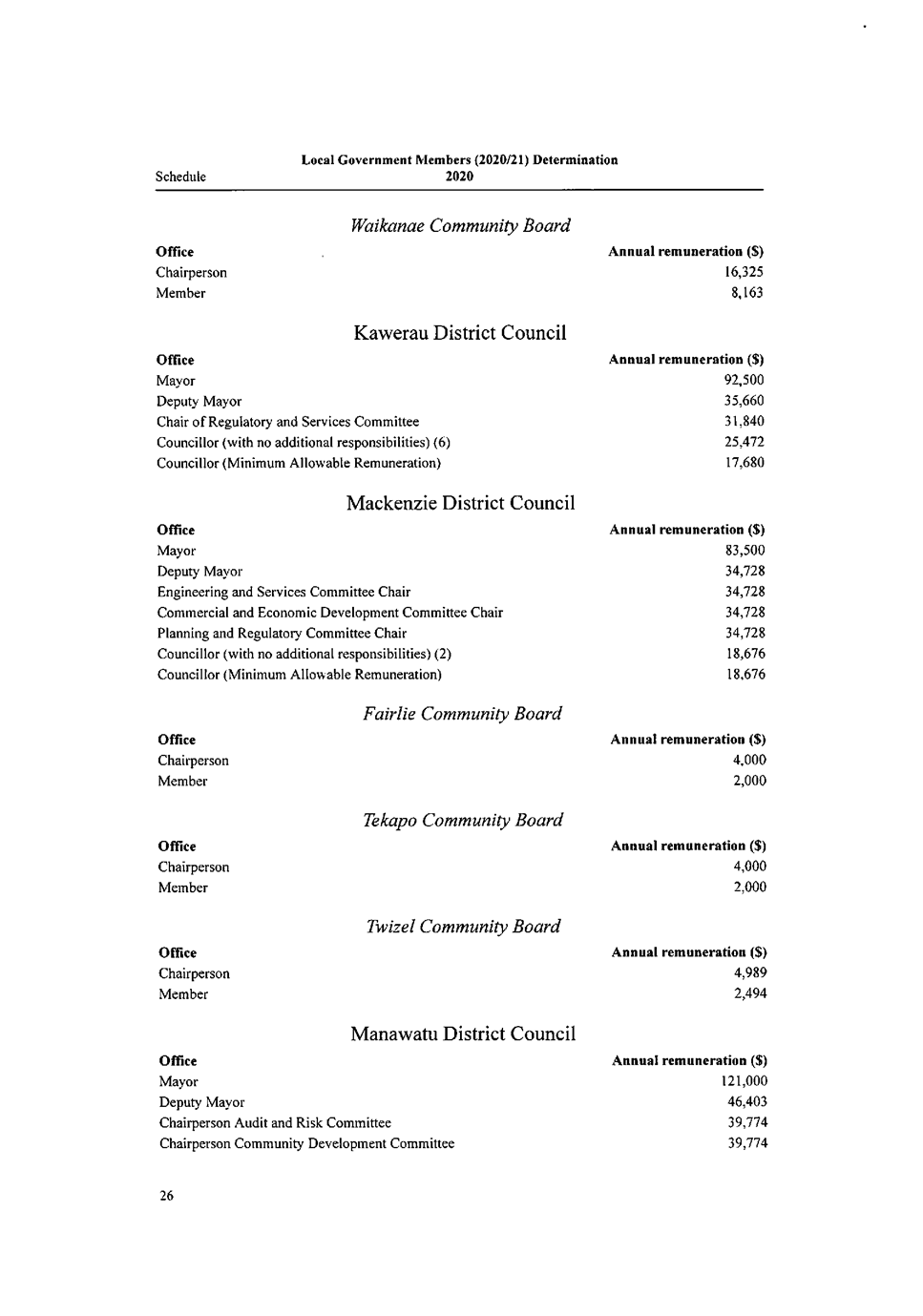


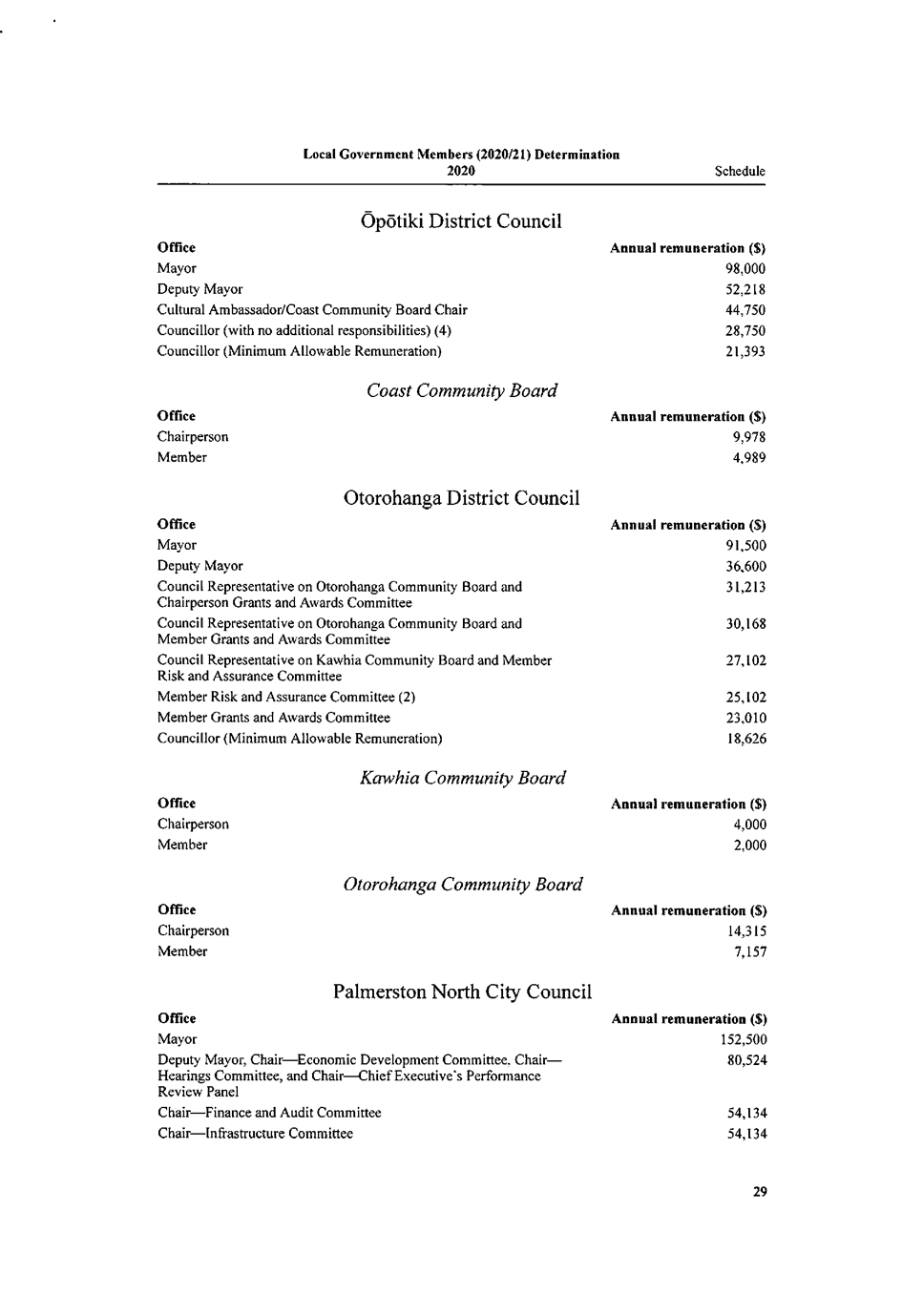
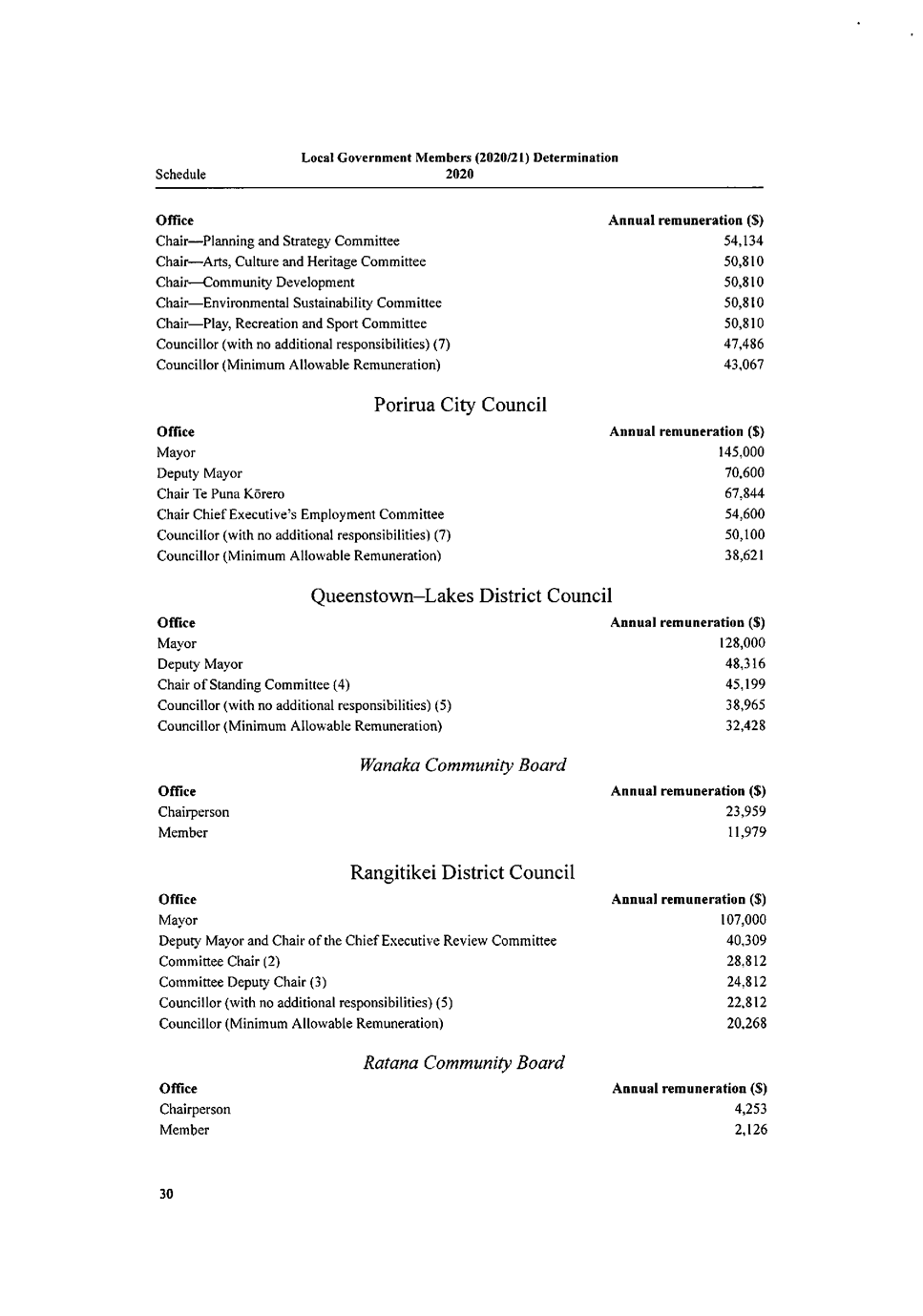

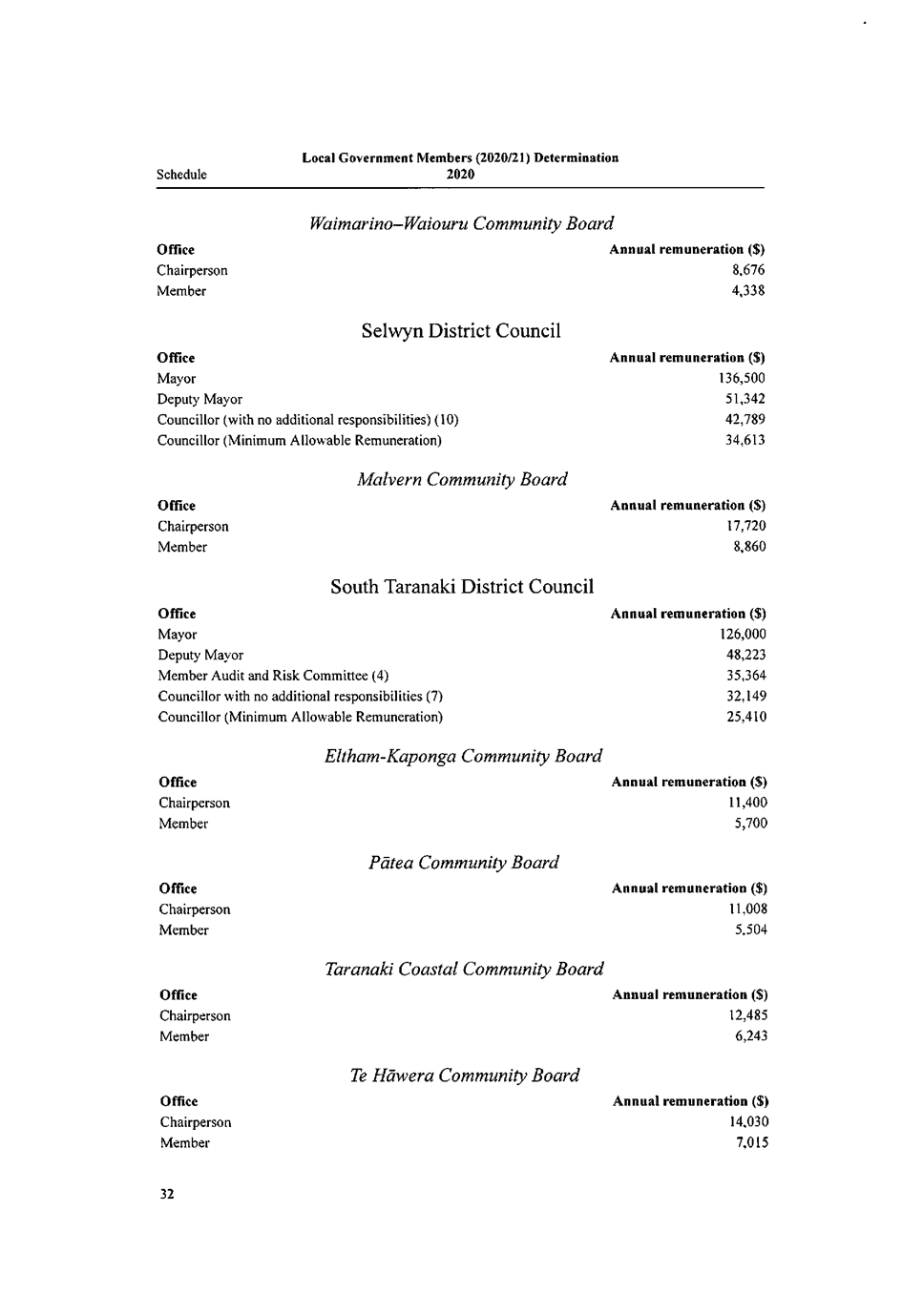
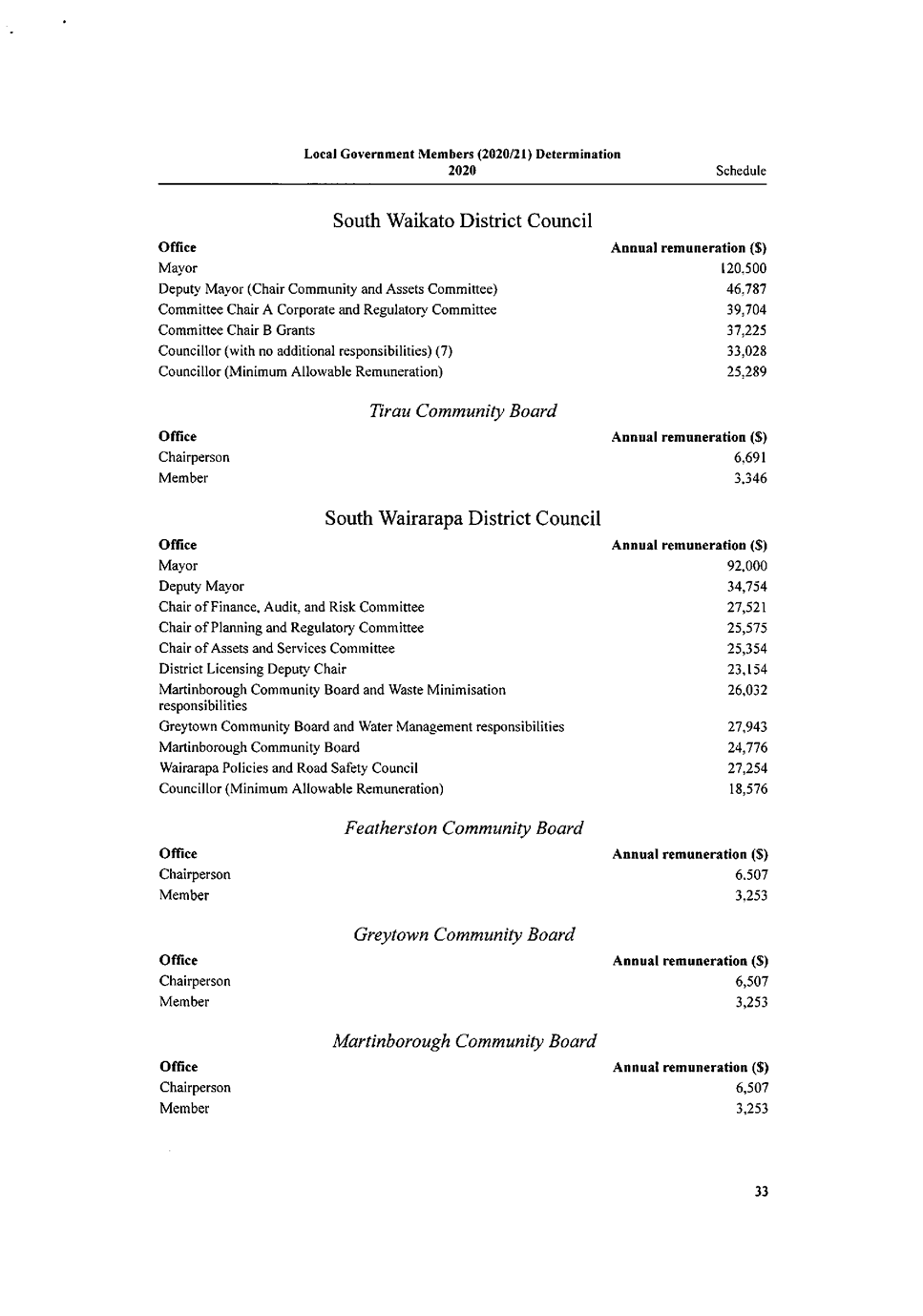
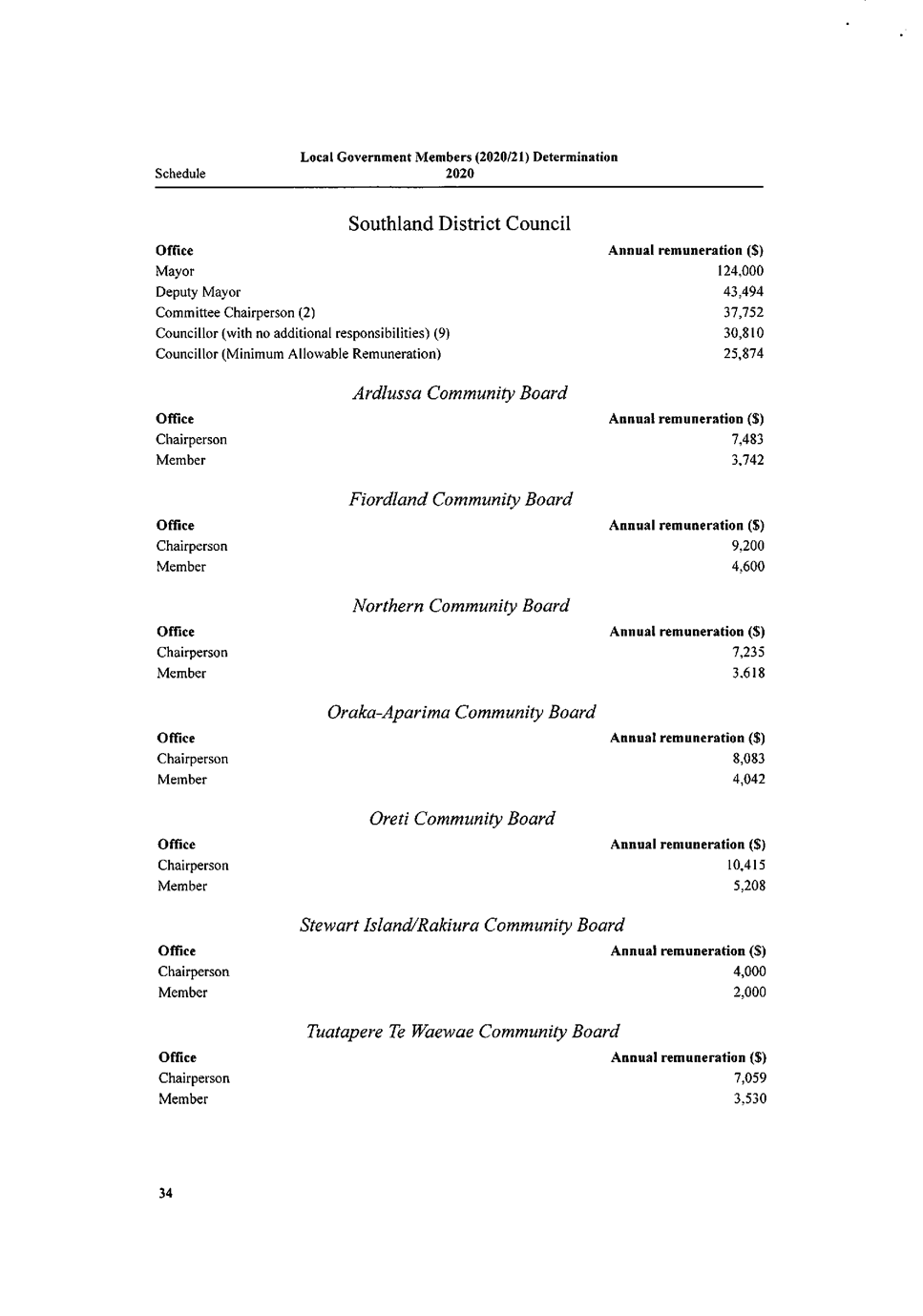
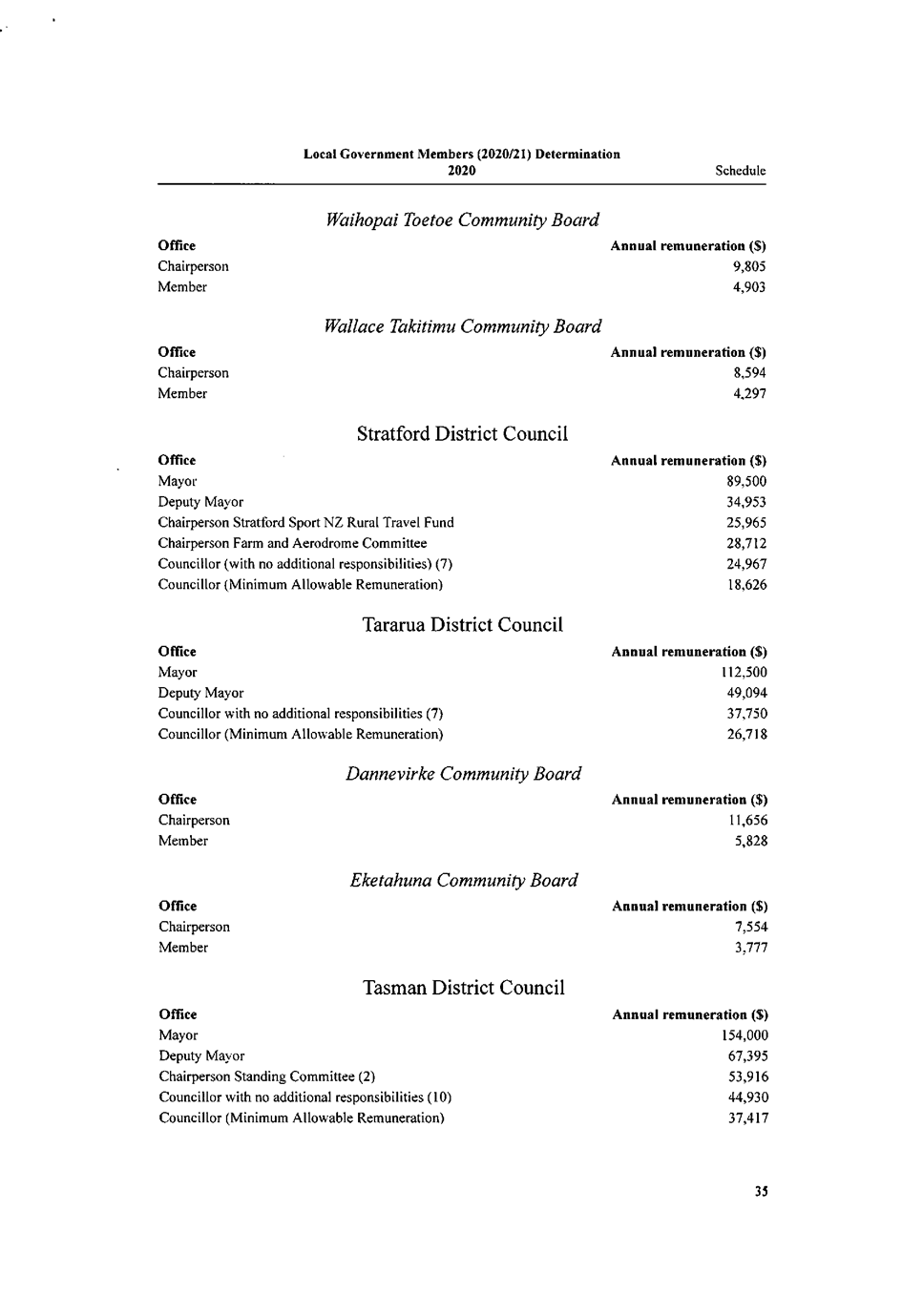
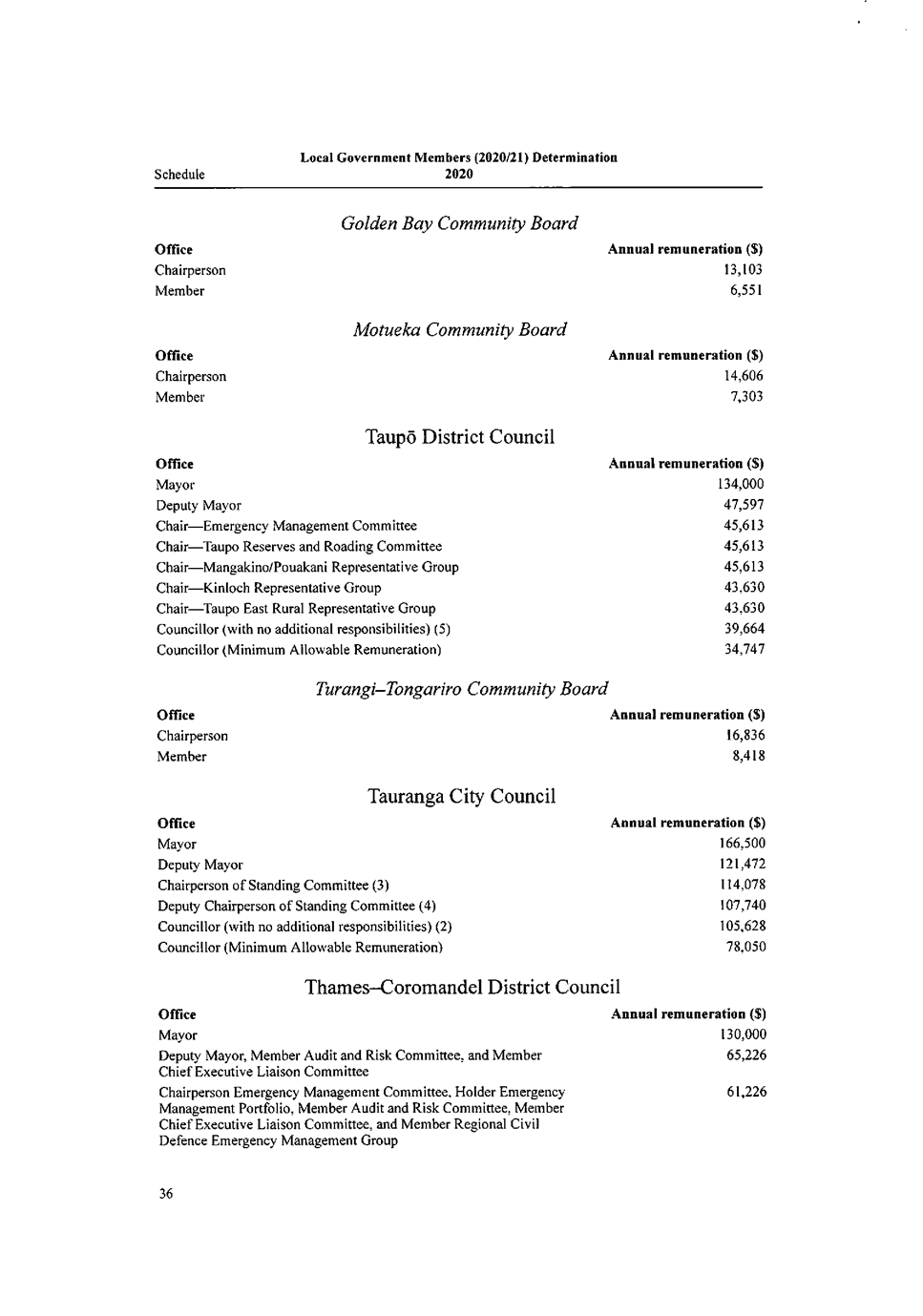
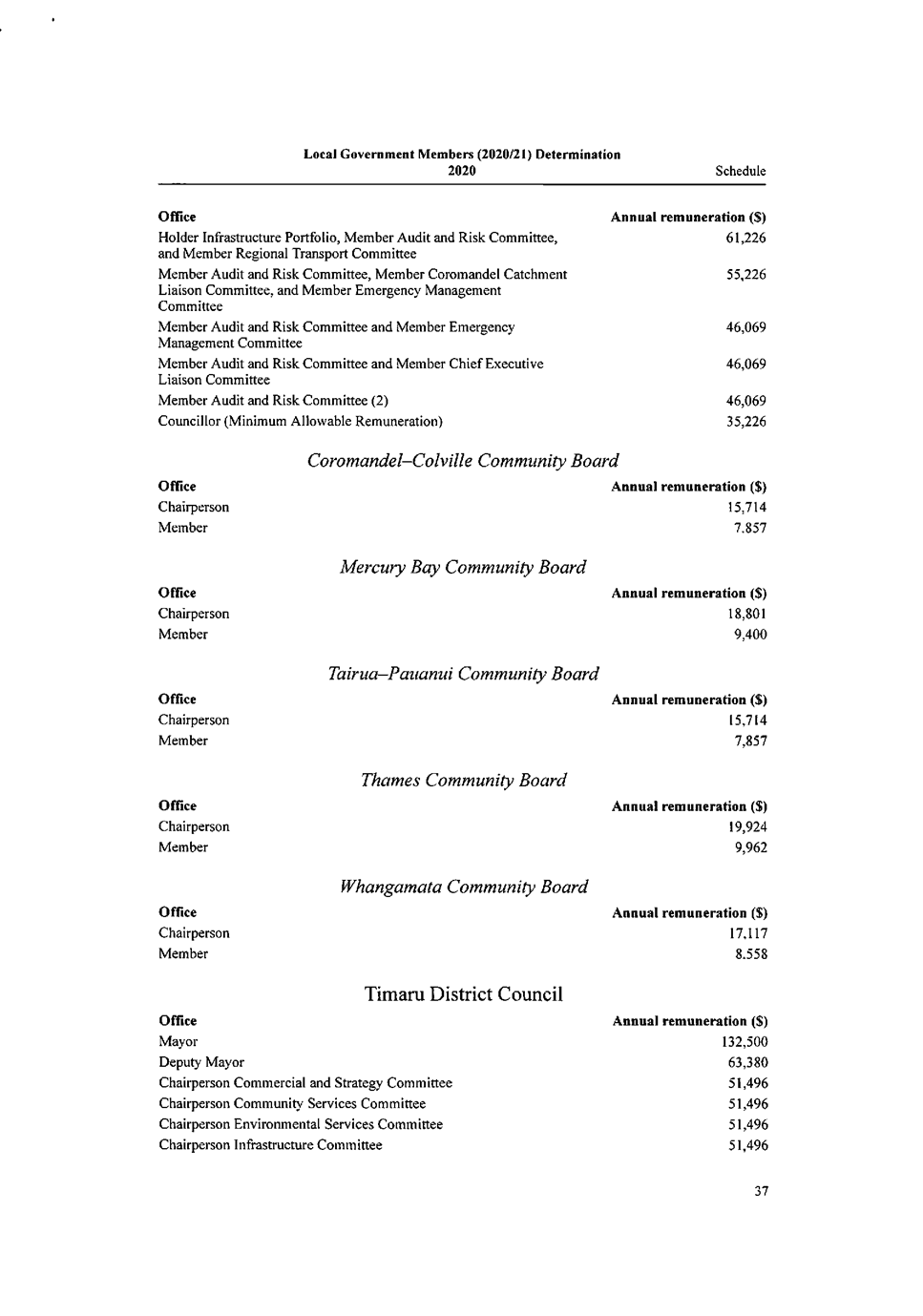
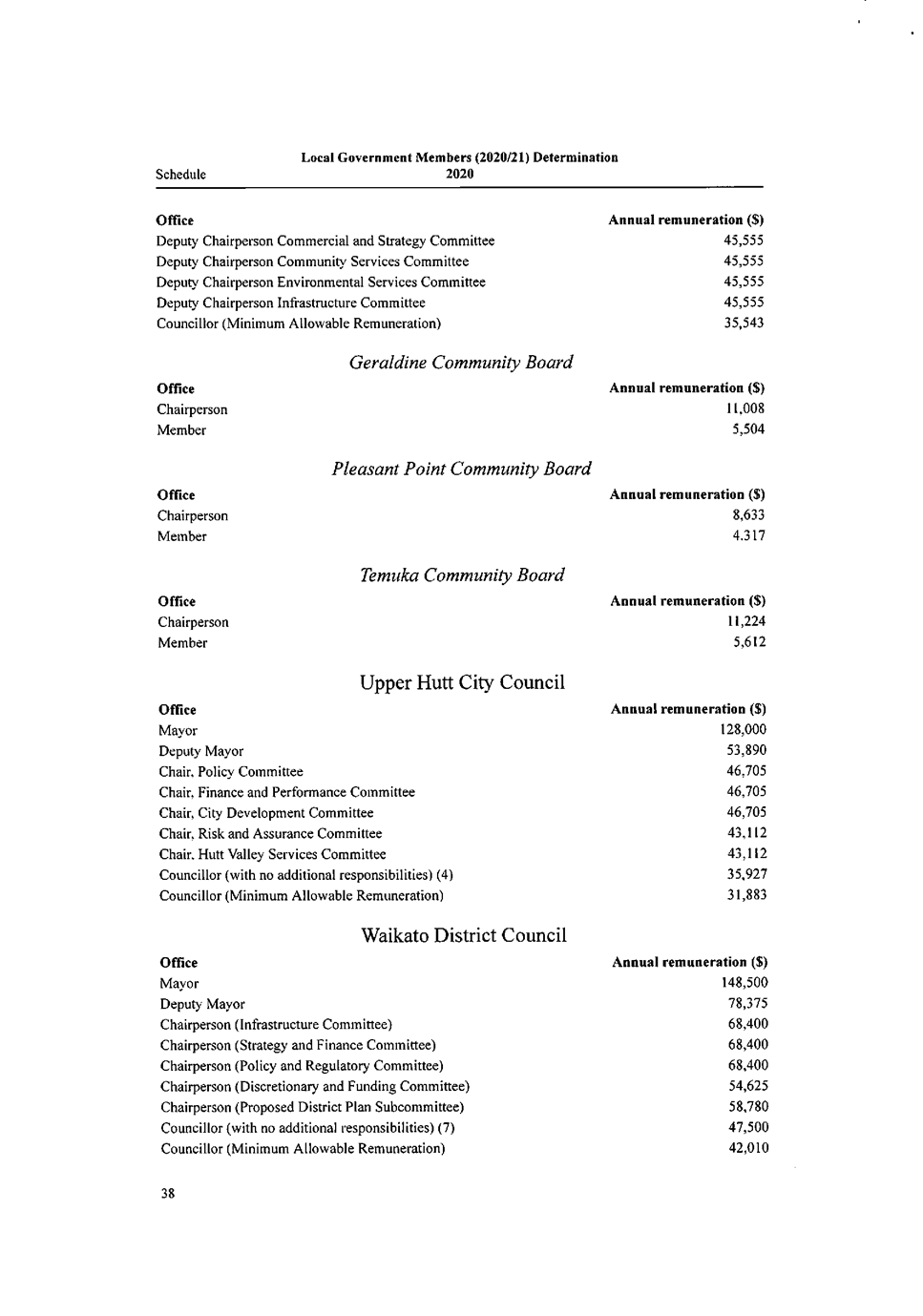
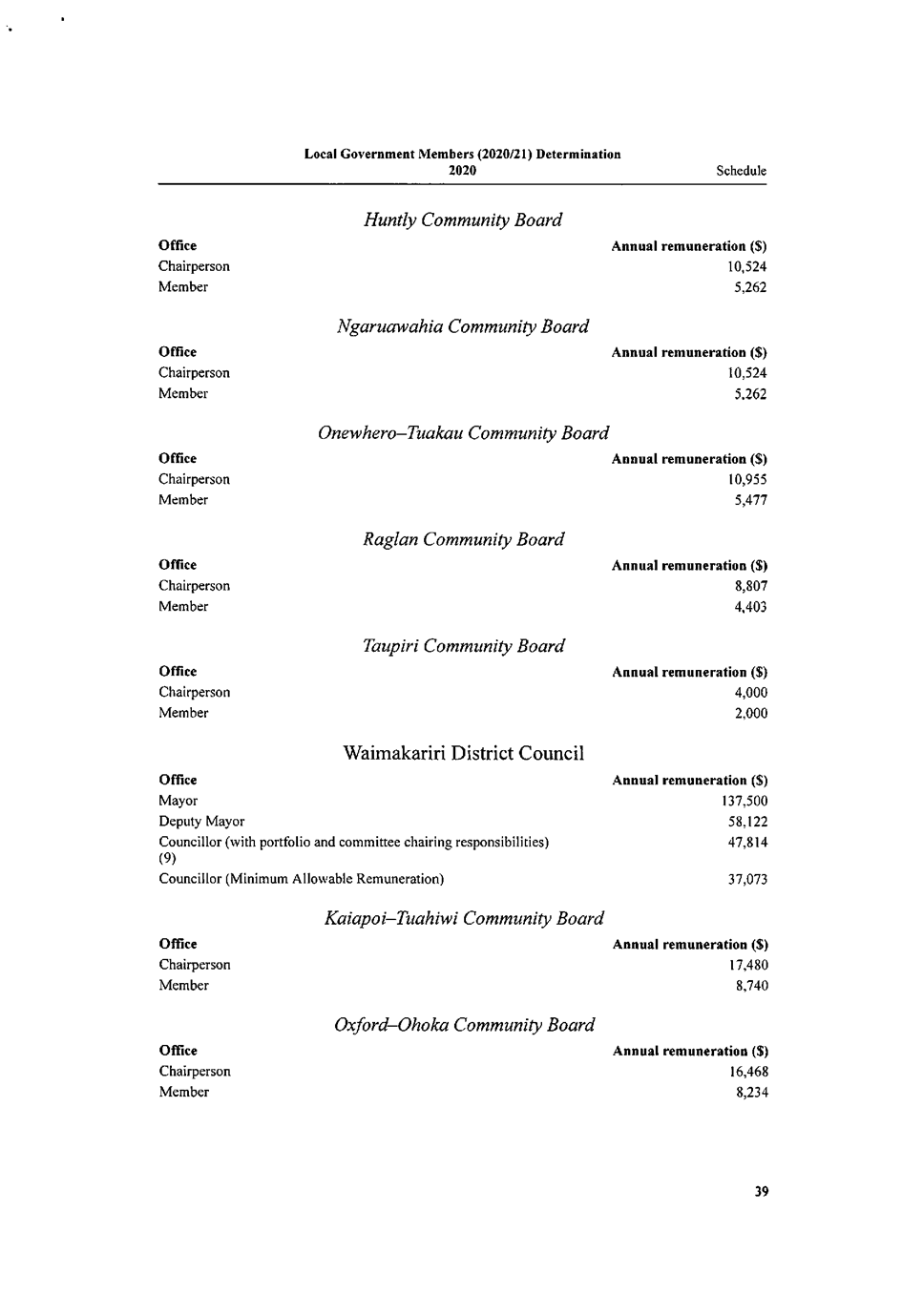
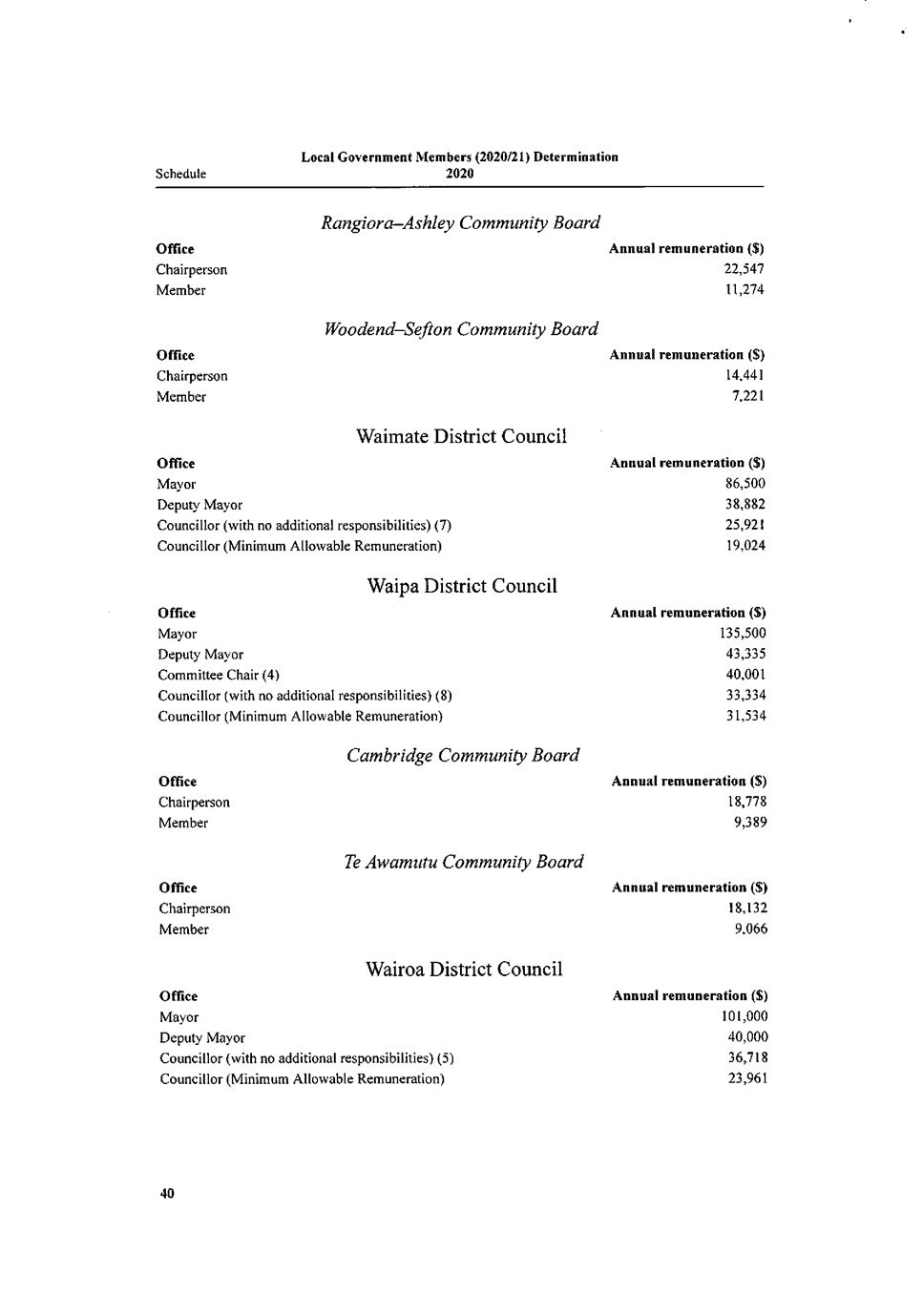
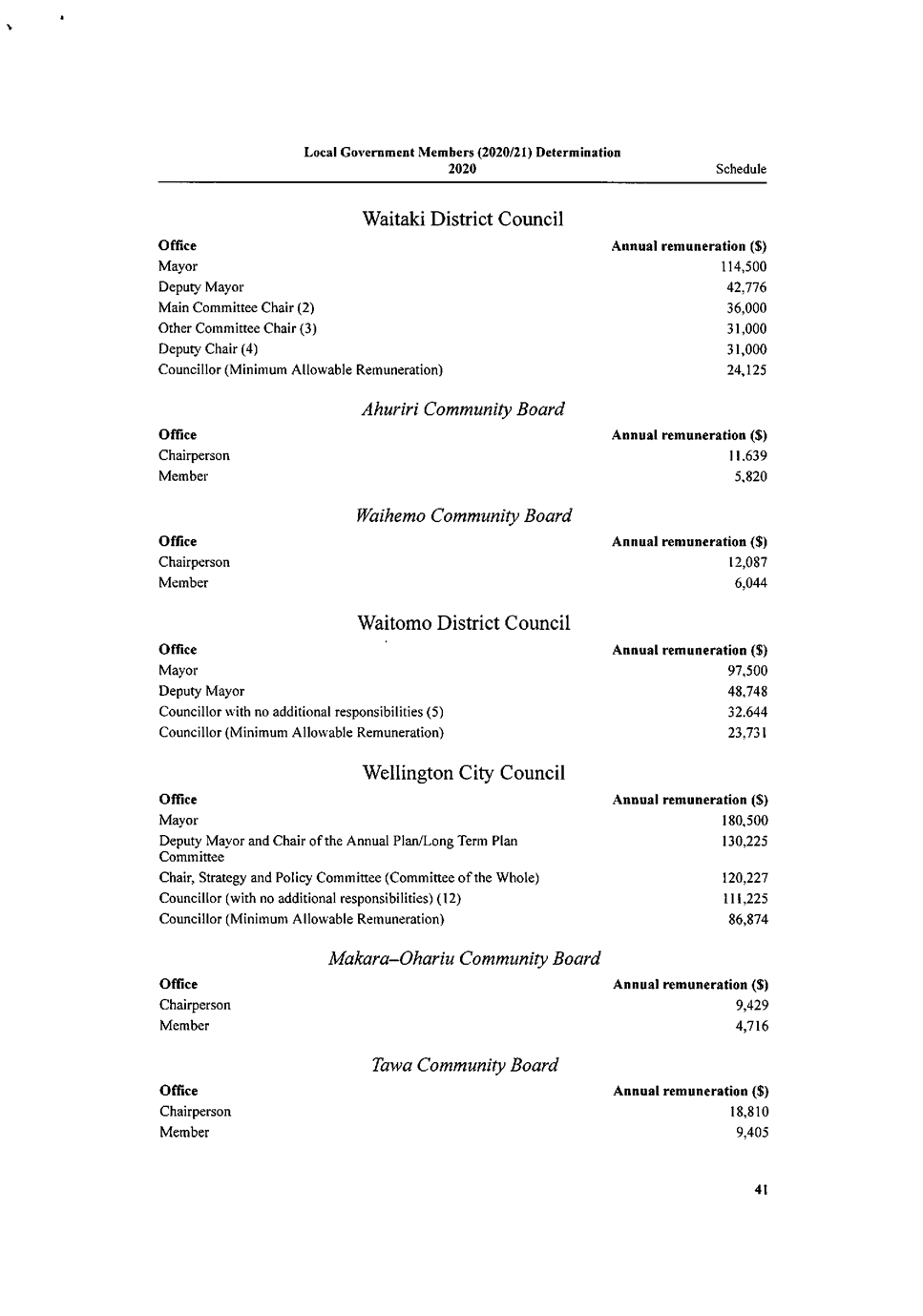
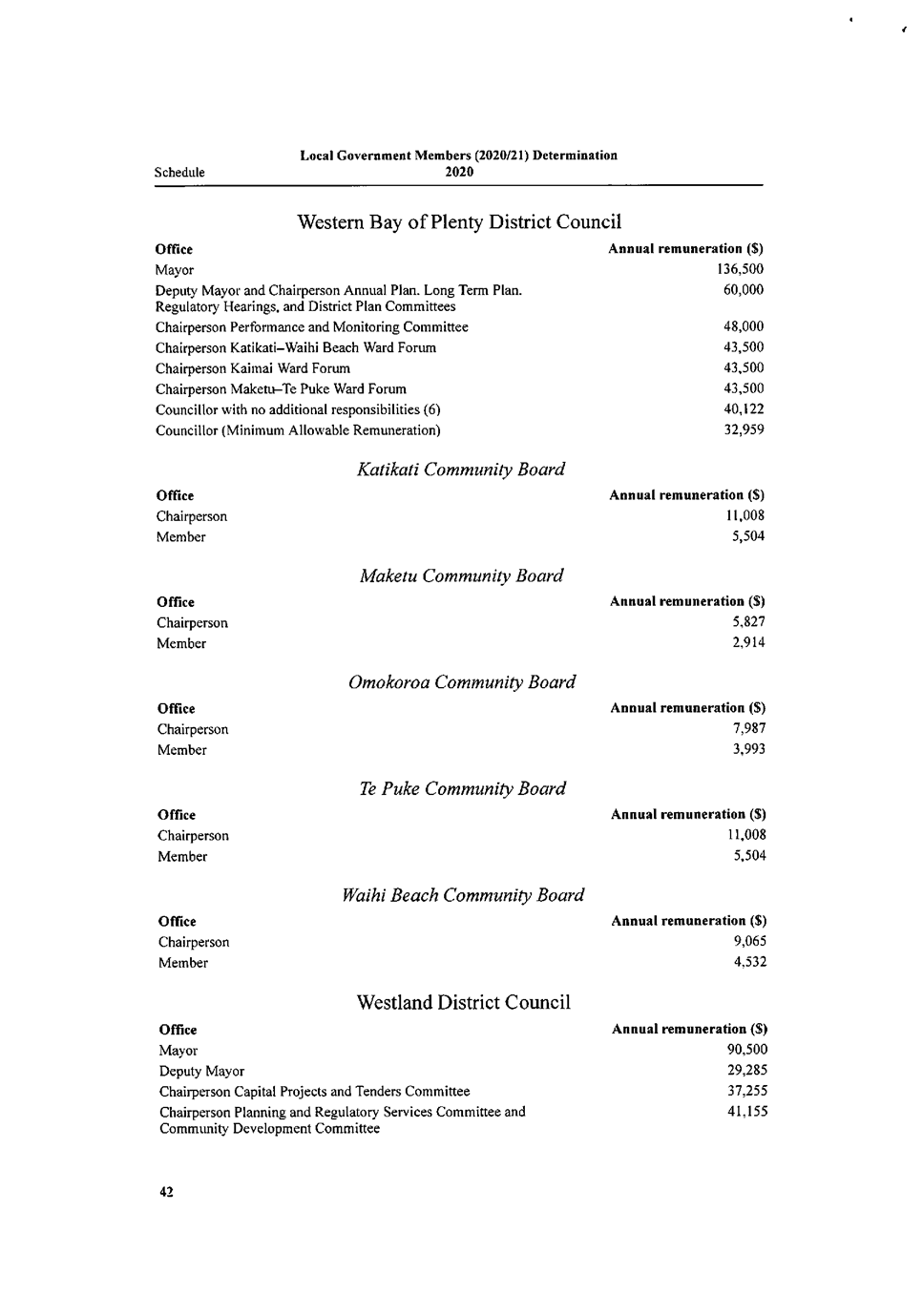
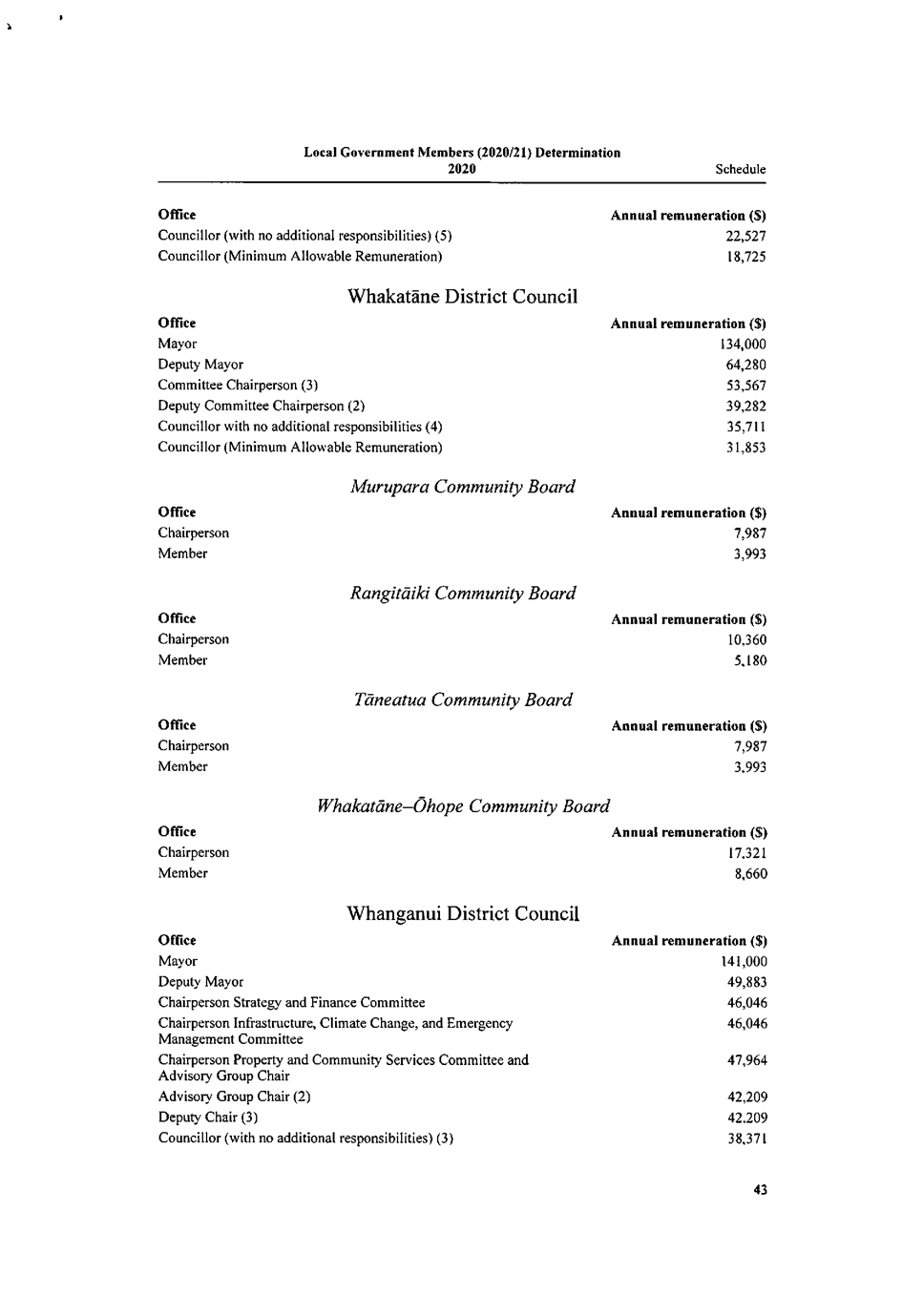
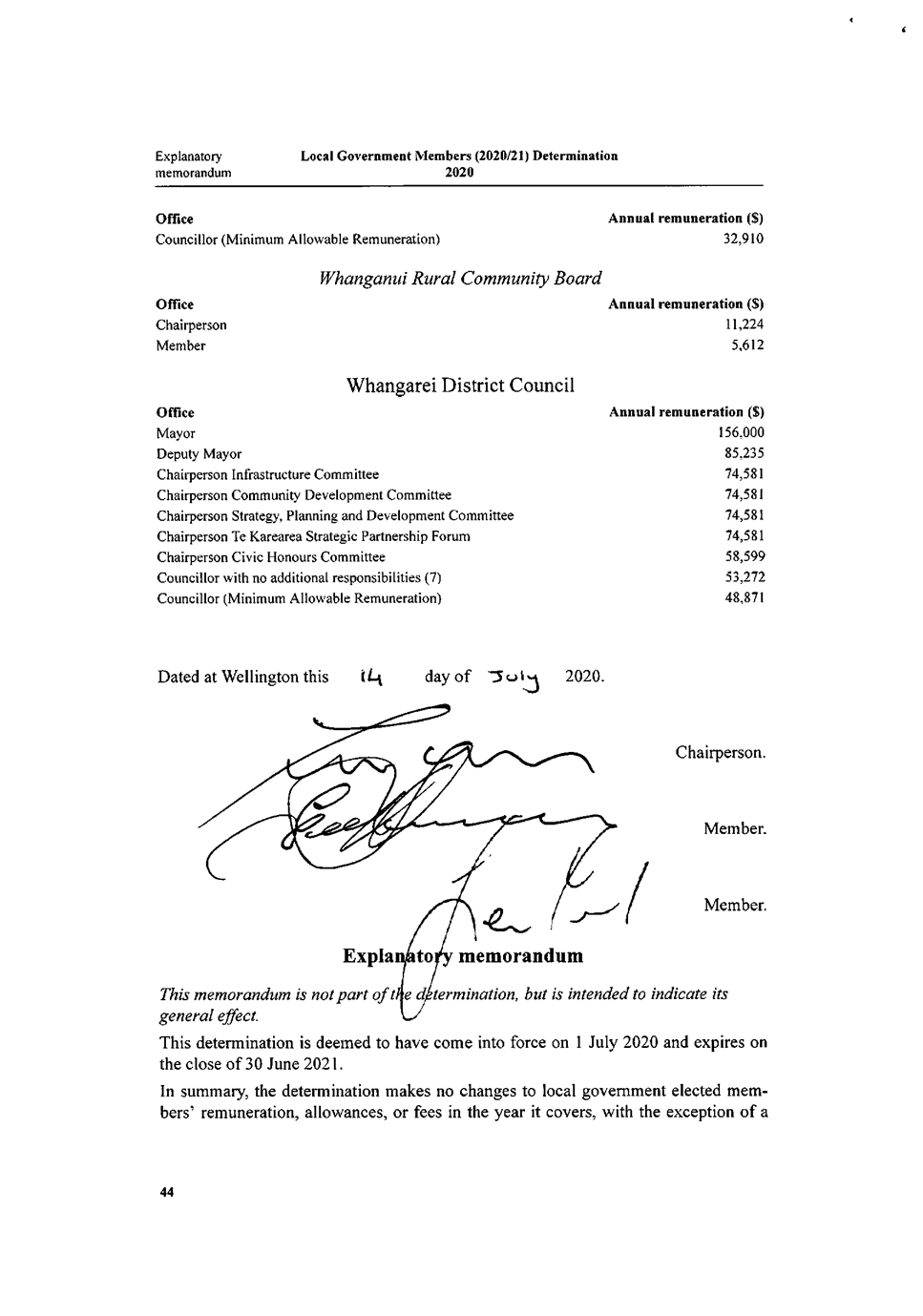
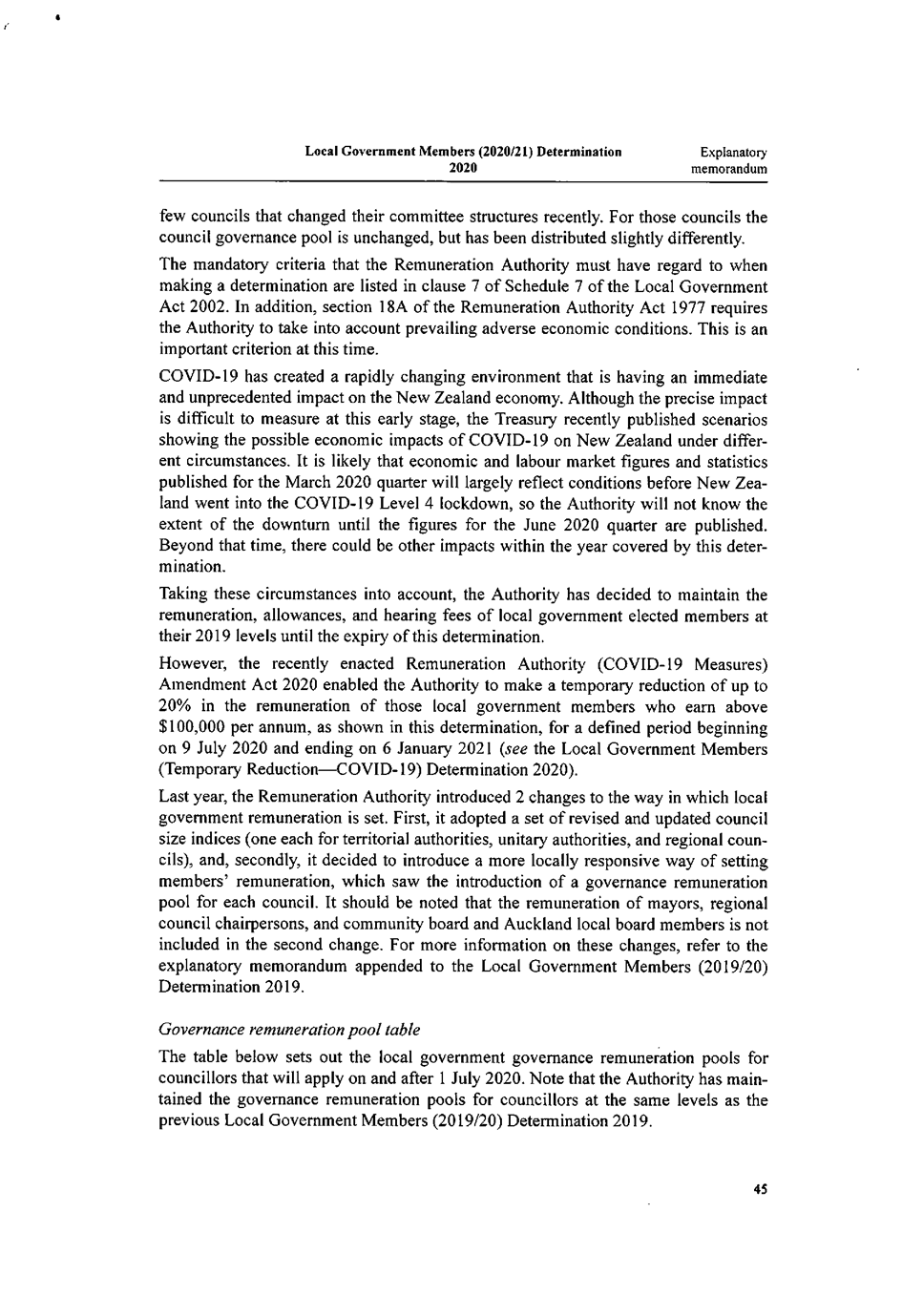

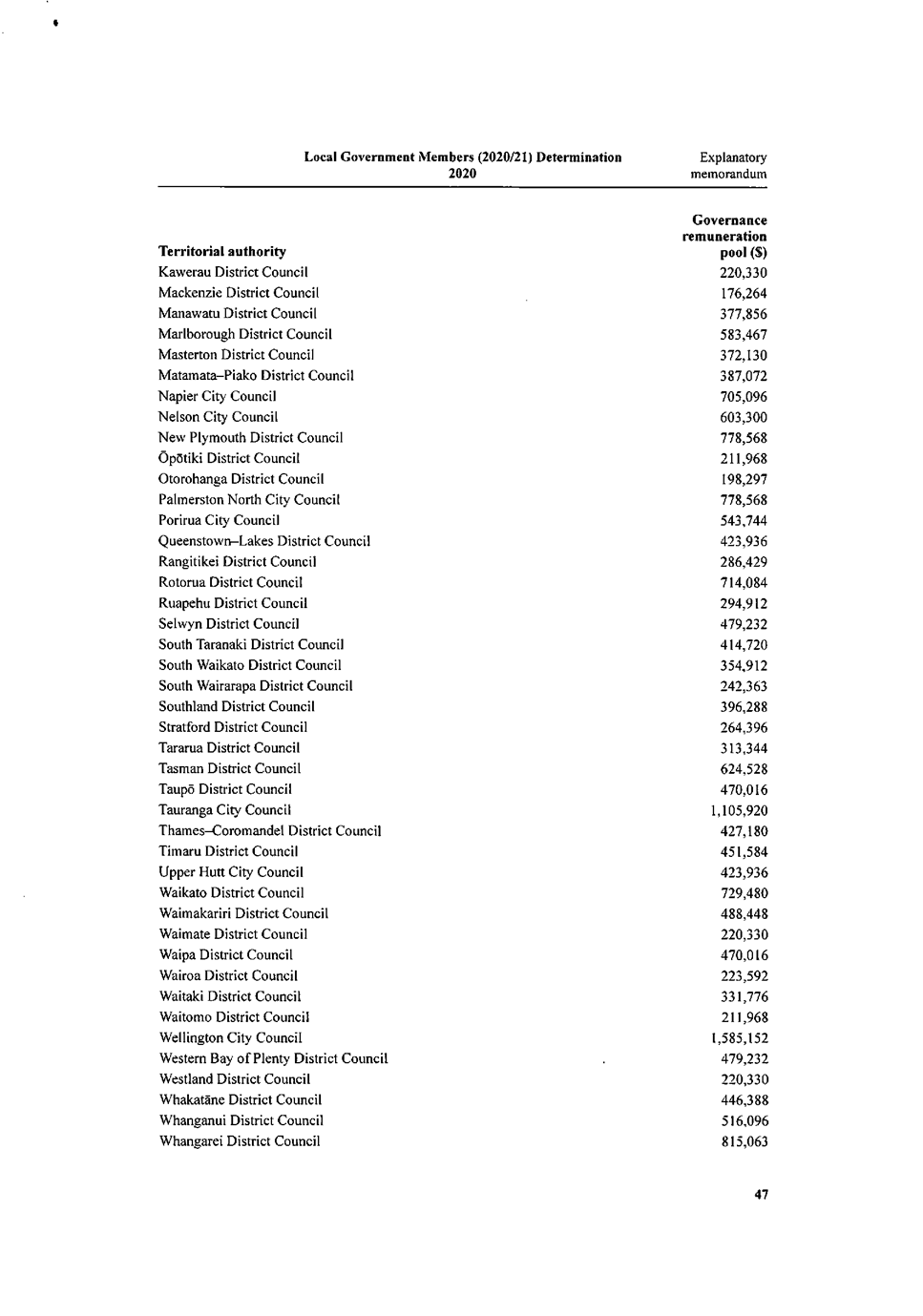

|
Council Meeting Agenda
|
1 October 2020
|

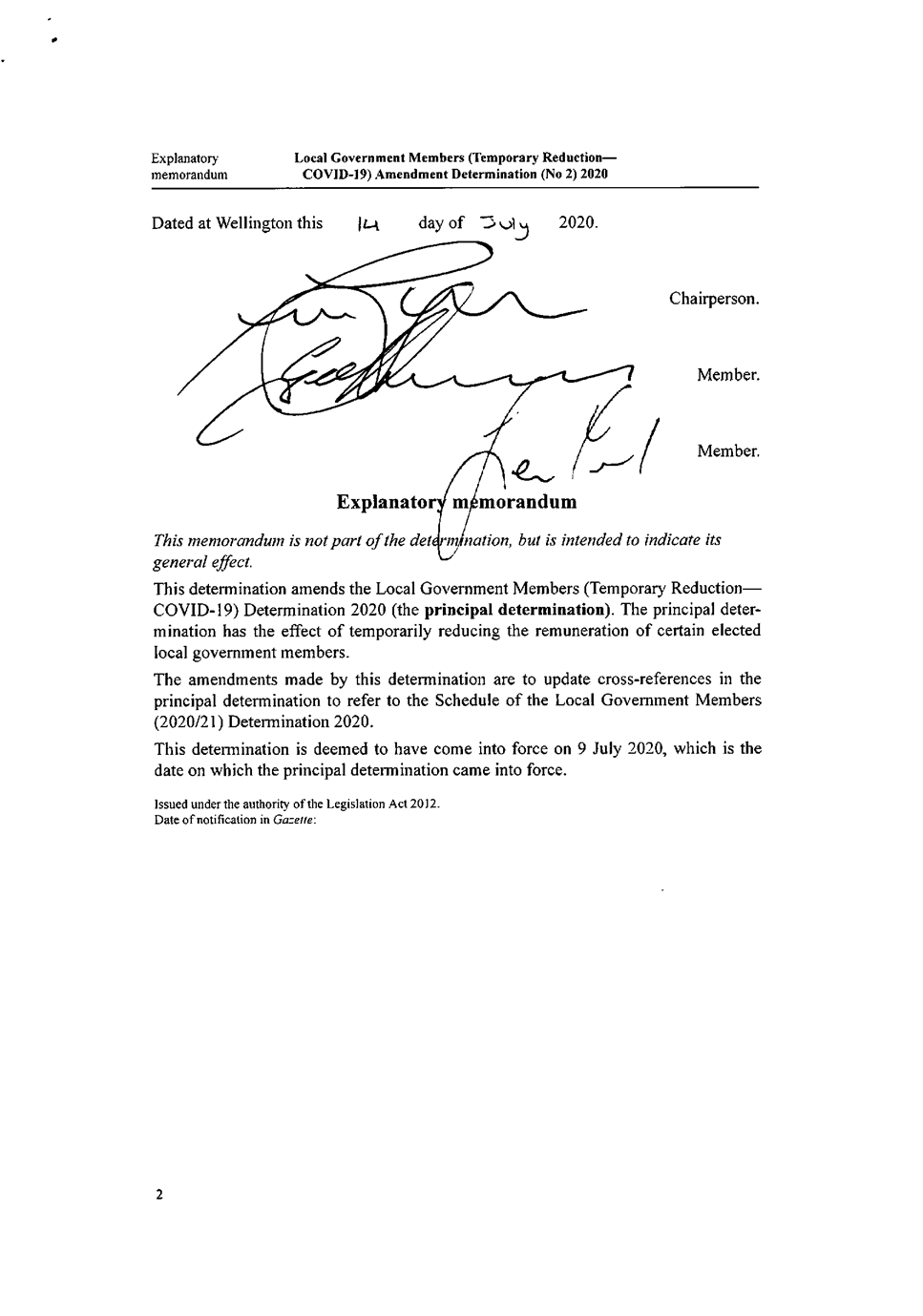
8.8 Public
Art Panel Appointments for 2019-22
Author: Rosie
Salas, Arts Museums and Heritage Advisor
Authoriser: Darryn
Grant, Economic Development Manager
Purpose of Report
1. This
report seeks the Council’s
approval for appointments to the Public Art Panel.
Delegation
2. The Council has the authority to make appointments to the
Public Art Panel.
Background
3. The Kāpiti Coast
District Council (Council) develops and manages public art for the district
guided by its Strategy for Supporting the Arts (2012) and Public Art Policy
(2013). The Public Art Policy establishes the Public Art Panel (the Panel).
4. The Terms of Reference
(TOR) for the Panel (Appendix 1) state there are five members: a
Council-appointed member, representatives from Mahara Gallery and Te
Whakaminenga o Kāpiti, and two arts/urban design professionals.
5. On 7 November 2019,
Council appointed Councillor Janet Holborow as the elected member on the Public
Art Panel.
6. Mahara Gallery Trust
and Te Whakaminenga o Kāpiti were invited to each nominate one person to
the Public Art Panel, as provided for in the terms of reference.
7. Mahara Gallery Trust
nominated Janet Bayly, Director of the Mahara Gallery as their representative.
8. We have not yet
received a nomination for a representative of Te Whakaminenga o Kapiti. (See
Issues and Options below.)
9. In January and
February 2020, expressions of interest for the two open positions were called
for from the public, with advertisements placed in local newspapers and also in
landscape architecture and public art professional publications.
10. We received four expressions of
interest, three of which were suitable for the position. Biographies and CVs
for each candidate (where supplied) are attached in Appendix 2.
11. A panel of Council officers
considered the applications, including the Arts Advisor, the Manager Libraries
and Arts (Place and Space), the Manager Parks and Recreation (Place and Space),
the Senior Delivery Manager (Infrastructure Programme delivery), and the
Manager Programme Design and Delivery (Connected Communities).
12. The panel considered the
applications received for the two positions from arts and public spaces experts
in February 2020. As a result of that process, we informed the two selected
candidates, Robin Simpson and Nick Ray, that we would be putting their names
forward to Council for approval alongside the nominations for the three other
positions.
13. The panel also considered the
application from Hugh Nicholson, who is resident in Christchurch. Hugh has
great experience and is very highly qualified. However, was not selected when
the panel considered the value of face-to-face meetings and the expense of
flying him up to Kapiti (and from his perspective the time commitment if
travelling). We agreed with him that we would approach him as appropriate
in an external advisory capacity.
14. The fourth applicant, Bethwyn
Littler, withdrew her application after initial discussion with the Arts
Advisor.
Issues and Options
Issues
15. We have delayed submitting this
report for two reasons:
· the COVID-19
lockdown March-May meant other reports to Council were prioritised; and
· we considered
it important to await the nomination from Te Whakaminenga o Kāpiti.
16. Te Whakaminenga o Kāpiti are
still considering nominations for appointment to this Panel and may not be able
to provide this for some time.
17. It is now almost a year since the
Panel met. The TOR state that meetings will be held as required and the Arts
team advise that it is important to reconvene the Panel as soon as possible to
provide advice on updating the Public Art Programme and so that strategic
decisions about future public art can be progressed. The TOR enable the Panel
to make recommendations and decisions with a simple majority, apart from
decisions about selections of a public artwork, which must be agreed
unanimously by the full Panel.
18. Delivery of the Public Art
Programme is particularly important in the current post-lockdown environment
where there is enthusiasm for public art and supporting artists as a way
celebrating community and recovery efforts.
Recommendation
for open positions
19. In selecting the two people to
recommend for appointment to the open positions, the panel focused on covering
the following criteria from the list in the TOR:
· experience in
the commissioning of public art;
· commitment to
the principles of Te Tiriti o Waitangi;
· knowledge of
local national and international public art history; and
· a globally
informed perspective of the role creativity plays in place-making, and
transformation.
20. The panel recommend Robin Simpson
for appointment to the Public Art Panel. Robin is an urban designer with
experience in commissioning public art and incorporating public art to enrich
the built environment as a member of several council urban design panels. Robin
has strong connection with the Kapiti Coast District, and when a Waikanae
resident, was involved in the early engagement with the Town Centres
development. She is particularly interested in economic development in
Ōtaki and sees opportunities there for revitalising the township.
21. We recommend Nick Ray for
appointment to the Public Art Panel. Nick has a wide range of experience in
advising organisations on the use of space. He lives in the Kapiti District and
as an amateur artist is well connected to the local arts community. He has a
very interesting perspective on the use of public space and the function of art
within that space, and how it influences and benefits community. We felt he
would bring a fresh and different perspective onto the Panel.
22. Recommendations are based on the
candidates' expertise, experience in governance and decision-making, their
networks, their knowledge of public art in public spaces nationally and
internationally, and their commitment to Te Tiriti o Waitangi.
23. An important consideration was
how we expect their expertise will complement the contributions of other
members, and ensure the skill set of the Panel as a whole covers all those
areas required in section 4 of the Public Art Panel Terms of Reference
(Appendix 1).
Recommendation
for Mahara Gallery Trust Representative
24. We
recommend Janet Bayly as the nominated representative of the Mahara Gallery
Trust.
Approve
in principle the nomination from Te Whakaminenga o Kāpiti
25. As
noted above, Te Whakaminenga o Kāpiti
are not able to provide a nomination at this time. We propose two options, with
Option 1 being our preferred option.
Option 1
(preferred):
26. We
recommend that the Council approve in principle the appointment of the
nominated representative of Te Whakaminenga o Kāpiti
with the formal nomination to be received at a later date. We will advise
Council of the confirmed nomination from Te Whakaminenga o Kāpiti in due course,
through the Elected Members’ Bulletin.
Option 2
27. Council
may choose to approve that the Panel convene prior to receiving the nomination
of a representative of Te Whakaminenga o Kāpiti,
but to receive a further report at a future date to formally appoint the
nominated representative from Te Whakaminenga o Kāpiti.
Considerations
Strategic
and Policy considerations
28. Kāpiti Coast District
Council develops and manages public art for the district, guided by the
Strategy for Supporting Arts (2012) and the Public Art Policy (2013), which
establishes the Public Art Panel.
29. The Panel’s role in this
triennium will be largely focused on contributing to the strategic development
of the arts, to support fulfilling the outcome “A positive response to
our district identity” and the long-term goal “An attractive and
distinctive Kāpiti Identity and sense of place that make people proud to live
work and play here”. This also aligns with the requirement under the
Local Government Act 2002 (s10 1b) for councils “to promote the social,
economic, environmental, and cultural well-being of communities in the present
and for the future.”
Legal considerations
30. There
are no legal considerations.
Financial considerations
31. The Public Art Panel has no
operating budget. Expenditure on public art is limited to the capital budget
set by the Council.
Tāngata
whenua considerations
32. The existing and revised Public
Art Panel Terms of Reference align with the tāngata whenua considerations
in the Council’s Strategy for Supporting the Arts (2012).
Significance
and Engagement
Significance Policy
33. This
matter has a low level of significance under Council policy.
Consultation already
undertaken
34. No
external consultation has taken place on this matter.
Engagement planning
35. A
community engagement plan is not needed to implement this decision.
Publicity
36. A
media release concerning the appointments will be distributed to local media.
|
Recommendations
37. That Council appoints Robin
Simpson to the Public Art Panel, as Arts/Urban design professional
representative.
38. That Council appoints Nick Ray
to the Public Art Panel, as Arts/Urban design professional representative.
39. That the Council appoints Janet
Bayly, as nominated by Mahara Gallery Trust, to the Public Art Panel.
40. That the Council approves in
principle the appointment of the nominated representative of Te Whakaminenga
o Kāpiti, with the formal nomination to be received at a later date.
41. That Council will be advised of
the Te Whakaminenga o Kāpiti representative through the Elected Members
Bulletin when that nomination is made.
|
Appendices
1. Public
Art Panel Terms of Reference ⇩ 
2. Bios
of applicants for Public Art Panel Arts/Urban Professional representatives
appointment ⇩ 
|
Council
Meeting Agenda
|
1 October 2020
|
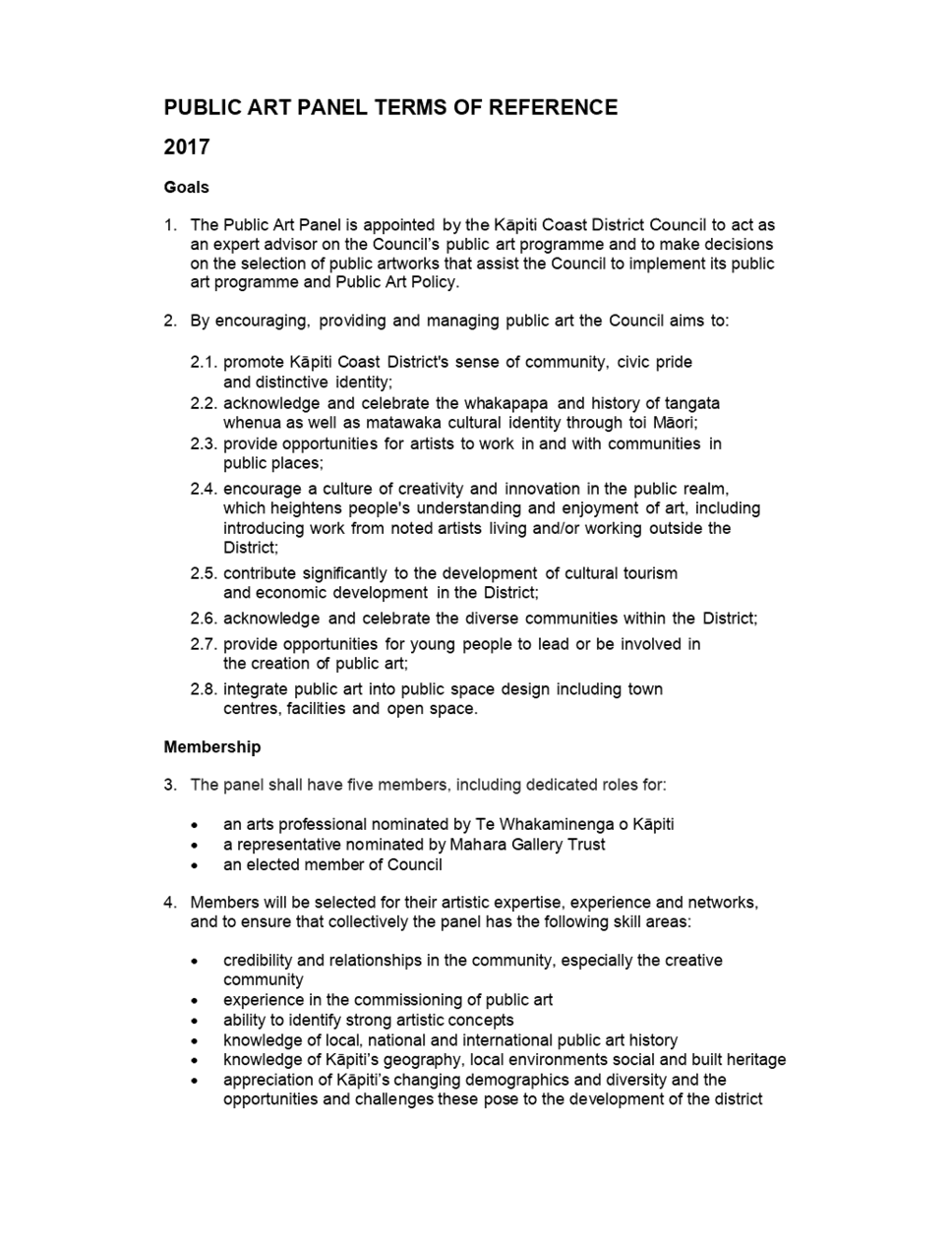
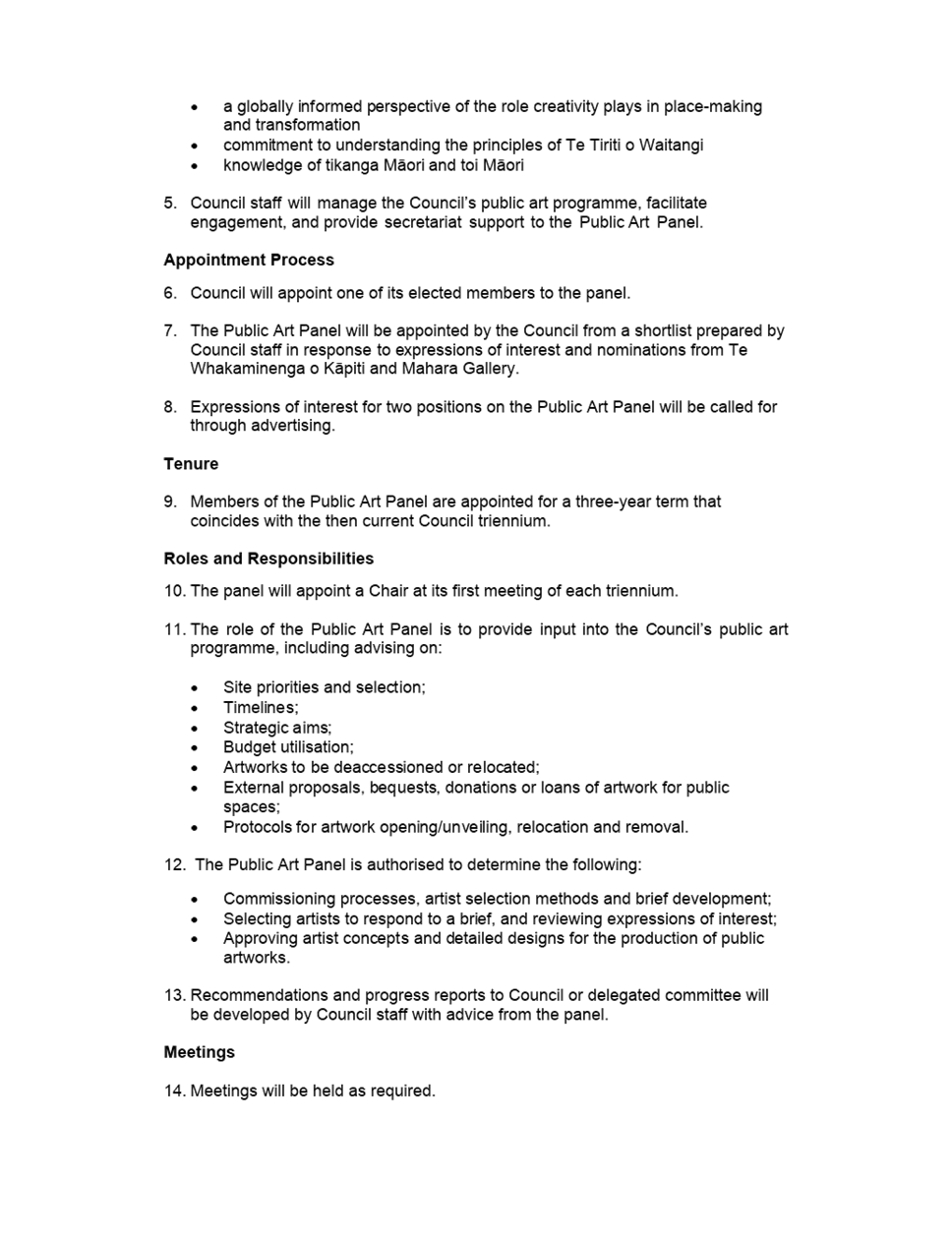
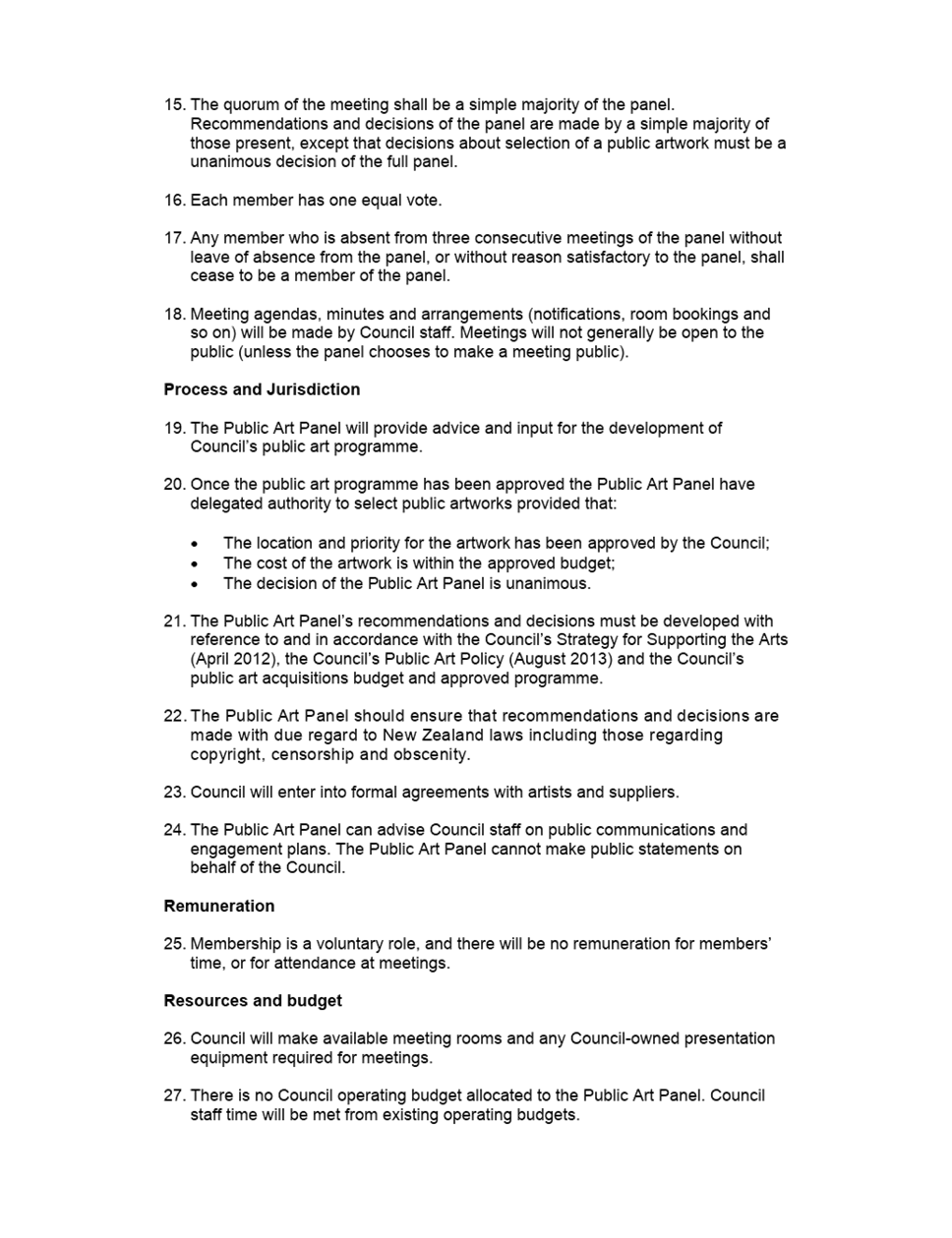
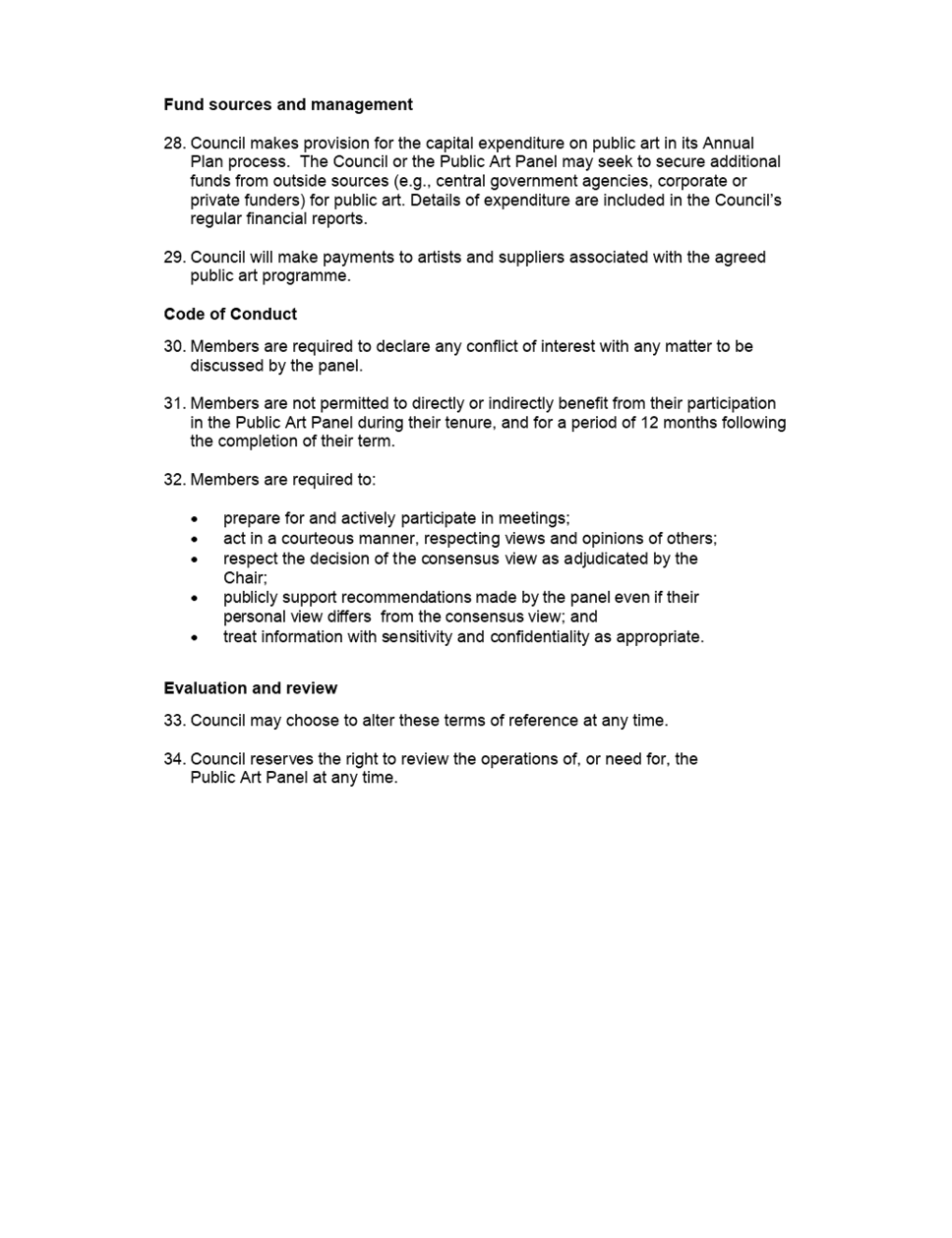
|
Council Meeting Agenda
|
1 October 2020
|
Appendix
2: Biographies of applicants for Public Art Panel
1. Nick Ray
Nick is a design consultant in the
area of Workplace strategy and planning, who has lived in Kāpiti since
2013. Over the last 5 years or so he has worked with many organisations to
assist them in the development of strategies relating to their workplaces that
are then defined as briefs for designers and architects to deliver against. He
sees the commission of public art as an exercise in balancing often competing
demands and expectations that requires a flexible approach to achieve good
outcomes. He is a member and previous committee member of the Wellington
Architectural Centre, and a personal interest in art, including attending art
classes as Tutere Gallery in Waikanae. He has a good knowledge of Kāpiti
artists and arts environment.
Nick has a diverse background, with
experience in interior design, accounting, IT consulting and project
management, and workplace consulting. Organisations he has led projects for
include the Ministry of Housing and Urban Development, Pharmac, the Ministry of
Social Development National Office, Worksafe, and the Institute of
Environmental Science and Research (ESR).
His wide experience provides Nick with
a different perspective to seeking outcomes with a pragmatic approach that
enables him to make connections where others don't and seek out alternative
approaches and solutions. At the heart of these projects is active engagement
with stakeholders combined with the ability to analyse and comprehend often
complex information to develop viable solutions. Nick understands that the
commissioning and delivery of Public Art has similar challenges to his work in
dealing with a wide range of stakeholders and often complex sets of drivers
that have to be understood and resolved to meet an agreed set of overall
strategic objectives.
Nick recognises the importance of making
the connection between all the different aspects of public art and having a
communication strategy to make this visible “tell the stories”
which he believes are not very visible at this moment. He believes in the
importance of any art strategy to be a “strategy about community”-
to be proactively connected with iwi and community.
2. Robin
Simpson
Robin is a qualified and awarded
landscape architect and urban designer, with a 25-year history of practice on
large-scale internationally significant sites in New Zealand and Australia
specialising in multidisciplinary urban design.
Robyn is Wellington based but has
lived in Waikanae, and was involved in early engagement with Town Centres
development. She has a keen interest in the economic development of Ōtaki
and in the strategic intent of integrating artistic elements into urban design.
Robin has wide experience in both
transport infrastructure projects and public domain design including transport
interchanges, mixed use developments, housing community development, parks,
waterfronts and civic sites. Public Art projects have been an integral part of
all these areas of practice. These successfully create attractive, functional
landscapes that aim to balance the aspirations of developers, community and
stakeholders. Robin contributes skills and experience to ensure that
redevelopment of sites proceeds within a streamlined planning framework and
evolves out of the unique context of place and community.
Robin has been a member of the urban
design review panel for Wellington’s Waterfront from 2004, and was
closely involved with the integration of public art on the waterfront. She was
an inaugural member of the Nelson Tasman Design Review panel, working with
Nelson/Tasman Councils on new developments, and sits on the Christchurch City
Council Urban Design Panel. Her management capability and liaison skills were
showcased on Sydney’s high profile and complex Olympic Park Public Domain
project where she facilitated the incorporation of public art and presented projects
to proceed through the Urban Design and Public Art Panel.
Robin has expertise in blue skies
thinking, planning, concept development, and detail development to
implementation of projects. She fosters a collaborative approach amongst
disciplines, supported by strong communication and liaison skills. She
understands well the importance of working with iwi to achieve outcomes, having
worked in Auckland on major roading design projects involving engagement with
many different iwi).
3. Hugh
Nicholson
Hugh is based in Christchurch. He is a
principal at UrbanShift, an urban design and landscape consultancy. He has
particular expertise in urban regeneration, disaster recovery, city strategies,
masterplanning and waterfront design. He has worked with local authorities,
central government, and private developers throughout New Zealand.
Hugh worked extensively with the
Wellington Sculpture Trust on sculptures including the Meridian Wind Sculpture
Series on Cobham Drive, the Lambton Quay Sculpture Series, and Water Whirler/Sky
Blues. He was the principal Council liaison officer with the Trust, and
worked with artists to find sites for their works and supervised the
construction and installation of many of the works.
Since moving to Christchurch, he has
worked with the SCAPE Public Art Trust, finding sites and working as their
principal Council liaison officer for a number of years on a series of works
including the High Street Sculpture Series, Fanfare and Solidarity Grid.
He has been a member of the Christchurch City Council Public Art Advisory Group
since its formation, as an urban designer. The PAAG advises the CCC on
public art and has delegated authority to spend the Council's capital funding
for artworks which it does in partnership with SCAPE.
Following the earthquakes, he also
worked closely with the Matapopere Charitable Trust, a group of Maori designers
and artists set up by Ngāi Tūāhuriri to ensure
that te ao Māori is part of the rebuild of Christchurch.
Hugh is very interested in Public Art
throughout the country, and has offered his services as an advisor outside the
Panel.
4. Bethwyn
Littler (did not follow through with the application)
Qualified in Early Childhood Care and
Education, Bethwyn has been very interested and actively involved in the arts for
many years, mostly on a voluntary basis. She recently moved to Kāpiti from
Hamilton, where she was involved in running a group show at a gallery space at
the University of Waikato. A good communicator with a professional attitude,
flexibility and an interest in learning new things, she has a drive to engage
with and support art in her community, and is particularly interested in more
street art and the possibility of a sculpture park.
8.9 Annual
Report on Dog Control Policy and Practice
Author: Jacquie
Muir, Environmental Standards Manager
Authoriser: Angela
Bell, Acting Group Manager Regulatory Services
Purpose of Report
1 To
present the Kapiti Coast District Council Annual Dog Control Report 2019/20
(the Report) on the 2019 Dog Control Policy and Practices.
Delegation
2 The
Council has the delegation to consider this report under section B.2 of the
Governance Structure and Delegations.
Background
3 Section
10A of the Dog Control Act 1996 (the Act) requires territorial local
authorities to report on their dog control policies and practices as follows:
1) A territorial authority must, in respect of each financial
year, report on the administration of:
(a) its dog control policy
adopted under section 10; and
(b) its dog control practices.
2) The report must include, in respect of each financial
year, information relating to:
(a) the number of registered
dogs in the territorial authority district;
(b) the number of probationary
owners and disqualified owners in the territorial authority district;
(c) the number of dogs in the
territorial authority district classified as dangerous under section 31 and the
relevant provision under which the classification is made;
(d) the number of dogs in the
territorial authority district classified as menacing under section 33A or
section 33C and the relevant provision under which the classification is made;
(e) the number of infringement
notices issued by the territorial authority;
(f) the number of dog
related complaints received by the territorial authority in the previous year
and the nature of those complaints;
(g) the number of prosecutions
taken by the territorial authority under this Act.
3) The territorial authority must:
(a) give public notice, as
defined in section 5(1) of the Local Government Act 2002, of the report; and
(b) make the report publicly
available, as described in section 5(3) of the Act.
4) The territorial authority
must also, within 1 month after receiving the report, send a copy of it to the
Secretary for Local Government.
Issues and Options
Issues
4 There
are no issues to consider.
Options
5 There
are no options to consider.
Considerations
Policy
considerations
6 There
are no policy considerations.
Legal
considerations
7 The
Annual Report contained in Appendix One is required by Section 10A of the Dog
Control Act 1996, the report must be publicly notified and a copy forwarded to
the Secretary for Local Government by 30 October 2020.
Financial
considerations
8 There
are no financial considerations.
Tāngata
whenua considerations
9 There
are no Tāngata whenua considerations.
Strategic
considerations
10 Toitū
Kāpiti includes an aspiration for strong, safe communities. The Dog
Control Bylaw, Policy and practices helps in the attainment of this aspiration
because it seeks to enhance the safety of the public and allow the responsible
enjoyment of public places in our District.
11 There
are no further strategic considerations.
Significance and Engagement
Significance
policy
12 Management
of dog control through policy and practices has low level of significance under
the Council’s Significance and Engagement Policy, but it is recognised
that there is strong interest in dog-related issues across the District because
of perception and impact of dogs in relation to public safety.
Consultation
already undertaken
13 No
consultation is required.
Engagement
planning
14 No
engagement planning required.
Publicity
15 This
report is required to be made publicly available; therefore, the Report
contained in appendix one will be available on the Kapiti Coast District
Council website; and its availability will be notified in local newspapers.
Other
Considerations
16 There
are no other considerations.
|
Recommendations
17 That
the Council receive this report and accompanying appendices.
|
Appendices
1. Annual
Report on Dog Control Policy and Practices 2019-2020 ⇩ 
2. Kapiti
Coast District Council Dog Control Policy 2019 ⇩ 
|
Council
Meeting Agenda
|
1 October 2020
|
Appendix One
The Kapiti Coast District Council Annual
Report on Dog Control Policy and Practices 2019/20
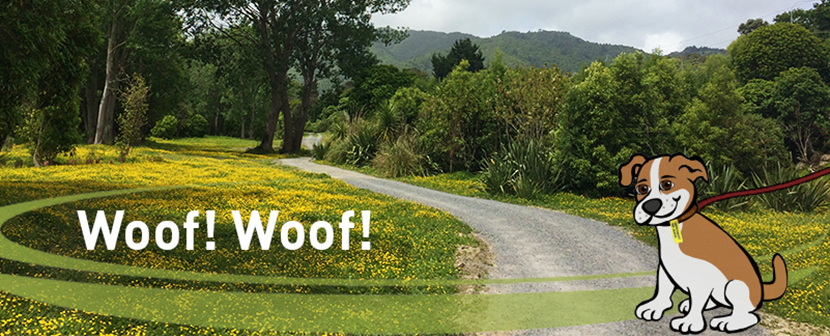
1.
Introduction
The Kapiti Coast District Council, as a territorial authority,
must report annually on its dog control policy and practices. The purpose of
this report is to provide the information required under section 10A of the Dog
Control Act 1996 (the Act) in relation to:
a) Its dog control
policy adopted under section 10; and
b) Its dog control
practices.
2. The Council’s Dog Control Policy (the Policy)
2.1
The Policy:
The
Kapiti Coast District Council adopted its Dog Control Policy on 14 March 2019.
The Policy outlines how the Kapiti Coast District Council will address the
requirements set out in section 10 of the Act. The Policy is enforceable
through the 2019 Kapiti Coast District Council Dog Control Bylaw.
The
objectives of the Policy are to:
1. Ensure
all dogs in the District are kept under proper and appropriate control at all
times.
2. Prohibit
or restrict specific breeds of dogs which are known to be dangerous.
3. To
eliminate or minimise the distress, danger and nuisance caused by dogs to the
general public and their property and sensitive sites.
4. To
ensure that the owners of dogs comply with their obligations under the Act.
5. To
provide the exercise and recreational needs of dogs and their owners.
6. To recognise good and
responsible dog owners and to reward them by reduced fees; and to discourage
poor dog ownership by applying penalty fees where appropriate;
7. To provide for the welfare
of dogs by at least ensuring minimum standards of care are met.
3. Dog control practices:
3.1 Changes in role to
increase capacity of the team
In September 2019 the Animal
Management role grew to incorporate the management of Council controlled public
spaces. The change provided a more dynamic, effective and efficient way to
utilise staff that were already operationally active in the field while ensuring
the delivery of a robust dog control practice. Additional resourcing in to the
team improved operational capacity as it allowed for increased business hours
to include a full service from 0700 hours to 1900 hours Monday to Sunday. This
also reduced the amount of time staff were working alone on weekends. The on
call after hour service also improved as the team are no longer reliant on any
support from an external contractor. Increasing business hours and providing a
full on call service has ensured a more consistent and reliable practice in the
management of dogs across all days of the week and after hours.
3.2
Refurbishment of Animal Management Shelter
On 1 October 2018 the guidelines for
the management of companion animals in temporary housing facilities was
introduced through the Code of Welfare of Temporary Housing of Companion
Animals (the Code). As a result of this new code there was a need to
improve facilities at the Animal Management Shelter to ensure dogs that were
impounded or seized under the Dog Control Act were suitable housed and all
their welfare needs met. The refurbishment was completed in June 2020.
The upgrades included improved fencing
to prevent dogs escaping; a heating system to keep dogs warm in winter;
improved bedding facilities; a dog wash area; CCTV upgrades, improved exercise
yards; improved kennelling; and a new veterinarian room so dogs can be treated
onsite if required. The plumbing and drainage was significantly improved
ensuring a cleaner facility and minimising the spread of disease.
3.3
Graduated response model to prevent dog nuisance
The
Public Spaces Animal Management Team continued to use a graduated response
model to minimise and mitigate risk relating to known problematic dogs and
their owners. This model ensured the team actively identified and proactively
managed high risk dogs and their owners. They actively engaged with known dog
owners, proactively educated first and then ensured appropriate enforcement
action was taken early to mitigate risk.
3.2
High visibility proactive patrolling in known problematic locations
The team conducted patrols
in known problematic locations to prevent nuisance caused by dogs in those
areas.
3.3 Quality assurance
processes
The Public
Spaces Animal Management Team have a robust set of quality assurance processes (QAS) and
accompanying forms which are constantly reviewed through a continuous
improvement process. The QAS ensures staff are consistently providing a robust
service, and the QAS is continues to be used as a training manual for staff.
3.4 Community engagement and partnerships
Council continued to work closely with our
partner agencies including: Wellington and Hutt Valley Animal Management
Services; SPCA; HUHA; Animal Evacuation and Police.
One member of the team continued to work with
the Animal Evacuation Team to provide educational support and training to
animal evacuation trainees.
3.5 Improved online communications to educate dog owners
This year the team started using Mail chimp. Mail chimp is an
all-in-one email platform. There are 4500 dog owners registered to use this service and it was used to this year to communicate
urgent advice to dog owners on the risk of toxic algae during higher than
normal levels in local rivers and streams.


4. Dog Control Statistics
STATISTICAL
INFORMATION
|
2019/20
|
2018/19
|
2017/18
|
|
Total number of dogs
believed to be in the district as of 30 June of relevant year (new statistic
19/20)
|
8046
|
|
|
|
Total number of registered dogs in the district
(classifications below included
in total number)
|
7783
|
7730
|
7600
|
|
Total number of dog
owners (new statistic 19/20)
|
6294
|
|
|
|
Probationary owners in the district
|
1
|
0
|
0
|
|
Disqualified owners in the district
|
3
|
0
|
0
|
|
Total number of dogs classified as
dangerous in the
district
|
7
|
|
|
|
Number and provision of
dogs classified as dangerous this current financial year
|
0
|
2
|
2
|
|
Total Number of dogs classified menacing
in the district
|
117
|
|
|
|
Number and provision of
dogs classified menacing
current financial year
|
33A 27
|
44
|
34
|
|
33C 14
|
|
Complaints
|
|
|
|
|
Dog Attacks
(person, livestock, other animals)
|
118
|
115
|
110
|
|
Dog Threatening (person, livestock, other animals)
|
106
|
99
|
123
|
|
Wandering
|
491
|
684
|
635
|
|
Barking
|
449
|
581
|
711
|
|
Fouling
|
20
|
17
|
25
|
|
Total
|
1184
|
1496
|
1604
|
|
Infringements Issued
|
|
|
|
|
Failure to comply with
barking abatement notice
|
2
|
1
|
0
|
|
Willful
obstruction/refusal to supply information
|
1
|
0
|
1
|
|
Failure to implant
microchip
|
0
|
15
|
27
|
|
Failure to register dog
|
111
|
178
|
72
|
|
Failure to keep
a dog under control
|
53
|
42
|
3
|
|
Failure to keep dog controlled or confined
|
29
|
25
|
19
|
|
Failure to comply with the effects of classificaiton
|
1
|
2
|
2
|
|
Failure/Refusal to supply information
|
0
|
1
|
0
|
|
Bylaw Breaches
|
1
|
1
|
2
|
|
Falsely notifying death of a dog
|
0
|
0
|
0
|
|
Willfully providing false particulars
|
1
|
0
|
0
|
|
Failure to advise of change of address
|
2
|
|
|
|
Failure to advise change of dog ownership
|
1
|
|
|
|
Total
|
202
|
265
|
126
|
|
Prosecution
|
|
|
|
|
Section 18, willful obstruction of Dog Control
Officer
|
-
|
-
|
-
|
|
Section 32
(2) , failure to comply with effects of Dangerous
classification
|
-
|
-
|
-
|
|
Section 33 EC (1) , failure to comply with
effects of Menacing
classification
|
-
|
-
|
-
|
|
Section 52(a), failure to control on land or
premises
|
-
|
-
|
-
|
|
Section 53(1), failure to control
|
-
|
-
|
-
|
|
Section 57(A), rushing in a public place
|
-
|
-
|
-
|
|
Section 57(2) being an owner of a
dog which committed an attack
Attack
|
-
|
-
|
-
|
|
Section 58 being an owner of a dog which committed a
serious attack
Attack
|
-
|
-
|
-
|
|
Total
|
Nil
|
Nil
|
Nil
|
|
Prosecution
Outcomes
|
|
|
|
|
Dog surrendered to council prior to
court
|
-
|
-
|
-
|
|
Guilty & Order for Destruction of Dog
|
-
|
-
|
-
|
|
Guilty & Dog
returned to owner
|
-
|
-
|
-
|
|
Not Guilty
|
-
|
-
|
-
|
|
Outstanding still
before Court
|
-
|
-
|
-
|
|
Total
|
Nil
|
Nil
|
Nil
|
|
Impounding
|
|
|
|
|
Impounded dogs returned
to
owner
|
136
|
237
|
233
|
|
Impounded dogs rehomed to new owner by Council
|
11
|
|
|
|
Impounded dogs euthanized
|
11
|
33
|
28
|
|
Impounded dogs rehomed
through rehome agency
|
22
|
37
|
25
|
|
Council Meeting Agenda
|
1 October 2020
|
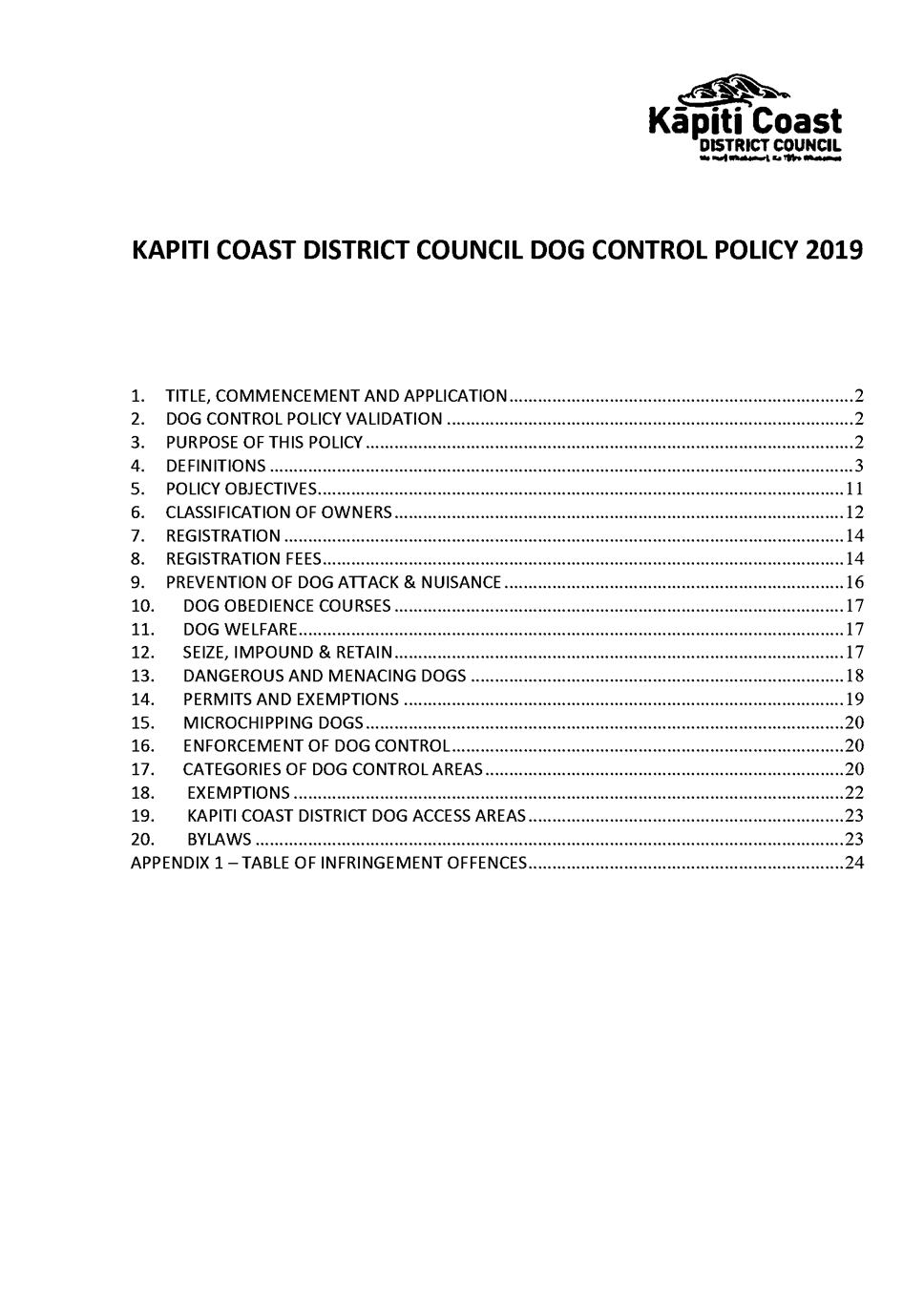
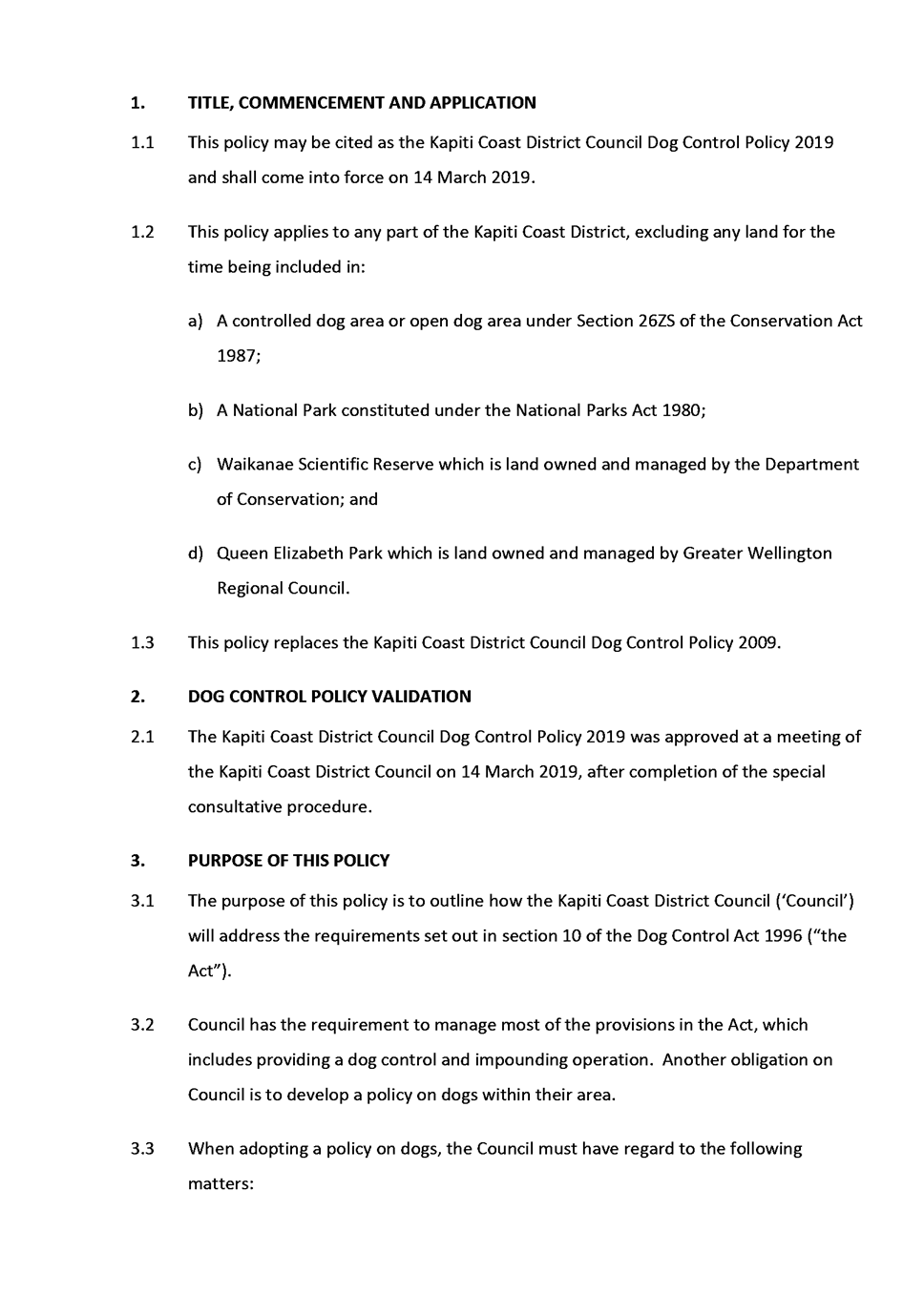
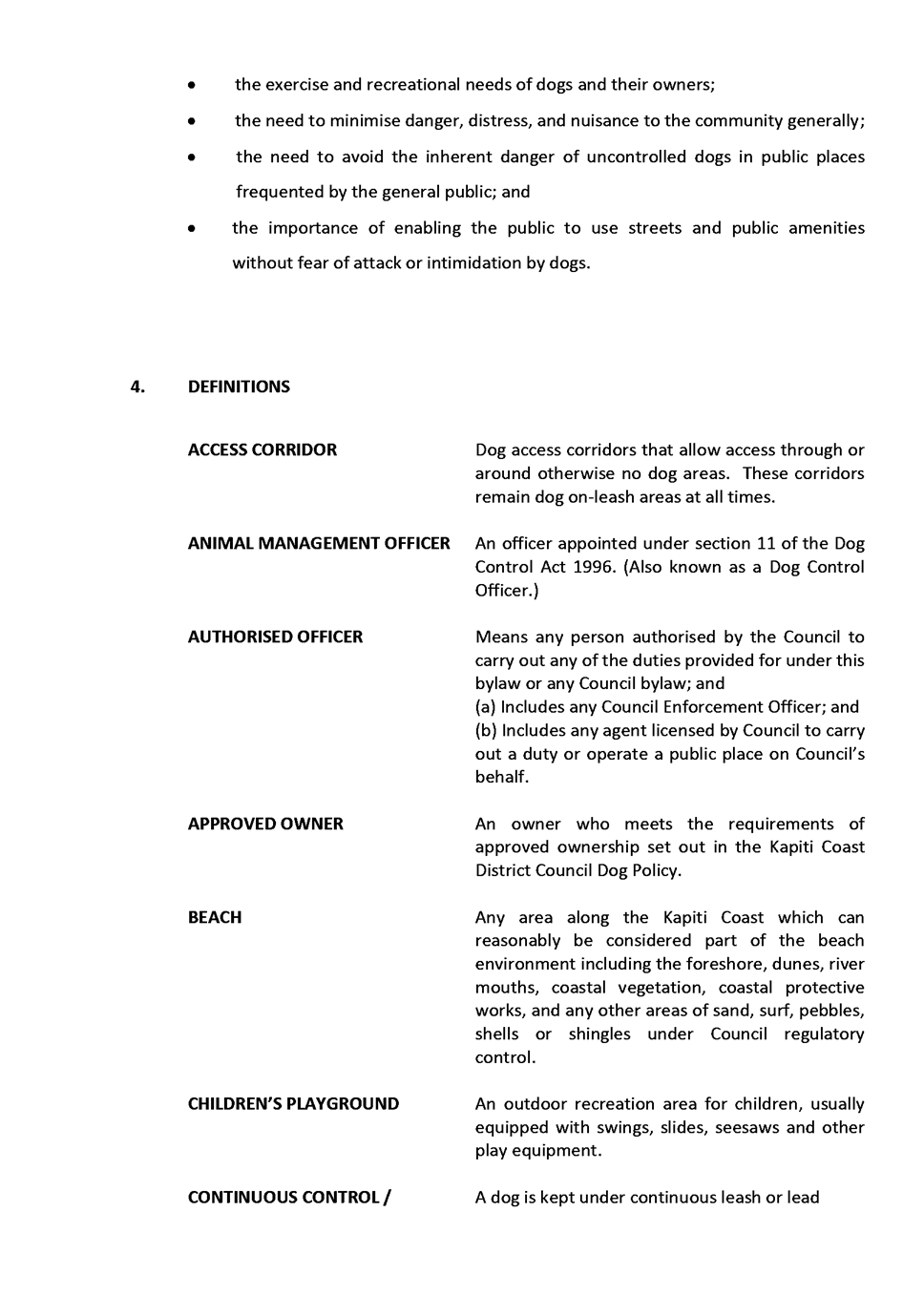
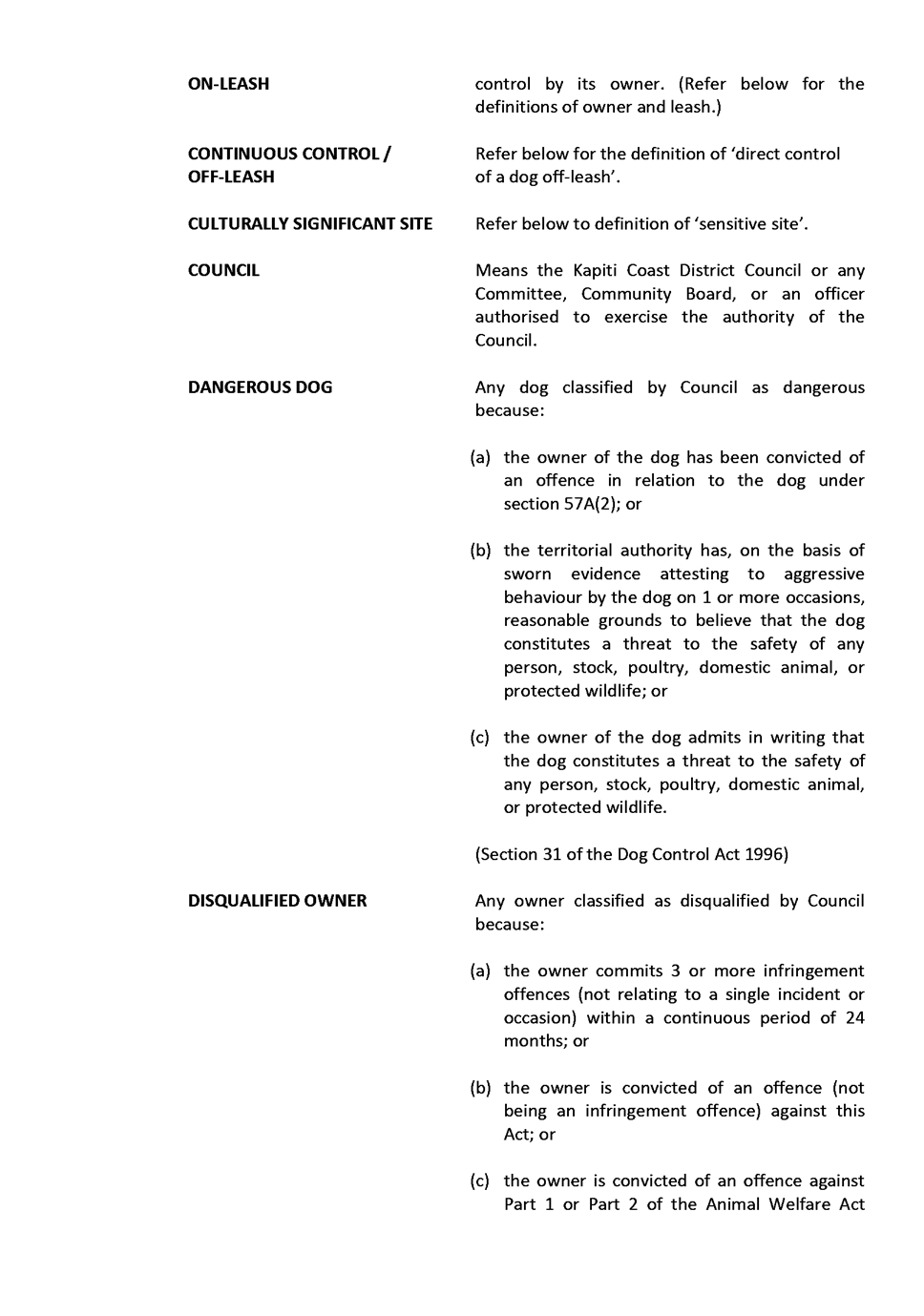

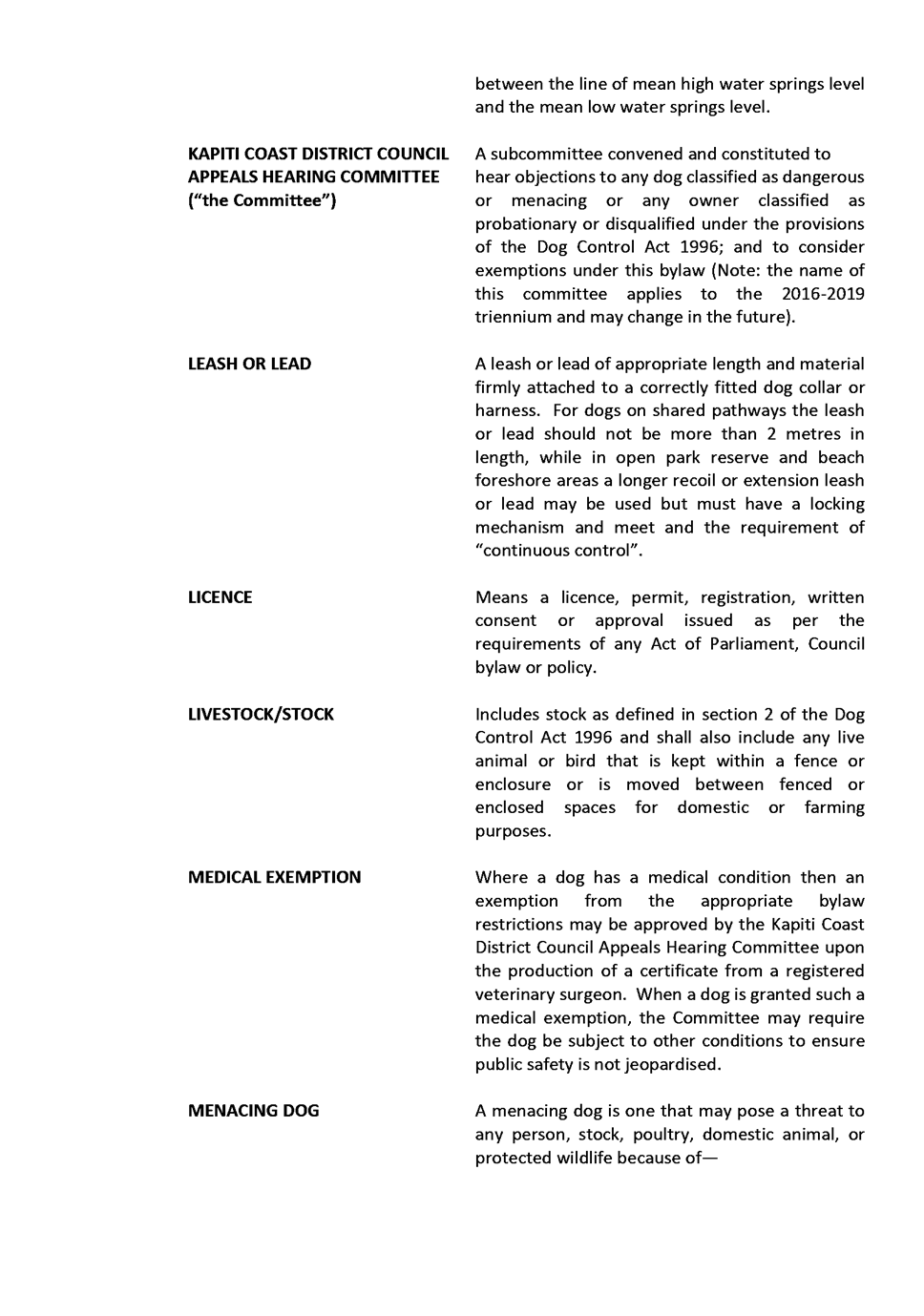
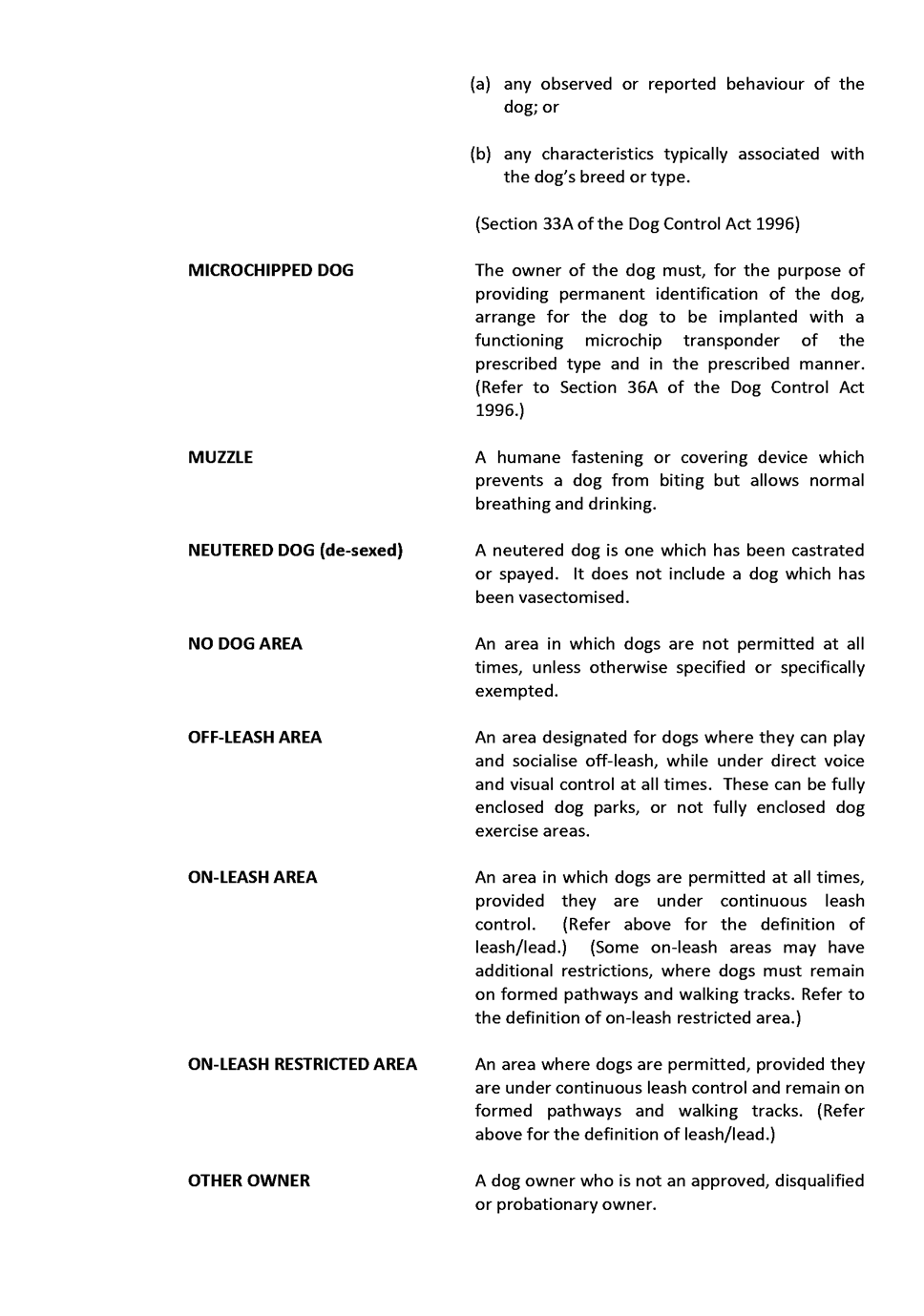

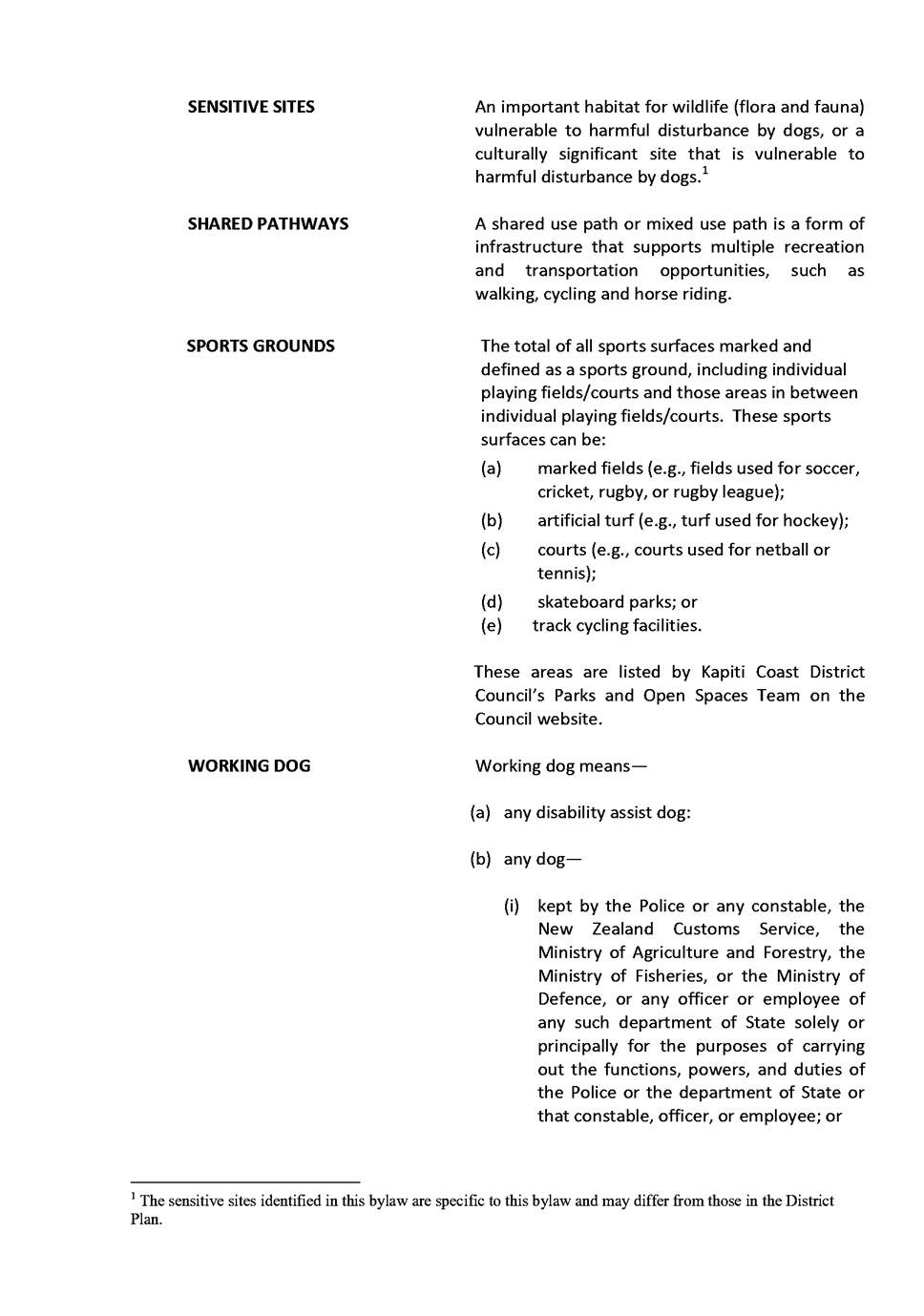

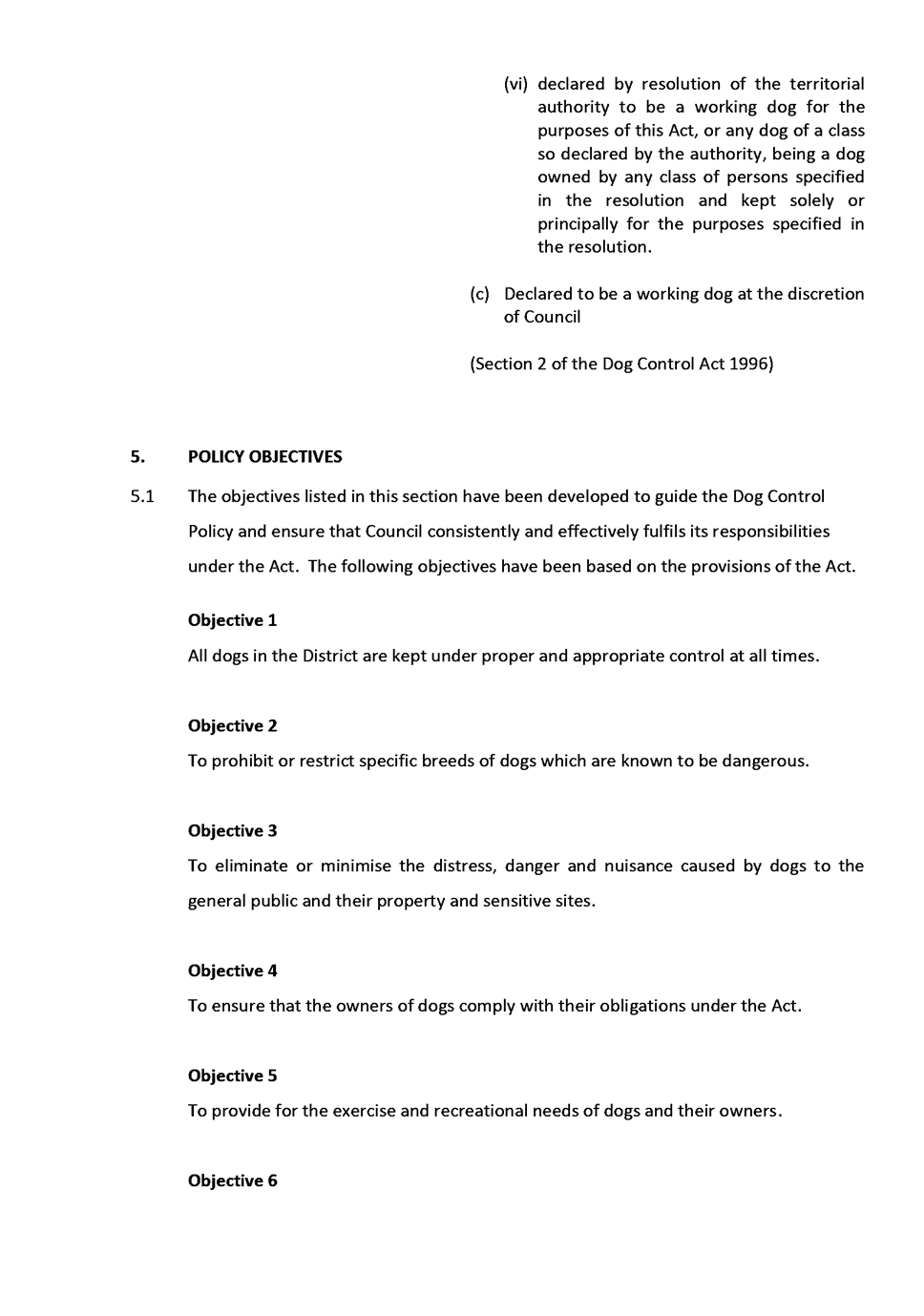
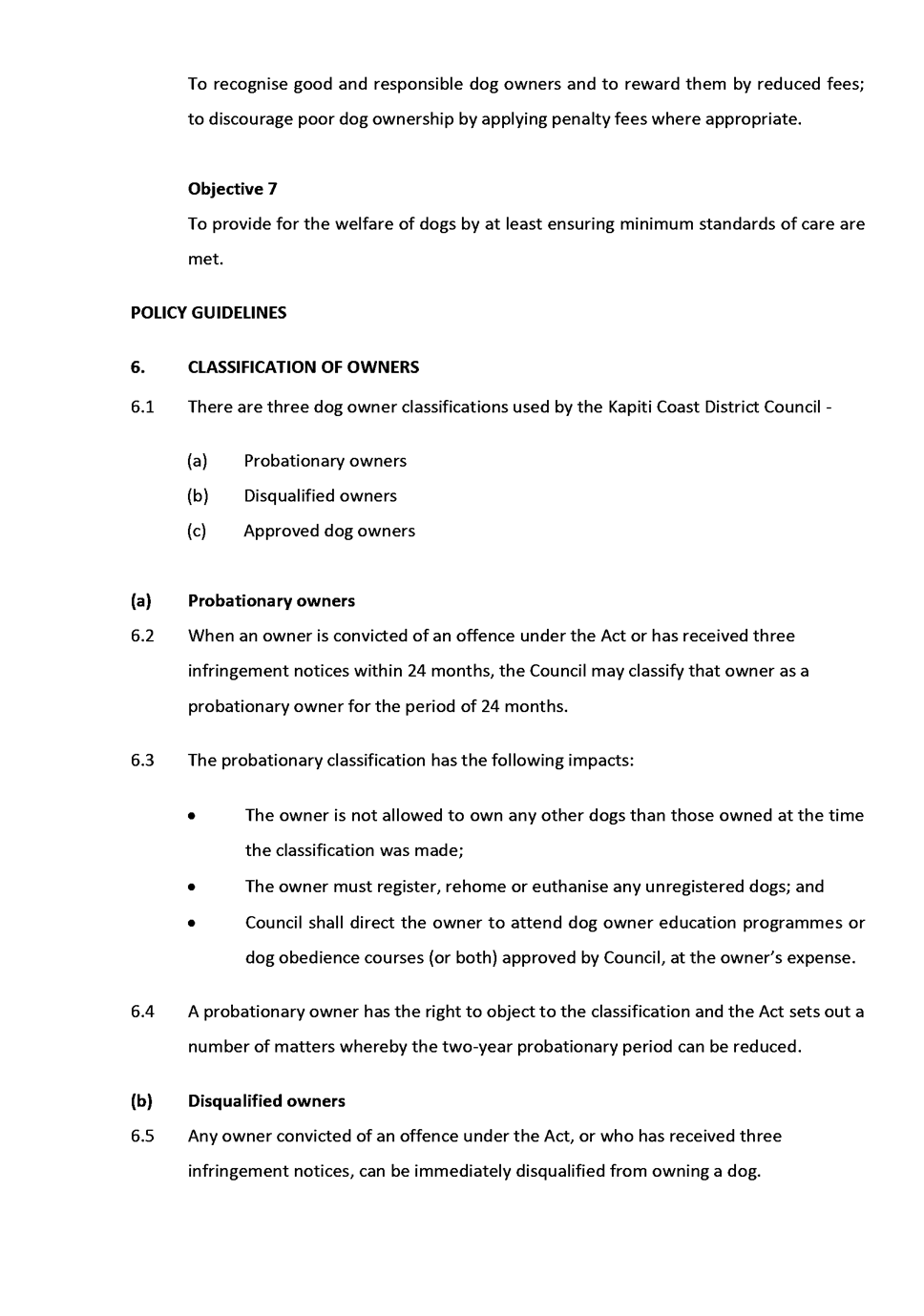
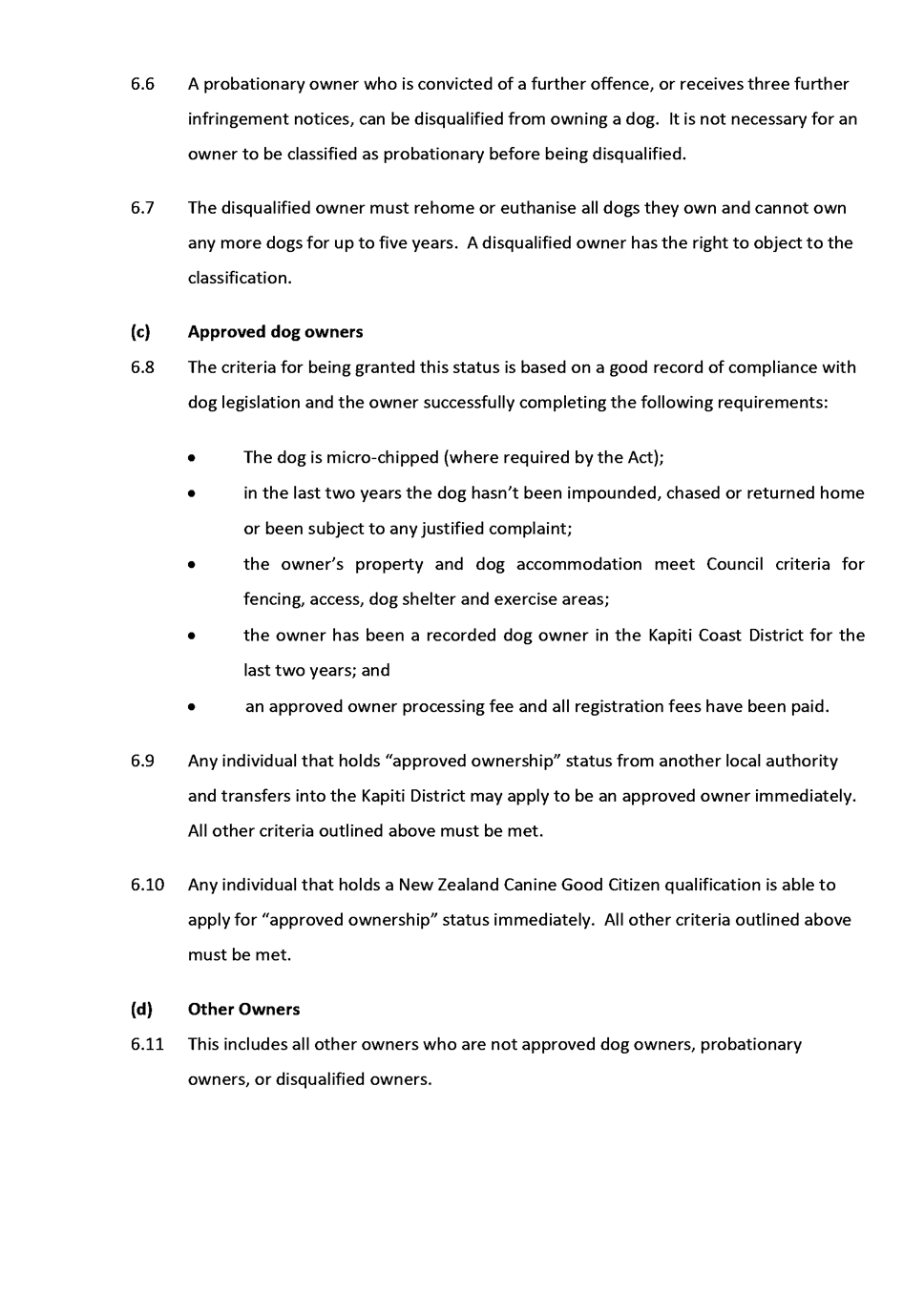
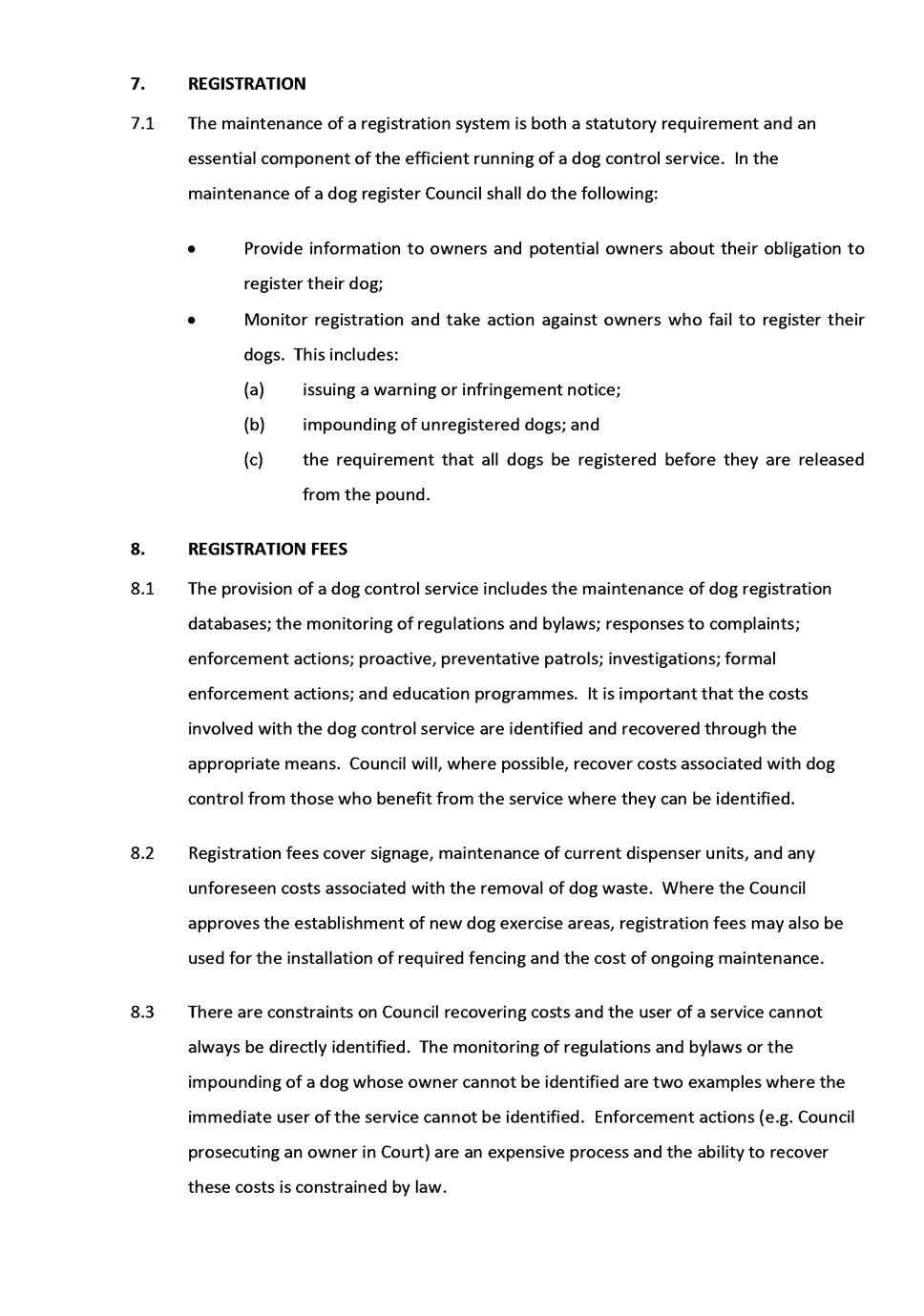
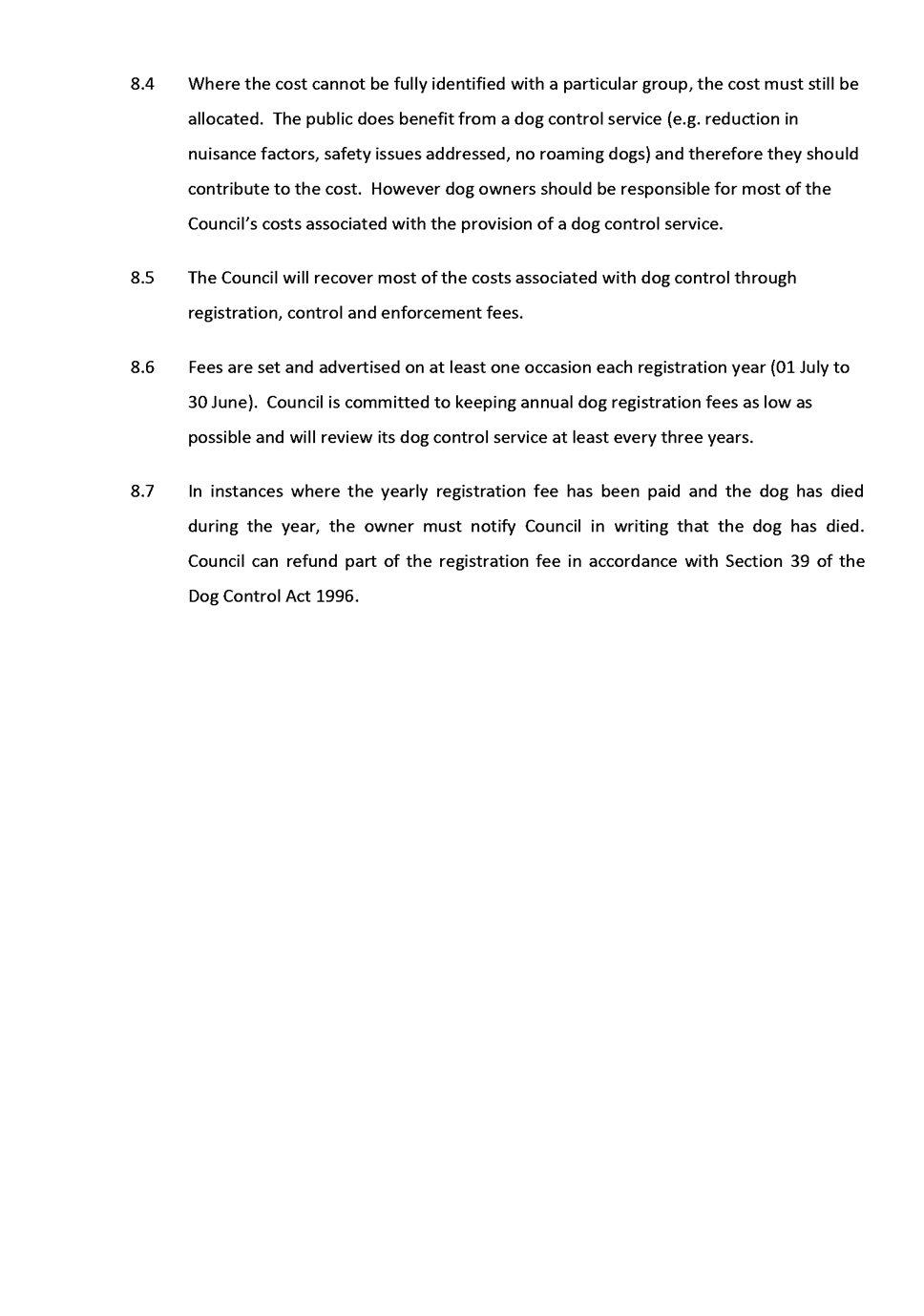
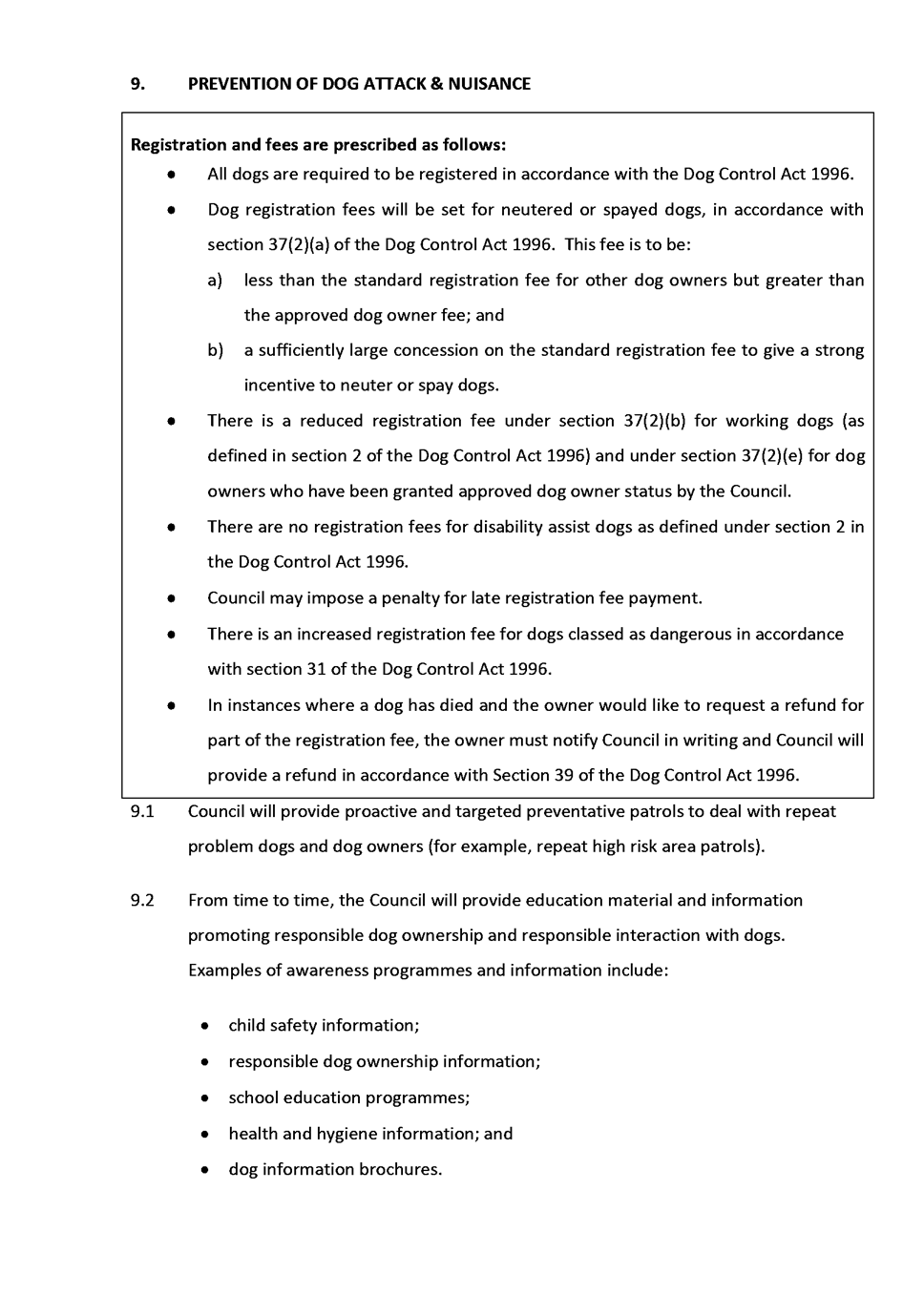
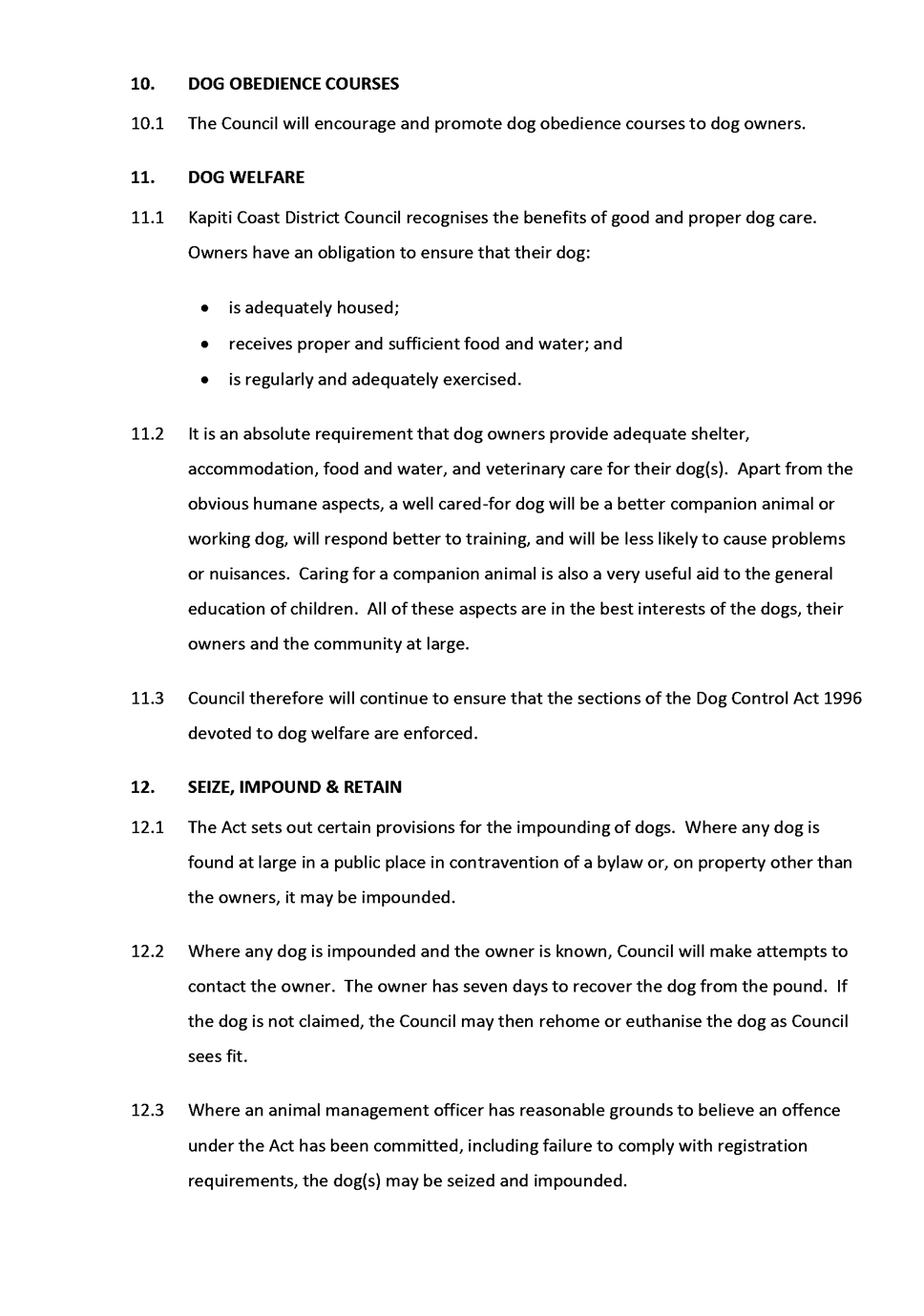
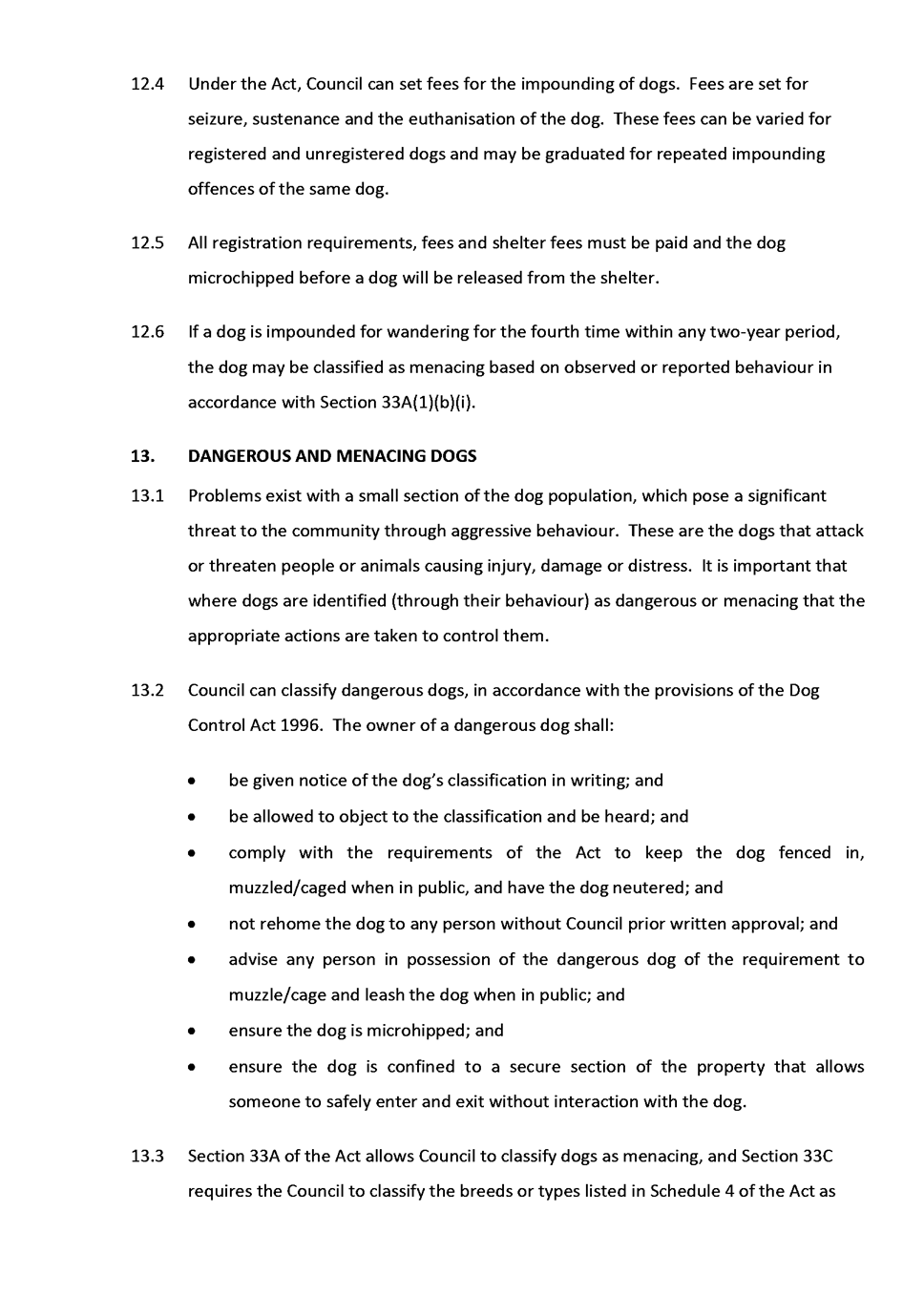
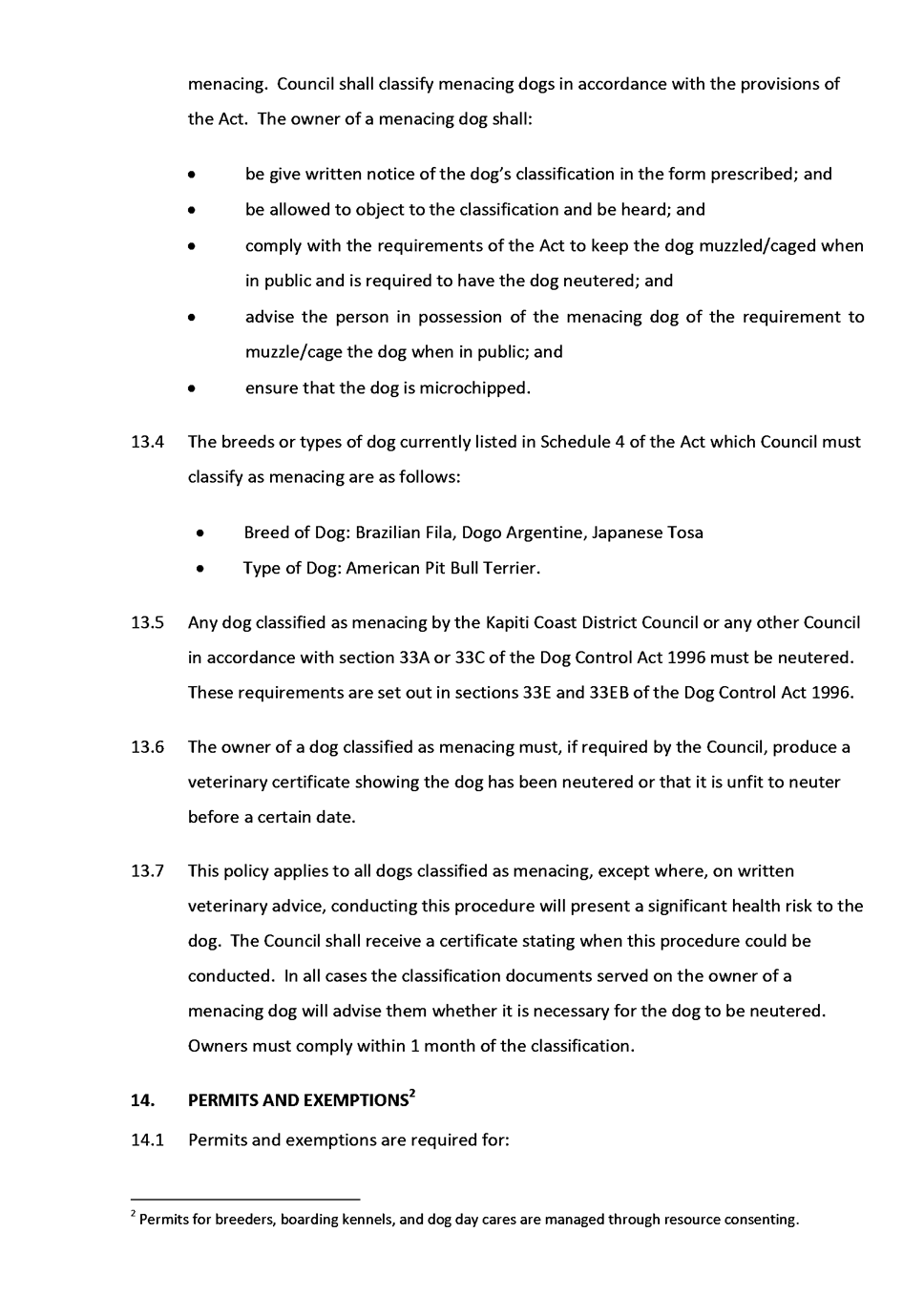
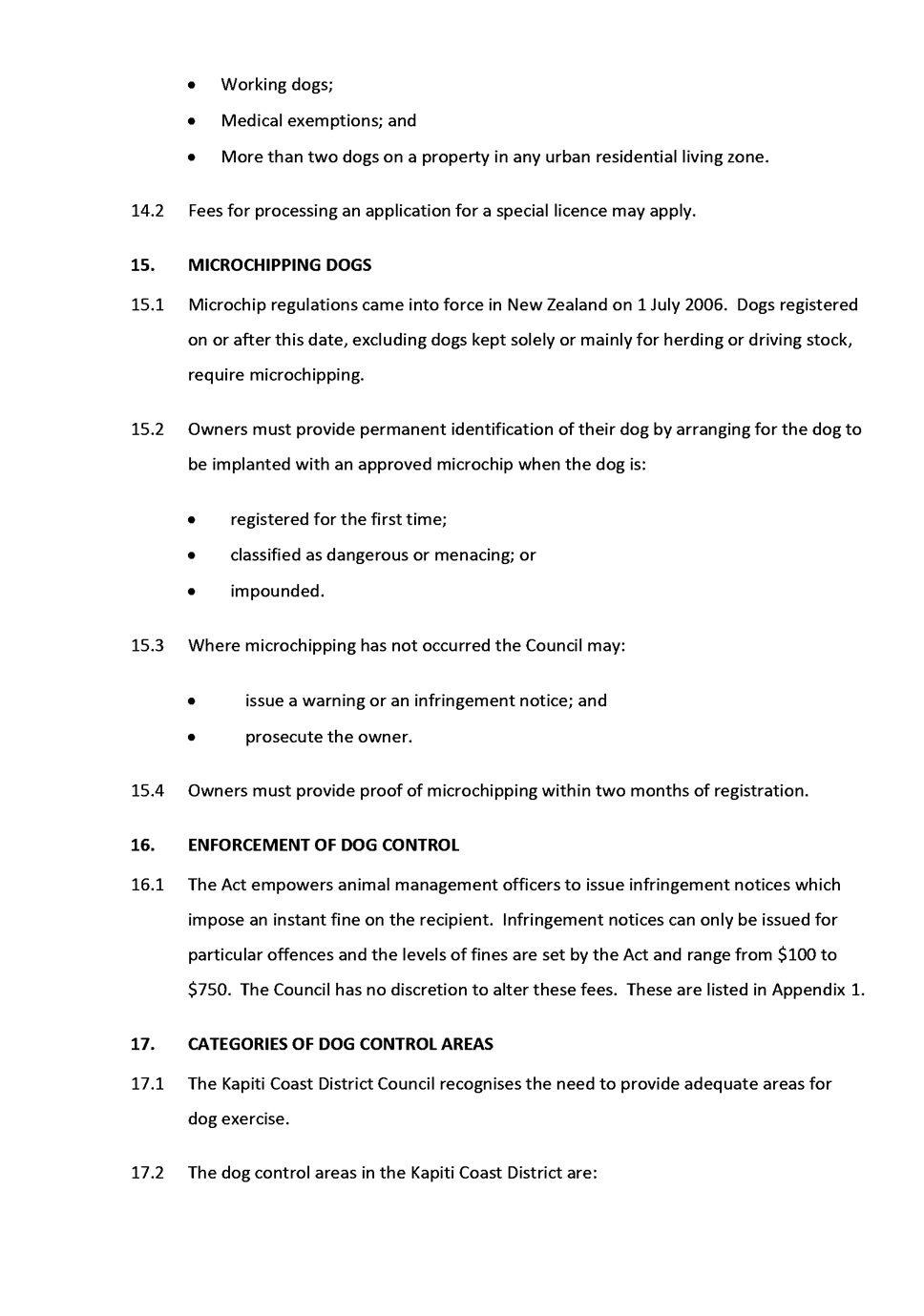
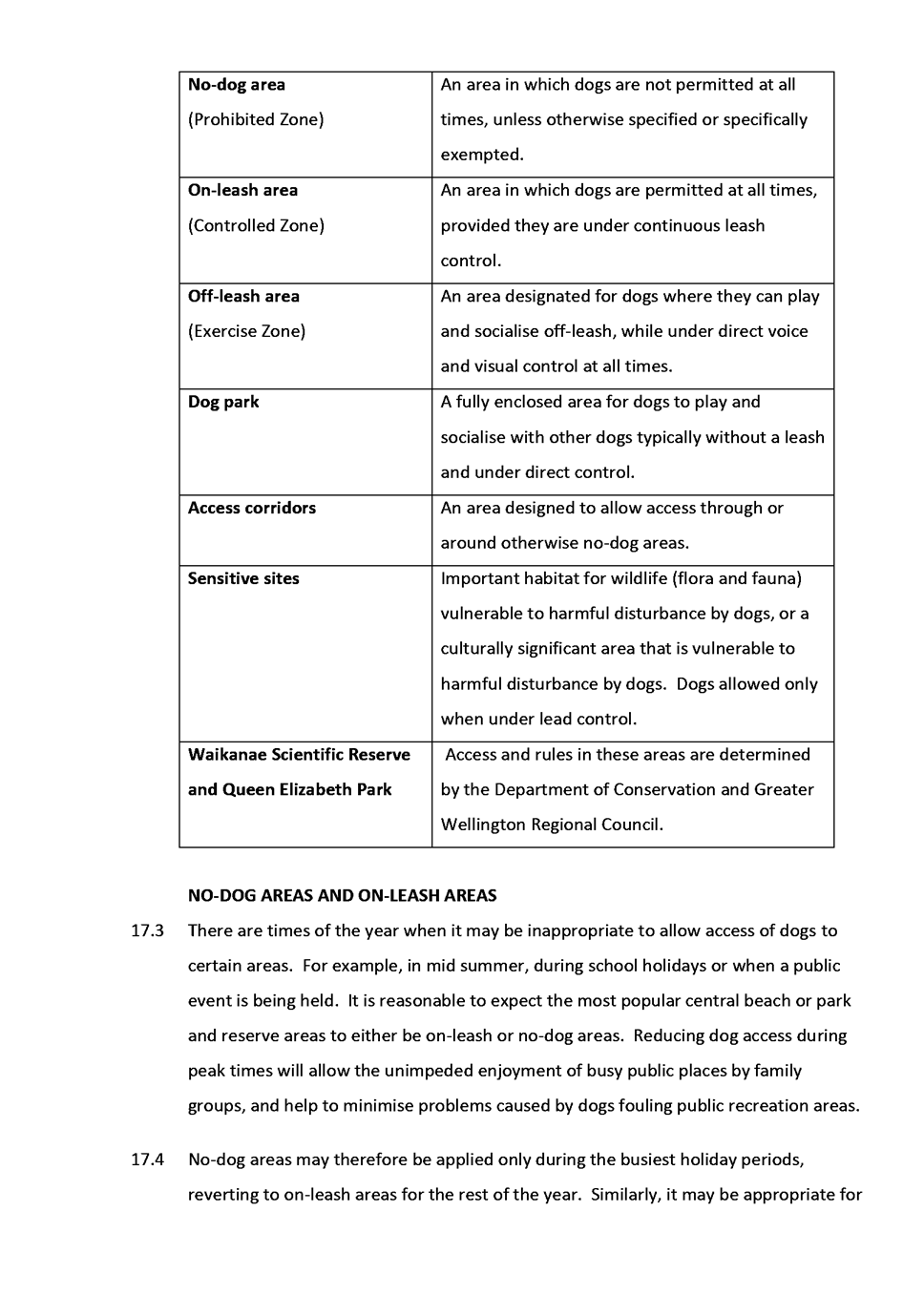
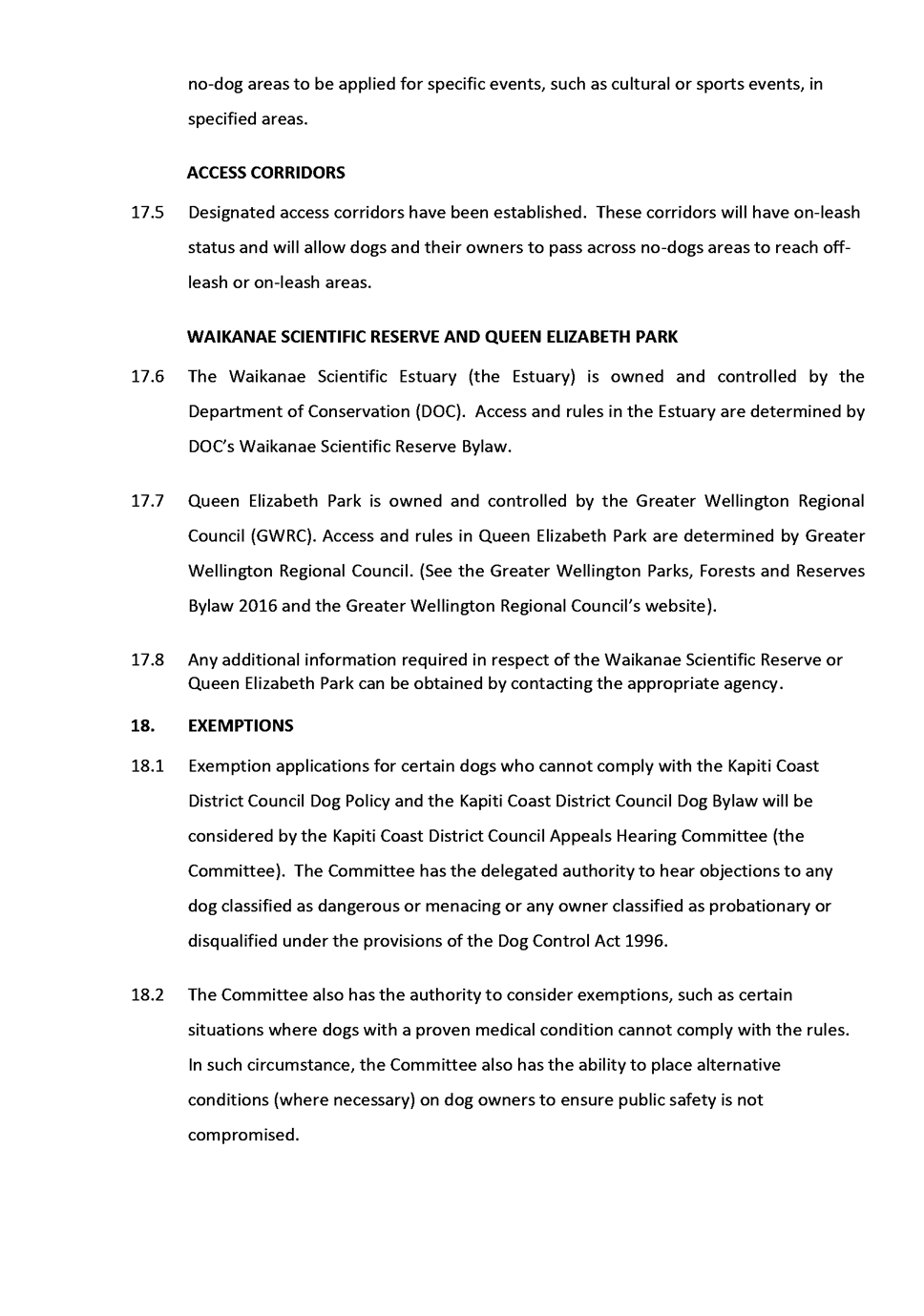


8.10 Annual
Alcohol Licensing Report 2019-2020
Author: Katherine
McLellan, Alcohol Licensing Officer
Authoriser: Angela
Bell, Acting Group Manager Regulatory Services
Purpose of Report
1 To
provide Council with the 2019/20 Annual Report as required within three months
following the end of the financial year on the proceedings and operations of
the District Licensing Committee (DLC). The Annual Report 2019/20 is prepared
pursuant to section 199 of the Sale and Supply of Alcohol Act 2012 (the Act).
2 To
provide Council with the 2019/20 Regulation 19 Financial Report as required
each year showing the income from fees, and costs incurred in the performance
of the DLC and the inspectors pursuant to regulation 19 of the Sale and Supply
of Alcohol (Fees) Regulations 2012 (the Regulations).
Delegation
3 The
Council has delegated authority to consider both reports under the Section B.2
of the Governance Structure and Delegations:
Background
4 At
the conclusion of a financial year, every territorial authority must furnish a
report to the Alcohol Regulatory Licensing Authority (ARLA) on the proceedings
and operations of its licensing committee during the year (Appendix
One).
4.1 Pursuant
to section 199(2) of the Act ARLA may, and has in relation to this year’s
annual report, specified the reporting format, reporting requirements and mode
of reporting. The mode of reporting consists of an online survey and an Annual
Fees return.
5 Regulation
19 requires every territorial authority (TA) each year, to prepare and make
publicly available, a report showing its income from fees payable in relation to,
and its costs incurred in (Appendix Two):
5.1 the
performance of the functions of its licensing committee under the Act; and
5.2 the
performance of the functions of its inspectors under the Act; and
5.3 undertaking
enforcement activities under the Act.
Issues and Options
Issues
6 There
are no issues in relation to this report and its appendices.
Option
7 The
alcohol licensing fees (income) are currently set by Central Government under
the Regulations. An option exists in future for Council to consider
establishing their own fee structure by developing a fee setting bylaw,
pursuant to section 405 of the Act.
Considerations
Policy
considerations
8 There
are no policy considerations.
Legal
considerations
9 The
Annual Report is a requirement under section 199 of the Act.
10 The
Regulation 19 Financial Report is a requirement of the Regulations.
Financial
considerations
11 There
are no financial considerations.
Tāngata
whenua considerations
12 There
are no Tāngata whenua considerations.
Strategic
considerations
13 There
are no strategic considerations.
Significance and Engagement
Significance
policy
14 This
matter has a low level of significance under Council’s Significance and
Engagement Policy.
Consultation
already undertaken
15 There
is no need to consult on either report contained in the appendices. They will
be made publicly available.
Engagement
planning
16 No
engagement planning required.
Publicity
17 The
reports contained in the appendices are required to be made publicly available,
therefore, these reports will be published on the Kapiti Coast District Council
website. The ARLA Annual Report was submitted to ARLA via the online survey on
19 August 2020 (prior to the 31 August 2020 deadline).
Other
Considerations
18 There
are no other considerations.
|
Recommendations
19 The
Council receive report and appendices.
|
Appendices
1. Appendix
One: 2019/20 Annual Report ⇩ 
2. Appendix
Two: 2019/20 Regulation 19 Financial Report ⇩ 
|
Council
Meeting Agenda
|
1 October 2020
|
Appendix
One
Annual Report 2019/20
Annual
Report to Alcohol Regulatory and Licensing Authority
Questions:
1. Please
provide the name of your District Licensing Committee.
Kapiti Coast District
Licensing Committee
2. Please
provide the name, email, and contact phone number of your Committee’s
Secretary.
Natasha
Tod Natasha.tod@kapiticoast.govt.nz 04
296 4700
3. Please
name each of your licensing inspectors and provide their email and contact
phone number.
Katherine
McLellan Katherine.mclellan@kapiticoast.govt.nz 04 296
4700
Antoinette
Bliss Antoinette.bliss@kapiticoast.govt.nz 04
296 4700
4. The
following questions relate to the number of licences and managers’
certificates your Committee issued and refused in the 2019-2020 financial year.
|
NEW LICENCES ISSUED
|
|
|
2019-2020
|
(2018 – 2019)
|
|
|
ISSUED
|
REFUSED
|
ISSUED
|
REFUSED
|
|
ON LICENCES
|
10
|
0
|
(12)
|
(0)
|
|
|
|
|
|
|
|
OFF LICENCES
|
3
|
0
|
(8)
|
(0)
|
|
|
|
|
|
|
|
CLUB LICENCES
|
0
|
0
|
(1)
|
(0)
|
|
NEW MANAGERS CERTIFICATES ISSUED
|
|
2019 - 2020
|
(2018 – 2019)
|
|
ISSUED
|
REFUSED
|
WITHDRAWN
|
ISSUED
|
REFUSED
|
WITHDRAWN
|
|
92
|
0
|
4
|
(94)
|
(0)
|
(4)
|
|
LICENCE RENEWALS
|
|
|
2019 - 2020
|
(2018 – 2019)
|
|
|
ISSUED
|
REFUSED
|
ISSUED
|
REFUSED
|
|
ON, OFF, CLUB
|
28
|
0
|
(53)
|
(1)
|
5. Please
comment on any changes or trends in the Committee’s workload in 2019-20.
· Similar number
of applications to be determined.
· Only three
hearings held (applications for renewal of Managers’ Certificates)
6. Please
comment on any new initiatives the Committee has developed/adopted in
2019-2020.
None
7. Has your
Council developed a Local Alcohol Policy?
No
7.A If the answer is yes, what stage
is your Local Alcohol Policy at?
Draft
Provisional
Under Appeal to ARLA
Adopted
In force
Abandoned
8. If the
answer to 7 is Yes, what effect do you consider your Local Alcohol Policy is
having?
9. If the
answer to 7A is ‘in force’, is your Local Alcohol Policy due for
review?
10. If the answer to 9 is
Yes, has such a review been undertaken; and, if so with what result?
11. Please comment on the
manner in which Covid-19 has impacted on DLC operations.
The
DLC did not operate during COVID 19 Alert levels 4,3 and 2.
12. Please comment on the
ways in which you believe the Sale and Supply of Alcohol Act 2012 is achieving
its object. Note: the object of the Sale and Supply of Alcohol Act 2012 is
that:
a) the sale, supply, and
consumption of alcohol should be undertaken safely and responsibly; and
b) the harm caused by
the excessive or inappropriate consumption of alcohol should be minimised.
c) to what extent, if
any, do you consider that achievement of the object of the Act may have been
affected by the Covid-19 pandemic?
The inclusion of deliveries
from bottle stores as an “essential service” during Levels 4 and 3
may not have been consistent with the achievement of the object of the Act.
|
TERRITORIAL AUTHORITY:
|
Kapiti Coast DLC
|
|
|
|
|
|
|
|
|
ANNUAL RETURN FOR YEAR PERIOD:
|
1 July 2019 to 30 June 2020
|
|
|
|
|
|
|
|
On-licence, off-licence and club licence
applications received:
|
|
|
|
|
|
|
|
|
Application Type
|
Number received
in fee category:
|
Number received
in fee category:
|
Number received
in fee category:
|
Number received
in fee category:
|
Number received
in fee category: Very High
|
|
Very Low
|
Low
|
Medium
|
High
|
|
On-licence new
|
|
5
|
7
|
|
|
|
On-licence variation
|
|
|
|
|
|
|
On-licence renewal
|
1
|
17
|
11
|
|
|
|
Off-licence new
|
1
|
2
|
3
|
|
|
|
Off-licence variation
|
|
|
1
|
|
|
|
Off-licence renewal
|
1
|
4
|
10
|
1
|
|
|
Club licence new
|
|
|
|
|
|
|
Club licence variation
|
|
|
|
|
|
|
Club licence renewal
|
4
|
1
|
|
|
|
|
Total number
|
7
|
29
|
32
|
1
|
0
|
|
Total Fee paid to ARLA
|
$
120.75
|
$
1,000.50
|
$
1,656.00
|
$
86.25
|
$
-
|
|
(GST incl)
|
|
|
|
|
|
|
|
Annual fees for existing licences
received:
|
|
|
|
|
|
|
|
|
|
|
Licence Type
|
Number received
in fee category:
|
Number received
in fee category:
|
Number received
in fee category:
|
Number received
in fee category:
|
Number received
in fee category: Very High
|
|
Very Low
|
Low
|
Medium
|
High
|
|
On-licence
|
9
|
27
|
20
|
|
|
|
Off-licence
|
3
|
8
|
24
|
6
|
|
|
Club licence
|
18
|
6
|
1
|
|
|
|
Total number
|
30
|
41
|
45
|
6
|
0
|
|
Total Fee paid to ARLA
|
$
517.50
|
$
1,414.50
|
$
2,328.75
|
$
517.50
|
$
-
|
|
(GST incl)
|
|
|
|
|
|
|
|
Managers certificate applications
received:
|
|
|
|
|
|
|
|
|
|
|
|
Number received
|
|
|
|
|
Manager’s certificate new
|
87
|
|
|
|
|
Manager’s certificate renewal
|
122
|
|
|
|
|
Total number
|
209
|
|
|
|
|
Total Fee paid to ARLA (GST incl)
|
$
6,008.75
|
|
|
|
|
|
|
|
|
|
|
Special licence applications received:
|
|
|
|
|
|
|
|
|
|
|
|
Number received
in category:
|
Number received
in category:
|
Number received
in category:
|
|
|
|
Class 1
|
Class 2
|
Class 3
|
|
|
|
Special licence
|
11
|
29
|
80
|
|
|
|
|
|
|
|
|
|
Temporary authority applications
received:
|
|
|
|
|
|
|
|
|
|
|
|
Number received
|
|
|
|
|
Temporary authority
|
18
|
|
|
|
|
|
|
|
|
|
|
Permanent club charter payments
received:
|
|
|
|
|
|
|
|
|
|
|
|
Number received
|
|
|
|
|
Permanent club charter payments
|
0
|
|
|
|
|
|
|
|
|
|
|
|
|
|
|
|
|
Total fees paid to ARLA 2019-2020
(GST incl)
|
$
13,650.50
|
|
|
|
Council Meeting Agenda
|
1 October 2020
|
Appendix
Two
Regulation 19 Report
2019/20
Total revenue from fees:
|
Fee type
|
Revenue (GST inclusive)
|
|
On licence & Club licence application fees
|
$30,555
|
|
Off licence application fees
|
$16,847
|
|
On licence and Club licence annual fees
|
$30,532
|
|
Off licence annual fees
|
$25,001
|
|
Other licence types
|
|
|
Special licences
|
$17,388
|
|
Managers Certificates
|
$66,096
|
|
Other (Temporary Authorities)
|
$5,340
|
|
Total
|
$191,759
|
Total costs:
|
Cost type
|
Expenditure (GST exclusive)
|
|
Disbursements to ARLA
|
$11,870
|
|
DLC / licence decision making
functions
(applications)
|
$133,168
|
|
Inspector and enforcement functions
(monitoring and enforcement)
|
$32,048
|
|
* COVID 19 Business Interruption Credit
|
$8,398
|
|
Estimate of overhead costs
|
$113,225
|
|
Total
|
$298,709
|
This
report follows the format in the guidance material provided to territorial
authorities in October 2018 by Ministry of Justice.
* COVID 19 Business Interruption
Credit: 25% of the annual fee for licensed premises affected by the lockdown
period
8.11 Reports
and Recommendations from Standing Committees and Community Boards
Author: Tanicka
Mason, Democracy Services Advisor
Authoriser: Janice
McDougall, Group Manager People and Partnerhips
Purpose of Report
1 This
report presents reports and recommendations considered by Standing Committees
and Community Boards from 17 March 2020 to 3 September 2020.
Background
2 Meetings
took place on the following dates:
|
Waikanae Community Board
|
17 March 2020
|
|
Grants Allocation Subcommittee ( Waste Levy)
|
19 March 2020
|
|
Paekākāriki Community
Board
|
9 June 2020
|
|
Grants Allocation Subcommittee (Creative Communities New
Zealand)
|
11 June 2020
|
|
Campe Estate Subcommittee
|
11 June 2020
|
|
Ōtaki Community Board
|
16 June 2020
|
|
Waikanae Community Board
|
23 June 2020
|
|
Paraparaumu-Raumati Community Board
|
23 June 2020
|
|
Strategy & Operations Committee
|
16 July 2020
|
|
Paekākāriki Community
Board
|
21 July 2020
|
|
Ōtaki Community Board
|
4 August 2020
|
|
Waikanae Community Board
|
11 August 2020
|
|
Audit & Risk Subcommittee
|
13 August 2020
|
|
Paraparaumu-Raumati Community Board
|
18 August 2020
|
|
Strategy & Operations Committee
|
20 August 2020
|
|
Paekākāriki Community
Board
|
25 August 2020
|
|
Strategy & Operations Committee
|
3 September 2020
|
3 In
addition, the following meetings took place:
Older Person’s Council 26
June 2020, 29 July 2020
Te Whakaminenga o Kāpiti 30
June 2020, 11 August 2020
Kāpiti Coast
Youth Council 20 July 2020, 10 August 2020
Waikanae Community Board
4 Waikanae
Community Board met on 17 March 2020 to discuss the following:
· Town Centre Access
and Safety – Waikanae
· Road Naming
– 58/62 Hadfield Road, Te Horo
· Road Naming
– Many Park, Waipunahau Road, Waikanae. Stage 1
· Waikanae Parks and
Reserves Long Term Planning
· Consideration of
Applications for Funding
5 Waikanae
Community Board also met on 23 June 2020 to discuss the following:
· Consideration of
Applications for Funding
· Nga Manu Update
· Confirmation of
Minutes
· Matters Under
Action
6 The
Waikanae Community Board also met on 11 August 2020 to discuss the following:
· Notice of Motion
– Councillor Prvanov
· Consideration of
Applications for Funding
· Update on the 2009
Beach Bylaw Review
· Road Naming
– Stage 1 of 2 for a new subdivision RM190153 at 104 Ngarara Road,
Waikanae
· Transport and
parking issues in Waikanae
· Confirmation of
Minutes
· Matters Under
Action
Grants
Allocation Subcommittee (Waste Levy)
7 The
Grants Allocation Subcommittee (Waste Levy) met on 19 March 2020 to discuss the
following:
· Waste Levy Grants
Allocation 2019/20: New Technologies and Seed Funding Grants
Paekākāriki Community Board
8 The
Paekākāriki Community Board met on 9 June
2020 to discuss the following:
· Consideration of
Funding Applications
· Consideration for
grants from Campe Estate
· New Zealand
Transport Agency
· Transmission Gully
Project
· Wainuiwhenua
Project
· Matters Under
Action
9 The
Paekākāriki Community Board also met on 21
July 2020 to discuss the following:
· Update on 2009
Breach Bylaw Review
· Consideration of
funding Applications
· Paekākāriki
School Children
· Confirmation
of Minutes
· Matters
Under Action
10 The
Paekākāriki Community Board also met on 25
August 2020 to discuss the following:
· Consideration of
funding Applications
· Confirmation of
Minutes
· Matters Under
Action
Grants
Allocation Subcommittee (Creative Communities New Zealand)
11 The
Grants Allocation Subcommittee (Creative Communities New Zealand) met on 11
June 2020 to discuss the following:
· Consideration of
Applications for Funding Round 2, 2019-20
Campe Estate Subcommittee
12 The
Campe Estate Subcommittee met on 11 June 2020 to discuss the
following:
· Consideration for
Grants from Campe Estate
Ōtaki Community Board
13 The
Ōtaki Community Board met on 16 June 2020 to
discuss the following:
· Consideration of
Applications for Funding
· PP2O –
Fletchers
· Confirmation of
Minutes
· Matters Under
Action
14 The
Ōtaki Community Board also met on 4 August 2020 to
discuss the following:
· Update on the 2009
Beach Bylaw Review
· Consideration of
Applications for Funding
· PP2O Update
· Update from Mid
Central DHB representative – Jenny Warren
· Update of Council
owned Properties in Otaki
· Confirmation of
Minutes
· Matters Under
Action
Paraparaumu-Raumati Community
Board
15 The
Paraparaumu-Raumati Community Board met on 23 June 2020 to discuss the
following:
· Raumati Village Roading
Improvements
· Consideration of
Applications for Funding
· Kapiti Age
Concern: Self Isolation (Christine Tilley)
· Confirmation of
Minutes
· Matters Under
Action
16 The
Paraparaumu-Raumati Community Board also met on 18 August 2020 to discuss the following:
· Adoption of
Standing Orders for Meetings of the Paraparaumu-Raumati Community Board
· Update of the 2009
Beach Bylaw Review
· Consideration of
Applications for Funding
· Paraparaumu Civic
Precinct (Community Centre Foodbank Area) Parking Restriction Changes
· Verbal Update on
Raumati Road Safety Improvements and Upcoming Community Feedback Open Days
· Confirmation of
Minutes
· Matters Under
Action
Strategy
& Operations Committee
17 The
Strategy & Operations Committee met on 16 July 2020 to discuss the
following:
· 2018-2021 Policy
Work Programme Update
· Update on the 2009
Beach Bylaw Review Project
· National Policy
Statement on Urban Development Capacity – Quarter 4 Monitoring Report
· Major Events Fund
2020/21
18 The
Strategy & Operations Committee also met on 20 August 2020 to discuss the
following:
· Finance Report as
at 30 June 2020
· Contracts Under
Delegated Authority
· Quarterly Activity
Report: Q3/Q4
· Treasury
Management Policy Review
· Local Government
New Zealand Annual General Meeting
· Confirmation of
Minutes
19 The
Strategy & Operations Committee also met on 3 September 2020 to discuss the
following:
· Resident Opinion
Survey 2019/20 Annual Report
· Community
Contracts Report Backs
· Waka Kotahi NZ
Transport Agency Procedural Investment Audit Report
· Confirmation of
Minutes
· Kapiti Coast Major
Events Fund
Audit &
Risk Subcommittee
20 The
Audit & Risk Subcommittee met on 13 August 2020 to discuss the following:
· Health &
Safety Quarterly Reports: 1 January 2020 – 30 March 2020; and 1 April
2020 – 30 June 2020
· Update on Key
2018-19 Audit Findings
· Quarterly Treasury
Compliance Report
· Risk Management
– Business Assurance Update
· Waka Kotahi NZ
Transport Agency Procedural Investment Audit Report
· Confirmation of Minutes
· Confirmation of
Public Excluded Minutes
· Update on
Litigation Status, Statutory Compliance Issues and Investigations
Older
Person’s Council
21 The
Older Person’s Council met on 26 June 2020 to discuss the following:
· Welcome
and safety briefing
· Apologies
· Previous
Minutes
· Report
on Council Business
· CWB Advisory Group
Update every second month and items to take to group every other month
· Road
Safety Advisory Group Update every second month and items to take to group
every other month
· Report back from
workgroups
· Round the table
discussion
22 The
Older Person’s Council also met on 29 July 2020 to discuss the following:
· Welcome
and safety briefing
· Apologies
· Previous
Minutes
· Guest
Speakers: Manager Kapiti Foodbank – Kerry Lovell
· CWB Advisory Group
Update every second month and items to take to group every other month
· Road
Safety Advisory Group Update every second month and items to take to group
every other month
· Report back from
workgroups
· Round the table discussion
· The following member’s bill has been proposed –
“Social Security (Health Insurance Rebate for SuperGold Cardholders)
Amendment Bill”.
It is not yet
open for consultation but I expect it won’t be far away.
This bill
provides for a health insurance rebate on premiums for eligible SuperGold
cardholders, in order to support seniors who are 65 years of age and over to
maintain their health insurance.
https://www.parliament.nz/en/pb/bills-and-laws/proposed-members-bills/document/52HOH_MEMBILL164_1/social-security-health-insurance-rebate-for-supergold
Te
Whakaminenga o Kāpiti
23 Te
Whakaminenga o Kāpiti met on 30 June 2020 to discuss the
following:
· Confirmation of
Minutes
· Appointment of
Chair
· Representation on
the Strategy and Operations Committee and other opportunities
· The COVID-19
Recovery
· Wellington Region
Waste Management and Minimisation Bylaw Template
· Provincial Growth
Fund
· Local Place Names
- New Zealand Geographic Board
· Te Whakaminenga o
Kāpiti Annual Work Plan 2019-2020 Update
· Economic
Development Strategy
24 Te
Whakaminenga o Kāpiti also met on 11 August 2020 to
discuss the following:
· Confirmation of
Minutes
· 2021 Long term
Plan Process
· Consideration of
the Establishment of a Maori Ward
· 2018-2021 Policy
Work Programme Update
· Update on the 2009
Beach Bylaw Review
· Understanding
Implications of Te Ātiawa ki Whakarongotai Charitable
Trust withdrawal from Te Whakaminenga o Kāpiti
· Matters Under
Action
Kāpiti Coast
Youth Council
25 The
Kāpiti Coast Youth Council met on 20 July 2020 to
discuss the following:
· Councilor’s
Update: Councillor Handford
· Te
Anamata Update: Eva Hakaraia
· ZEAL
Update: ZEAL Representative
· KYS
Update: KYS Youth Reps
· Thank you: Janice
McDougall, General Manager of People & Partnerships at Kāpiti Coast
District Council
· Introduction &
Welcome: Aaron Cronin
· Intergenerational
Human Library: Aria Gardiner
· Work
Ready Kāpiti Update: Ella Kirby, on behalf of Work Ready Kāpiti
· Secrets
of Kāpiti: Georgia Wickens
· Council
Workshop & Presentation: Kahe Nakhla
· Kāpiti
Enviro Youth Summit: Stefan Finderup
· Youth Council
Member Resignation: Ella Kirby
· Creative
Communities Representative: Evalina Brunoro-Beilman
· Council
Presentation: Ella Harvey
· Council
Presentation Action Item: Caleb Lopez-Sanchez
· Mural Project:
Jackson Kelly
· KYS X ZEAL X Youth
Council Collaboration: Daniel Deadman
· Pride Project:
Tutamure Nikora & Annie Budd
· Age Friendly
Strategy Survey, Grey Power
26 The
Kāpiti Coast Youth Council also met on 10 August
2020 to discuss the following:
· Economic
Development Strategy Update: Leanna & Darryn
· Councilor’s Update: Councillor Handford
· Te Anamata Update: Eva Hakaraia
· ZEAL Update: ZEAL Representative
· Kāpiti Youth Support Update: KYS Youth Reps
· Human Library: Aria Gardiner
· Work Ready Kāpiti Update: Work Ready Kāpiti Board Member
· Secrets of Kāpiti: Ella Harvey
· Kāpiti Enviro Youth Summit: Georgia Wickens
· Mural
Project: Jackson Kelly
· Pride
Project: Tutamure Nikora & Annie Budd
· Long
Term Plan Submission: Ella Kirby
· Tech
Help Update: Caleb Lopez-Sanchez
· Recruitment
Update: Ella Kirby
· Think
Big Update: Ella Kirby
|
Recommendation
27 That
Council notes the following recommendations:
That the
Ōtaki Community Board requests that the Council notes the Board’s
support for the following requests from the Otaki Boating Club:
That the Kapiti Coast
District Council offer the Otaki Boating Club an ongoing lease of the land at
37 Moana Street for a duration of 30 years for the purpose of operating a
clubrooms and tractor storage area;
That the Kapiti Coast
District Council sell the current house and garage located at 37 Moana Street
outright to the Otaki Boating Club at an agreed and fair value to allow the
Otaki Boating Club to modify and maintain these buildings to suit the
club’s operational needs
That the Ōtaki Community Board requests that the
Council ask staff to bring forward a report on the matter for the
Council’s consideration at their earliest opportunity.
28 That
the Council considers the following recommendation for ratification:
That the Paraparaumu/Raumati
Community Board introduce a 10-minute
parking restriction on the two spaces
outside the Te Newhanga Kapiti Community Centre, Iver Trask Way, Paraparaumu
29
That Council receives this report (Reports and Recommendations from Standing
Committees and Community Boards).
|
Appendices
Nil
9 Confirmation
of Minutes
9.1 Confirmation
of minutes
Author: Grayson
Rowse, Democracy Services Advisor
Authoriser: Leyanne
Belcher, Democracy Services Manager
|
Recommendations
That the minutes of the Council
meeting on 27 August 2020 be accepted as a true and accurate record of the
meeting.
|
Appendices
1. Minutes
of Council meeting 27 August 2020 ⇩ 
|
Council
Meeting Agenda
|
1 October 2020
|
MINUTES OF Kapiti Coast District Council
Council Meeting
HELD AT THE Council
Chamber, Ground Floor, 175 Rimu Road, Paraparaumu
ON Thursday, 27 August
2020 AT 9.30am
PRESENT: Mayor
K Gurunathan, Deputy Mayor Janet Holborow, Cr Angela Buswell, Cr James Cootes,
Cr Jackie Elliott, Cr Gwynn Compton, Cr Jocelyn Prvanov, Cr Martin Halliday, Cr
Sophie Handford, Cr Robert McCann, Cr Bernie Randall
IN
ATTENDANCE: Wayne Maxwell (Mr), Natasha Tod (Ms), Sean Mallon (Mr), Janice
McDougall (Mrs), Mark de Haast (Mr) via Zoom, Kathy Spiers (Ms), Holly Ewens
(Ms), James Westbury (Mr) via Zoom, Grayson Rowse (Mr), Tanicka Mason (Ms)
APOLOGIES: Nil
LEAVE OF Nil
ABSENCE:
1 Welcome
2 Council
Blessing
The Mayor welcomed everyone to the meeting and Cr Handford
read the Council blessing in Maori.
3 Apologies
4 Declarations
of Interest Relating to Items on the Agenda
5 Public
Speaking Time for Items Relating to the Agenda
His worship the Mayor took the opportunity to recognise that
the items to be spoken about did not specifically relate to the agenda, he felt
that item 9.3 Responding to the Independent Organisational Review, highlighted
how Council responds to Mana Whenua issues. As Chair, he ruled it appropriate
to allow Iwi to participate at this point in the meeting.
George Jenkins
Speaking on the Kapiti Airport as the spokesperson for
Puketapu Hapū .
Provided a historical background into Puketapu’s
interests in Paraparaumu. The Kapiti Airport land is the last
remaining land of Puketapu hapu. It was rezoned for Kapiti airport.
Imploring for Council’s public support for the retention of the Airport
lands against rezoning for subdivision to protect the interests of Puketapu
Hapū and the community.
Puketapu Hapū are currently awaiting the Waitangi
Tribunal report following Treaty hearings. Any rezoning and sale of the airport
lands will prejudice Puketapu Hapū settlement interests.
Tony Jackson
Tony read a statement to Kapiti Coast District Council on
behalf of various whānau who have been affected by
the taking of land for Paraparaumu Airport.
6 Members’
Business
(a) Public
Speaking Time Responses
|
Resolution 2020/32
Moved: Mayor
K Gurunathan
Seconder: Cr James Cootes
This
Council, in supporting the call by the original owners of the airport land
for the return of their ancestral land, requests the CEO to bring back a
staff report on progressing this matter.
Carried
Tabled documents
|
|
Appendices
1 Statement
to Kapiti Coast District Council on behalf of various whānau who have
been affected by the taking of land for Paraparaumu Airport
|
(b) Leave
of Absence
(c) Matters
of an Urgent Nature (advice to be provided to the Chair prior to the
commencement of the meeting)
7 Mayor's
Report
The Mayor tabled a report 31 July to 27 August
|
Tabled documents
|
|
Resolution 2020/33
Moved: Cr
Jackie Elliott
Seconder: Deputy Mayor Janet Holborow
The following documents were tabled.
Carried
|
|
Appendices
1 Mayoral Activities 31 July
- 27 August 2020
|
Report 9.1 was heard at this point in the meeting.
|
9.1 Review
and Update of the Waste Levy Allocation Policy 2011
|
|
Katharina Kennedy, Waste Minimisation Services Officer
took the report as read and answered members questions.
|
|
Resolution 2020/34
Moved: Cr
Jackie Elliott
Seconder: Deputy Mayor Janet Holborow
43. That
the Council approves the updated Waste Levy Grants Allocation Policy 2020 as
detailed in Appendix A, and revokes the previous policy.
44. That
the Council approves the updated Criteria and Guidelines documents for the
Waste Levy Fund for Community Projects and Waste Levy Fund for Seed Funding
and Business Waste Reduction as detailed in appendices C and E.
Carried
|
8 Updates
|
8.1 COVID-19
Recovery Plan for Kapiti
|
|
Natasha Tod, Group Manager, Regulatory Services,
introduced the report. Acknowledged that we are in uncertain times. The
recovery Plan is a live document and needs to be constantly reviewed.
Recovery action is still being actioned. Recovery communication will also
continue.
Natasha handed over to Harvey Brookes (MartinJenkins
consultant), who ran through a brief presentation on how the plan is shaping
up, and answered members questions.
|
|
Enter text
|
Cr Jocelyn Prvanov left the meeting at 10:30 am.
Cr Jocelyn Prvanov returned to the meeting at 10:31 am.
9 Reports
Report 9.1 was heard earlier in the meeting.
The meeting adjourned at 10.41am.
The meeting resumed at 10.57am
|
9.2 Selecting
the Electoral System for Local Body Elections
|
|
Leyanne Belcher, Democracy Services Manager reminded
members of the context of the electoral system choice. There are three parts
of the process, the choice of electoral system being the first.
Selection of electoral system and Maori ward are
precursors to the representation review proper.
Ms Belcher answered members questions.
|
|
Resolution
2020/35
Moved: Cr
Gwynn Compton
Seconder: Mayor K Gurunathan
21. That
Council confirms the Single Transferable Voting (STV) system as the
preferred electoral system, and this decision be publicly notified by 19
September 2020 in accordance with statutory requirements including the
public’s right to demand a poll on this decision;
Carried
|
|
9.3 Responding
to the Independent Organisational Review
|
|
Wayne Maxwell, Chief Executive introduced the paper and
answered members questions.
A paper formally tabling the Organisational Review will be
taken to the next Te Whakaminenga o Kāpiti meeting.
Engagement will also take place with the Community Boards.
|
|
Resolution 2020/36
Moved: Cr
James Cootes
Seconder: Deputy Mayor Janet Holborow
Recommendations
28. That
the Council notes the programme of activities developed in response to the
MartinJenkins Review recommendations, as set out in Appendix One;
29. That
the Council notes that a number of the actions will be subject to new
initiatives within the Long Term Plan or Annual Plan being approved;
30. That
the Council notes that thereafter, officers will report back quarterly on
progress in implementing the programme of activities.
For: Crs
K Gurunathan, Janet Holborow, Angela Buswell, James Cootes, Jackie Elliott,
Gwynn Compton, Jocelyn Prvanov, Martin Halliday, Sophie Handford and Robert
McCann
Against: Cr
Bernie Randall
carried 10/1
Carried
|
Cr Bernie Randall left the meeting at 11:45 am.
Cr Bernie Randall returned to the meeting at 11:46 am.
|
9.4 Three
Waters Reform Programme – Memorandum of Understanding and Funding
Package
|
|
Sean Mallon, Group Manager Infrastructure Services
introduced the paper and Martyn Cole, Water & Wastewater Asset Manager.
Martyn gave some background around three waters reform and
took members questions.
Cr Elliot asked that Standing orders 9.16 Decisions on
water assets and services be noted.
Sean Mallon confirmed that the standing orders had been
looked at and were not triggered by signing the MoU. Mr Mallon also confirmed
that legal advice has also been sought.
|
|
Resolution 2020/37
Moved: Deputy
Mayor Janet Holborow
Seconder: Cr James Cootes
That the Council:
69. Authorises
the Mayor and Chief Executive, on behalf of the Council, to sign the MoU
agreeing to participate in the Tranche-1 stage of the 3-Waters service
delivery reform programme, (as per Appendix 1).
70. Authorises
the Chief Executive to enter into the funding agreement to accept the Crown
funding grant to spend on Operating and/or Capital expenditure in 3-Waters infrastructure
services (as per Appendix 2).
71. Authorising
the proposed use of the available grant funding on operational and /or
capital 3 waters service expenditure in accordance with the Funding Agreement
and Delivery Plan approved by Government.
72. Authorise
the Mayor, on behalf of the Council, to sign a joint letter from the Mayors
of the participating local authorities to the Minister of Local Government
and the Steering Committee to reflect their agreement on the approach to
allocating the regional funding.
73. Authorises
the Chief Executive to approve expenditure up to the approved amount of grant
funding and in accordance with the approved Delivery Plan.
74. Agrees
to nominate the Chief Executive as the primary point of communication for the
purposes of the MoU.
75. Notes
that the MoU and Funding Agreement cannot be amended or modified by either
party, and doing so would void those documents.
For: Crs
K Gurunathan, Janet Holborow, Angela Buswell, James Cootes, Gwynn Compton,
Jocelyn Prvanov, Martin Halliday, Sophie Handford, Robert McCann and Bernie
Randall
Against: Cr
Jackie Elliott
carried 10/1
Carried
|
Cr Robert McCann left the meeting at 12:10 pm.
Cr Robert McCann returned to the meeting at 12:25 pm.
Cr Jackie Elliott left the meeting at 12:25 pm.
Cr Jackie Elliott returned to the meeting at 12:27 pm.
|
9.5 Order
of Candidate Names on Voting Papers - Waikanae Community Board By-Election
|
|
Leyanne Belcher, Democracy Services Manager took the
report as read and answered members questions.
|
|
Resolution 2020/38
Moved: Cr
Gwynn Compton
Seconder: Mayor K Gurunathan
That
Council resolves that the names of the candidates for the Waikanae Community
Board By-Election 7 on November 2020 are to be arranged on the voting papers
in:
Random order.
Carried
|
10 Confirmation
of Minutes
|
10.1 Confirmation
of minutes
|
|
Resolution 2020/39
Moved: Deputy
Mayor Janet Holborow
Seconder: Cr Jackie Elliott
That the minutes of the Council meeting on 30 July 2020 be
accepted as a true and accurate record of the meeting.
Carried
|
11 Public
Speaking Time
· Covering
other items if required
· Public
Speaking Time responses
12 Confirmation
of Public Excluded Minutes
Nil
13 Public
Excluded Reports
Nil
The Council meeting closed
at 1.02pm.
...................................................
CHAIRPERSON


















































































































































































